
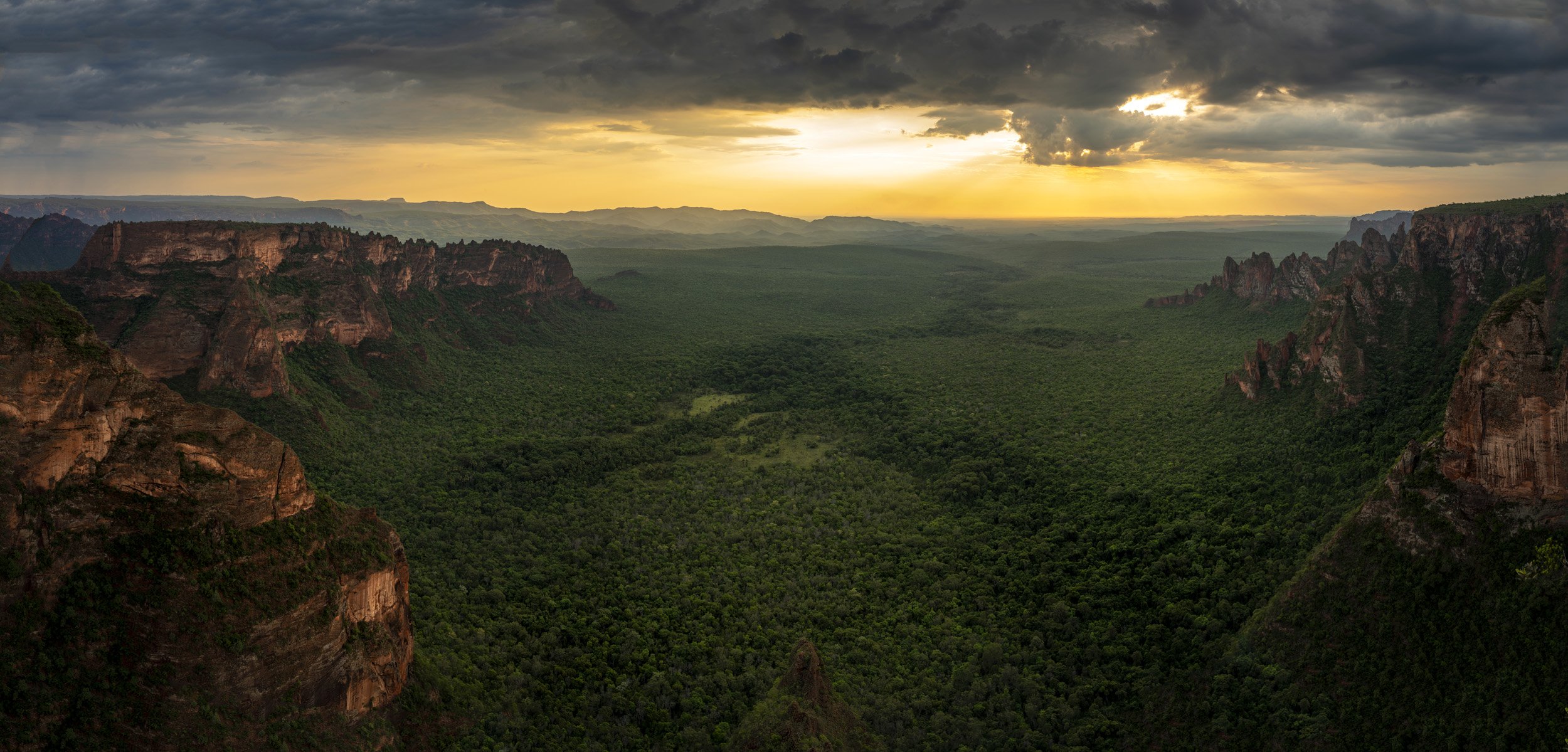
CHAPPADA DOS GUIMARAES, MATTO GROSSO, BRAZIL: Views of the highlands directly overlooking the Northern Pantanal. The rivers and rain here are supported by air-borne water vapor from the Amazon basin that manifests in rain in these highlands and is the contributing factor to the rivers that provide clean water and make the annual wet season flooding possibly for the Pantanal. As the Amazon has lost huge tracts of original forests to deforestation and logging, so the "flying rivers" that originate there have diminished in size. The health of the Pantanal ecosystem and its ancient wet and dry season are deeply reliant on these highlands and the water they provide as well as their connection to the Amazon.

TIMBUKTU, SEPTEMBER 2009: Scenes from the port of Timbuktu at the apex of the Niger River, Timbuktu is a historical Malian city, a long established centre of learning for Africa on 12 September 2009. (Photo by Brent Stirton/National Geographic.)

TIMBUKTU, MALI, JANUARY 2010: A young Tuareg artisan boy, Anara Ag Hamay Cisse, 13 years old, stands in the dunes outside of Timbuktu, the mythical Northern Mali city, January 18, 2010. (Photo by Brent Stirton/Reportage by Getty images.)

CUIABA RIVER, PANTANAL, BRAZIL: A large male jaguar lies on the bank of the Cuiaba river after finishing a meal of capibara. Jaguars are a huge tourist lure and bring millions into the Pantanal every year. Ranchers complain that the jaguars also take cattle but their value for attracting tourisms far exceeds losses from cattle lost to these animals.

EPULU, ITURI, DEMOCRATIC REPUBLIC OF CONGO: Images of a Mbuti pygmy hunting group inside the forest in Okapi National Reserve. The Mbuti pygmies hunt wild meat in a sustainable manner, using nets they have created from forest vines. They conduct brief ceremonies asking for a good hunt, the men then lay out the nets in a long line in the forest while the women move through the forest, shouting and making a noise, driving any animals towards the nets. The Mbuti have a 15 to 20% success rate, similar to a lion. This is what makes this practice sustainable. Larger animals simply break through the net, meaning small duikers and other smaller animals make up the majority of capture. There are around 2300 Mbuti in the reserve, mostly living in harmony with the forest. It is when pygmies are co-opted by other parties for their hunting skills that that harmony is broken. Centuries of ill-treatment by the Bantu people have reduced pygmies in many areas to indentured servitude and a state of survival. Illegal mining camps in Epulu, some very large and politically connected, use pygmies to hunt bushmeat for the miners, supplying them with shotguns and shells and paying them with part of what they can shoot. The pygmies are also forced to hunt by the Congolese Army who protect many of the illegal mining areas. (Photo by Brent Stirton/Getty Images for National Geographic.)

JOFFRE, PANTANAL, BRAZIL: Horses on a cattle ranch graze at the water's edge late in the afternoon. These horses are the only way to access large parts of the Pantanal for the majority of the year. They are a vital part of the cattle industry that has been in the Pantanal since the 16th century. Cattle are moved according to the season, once the rains come and the wet season begins, they can often be moved many miles away to higher ground.

Kalahari Desert: A Khoi San man is seen tracking as he hunts.


MYSORE, INDIA, OCTOBER 5, 2022: The final day of the Mysore Dasara, a festival of culture in the state of Karnataka and the only state festival in India where elephants are used. Mysore Dasara is a Royal Festival that celebrates “the victory of truth over evil” that lasts 10 days. 12 Dasara elephants march on the procession route from Mysore Palace to Bannimantap twice a day. These elephants are considered the pride of the state. The elephants used in the Mysore Dasara are all capture elephants, they usually live in Dubare Elephant camp and form a vital part of a Forestry services team that captures wild rogue elephants and and breaks them down until they integrate into Dubare or another elephant camp. Many of these captive elephants were once part of the timber industry or they have been captured themselves, or they were calf victims of human/ elephant conflict and grew up in an elephant camp. Karnataka does not allow private ownership of elephants and the elephants are the property of the Forest Department. The Mysore Dasara attracts huge crowds, and it is essential that the elephants involved can remain calm in these circumstances and obey orders from their experienced mahouts. (Photo by Brent Stirton/Getty Images for National Geographic Magazine.)


KANDY, SRI LANKA, 21 AUGUST 2021: The most important elephants in Sri Lanka are seen dressed for the ancient and very prestigious Esala Perahera in Kandy, celebrated for centuries to honor the Sacred Tooth Relic and the four 'guardian' Gods Natha, Vishnu, Kataragama and Goddess Pattini. It is the only Perahera in the world which is held with the participation of more than fifty elephants and tuskers adorned with ceremonial costumes, hundreds of drummers, dancers and singers. This is an event that places tremendous stress on the elephants and that has resulted in human death and injuries before. It is also an important tourist draw for Sri Lanka, a country heavily dependent on tourism income. The elephants in this image are the most important in Sri Lanka and carry the tooth relic of the Buddha. There is a heated debate in Sri Lanka between temple associates and conservationists, with temple associates arguing for more elephants to be captured and conservationists saying that more capture activity from the wild seriously destabilizes herd intergrity and brings more elephants into suffering.

CHYULU HILLS, AMBOSELLI ECOSYSTEM, KENYA: One-Ton, one of the most iconic tuskers in the world, is seen at a water hole in the Chulu hills. The Amboseli ecosystem, home to the most iconic elephant in the world, is under threat like never before. The Group Ranch system, which governed Maasai land rights and usage, has been dismantled and for the first time in the modern era, individual members have the right to sell their land parcels. The Group Ranches preserved land masses intact, used for both pastoralism as well as wildlife, now those are being fragmented as some Maasai have chosen to sell to outsiders. We now see factories, urban sprawl and large, water hungry agriculture in former elephant habitat. As a result, the Amboseli Ecosystem is being broken up and vital animal corridors are being disturbed and cut off. This affects all migrating animals who need land and water to survive. At this time, one of the solutions is to help local Maasai run their own conservancies and see benefit from tourism as well as maintain their traditional lifestyles. This involves buying land leases, and expensive and complicated process. Straddling southern Kenya and northern Tanzania, Big Life Foundation works to protect over 1.6 million acres in the Amboseli-Tsavo-Kilimanjaro ecosystem. They use innovative conservation strategies that can serve as models elsewhere and collaborate closely with local communities, partner NGOs, national parks, and government agencies, Big Life seeks to protect and sustain East Africa’s wildlife and natural habitats, including one of the world’s best-known elephant populations.

AMBOSELLI ECOSYSTEM, KENYA: Umoja is one of a new generation of Emerging tuskers in the ecosystem. (Photo by Brent Stirton/Getty Images for Le Figaro)

AMBOSELI ECOSYSTEM, KENYA: Njoroke ole Mpere, Vice Chairman, Nairrabala Conservancy. 80% of his community has decided to form their own conservancy, managing land use for a traditional way of life but also trying to take advantage of tourism as well as the land lease deal offered by conservation NGO Big Life. Mpere believes in the benefits to be gained from protecting their land for wildlife and he believes in protecting the land for his children's future. Maasai do not hunt bushmeat and understand how to live with animals better than other Kenyan people. He would like to see more compensation as he believes they are people who actually live with wildllife. (Photo by Brent Stirton/Getty Images)

AMBOSELLI ECOSYSTEM, KENYA: Craig, one of the most iconic of the Tuskers of Amboseli, is seen on Kitende Conservancy, a local Maasai run conservancy where land owners have chosen a traditional way of life as well as conservation land leasing through Big Life. This kind of elephant is one of a kind and is worth millions annually in tourist revenue. (Photo by Brent Stirton/Getty Images for Le Figaro)

KANDY, SRI LANKA, 21 AUGUST 2021: The most important elephants in Sri Lanka are bathed and dressed for the ancient and very prestigious Esala Perahera in Kandy, celebrated for centuries to honor the Sacred Tooth Relic and the four 'guardian' Gods Natha, Vishnu, Kataragama and Goddess Pattini. It is the only Perahera in the world which is held with the participation of more than fifty elephants and tuskers adorned with ceremonial costumes, hundreds of drummers, dancers and singers. This is an event that places tremendous stress on the elephants and that has resulted in human death and injuries before. It is also an important tourist draw for Sri Lanka, a country heavily dependent on tourism income.


PANTANAL, BRAZIL, 23 MAY 2022: Seul Celso Rondon de Arruda is 67 years old, born and raised in Pantanal. As a cattle rancher, Seul Celso owns 800 cows and 14 horses. The first six months of 2022, he lost 40 calfs because of jaguar attack: each calf killed equals a total loss of 600 euros , if its a male and 400 if its a female. According to him, 2022 is a particularly bad year: on average, the amount of calf lost to jaguar attacks each year reached 20. He acknowledges that a strong jaguar population is a good thing for the Pantanal as it draw tourists to the area and boost the construction of lodges and hotel. But in the same times, jaguars become more accustomed to the presence of humans and thus become more reckless. He bares no grudjes toward hotel owners and the people from the tourism industry, but his opinion is that cattle ranchers should be compensated for the loss of cattle - by the governement or the hotel owners, he could not say. It is also a legal requirement that all ranch owners keep a minimum of 20% of the farmland wild so that corridors are formed for wildlife. This is also contentious amongst ranchers in the Pantanal.


SAN FRANSCISCO FAZENDA, MIRANDA, MATTO GROSSO DU SUL, BRAZIL: A cowboy waits for the cattle to come into the enclosure after driving them from lower ground to higher ground. Cattle ranching is an ancient practise in the Pantanal. The cattle are usually moved from lower to higher ground as the dry season becomes the wet season. For hundreds of years, this was the economic driver of the Pantanal.

TAQUARI RIVER DELTA AREA, MATTO GROSSO DOS SUL, PANTANAL, BRAZIL. Eraco Vilaba was born on Talisma farm and has lived there all of his 81 years. Despite this being the dry season his farm is always surrounded by water. When he was a boy, Eraco's father ran 5000 cattle on the farm until 1974. This permanently flooded situatuon is due to seriously flawed environmental planning in 1974 when the Brazilian government initiated an aggressive agricultural development plan in the highlands above the Pantanal. A huge flood dumped millions of tons of topsoil into the Taquari river and other tributaries, diverting the river and reducing the flow to the Paraguay river to 30% and creating a permanent flood condition which destroyed over 1 million hectares of the Pantanal overnight. Hundreds of farms were ruined and Talisma farm is one of only 4 farms still operating in the flooded delta. Nowadays, Eraco and his wife of 51 years, Sonia, grow bananas to survive. They are amongst the very last farmers still surviving in the Taquari river delta area and they say they will do this for two more years before they will join their children in the city of Corumba. Eroded soil continues to be dumped in the Taquari delta when the rains come and flow to the all-important Paraguay river continues to diminish.

DUBARE ELEPHANT CAMP, KARNATAKA, INDIA, 22ND OCTOBER 2022: Dubare is one of the larger elephant camps in India, a place where captured elephants are brought and kept. Elephant orphans from the wild are brought to these camps as well as elephants from Human/Elephant conflict incidents. Some of the elephants here are trained to be capture elephants, meaning they will deploy as a team to capture rogue elephants who are perceived to be dangerous to humans or destructive to property. These camps also play a lucrative role in tourism, with thousands of visitors streaming in to see the elephants. Dubare is also the place where the key elephants for the Mysore Dasara festival are housed. Dubare has seen 7 new elephant captures in the last 5 years, there are new camps in the area to accommodate the numbers and the rise in tourism. There is some worry amongst elephant activists that the decision to capture is gaining commercial impetus. Many of the older, experienced mahouts have also passed away in recent years, Covid is behind some of that. As a result, some level of wisdom has been lost and some of the deeper relationships between man and elephant have been lost too. A captured elephant requires breaking in, a brutal process in which they are kept in a huge stockade until they grow used to humans and acquiesce to their new lives. That new elephant will have two mahouts, a master, and his apprentice. This means two families will receive an income because of that elephant. These elephants are the property of the forest department of Karnataka. (Photo by Brent Stirton/Getty Images for National Geographic Magazine.)

MINDIMA VILLAGE, CHIMBU PROVINCE, HIGHLANDS, PAPUA NEW GUINEA-DECEMBER 2008: Traditional dress in a village in Chimbu Province, Highlands, Papua New Guinea, 18 December 2008. These outfits will be worn on special occasions, namely Sing-Sing tribal get-togethers, Moka Compensation ceremonies, Bride-Price ceremonies and feasts. (Photo by Brent Stirton/Reportage by Getty Images.)


YALA NATIONAL PARK, SRI LANKA, 17 JULY 2022: An older male elephant named Eranga walks on the beach inside Yala National Park. Apparently this male walks on the beach regularly, often in the moonlight. Yala park officials say he is the only one who does this. Research has shown that many elephants are individual thinkers and conservationists today say that it will be a case of how much we can understand this individual thinking combined with how much we care that will ensure a future in the wild for Asian elephants.

VIRUNGA NATIONAL PARK, DR CONGO: A herd of over 550 elephants recently crossed over from Queen Elizabeth National Park in Uganda to Virunga National Park in the DR Congo. This is the largest intact elephant herd in the world and a translocation like this has not been seen in the region since 1996, when conflict was at its peak in DRC and elephants fled into Uganda. Three seperate Ugandan sources have claimed this has happened because the UPDF, the Ugandan Army, has been taking advantage of the abasence of people during this Covid period to shoot elephants for their ivory. (Photo by Brent Stirton/Getty Images.)

SING RIVER, MINKEBI NATIONAL PARK, GABON, JUNE 2011: An anti-poaching team composed of Gabon Parcs personal, Gabon military, Baka pygmy porters and two Pirouge pilots conduct an anti-poaching mission up the Sing River in Minkebi National Park, Gabon, 26 June 2011. Gabon has recently seen a large spate of Elephant killings as a result of thousands of illegal goldminers that had flooded into the Minkebi region to exploit a lack of the rule of law in the reserve. Approximately a month ago the Gabonese military and Gabon Parcs Department conducted a large joint operation, inviting all these illegal miners to go home to their own countries or face detention. The presence of these illegals also created a thriving illegal ivory industry, fueled by the presence of Chinese traders in Gabon and neighbouring Congo Brazzaville and Cameroon. This expedition up the Sing River was to check for the presence of these illegals and to see if they were carrying out any poaching activity. There were no sightings and now only empty mining settelements remain. It appears the initial operations have put the word out and the illegal miners and poaching villages are no more in this region of Gabon. The operation involved travelling far up the Sing River in Minkbebi Park, cutting river pathways for the pirouges and doing a thorough check for poachers all the way up the river. There are plans for a permanent "Jungle Brigade" for this region within the next 6 months and that should safeguard the borders of Gabon and its wildlife from further poaching threats. (Photo by Brent Stirton/National Geographic.)

GARAMBA NATIONAL PARK, DEMOCRATIC REPUBLIC OF CONGO, APRIL 24 2019: Magunda hill is one of the tallest areas inside Garamba and African Parks have built an observation post at this strategic site. Rangers are rotated in and out of this site on a weekly basis, on the lookout for people and militia groups entering the park to hunt its animals. Garamba is a Park in North East DRC bordering South Sudan. It is one of Africa’s oldest and most complex parks, with a difficult history. It has for many years been an elephant poaching epicenter, with heavily armed Sudanese poachers and Lord’s Resistance Army militia’s both decimating elephant populations as well as targeting the local population. African Parks signed an MOU with the ICCN, Congo’s conservation authority, in 2005. Since then, a number of rangers have continued to die in the course of their duties but slowly the park has gained traction against local poachers and foreign armed groups. From 2016 law enforcement strategy has been completely overhauled, the rangers were better equipped and technology has become a vital component in the fight. Poaching of elephants was down 50% in 2017 and in the 2018 it was down further. Over 1200 elephants remain and over 40 of those have collars for monitoring purposes. Garamba is also home to some of the last remaining Kordofan giraffe population and there is an action plan for that population. In a region of almost no economic opportunity, Garamba employs almost 500 full time staff and almost 2000 short term contract workers. There is a large amount of illegal mining around Garamba and the park is actively involved in speaking with those miners about alternative livelihoods and how the park may help with that. The Ranger force is around 300 and they provide security to tens of thousands of people who live around the park as well as vulnerable refugee groups escaping conflict in the region. (PHOTO BY BRENT STIRTON/GETTY IMAGES FOR NATIONAL GEOGRAPHIC MAGAZINE)

SANJOU VILLAGE, BOUNDARY OF PENDJARI NATIONAL PARK, BENIN, MAY 2019: The villagers of Sanjou engage in a fishing festival that occurs every 3 years. All the villagers wade through this lake with nets and baskets for a few days catching as many fish as possible. Fishing camps are banned within the National Park as they often become poaching camps. Fishing within Pendjari has been banned for two years and the park attempts to emply locals for all work as a means of compensating. Pendjari NP serves to anchor the transnational W-Arly –Pendjari (WAP) complex of over 35,000 km2. This is the biggest remaining intact ecosystem in West Africa and is still in a state of mismanagement. AP hopes to resolve that by initially addressing Pendjari. Pendjari is also home to the critically endangered West African Lion. There are around 120 in Pendjari topday including 7 collared lions. It is also an important wetland and the Benin government is keen to realize the potential of the region. They have included Pendjari in their “Revealing Benin” plan to bring in tourism and investors. They invited AP in after seeing Zakouma’s success in Chad which they would like to replicate. PHOTO BY BRENT STIRTON/GETTY IMAGES FOR NATIONAL GEOGRAPHIC MAGAZINE.

SANJOU VILLAGE, BOUNDARY OF PENDJARI NATIONAL PARK, BENIN, MAY 2019: The villagers of Sanjou engage in a fishing festival that occurs every 3 years. All the villagers wade through this lake with nets and baskets for a few days catching as many fish as possible. Fishing camps are banned within the National Park as they often become poaching camps. Fishing within Pendjari has been banned for two years and the park attempts to emply locals for all work as a means of compensating. Pendjari NP serves to anchor the transnational W-Arly –Pendjari (WAP) complex of over 35,000 km2. This is the biggest remaining intact ecosystem in West Africa and is still in a state of mismanagement. AP hopes to resolve that by initially addressing Pendjari. Pendjari is also home to the critically endangered West African Lion. There are around 120 in Pendjari topday including 7 collared lions. It is also an important wetland and the Benin government is keen to realize the potential of the region. They have included Pendjari in their “Revealing Benin” plan to bring in tourism and investors. They invited AP in after seeing Zakouma’s success in Chad which they would like to replicate. PHOTO BY BRENT STIRTON/GETTY IMAGES FOR NATIONAL GEOGRAPHIC MAGAZINE.

TSAVO EAST, KENYA, MAY 2011: Images of some of the last of the great Elephant tuskers in Africa, taken in Tsavo Eastm 18 May, 2011. Massive elephant poaching in recent years has seen most of the mature bull elephant population of African countries decimated for their ivory. A Tusker is defined as an elephant with a set of 100 pound ivory tusks, or therabouts. This depletion of the elephant gene pool is having a negative effect on populations, with weak dna being passed on instead of the strongest. (Photo by Brent Stirton/Reportage for National Geographic Magazine.)

JOMBA, VIRUNGA NATIONAL PARK, DRC, 30 April 2015: Two alpha male silverback mountain gorilla from the Mpua family seen in the Jomba rainforest, Virunga National Park, DRC. (Photo by Brent Stirton/Reportage by Getty Images for National Geographic Magazine.)

TIMBUKTU, MALI, JANUARY 2010: Late Afternoon scenes at a funeral in the streets of Timbuktu, MALI, 5 JANUARY 2010. Funerals in Timbuktu are conducted separately, with the woman mourning inside the house of the deceased and the men outside on the street involved in prayers and remembrance in the Islamic tradition. (PHOTO BY BRENT STIRTON/NATIONAL GEOGRAPHIC.)

ABU DHABI, UAE, 2 DECEMBER 2017: A falcon hunting camp in the desert outside Abu Dhabi, UAE. This camp uses captive bred Houbara Bustards, the preferred prey species of Arab Falconers across the region. Rashid and Maktoum Al Maktoum, two young sheiks from the Dubai Royal family, are seen hunting with their Gyr and Saker falcons. In the UAE, where a huge amount of progress has occurred at an accelerated rate over the last 60 years, falconry is seen as a link back to the past and to the ancient culture of the Bedouin. Falcons were used for centuries for hunting food and the Arabs have a long association with falcons. Nowadays it is the sport of choice across the Arab world. Twenty years ago, most of the birds used were from wild capture, a fact that meant falcons were taken from the wild and subjected to long and dangerous journeys from as far away as Siberia and Mongolia. Many did not survive and those that did often arrived sick and in poor condition. Most of those falcons also came from colder climates and did not survive the heat of the desert region. These days, the vast majority of falcons used in the UAE are captive bred birds. Sheikh Butti is the first UAE falconer and likely the first Arab to ever train and hunt with a captive bred bird, a Gyr falcon that became famous across the region twenty years ago. He altered perception about what was possible with captive breeding and the performance of his falcons helped to win the argument for the superiority of captive-bred hybrids and purebred falcons. There has been a careful refining of genetics by master breeders like Howard Waller who have created a whole new class of falcons that have become the birds of choice in the Emirates. They are housed in special air-conditioned facilities where they can resist the high temperatures of the desert. Most training for hunts and racing is done in the very early morning, when temperatures are low and the birds won’t suffer heat exhaustion. The birds travel in air-conditio

ERDENE SANT, CENTRAL MONGOLIA: A wild Saker Falcon mother and her chicks in a nest high over the steppe of Central Mongolia. The Saker falcon is the only species in the genus Falco with an endangered listing in the IUCN red list, because a population trend analysis has indicated that it may be undergoing a very rapid decline, particularly in Central Asia, with unsustainable capture for the falcon trade considered to be one of the causal factors. Electrocution via power lines is a larger issue, killing millions of birds annually, including an estimated 1000 Saker falcons every year.

Tokyo, Japan, April 2018: A Oneisan practices with her Shamisen at the Asakusa Kenban where Geisha shows are held for clients. The bridge of the Shamisen is made of ivory and the plectrum , known as a Bachi, is also made of ivory and is said to create the best sound. The skin on the front of her Shamisen is made of cat skin and the skin at the back is made of dog skin. The instrument itself was made 15 years ago. The shamisen is a plucked stringed instrument. Its construction follows a model similar to that of a guitar or a banjo, with a neck and strings stretched across a resonating body. The neck of the shamisen is fretless and slimmer than that of a guitar or banjo. The body resembles a drum, having a hollow body that is covered front and back with skin, in the manner of a banjo. The skin used depends on the genre of music and the skill of the player. Traditionally skins were made using dog or cat skin but use of these skins gradually fell out of favor starting around 2006 due to social stigma and the decline of workers skilled in preparing these particular skins. The bachi or plectrum used to play the shamisen also differ in size, shape, and material from genre to genre. The bachi used for nagauta shamisen are made out of three possible materials, i.e. wood, plastic, or ivory. Ivory is the preferred substance and Shamisen players often believe it delivers the best sound. (Photo by Brent Stirton/Verbatim by Getty Images.)

MAJETE NATIONAL PARK, MALAWI, JUNE 2019: Dancers from Tsekera village practise the Gule Wamkulu dance, an old tradition that is sent to invoke the spirit of ancestors who will come to assist the villagers with rain, conflict etc. The locals believe that ancestors manifest in birds and animals found in the park. Nowadays the village performs this dance for tourist groups who come to visit Majete. The revenue generated goes to communities who then see the benefit of support conservation efforts for the park. Majete was taken over by African Parks in 2003. At the time it was a dead park, poached out and lawless. AP reintroduced Rhinos, Lions and Elephants, including the largest translocation of elephants since the fifties. Over 500 elephants made their way to Majete. This park serves as an example of how a park can be brought back from a wasteland to a life source for animals and communities. PHOTO BY BRENT STIRTON/GETTY IMAGES FOR NATIONAL GEOGRAPHIC MAGAZINE.

MIDDLE SEPIK, PAPUA NEW GUINEA-DECEMBER 2008: Images of the Karawari people of the middle Sepik river, 15 December 2008. The Karawari are the most remote of the floodplains people, with many vllages along the river barely a generation old. The most recent settlements date only from 1996. (Photo by Brent Stirton/Reportage by Getty Images.)


LOLIONDO, NORTHERN TANZANIA, NOVEMBER 2012: Images from a Masai coming –of-age ceremony in a remote Masai village in Loliondo, Northern Tanzania, 2 November 2012. Two of the young warriors in this ceremony are wearing a Lion Mane head-dress from a lion they speared 3 years ago. The Masai have a long history of lion-killing, both as a proving ground for young warriors in their ascent to manhood and also to protect their cattle from lion attacks. This is an illegal activity and 3 years ago a number of young warriors were arrested and jailed for this offence. Illegal lion killing continues amongst the Masai today, but as lion numbers dwindle, this activity is also increasingly rare to find. Conflict between the pastoralist Masai and the lion is an age-old phenomenon. (Photo by Brent Stirton/Reportage for National Geographic Magazine.)




TARI GAP, SOUTHERN HIGHLANDS, PAPUA NEW GUINEA-DECEMBER 2008: A Huli Wigman waits out a rain-storm in his room, smoking and applying his traditional face paint while waiting for the rain to clear, Tari Gap, Papua New Guinea, 17 December 2008. Tari is the home of the Huli Wigmen, this highlands province was once considered one of the most remote areas of the highland region of Papua New Guinea, the outside world has only really been felt in the last 20 years. Recent oil discoveries in the region are now changing it quickly. (Photo by Brent Stirton/Reportage for Getty Images.)

A bushmen and his son take a break while walking through a farm that used to be part of their traditional hunting ground. The Bushmen are regarded by historians as the first people of South Africa yet they are the most marginalized people in the country. There is a land claim for them in the Kalahari region of the country but De Beers mining company is disputing part of the claim and the South African government is offering the land without mineral rights. The case is ongoing in the courts.



QUNU, EASTERN CAPE, SOUTH AFRICA, 14 DECEMBER 2013: Xhosa Initiates pass by close to the funeral of Nelson Mandela, Qunu, South Africa, 14 December 2014. These initiates have recently been circumsized traditionally and without anesthetic. They will spend up to two months dressed this way and learning the tradtions of Xhosa culture. Nelson Mandela, an icon of democracy, also went through this tradtional ritual. Mandela was buried at his family home in Qunu after passing away on the 5th December 2013.

LOWARENGAK, TURKANA, KENYA, 10 OCTOBER 2014: Images from an internally displaced Turkana community who have been moved off their land by Dassanech tribesman who raided their cattle and killed their people, Turkana, Kenya. These Turkana now practise fishing as opposed to their traditional pastoralism as their main means of subsistence. The Dassenech have in fact come illegally over the Ethiopian border into Turkana land. They were pressured by sugar cane farms on the lower Omo river which is the main tributary for Lake Turkana, the largest desert lake in the world. These sugar cane farms robbed the Dassenech of tradional grazing land and water rights and so they moved over the border into Turkana territory and ongoing conflict is the result. This pattern is likely to increase as Ethiopia's Gibe 3 dam comes online next year. This will reduce the flow of the Omo river to one fifth of its current size. This will decimate the fertile flood plain in the region and the tribesmen along the Omo will fight for diminishing resources as a result. This conflict will be likely to continue in Kenya's Turkana region as all around the lake hundreds of thousands of tribespeople will find themselves competing for less and grazing, fishing and clean water sources. A series of droughts have reduced most of these pastoralists to fishing as their chief source of subsistence due to huge cattle and goat deaths. The massively reduced flow of the Omo, source of 90% of Lake Turkana's water, could have a devastating effect on this food and income source. The Ethiopian government has conducted no Environmental Impact Assessment for their dams and has yet to respond to these issues. (Photo by Brent Stirton/Reportage by Getty Images for HRW.)

MAPUTO, MOZAMBIQUE, 23 NOVEMBER 2013: Young boys clown around posing as strongmen, Maputo beachfront, Mozambique.

TIMBUKTU, SEPTEMBER 2009: Children play in the rain in a welcome respite from the desert heat in a street scene in Timbuktu, a historical Malian city, a long established centre of learning for Africa, , September 11, 2009. (Photo by Brent Stirton/National Geographic.)

ISHANGO RANGER STATION, NORTHERN SECTOR, VIRUNGA NATIONAL PARK,DEMOCRATIC REPUBLIC OF CONGO-7 MAY 2015: Images of elephants bathing inside Lake Edward close to the IShango Ranger station in Virunga National Park, DRC. There are only around 200 Savanah elephants left in Virunga, victims of extensive poaching campaigns since 1995. There is an effort underway by the Rangers to protect these remaining elephants and reopen the corridor to Queen Elizabeth Park in nearby Uganda to see Virunga's elephants return. Potential oil exploration in the area further threatens Virunga's elephants, with the potential oil area falling inside their corridor and habitat. (Photo by Brent Stirton/Reportage by Getty Images for National Geographic Magazine.)

KANGATOSA, TURKANA, KENYA, 11 OCTOBER 2014: Turkana tribeswomen greet each other in the traditional way by touching heads. Many greetings in this tribe are meant to mimic the actions of cattle. (Photo by Brent Stirton/Reportage by Getty Images for HRW.)

RUMANGABO, VIRUNGA NATIONAL PARK, DR CONGO, 2 MAY 2015: Moonlit images of active volcanoes within Virunga National Park, Mount Nyiragongo and Nyamuragira. Virunga has some of the most active volcanoes on the continent and offers tourism trips to Nyiragongo. (Photo by Brent Stirton/Reportage by Getty Images for National Geographic Magazine.)

TASSILI 'N AJJER, SOUTHERN ALGERIA, APRIL 2009: Images of famed tourist site and traditional Tuareg land, Tassili 'n Ajjer, in the south of Algeria, 02 May 2009. (photo by Brent Stirton/National Geographic Magazine.)

MOGADISHU, SOMALIA, 2 AUGUST 2017: Scenes along the Mogadishu foreshore, destroyed by civil war beginning in the nineteen eighties. These buildings and many others along the foreshore are shrapnel-pitted ruins but they occupy some of the most desireable land in Somalia if stability comes to the country. This area was a beach paradise before the civil war with a heavy Italian presence. If Al Shabab can be defeated, many Somalis feel that will be the last hurdle to stability and a new and resurgent economy. (Photo by Brent Stirton/Verbatim for Time Magazine.)

VIRUNGA NATIONAL PARK, DR CONGO, 26 NOVEMBER 2015: A view of the volcanoes Nyiragongo and Namalagira inside Virunga National Park. (Photo by Brent Stirton/Reportage for National Geographic Magazine.)

ADUA, TIGRAY, ETHIOPIA, 21 JULY 2017: Local farmer Letebrhame Haily, 24, is seen in one of her fields at work.The hillside behind her farm has been afforested with new trees by Green Ethiopia, an NGO specializing in afforestation. They plant on denuded hillsides and the trees they form will play an important role in restoring the water table, preventing erosion and creating a better habitat for man and animal. Letebrhame says that since the new trees have grown, her land needs less water and produces more and healthier crops. She feels very grateful for the changes brought about by the new afforestation and says she now also has a little more money for her children and better food for the house. (Photo by Brent Stirton/Verbatim for Le Figaro.)

ERDENE SANT, CENTRAL MONGOLIA: Scenes with local nomads breaking in a new horse. (Photo by Brent Stirton/Verbatim for National Geographic Magazine.)




DUS, OMO VALLEY, ETHIOPIA, DECEMBER 2007: Images of the Karo people in the Omo Valley, South West Ethiopia, 14 December 2007. (Photo by Brent Stirton/Getty Images.)

NYIRAGONGO VOLCANOE, VIRUNGA NATIONAL PARK, DR CONGO, 25 APRIL 2015: Porters wait out a rainstorm while carrying bags for tourists who will overnight at the top. (photo by Brent Stirton/Reportage by Getty Images for National Geographic Magazine.)

MINDIMA VILLAGE, CHIMBU PROVINCE, HIGHLANDS, PAPUA NEW GUINEA-DECEMBER 2008: A traditionally dressed elder in a village in Chimbu Province, Highlands, Papua New Guinea, 18 December 2008. These outfits will be worn only on special occasions, namely Sing-Sing tribal get-togethers, Moka Compensation ceremonies, Bride-Price ceremonies and feasts. The man in the picture is a leader in the village and he is on his way to a compensation ceremony in which money and pigs will be exchanged for a land deal with another village. This convoluted process of compensation is part of the traditional way of life of village people. It is based on a system which addresses a community rather than individuals and is meant as an insurance system for the general well-being of all. In reality it limits access to education and medicine and is in many ways similar to compensation litigation in the USA. No-one benefits in the long term as individual efforts are closely monitored for flaws for which compensation is then sought, this often results in a one step forwards, two steps backwards mentality. (Photo by Brent Stirton/Reportage by Getty Images.)


TURKANA, KENYA, 8 OCTOBER 2014: Scenes from Longetch fishing village on the shores of Lake Turkana, Kenya, the world's largest inland desert lake. This region of the lake is a well know spawning ground and at the heart of fishing commerce for the Turkana. These villagers along with many thousands along the shores of this vast body of water are soley dependent on the lake for their survival. The Turkana are traditionally pastoralists but persistent droughts have decimated their herds to such an extent that for many Turkana fishing is now their main means of subsistence and commerce. The same pattern is emerging for other tribes along the lake shore. Recent dam building in Ethiopia is likely to bring the Omo river to one fifth of its current flow, sugar cane farms along the Omo are already causing tribal movement down to Lake Turkana as pastoralists struggle for grazing and water rights. The Omo river supplies 90% of Lake Turkana's water and these dams and sugar cane farms look likely to severly impact the renewal of the lake's waters. This threatens all the tribes around the lake and makes conflict over diminishing resources ever likely. (Photo by Brent Stirton/Reportage by Getty Images for Human Rights Watch.)

INGAL, NIGER, OCTOBER 2009: Scenes at a Baptism in a Tuareg Nomad camp, Ingal Region, Niger, 11 October 2009. Tuareg Baptism is very simple, three names are discussed by elders and then straws are drawn to choose the final name. The women perform a ritual of walking around the tent in a line with the leading woman brandishing two knives to symbolically cut away misfortune from the future of the child. The women then dance and sing and play the drums while men prepare goat mead and drink tea and discuss things while people visit from the surrounding nomad camps. Tuareg Nomads have two traditional priorities, their animals and access to water. This group has moved to this region at this time to enjoy the remaining good grassland of the rainy season and will soon move again to be close to a good water source. The nomads survive on a diet of millet and camel milk which is occasionally supplemented by goat meat. (Photo by Brent Stirton/National Geographic.)

LAKE MURRAY, WESTERN PROVINCE, PAPUA NEW GUINEA-JANUARY 2008: Scenes of kids enjoying the lake in Kubut Village, Lake Murray, Papua New Guinea, 1 January 2009. Lake Murray is a region where people have lived lives in harmony with nature for centuries. People make their living by hunting, farming, fishing, and growing rubber trees and now also with Eco-forestry. Their life-styles are dependant on the harmony between them and nature and they are trying to ensure a sustainable relationship for future generations. This has been complicated and compromised by the interventions of both international mining and logging groups over the last few decades but local community resistance is growing as rising anger mounts at the environmental damage done to rivers and forests which form the backbone of the village survival system. (Photo by Brent Stirton/Reportage by Getty Images.)


TIMBUKTU REGION, MALI, 21 SEPTEMBER 2009: Tuareg Nomads end the Ramadan fast in the desert about 50 kilometers outside of Timbuktu with prayer and dancing, Timbuktu Region, Mali, September 21 2009. (Photo by Brent Stirton/National Geographic.)

DUS, OMO VALLEY, ETHIOPIA, JANUARY 2008: An image of Karo maidens in the Omo Valley, South West Ethiopia. The unique, intact tribal cultures of the remote Omo Valley are all threatened by 3 new dams which the Ethiopian Government is building to supply hydro-electric power to Ethiopia's major cities. The dams will reduce the flow of the Omo River to one fifth of its volume and remove the flood plain which is so valuable to the Omo tribes for Agrarian purposes. Mass forced migration and the break-up of these ancient cultures is likely to be the result. (Photo by Brent Stirton/Getty Images.)

INGAL, NIGER, OCTOBER 2009: Two young Tuareg women have their hair dressed by other Tuareg women inside a traditional nomad tent at a Tuareg Nomad camp, Ingal Region, Niger, 11 October 2009. Tuareg Nomads have two traditional priorities, their animals and access to water. This group has moved to this region at this time to enjoy the remaining good grassland of the rainy season and will soon move again to be close to a good water source. The nomads survive on a diet of millet and camel milk which is occasionally supplemented by goat meat. (Photo by Brent Stirton/National Geographic.)

DUS, OMO VALLEY, ETHIOPIA, DECEMBER 2007: Images of the Karo people in a traditional dance ceremony with both men and women in the Omo Valley, South West Ethiopia, 14 December 2007. (Photo by Brent Stirton/Getty Images.)

iMFOLOZI GAME RESERVE, NATAL, SOUTH AFRICA, MAY 2011: Images of White Rhino in iMfolozi Game Reserve in Natal, South Africa, May 1, 2011. Hluwhluwe iMfolozi Game Reserve is the worlds largest repository of Rhino, with an estimated 2300 rhino in total, a majority of which are White and a large contingent of Black Rhino. (Photo by Brent Stirton/Reportage for National Geographic Magazine.)

MINDIMA VILLAGE, CHIMBU PROVINCE, HIGHLANDS, PAPUA NEW GUINEA-DECEMBER 2008: Images of traditional "Mud-Men" in a village in Chimbu Province, Highlands, Papua New Guinea, 18 December 2008. "Mud-Men" are originally thought to have originated from a small Chimbu province clan who was attacked by a much larger clan to steal their land. The smaller but smarter clan is reputed to have fled into the forest and there decorated themselves in mud and in the fearsome masks depicted here. They then counter-attacked the larger clan who, thinking they were being attacked by spirits of the forest , fled the area. (Photo by Brent Stirton/Reportage by Getty Images.)

LORYRA, SOUTH OMO, ETHIOPIA, JANUARY 2008: An image of an old woman of the Dassanech tribe sitting riverside in the Lower Omo Valley, South West Ethiopia. The unique, intact tribal cultures of the remote Omo Valley are all threatened by 3 new dams which the Ethiopian Government is building to supply hydro-electric power to Ethiopia's major cities. The dams will reduce the flow of the Omo River to one fifth of its volume and remove the flood plain which is so valuable to the Omo tribes for Agrarian purposes. Mass forced migration and the break-up of these ancient cultures is likely to be the result. (Photo by Brent Stirton/Getty Images.)

TIMBUKTU, MALI, JANUARY 2010: Two Tuareg men drive a traditional Camel caravan laiden with salt tablets on twenty camels making the 16 day journey through the desert from Taodenni, a salt mine in the north of Mali, to the home of an Arab businessman in Timbuktu, Mali, 22 January 2010. The salt industry is in transition, long the province of the Tuareg and their camel caravanss, modernization has seen the Arabs come to dominate this trade, using powerful trucks to transport the salt over the desert in a tenth of the traditional time with far more salt onboard. As a result the camel caravans are now seen as the poor man's alternative and trucks are more and more the route of the future. Disputes between the clans of the Tuareg have also seen the caravans become far smaller, they are no longer incentivised to work together for a large caravan and it is rare to see a caravan of more than 20 camels nowadays. Everytime the caravan stops, the camels must be unloaded and it is hard and brutal work, many young Tuaregs would rather do something else or work with the Arab traders and their trucks. The Tuareg men on this caravan feel that the trade will continue on camels but that it will be the poor who undertake the long, arduous journey as they have no alternative. Ironically, most of the route with the exception of two small zones is now undertaken by the camel caravan on the same road that is used by the trucks. (Photo by Brent Stirton/Reportage by Getty images.)

LORYRA, SOUTH OMO, ETHIOPIA, DECEMBER 2007: Images of the Dassanech people in the Lower Omo Valley, South West Ethiopia, 14 December 2007. (Photo by Brent Stirton/Getty Images.)

MIDDLE SEPIK, PAPUA NEW GUINEA-DECEMBER 2008: Images of the Karawari people of the middle Sepik river, 15 December 2008. The Karawari are the most remote of the floodplains people, with many vllages along the river barely a generation old. The most recent settlements date only from 1996. (Photo by Brent Stirton/Reportage by Getty Images.)

MPIMBWE, WESTERN TANZANIA, OCTOBER 2012: Lion Dancers from the Sakuma tribe perform the story of their lion killing outside a village in rural Mpimbwe, Western Tanzania, October 27, 2012. Lion dancers are men who have killed a lion in defense of their cattle or their village. They are a deeply superstitious people who believe that once they have killed a lion they have to become a lion dancer for 3 to 5 years to avoid going mad. They spend a year or longer preparing with the local witchdoctor and then go from village to village seeing their relatives and dancing while collecting tribute for their bravery. In a time when lion are very scarce in the region, this practice is actively discouraged by conservation organizations and it is slowly dying out. When the dancers appear in the villages, they are often praised and given money, goats and even sometimes a small cow. It is therefore something that some young men aspire to, even going as far as to venture into the local Katavi National Park in pursuit of a lion. (Photo by Brent Stirton/Reportage for National Geographic Magazine.)

LORYRA, SOUTH OMO, ETHIOPIA, DECEMBER 2007: Images of the Dassanech people in the Lower Omo Valley, South West Ethiopia, 14 December 2007. (Photo by Brent Stirton/Getty Images.)


TIMBUKTU, MALI, JANUARY 2010: A Mosque and two muslims on the outskirts of Timbuktu, the mythical Northern Mali city, 23 January 2010. (Photo by Brent Stirton/Reportage by Getty images.)

KARAKORUM ROAD, MONGOLIA, 10 JULY 2013: Playing basketball in a nomad camp close to Karakorum, Mongolia, 10 July 2013. (Photo by Brent Stirton/Reportage by Getty Images.)

LORYRA, SOUTH OMO, ETHIOPIA, DECEMBER 2007: Images of the Dassanech people in the Lower Omo Valley, South West Ethiopia, 14 December 2007. (Photo by Brent Stirton/Getty Images.)

SING RIVER, MINKEBI NATIONAL PARK, GABON, JUNE 2011: An anti-poaching team composed of Gabon Parcs personal, Gabon military, Baka pygmy porters and two Pirouge pilots conduct an anti-poaching mission up the Sing River in Minkebi National Park, Gabon, 26 June 2011. Gabon has recently seen a large spate of Elephant killings as a result of thousands of illegal goldminers that had flooded into the Minkebi region to exploit a lack of the rule of law in the reserve. Approximately a month ago the Gabonese military and Gabon Parcs Department conducted a large joint operation, inviting all these illegal miners to go home to their own countries or face detention. The presence of these illegals also created a thriving illegal ivory industry, fueled by the presence of Chinese traders in Gabon and neighbouring Congo Brazzaville and Cameroon. This expedition up the Sing River was to check for the presence of these illegals and to see if they were carrying out any poaching activity. There were no sightings and now only empty mining settelements remain. It appears the initial operations have put the word out and the illegal miners and poaching villages are no more in this region of Gabon. The operation involved travelling far up the Sing River in Minkbebi Park, cutting river pathways for the pirouges and doing a thorough check for poachers all the way up the river. There are plans for a permanent "Jungle Brigade" for this region within the next 6 months and that should safeguard the borders of Gabon and its wildlife from further poaching threats. (Photo by Brent Stirton/National Geographic.)


LOLIONDO, NORTHERN TANZANIA, NOVEMBER 2012: Images from a Masai coming –of-age ceremony in a remote Masai village in Loliondo, Northern Tanzania, 2 November 2012. Two of the young warriors in this ceremony are wearing a Lion Mane head-dress from a lion they speared 3 years ago. The Masai have a long history of lion-killing, both as a proving ground for young warriors in their ascent to manhood and also to protect their cattle from lion attacks. This is an illegal activity and 3 years ago a number of young warriors were arrested and jailed for this offence. Illegal lion killing continues amongst the Masai today, but as lion numbers dwindle, this activity is also increasingly rare to find. Conflict between the pastoralist Masai and the lion is an age-old phenomenon. (Photo by Brent Stirton/Reportage for National Geographic Magazine.)

ULAAN BATAAR, MONGOLIA, 8 JULY 2013: Fashionable girls strike model poses underneath a dinosaur exhibit in Ulaan Bataar's central square, Mongolia, 7 July 2013. The square has two statues dedicated to the spirit of Ghengis Khan, Mongolia's undisputed hero. It is a popular meeting place in the city. (Photo by Brent Stirton/Reportage by Getty Images.)

THE STEPPES OF MONGOLIA, 10 JULY 2013: Scenes of nomad life on the way to the Steppes of Mongolia, 10 July 2013. (Photo by Brent Stirton/Reportage for GEO Magazine.)

LAKE TURKANA, NORTHERN KENYA, MAY 2010: Dasenetch pastoralist villages on the shores of northern Lake Turkana in North Kenya, 20 May 2010. The lake is central to the survival of the Dasenetch people, as well as water during the dry season, fishing has become a relatively new phenomenon for the Dasenetch, drought and climate change have forced them to look further than cattle for alternative sources of sustenance and economy. Fishing has become the primary means in the Lake Turkana region. The lake is the largest desert lake in the world and sustains both Turkana and Dasenetch people as well as Gabra and other tribes in the region. Lake Turkana faces an uncertain future however as the Gibe 3 dam project in Ethiopia, a massive hydro-electric scheme and Ethiopia's biggest single investment, comes on line. The dam project, designed to create electricity for sale to surrounding countries including Kenya, will reduce the flow of the Omo river dramatically and this river is the main feeder river for Lake Turkana. Significant changes in lake levels and in ecology can be expected as a result. Fertile flood plain invaluable for agriculture will also be negatively impacted. All of this bodes badly for the pastoralists of the Lake Turkana and Omo river region, these groups are already under severe subsistence pressure and there is a long history of armed conflict in the region. Weapons flow in to this region through Sudan and Somalia and there is little control over this trade which looks likely to accelerate if pressures increase in this region. At this time the Dam project has full support from Kenya's Nairobi government, despite the fact that there has been no Environmental Impact Asssesment produced for this scheme. (Photo by Brent Stirton/Reportage by Getty Images.)

LOLIONDO, NORTHERN TANZANIA, NOVEMBER 2012: Images from a Masai coming –of-age ceremony in a remote Masai village in Loliondo, Northern Tanzania, 2 November 2012. One of the young warriors in this ceremony is wearing a Lion Mane head-dress from a lion he speared 3 years ago. The Masai have a long history of lion-killing, both as a proving ground for young warriors in their ascent to manhood and also to protect their cattle from lion attacks. This is an illegal activity and 3 years ago a number of young warriors were arrested and jailed for this offence. Illegal lion killing continues amongst the Masai today, but as lion numbers dwindle, this activity is also increasingly rare to find. Conflict between the pastoralist Masai and the lion is an age-old phenomenon. (Photo by Brent Stirton/Reportage for National Geographic Magazine.)

INGAL, NIGER, OCTOBER 2009: Early morning scenes at a Baptism in a Tuareg Nomad camp, Ingal Region, Niger, 11 October 2009. Tuareg Baptism is very simple, three names are discussed by elders and then straws are drawn to choose the final name. The women perform a ritual of walking around the tent in a line with the leading woman brandishing two knives to symbolically cut away misfortune from the future of the child. The women then dance and sing and play the drums while men prepare goat mead and drink tea and discuss things while people visit from the surrounding nomad camps. Tuareg Nomads have two traditional priorities, their animals and access to water. This group has moved to this region at this time to enjoy the remaining good grassland of the rainy season and will soon move again to be close to a good water source. The nomads survive on a diet of millet and camel milk which is occasionally supplemented by goat meat. (Photo by Brent Stirton/National Geographic.)

DJANET, ALGERIA, 3 MAY: Scenic images of a Tuareg family picnicking in the desert outside of the town of Djanet on a Friday, the Muslim holy day, on April 3 2009. (Photo by Brent Stirton/National Geographic.)

TIMBUKTU, MALI, 15 SEPTEMBER 2009: A Songhai woman walks between temporary settlements on the outskirts of Timbuktu. Traders come from all over this region of Africa to do business in the legendary city. They come during the rainy season so as to have grazing for their animals and leave again when the season is over, heading back to Niger, Mauritania and other regions of the Sahara. (Photo by Brent Stirton/Reportage by Getty Images.)

THE STEPPES OF MONGOLIA, 10 JULY 2013: Scenes of nomad life on the way to the Steppes of Mongolia, 10 July 2013. (Photo by Brent Stirton/Reportage for GEO Magazine.)

BUKIMA, VIRUNGA NATIONAL PARK, DRC, 6 AUGUST 2013: Images of the Bageni family in the gorilla sector of Virunga National Park, DRC, 6 August 2013. The gorillas sector is currently occupied by the M23 rebel movement of the Congolese army. Despite this and a previous occupation by a previous rebel group, the gorillas continue to survive, largely due the efforts of the ICCn, the Congolese Conservation Authority. The previous Bukima camps were destroyed, first by the CNDP rebel movement in 2008 and 2009; now most recently by their followers, the M23 rebels. Despite these setbacks and the ongoing danger, the ICCN Congolese conservation rangers continue to protect the mountain gorillas of the region and to plan for tourism which will follow if peace is achieved. (photo by Brent Stirton/Reportage by Getty Images.)

INGAL, NIGER, OCTOBER 2009: Evening scenes in a Tuareg Nomad camp, Ingal Region, Niger, 11 October 2009. Tuareg Nomads have two traditional priorities, their animals and access to water. This group has moved to this region at this time to enjoy the remaining good grassland of the rainy season and will soon move again to be close to a good water source. The nomads survive on a diet of millet and camel milk which is occasionally supplemented by goat meat. (Photo by Brent Stirton/National Geographic.)

ZAGADO, NORTHERN NIGER, APRIL 2009: Images of Tuareg Nomad people gathered around a well site in Zagado, Nothern Niger, 7 April 2009. (Photo by Brent Stirton/National Geographic.)

ISHANGO, LAKE EDWARD, DEMOCRATIC REPUBLIC OF CONGO. 11 AUGUST 2013: Local men bathe in the Semliki River as it flows into Lake Edward, Ishango, DRC, 11 August 2013. This river and the Lake itself are inside Virunga National Park, a World Heritage site, they are currently in danger of oil exploration by British oil company SOCO, who have acquired rights to prospect for oil through dubious means. Thousands of Lakeside inhabitants find their while way of life threatened by this exploration. (Photo by Brent Stirton/Reportage by Getty Images.)

TIMBUKTU, MALI, JANUARY 2010: Boys play soccer near a Tuareg desert mural in the center of Timbuktu, the mythical Northern Mali city, 22 January 2010. (Photo by Brent Stirton/Reportage by Getty images.)

LOLIONDO, NORTHERN TANZANIA, NOVEMBER 2012: Images from a Masai coming –of-age ceremony in a remote Masai village in Loliondo, Northern Tanzania, 2 November 2012. Two of the young warriors in this ceremony are wearing a Lion Mane head-dress from a lion they speared 3 years ago. The Masai have a long history of lion-killing, both as a proving ground for young warriors in their ascent to manhood and also to protect their cattle from lion attacks. This is an illegal activity and 3 years ago a number of young warriors were arrested and jailed for this offence. Illegal lion killing continues amongst the Masai today, but as lion numbers dwindle, this activity is also increasingly rare to find. Conflict between the pastoralist Masai and the lion is an age-old phenomenon. (Photo by Brent Stirton/Reportage for National Geographic Magazine.)

LOLIONDO, NORTHERN TANZANIA, NOVEMBER 2012: Images from a Masai coming –of-age ceremony in a remote Masai village in Loliondo, Northern Tanzania, 2 November 2012. Two of the young warriors in this ceremony are wearing a Lion Mane head-dress from a lion they speared 3 years ago. The Masai have a long history of lion-killing, both as a proving ground for young warriors in their ascent to manhood and also to protect their cattle from lion attacks. This is an illegal activity and 3 years ago a number of young warriors were arrested and jailed for this offence. Illegal lion killing continues amongst the Masai today, but as lion numbers dwindle, this activity is also increasingly rare to find. Conflict between the pastoralist Masai and the lion is an age-old phenomenon. (Photo by Brent Stirton/Reportage for National Geographic Magazine.)

LOLIONDO, NORTHERN TANZANIA, NOVEMBER 2012: Images from a Masai coming –of-age ceremony in a remote Masai village in Loliondo, Northern Tanzania, 2 November 2012. One of the young warriors in this ceremony is wearing a Lion Mane head-dress from a lion he speared 3 years ago. The Masai have a long history of lion-killing, both as a proving ground for young warriors in their ascent to manhood and also to protect their cattle from lion attacks. This is an illegal activity and 3 years ago a number of young warriors were arrested and jailed for this offence. Illegal lion killing continues amongst the Masai today, but as lion numbers dwindle, this activity is also increasingly rare to find. Conflict between the pastoralist Masai and the lion is an age-old phenomenon. (Photo by Brent Stirton/Reportage for National Geographic Magazine.)

ASSEKREM, TASSILI DU HOGGAR, SOUTHERN ALGERIA, APRIL 2009: Achmed, a Tuareg guide and elder photgraphed in a mountain cabin in the Tassili Du Hoggar, a series of beautiful rock plateaus that begin approximately 300km's south of Tamanrasset and extend all the way to the Niger border, 17 April 2009, Assekrem, Tassili Du Hoggar. These images were photographed from a small mountaintop cloister run by followers of the Frenchman Charles De Foucald. Foucald, once a hedonistic 19th century playboy, became devoutly religous and moved to Tamanrasset and in 1911 chose Assekrem as the site of his hermitage. He was assasinated by Tuaregs in 1916 after he was suspected of being a French spy. (Photo by Brent Stirton/National Geographic.)

SOUTH KHANGAI MOUNTAINS, BAYANKHONGOR AIMAG, MONGOLIA, JULY 11, 2013: Nomad lifestyle in the early morning, South Khangai Mountains, Mongolia, July 11 2013. Nomads live largely off the milk and meat of their yaks and goats, they also make an alcoholic drink from fermented horse's milk. They lead simple but tough lives in this area, often using both horses and motorbikes as well as soviet era 4x4 vehicles to get around. (Photo by Brent Stirton/Reportage for GEO magazine.)

GIR WILDLIFE SANCTUARY, GUJARAT, INDIA, APRIL 9 2013: Amra Vejabhai, 71, is a Maldhari shepherd who lives with his family in a Maldhari community inside Gir Wildlife Sancturary, home to the Asiatic lion, the last lion outside of Africa inside Gir National Park, Gujarat, India, 9 April 2013. Ten years ago Amra was attacked by a lion while out with his buffalo and cows in the Sanctuary, the lion bit him on the neck when he tried to stop them killing a small buffalo. Amra was saved by his buffalo charging the lion which released him and ran. Amra claims he feels no ill will to the lions and sees them killing his cows and buffalo as just part of life in Gir, a place the Maldhari have inhabited with their cattle and buffalo for centuries. (Photo by Brent Stirton/Reporage for Terra Matte Magazine.)

Surviving Cancer, New Jersey, USA

LAKE MURRAY, WESTERN PROVINCE, PAPUA NEW GUINEA-JANUARY 2008: Scenes from a village hunt in the surrounding forest, Lake Murray, Papua New Guinea, 1 January 2009. Lake Murray is a region where people have lived lives in harmony with nature for centuries. People make their living by hunting, farming, fishing, and growing rubber trees and now also with Eco-forestry. Their life-styles are dependant on the harmony between them and nature and they are trying to ensure a sustainable relationship for future generations. This has been complicated and compromised by the interventions of both international mining and logging groups over the last few decades but local community resistance is growing as rising anger mounts at the environmental damage done to rivers and forests which form the backbone of the village survival system. (Photo by Brent Stirton/Reportage by Getty Images.)

THE STEPPES OF MONGOLIA, 10 JULY 2013: Scenes of nomad life on the way to the Steppes of Mongolia, 10 July 2013. (Photo by Brent Stirton/Reportage for GEO Magazine.)

TOUWA, NIGER, SEPTEMBER 2009: A young Tuareg girl, Mariam Francois Acosta, 17, a girl descended from mixed Tuareg French blood, prepares for her wedding in the Niger city of Touwa, Spetember 25 2009. She is tended by the female members of her family and her friends. It is similar to a traditional wedding except for the nature of the clothing which is worn. She is dressed and made up, a meal is eaten, there is dancing with a Tuareg band on electric guitars, everyone goes to the Mosque at 3pm to give thanks for the wedding and after that she is considered married. That evening a party is thrown with more music and dancing. The bride and groom do not appear together for an official nuptials, it all occurs seperately. The name of the groom is Ibrahim Mahmoudane. (Photo by Brent Stirton/National Geographic.)


INGAL, NIGER, OCTOBER 2009: Scenes at a Baptism in a Tuareg Nomad camp, Ingal Region, Niger, 11 October 2009. Tuareg Baptism is very simple, three names are discussed by elders and then straws are drawn to choose the final name. The women perform a ritual of walking around the tent in a line with the leading woman brandishing two knives to symbolically cut away misfortune from the future of the child. The women then dance and sing and play the drums while men prepare goat mead and drink tea and discuss things while people visit from the surrounding nomad camps. Tuareg Nomads have two traditional priorities, their animals and access to water. This group has moved to this region at this time to enjoy the remaining good grassland of the rainy season and will soon move again to be close to a good water source. The nomads survive on a diet of millet and camel milk which is occasionally supplemented by goat meat. (Photo by Brent Stirton/National Geographic.)

KAVANYONGI, LAKE EDWARD, DEMOCRATIC REPUBLIC OF CONGO, 9 AUGUST 2013: Scenes from the fishing village of Kavanyongi on the Northern shores of Lake Edward inside Virunga National Park, DRC, 9 August 2013. This lake shore village relies on fishing for its livelihood and for all its water needs. It is the biggest village on the lake shores on the Congolese side, with a population of 30 000. SOCO, a British oil company, has acquired the rights to prospect for oil on the shores of of Lake Edward under dubious circumstances, changing Congolese law from a no prospecting in Virunga rule to allowing prospecting within one year. This prospecting block places them inside the Park, a world heritage site and Africa's first ever National Park. Drilling for oil could prove disastorous for the fishing villages all around the lake shores as well as for all tributaries carrying water for Lake Edward, the source of the nile. If the lake is poisoned, it will affect fresh water supply, fish, hippo, multiple other species as well as migrating and local bird populations and the livelihood of more than 30 000 fisherman on the Congolese side of the lake. There is also danger to the Ugandan side and to other countries who benefit from Lake Edward as a water source. (Photo by Brent Stirton/Reportage by Getty Images.)

PARAVOOR, KERALA, INDIA, 15 APRIL 2013: An elephant festival at Paravoor, Kerala, India 15 April 2013. Elephants have become increasingly popular at religious festivals in Kerala, for centuries they have been used by the Hindu faithful because of their role in Hinduism and also as a symbol of power. In recent years both Christian and Islamic factions have introduced elephants into their festival. As a result these elephant have become heavily overused during the festival period. They have little rest, are surrounded by a roaring crowd, loud music and concussive fireworks. Elephants that are in Must have also been used, despite their increased aggression in this period. Accidents and killings have been commonplace, panicked and aggressive elephants have killed a number of spectators, as recently as January 2013 an elephant killed 3 woman spectators yet was allowed to continue performing. The elephant owners charge large fees for appearances and there are devout, fanatical followings for individual elephants. Despite the danger, people continue to flock to these events. Elephants are typically wild animals who have been caught and broken, then trained to obey commands. Elephants in Kerala spend their whole lives chained, living in small spaces like open air prisons and performing manual labor or appearing at these festivals. (Photo by Brent Stirton/Reportage by Getty Images.)

GOBI DESERT, SINGING DUNES, MONGOLIA JULY 15, 2013: A storm breaks in the Gobi desert, Mongolia, July 15, 2013. (Photo by Brent Stirton/Reportage for GEO magazine.)

BUKIMA, VIRUNGA NATIONAL PARK, DRC, 6 AUGUST 2013: Image of the plant life in the gorilla sector of Virunga National Park, DRC, 6 August 2013. (photo by Brent Stirton/Reportage by Getty Images.)

LAKE MURRAY, WESTERN PROVINCE, PAPUA NEW GUINEA-JANUARY 2008: Scenes of community life in Kubut Village, Lake Murray, Papua New Guinea, 1 January 2009. Lake Murray is a region where people have lived lives in harmony with nature for centuries. People make their living by hunting, farming, fishing, and growing rubber trees and now also with Eco-forestry. Their life-styles are dependant on the harmony between them and nature and they are trying to ensure a sustainable relationship for future generations. This has been complicated and compromised by the interventions of both international mining and logging groups over the last few decades but local community resistance is growing as rising anger mounts at the environmental damage done to rivers and forests which form the backbone of the village survival system. (Photo by Brent Stirton/Reportage by Getty Images.)

TIMBUKTU, MALI, JANUARY 2010: A Songhay man walks with his animals back into Timbuktu after a day of grazing in the desert outside of the city, Timbuktu, Mali, January 8, 2010. Many of the traditions of Timbuktu remain unchanged for the last thousand years and this is surely one of them. (Photo by Brent Stirton/National Geographic.)

MARARABA, NIGER, SEPTEMBER , 2009: Scenes of Tuareg semi-nomadic life from the small transit town of Mararaba, Niger, September 27 2009. This small town is an intersection point for Agadez and Niamey. (Photo by Brent Stirton/National Geographic.)

ENNEDI, CHAD, FEBRUARY 2019: A young uneducated camel herder inside Guelta D’Archei. Ennedi Reserve is a brand new African Parks venture, only a week old at the time of these images. These images show Guelta d’Archei, one of the few water bearing canyons in the region where camels and livestock come to drink. Water is scarce in this desert region and AP has a difficult job convincing nomads to be careful with the water in the few Guelta’s that have the resource. The Guelta d’Archei is a famous location where for hundreds of years nomads have brought their camels and livestock to water. It also features some of the very last of Chad’s West African crocodile that once existed throughout the Sahara at a time of more abundant rainfall. A striking characteristic of this population of crocodiles is dwarfism developed due to their isolation, which make them unusual. Three of these crocodiles survive in only a few pools in river canyons and are threatened with extinction. Competition for water between the nomads and the crocodiles is increasing and African Parks is seeking a solution to the problem in order to save these crocodiles. (Photo by Brent Stirton/Getty Images for National Geographic Magazine.)

MIDDLE SEPIK, PAPUA NEW GUINEA-DECEMBER 2008: Images of the Karawari people of the middle Sepik river, 15 December 2008. The Karawari are the most remote of the floodplains people, with many vllages along the river barely a generation old. The most recent settlements date only from 1996. (Photo by Brent Stirton/Reportage by Getty Images.)

ZAKOUMA, CHAD, MARCH 2019: The bones and skulls of three endangered Kordofan Giraffe seen at a researcher’s home inside Zakouma National Park. This parks holds more then half of the global population of Kordofan giraffe. Zakouma National Park is a 1,158-square-mile national park in southeastern Chad's Salamat Region. Zakouma is the nation's oldest national park, declared a national park in 1963 by presidential decree, giving it the highest form of protection available under the nation's laws. It has been managed by the nonprofit conservation organization African Parks since 2010 in partnership with Chad's government. Zakouma had more than 4,000 elephants in 2002, but fewer than 900 in 2005, and approximately 400–450 by 2010. Thanks for effective anti-poaching techniques by Africa Parks management, elephant numbers are recovering, there are a large number of new births in the herd and the elephants are dispersing rather than staying together all the time for protection. Zakouma is Chad's oldest national park, established by the nation's government in 1963. It’s wildlife have been threatened by the ivory trade and poaching, including by Sudanese Janjaweed members. In 2007, militia forces attacked the park's headquarters for its stockpile of 1.5 tons of ivory and killed three rangers. The government of Chad began working with African Parks in 2010 to help manage and protect the park and its wildlife, especially elephants. The park's anti-poaching strategy includes equipping rangers with military style training and weapons, GPS tracking units and radios to improve communications, mobility, and safety, as well as improving mobility through the use of four by fours, horses and air support. Local communities have also been recruited to supply intelligence on any groups moving into the area. Elephant matriarchs are collared and their groups are followed 24/7. There are always rangers within proximity of the herd. The European Union pledged €6.9m in 2011 to help pro

LAKE MURRY, PAPUA NEW GUINEA, JANUARY 2009: A hunting party catches wild pig and Kassowary in remote areas along the shores of Lake Murray, Papua New Guinea, 1 January 2009. These communities live lives very closely connected to the natural world. They hunt and fish and practise agriculture but always in harmony with the environment. Members of this community also chased away Malaysian Loggers in the area, citing exploitation and environmental damage. They now practise their own kind of sustainable eco-logging. (Photo by Brent Stirton/Reportage for Getty Images.)

LAKE MURRY, PAPUA NEW GUINEA, JANUARY 2009: A hunting party gathers to catch wild pig and Kassowary in remote areas along the shores of Lake Murray, Papua New Guinea, 1 January 2009. These communities live lives very closely connected to the natural world. They hunt and fish and practise agriculture but always in harmony with the environment. Members of this community also chased away Malaysian Loggers in the area, citing exploitation and environmental damage. They now practise their own kind of sustainable eco-logging. (Photo by Brent Stirton/Reportage for Getty Images.)
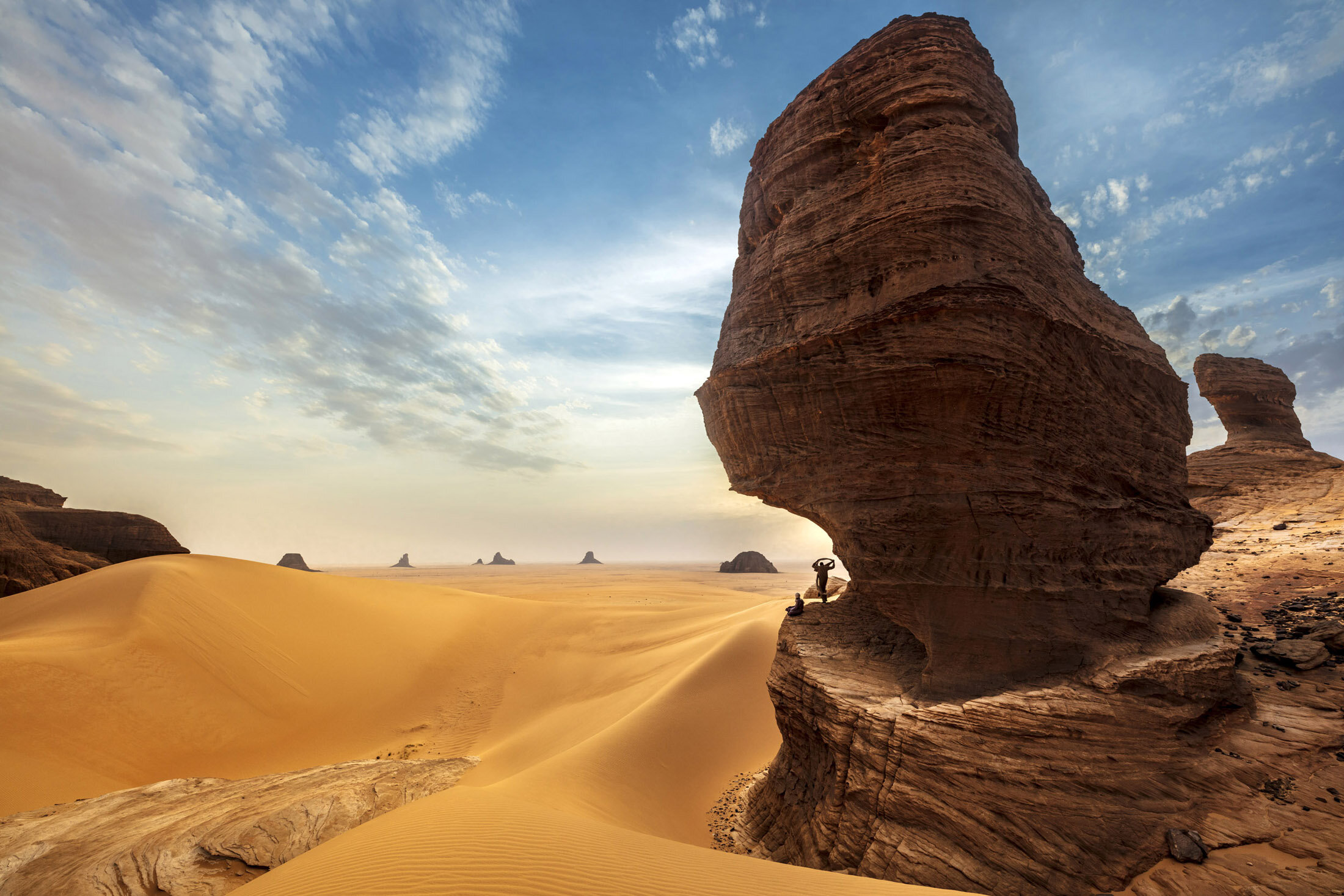
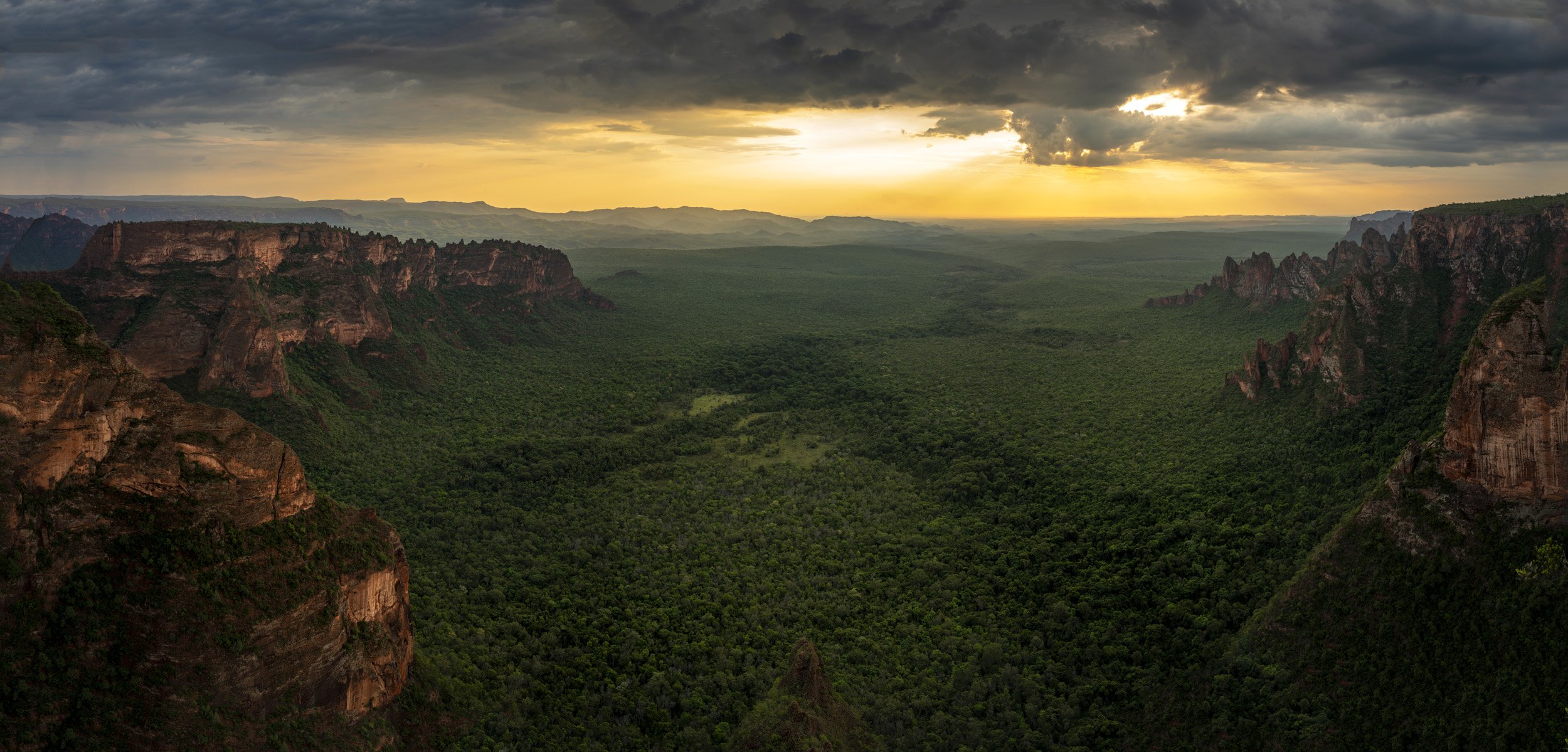
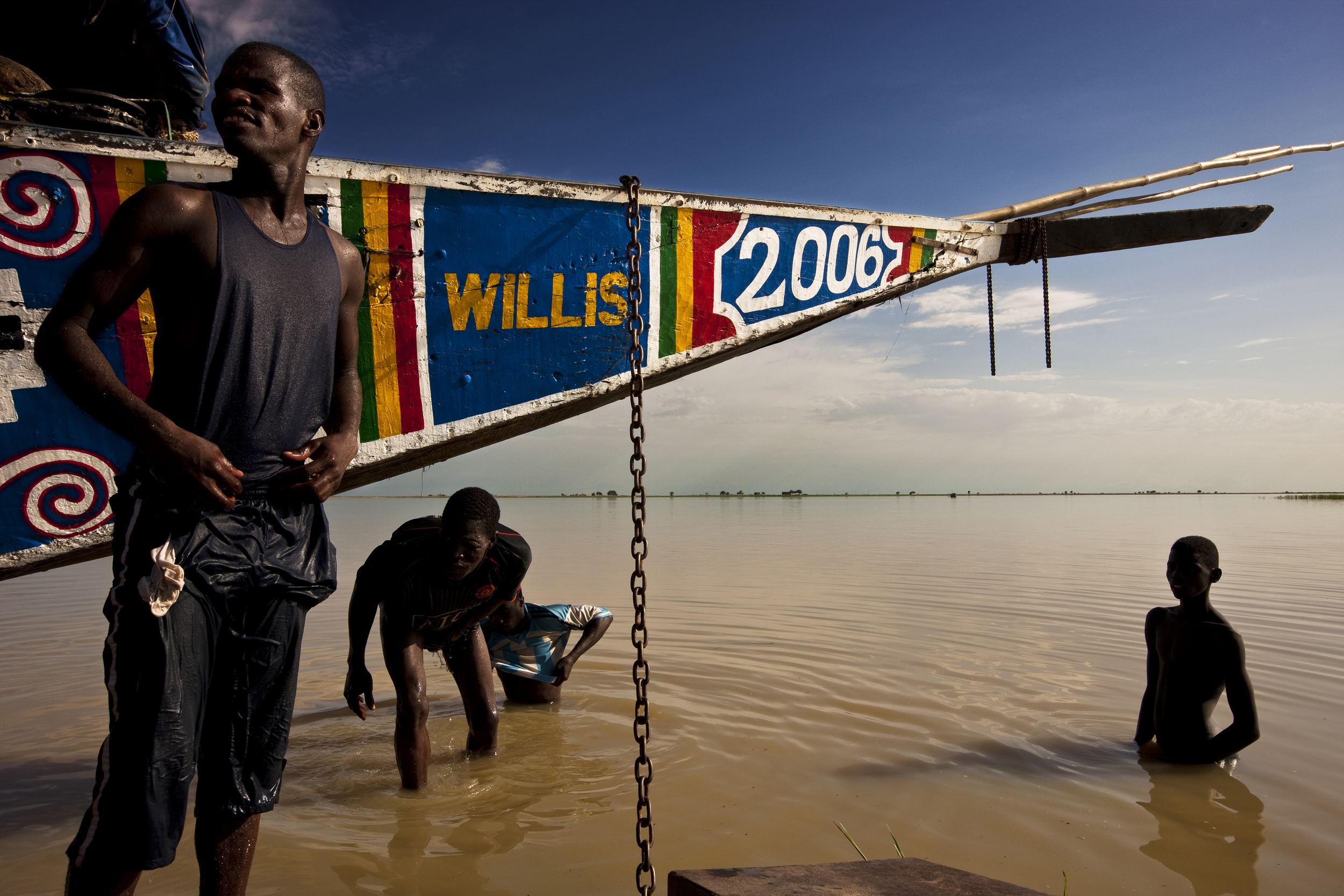
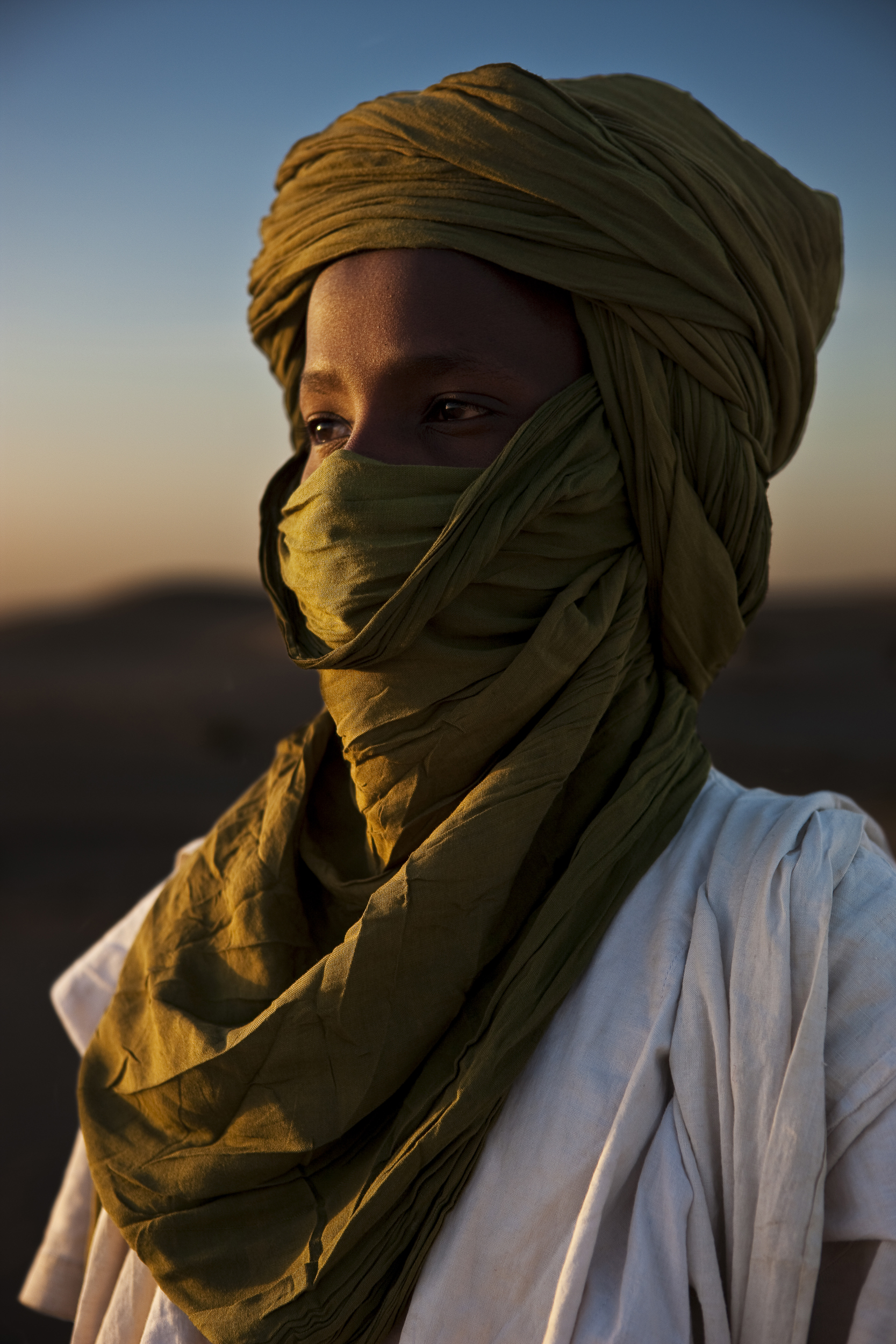

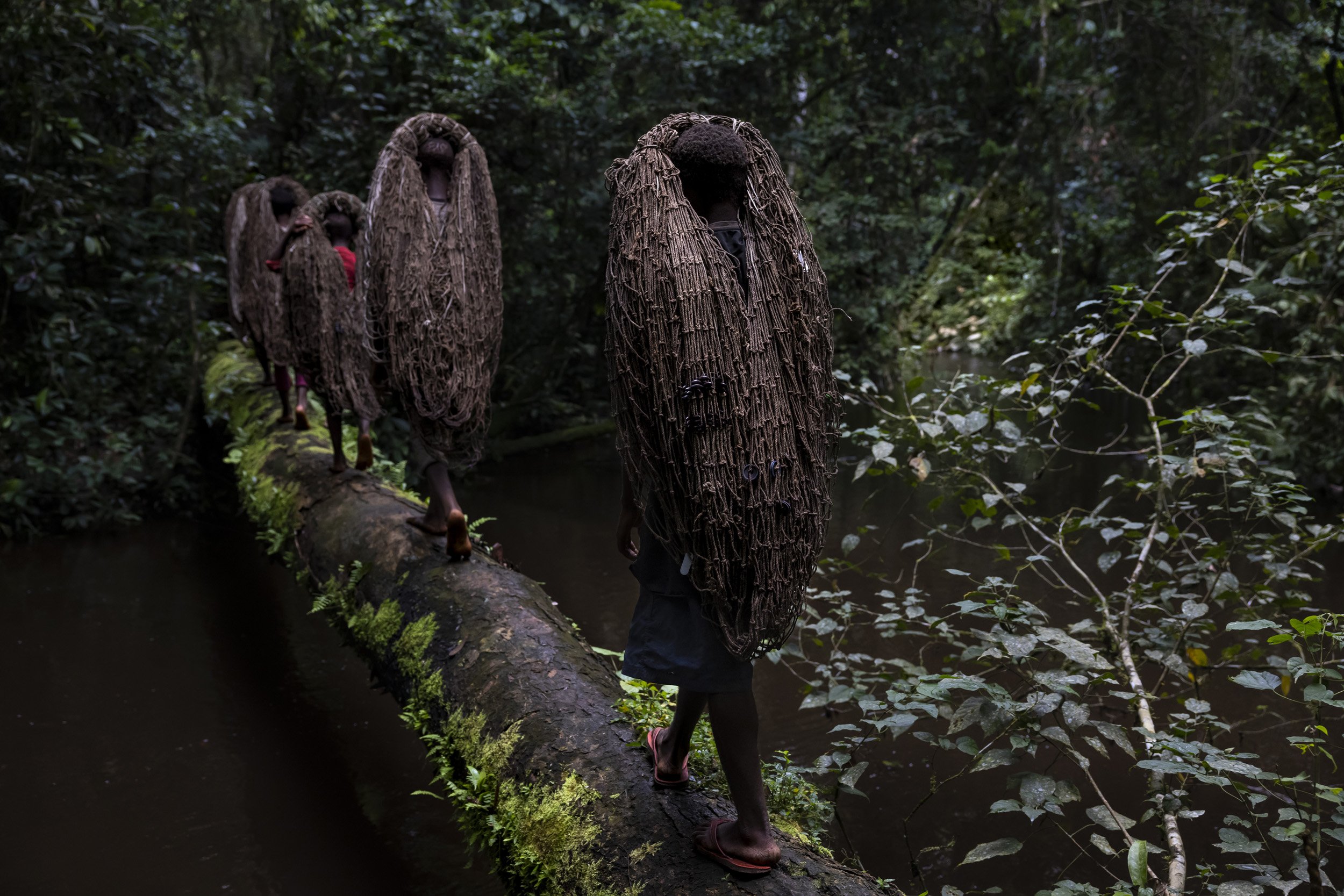
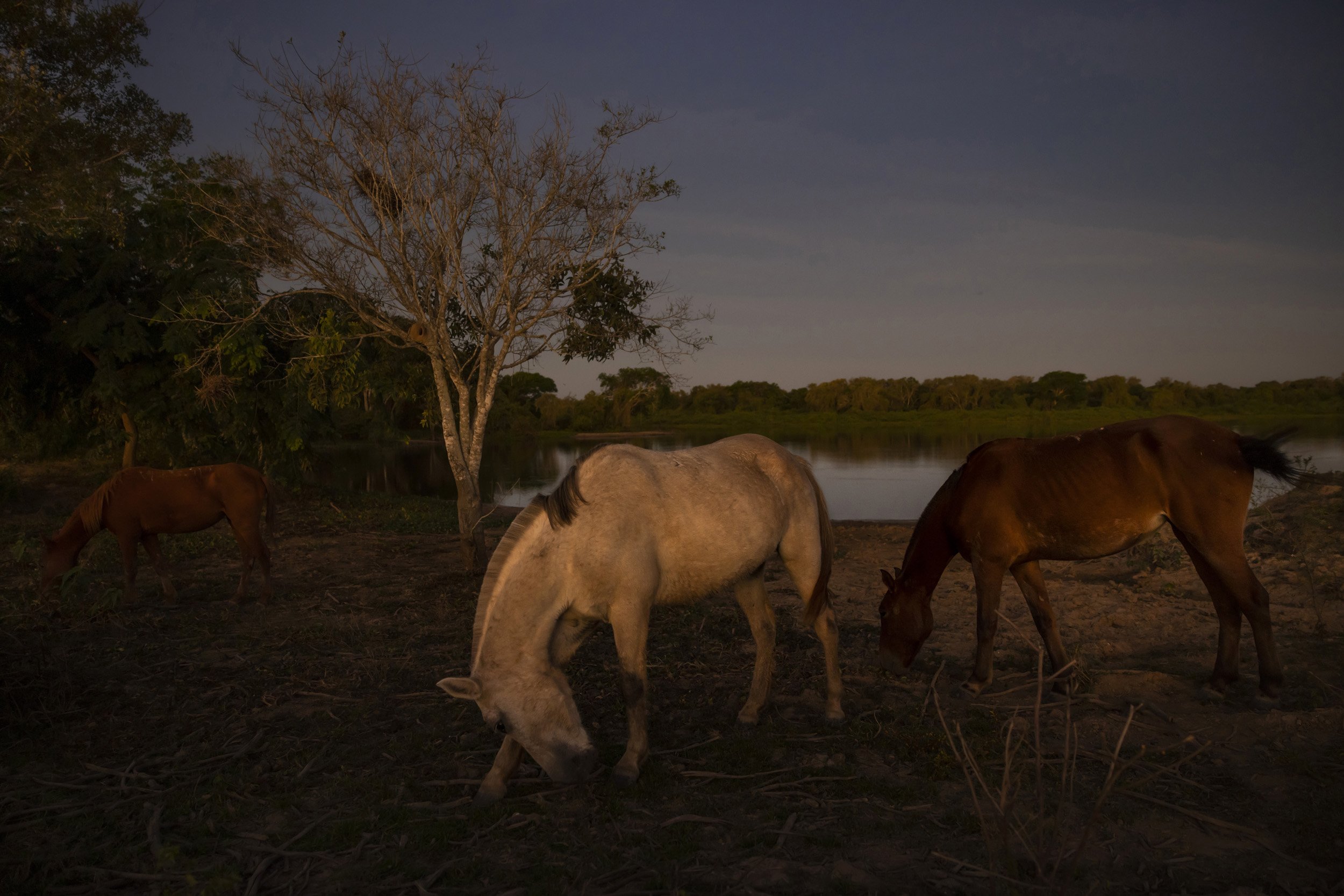
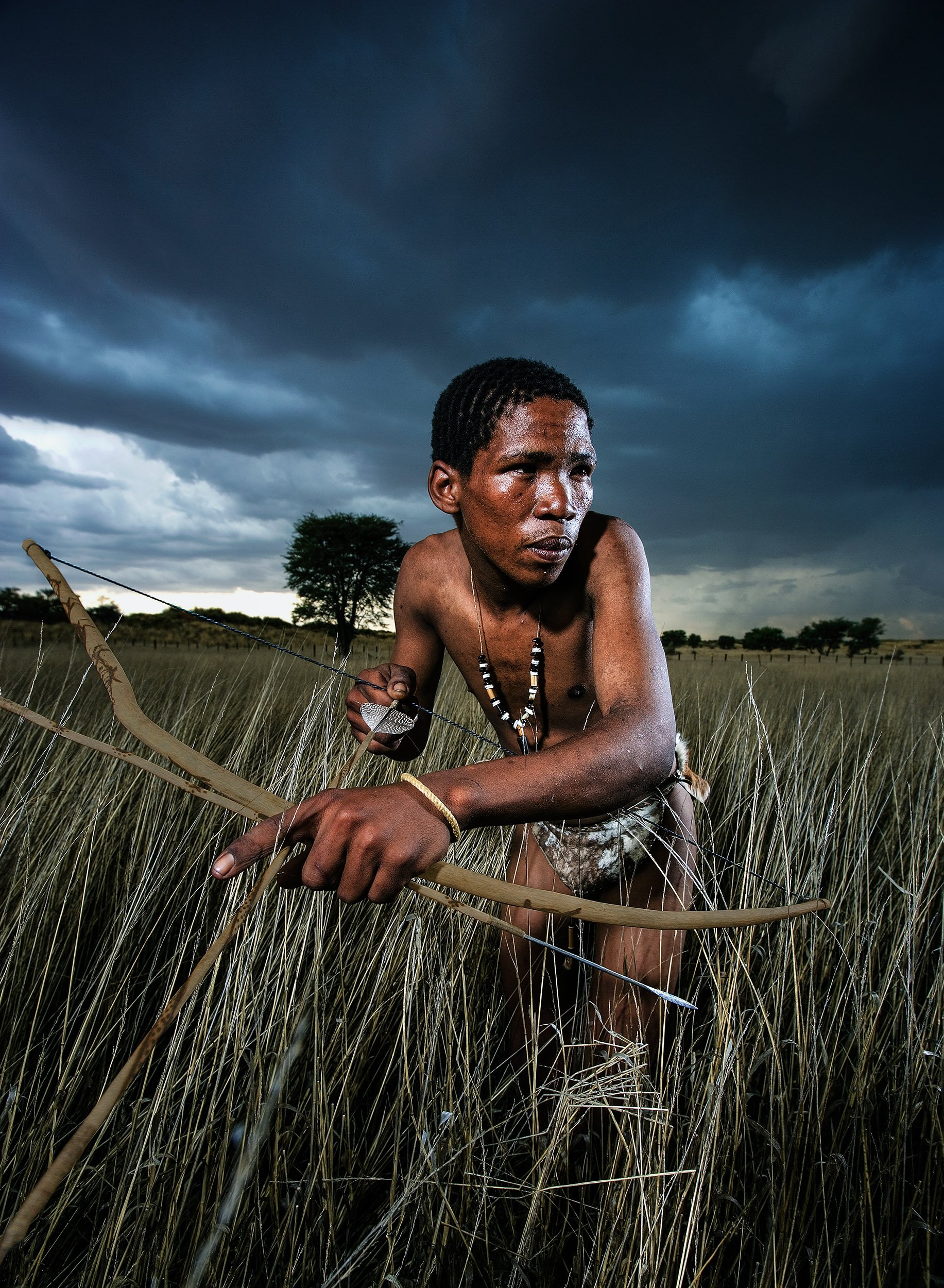
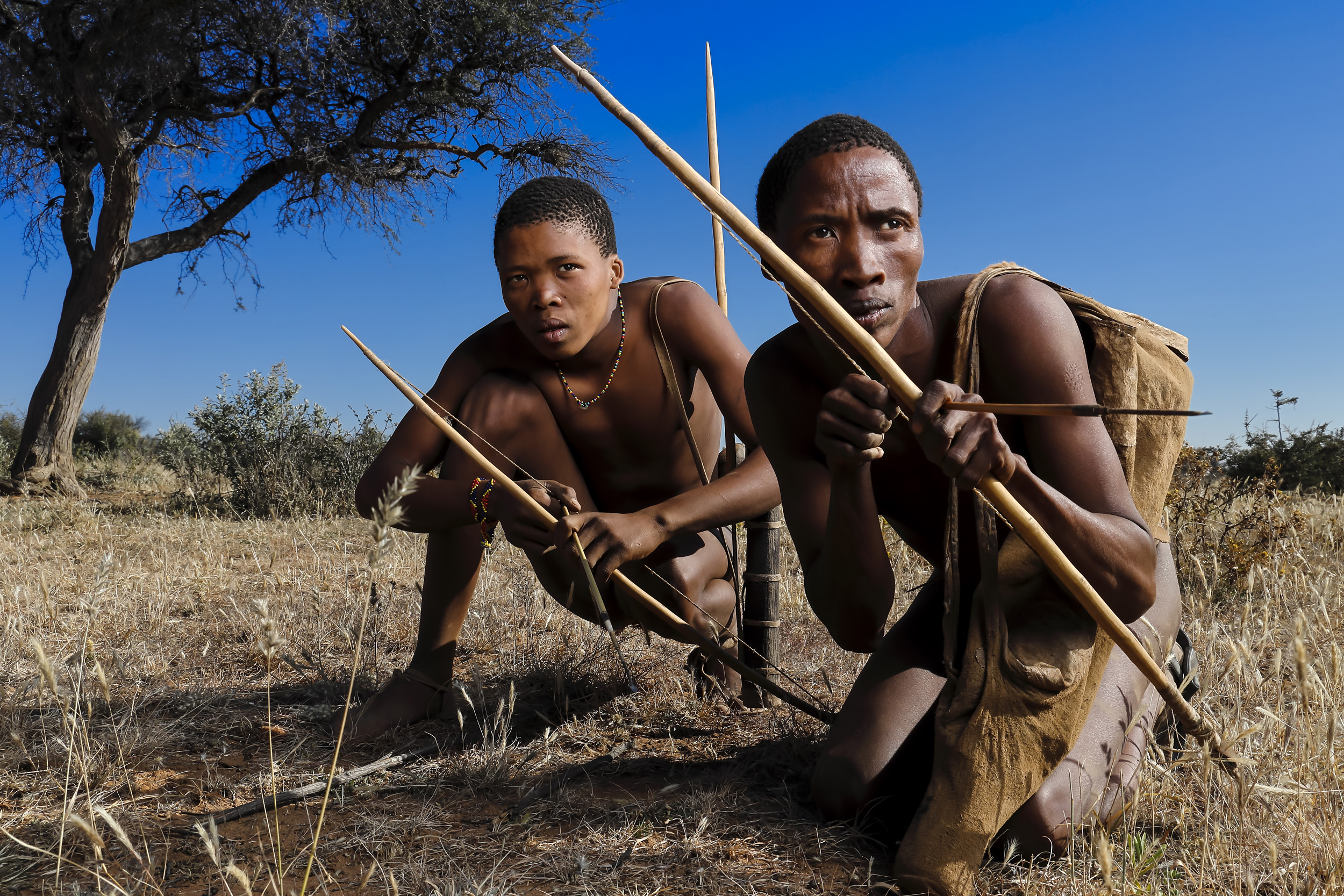
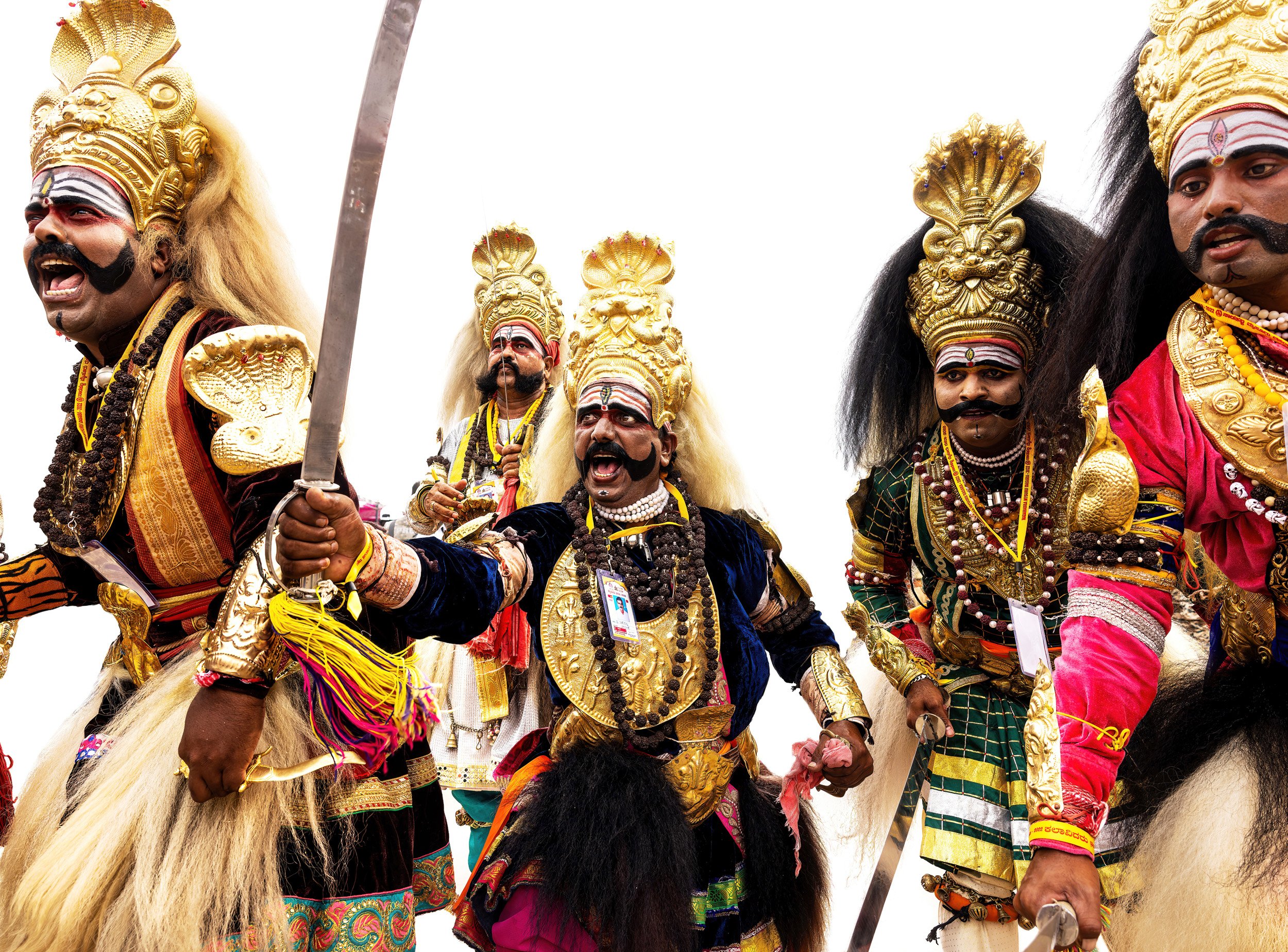
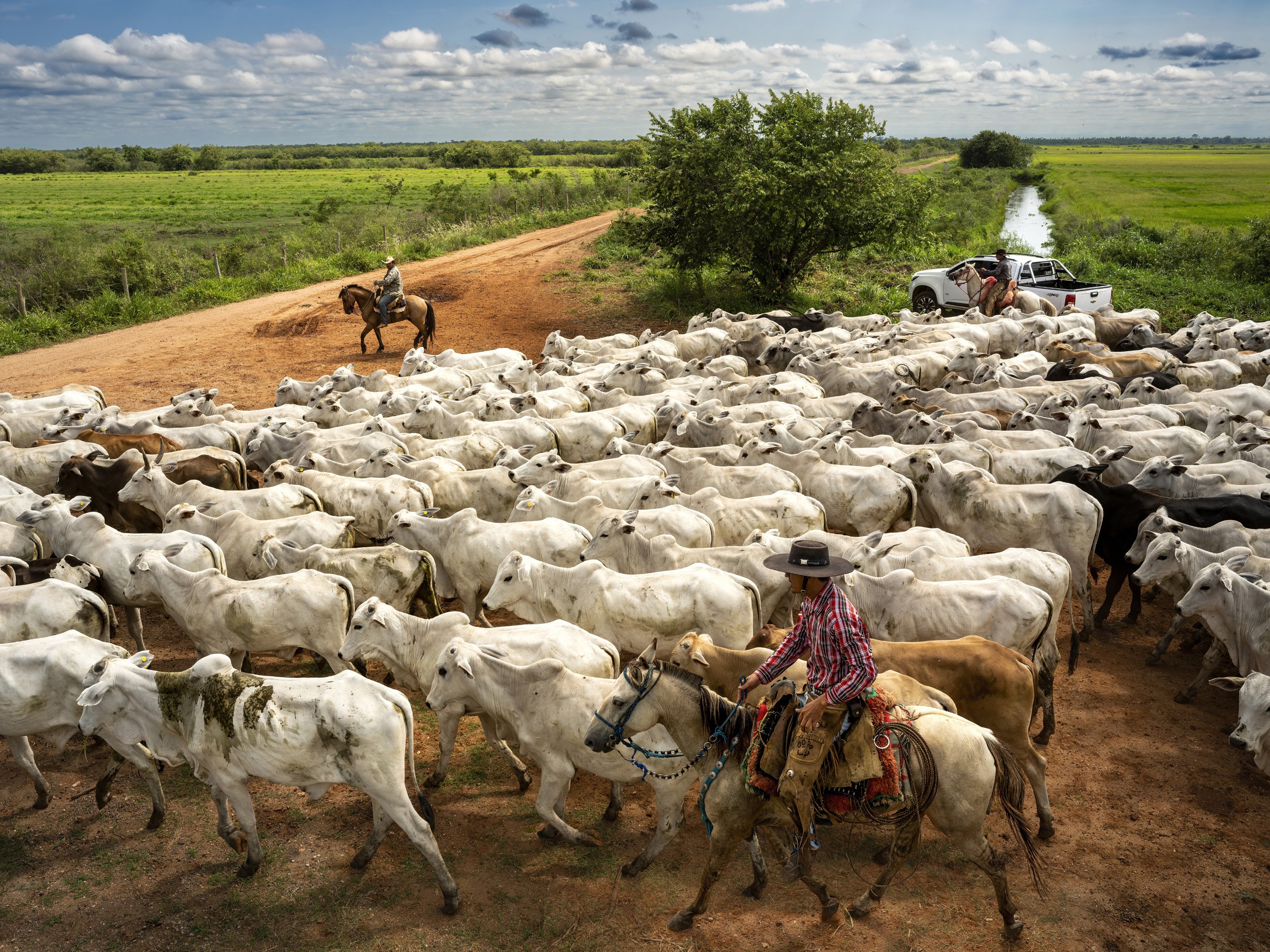
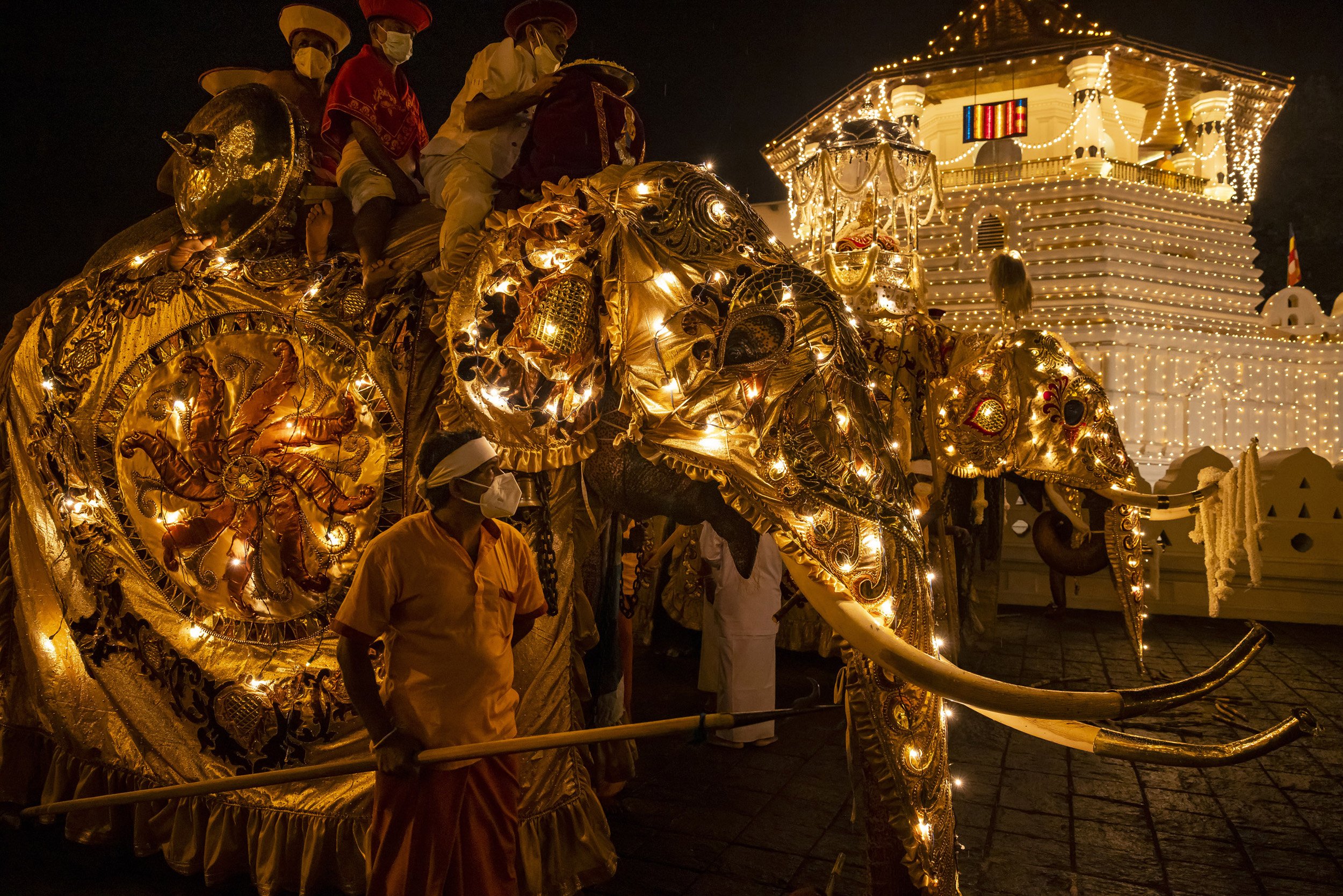
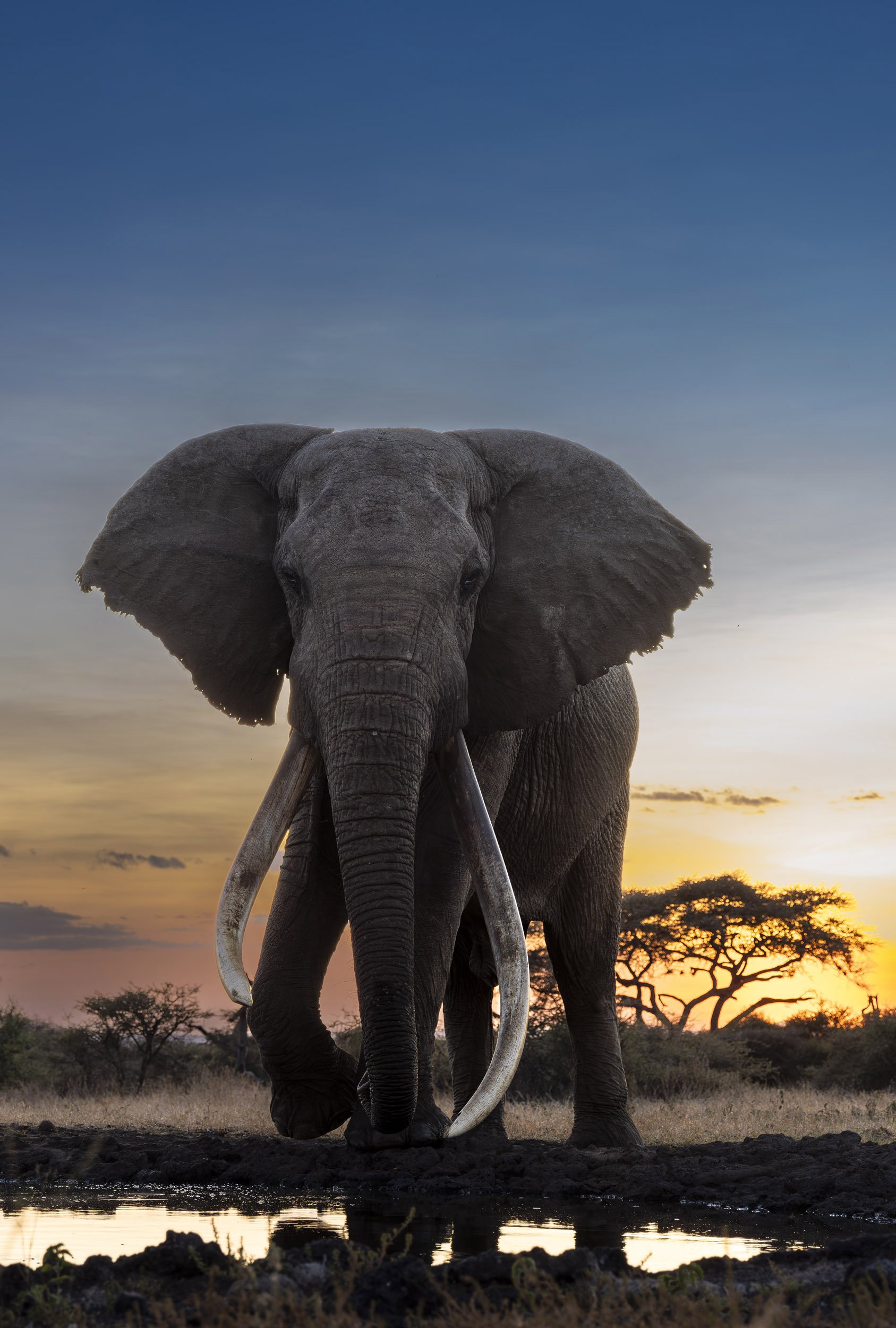
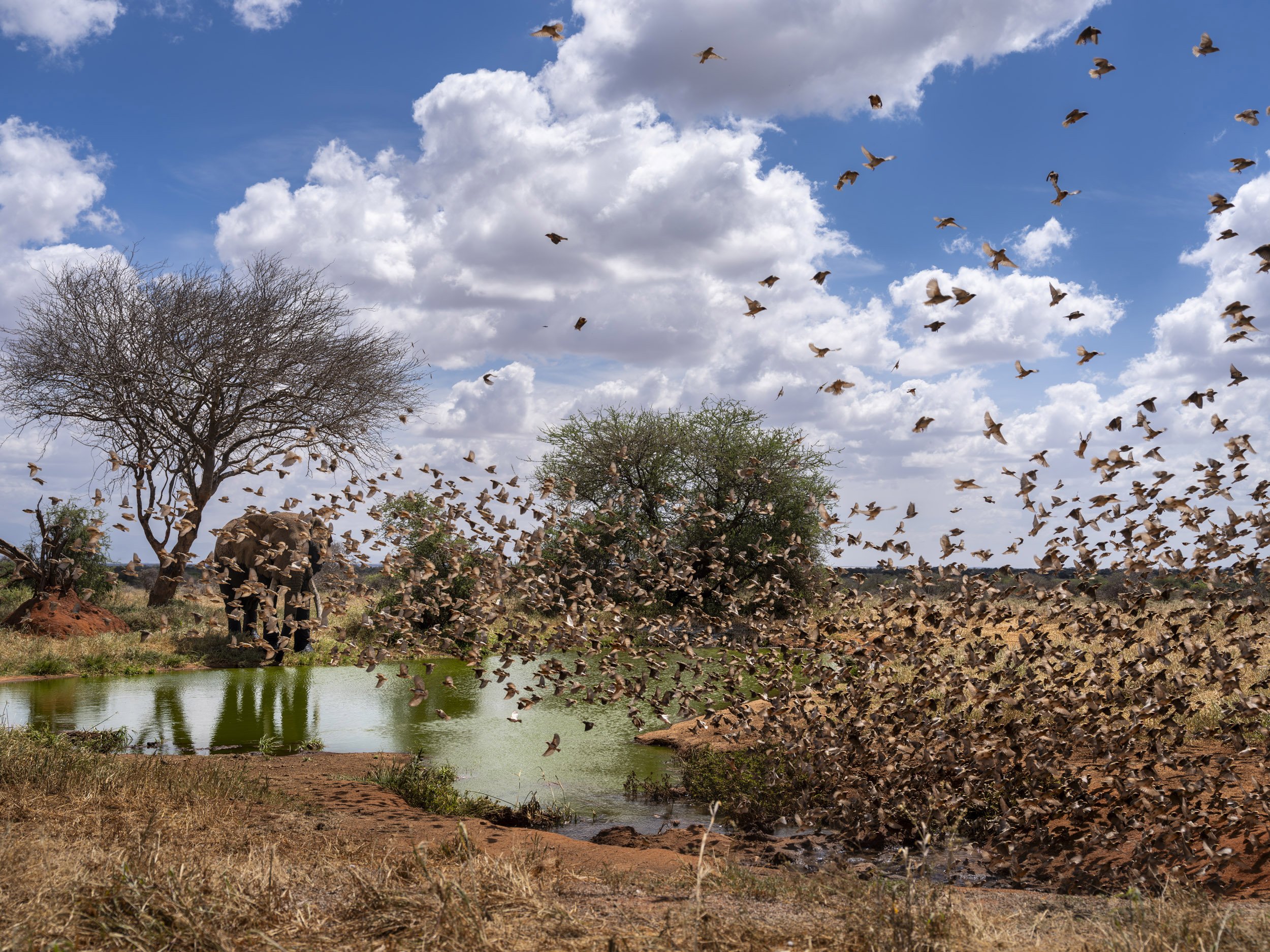
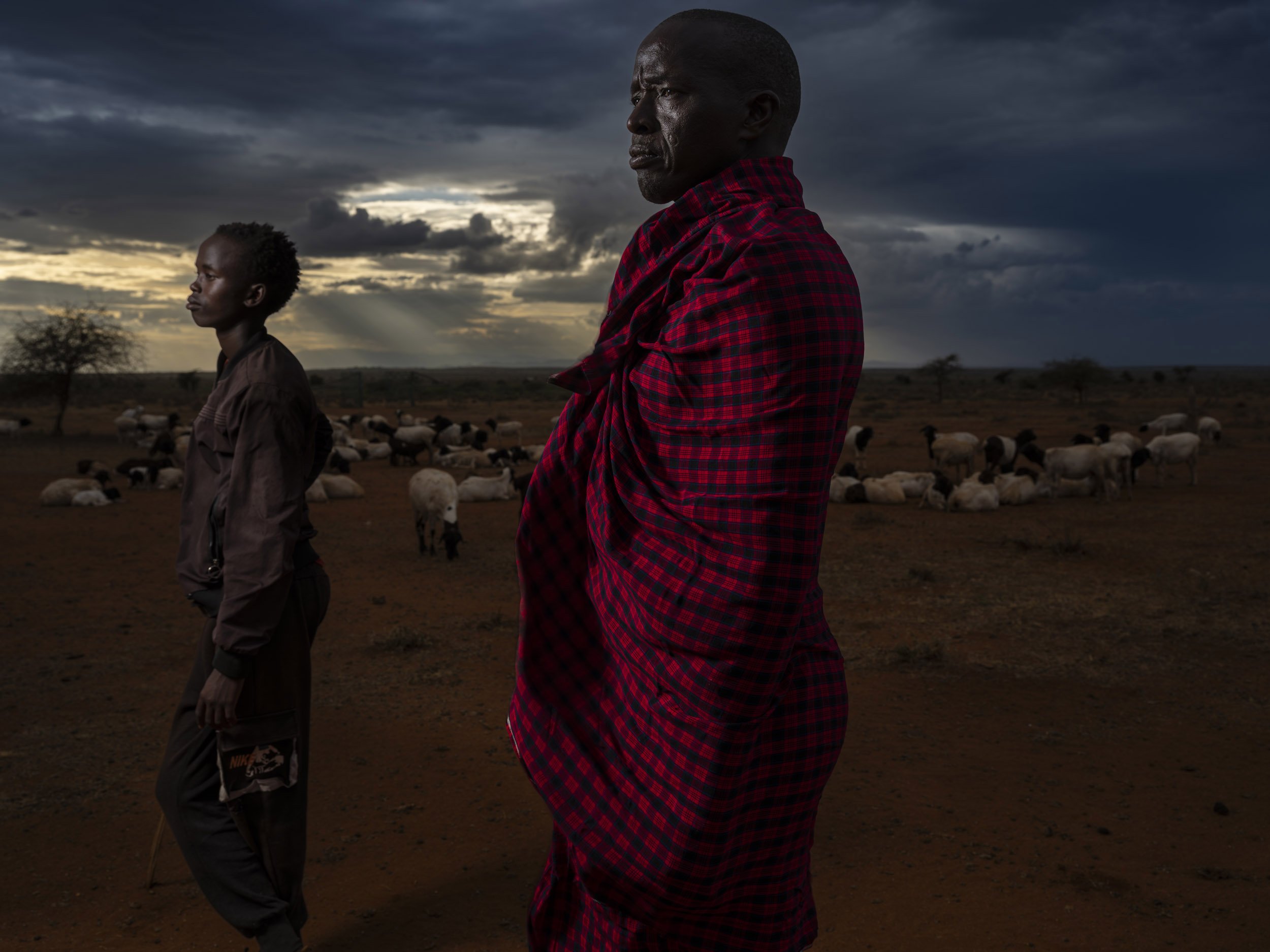
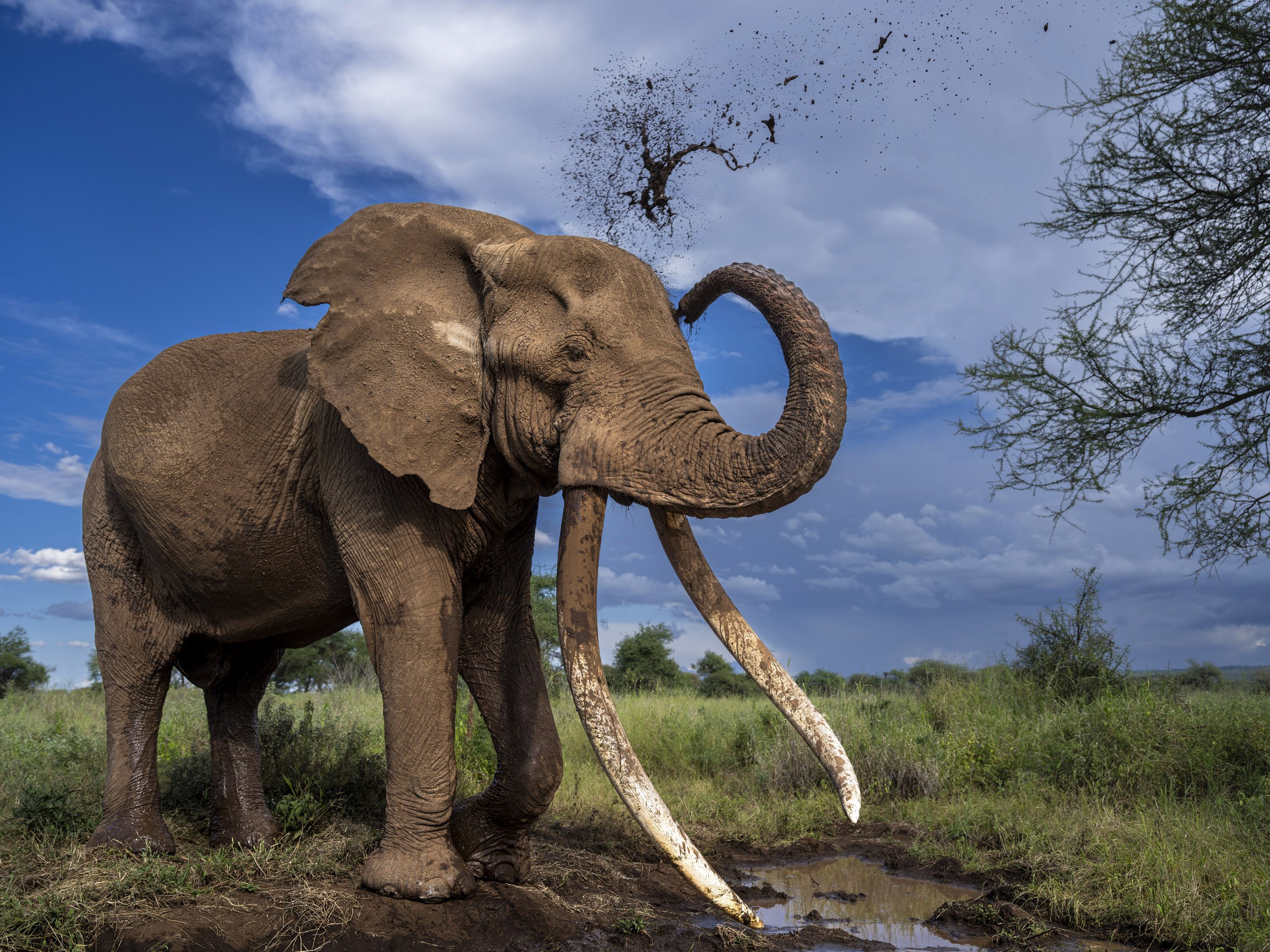


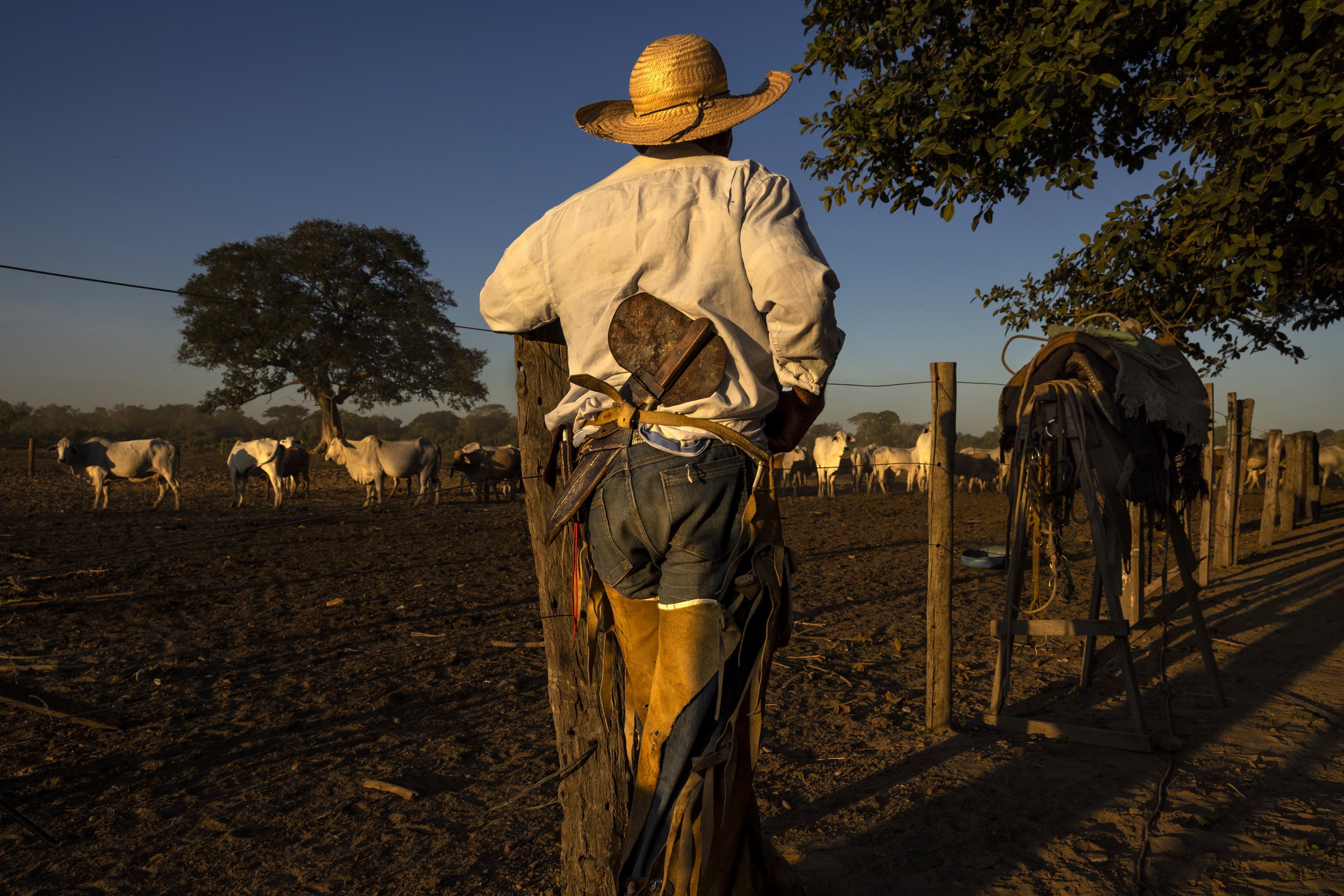
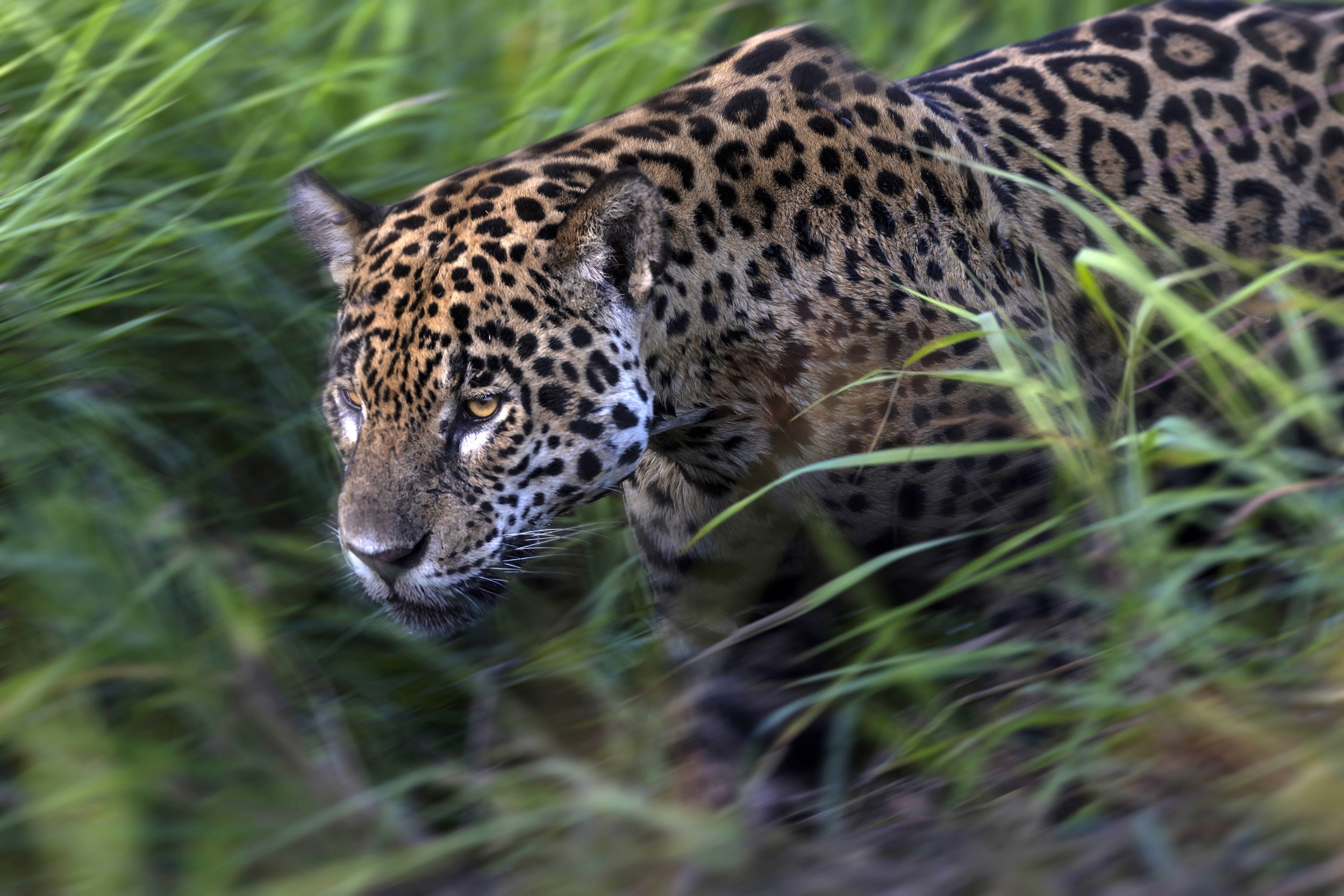
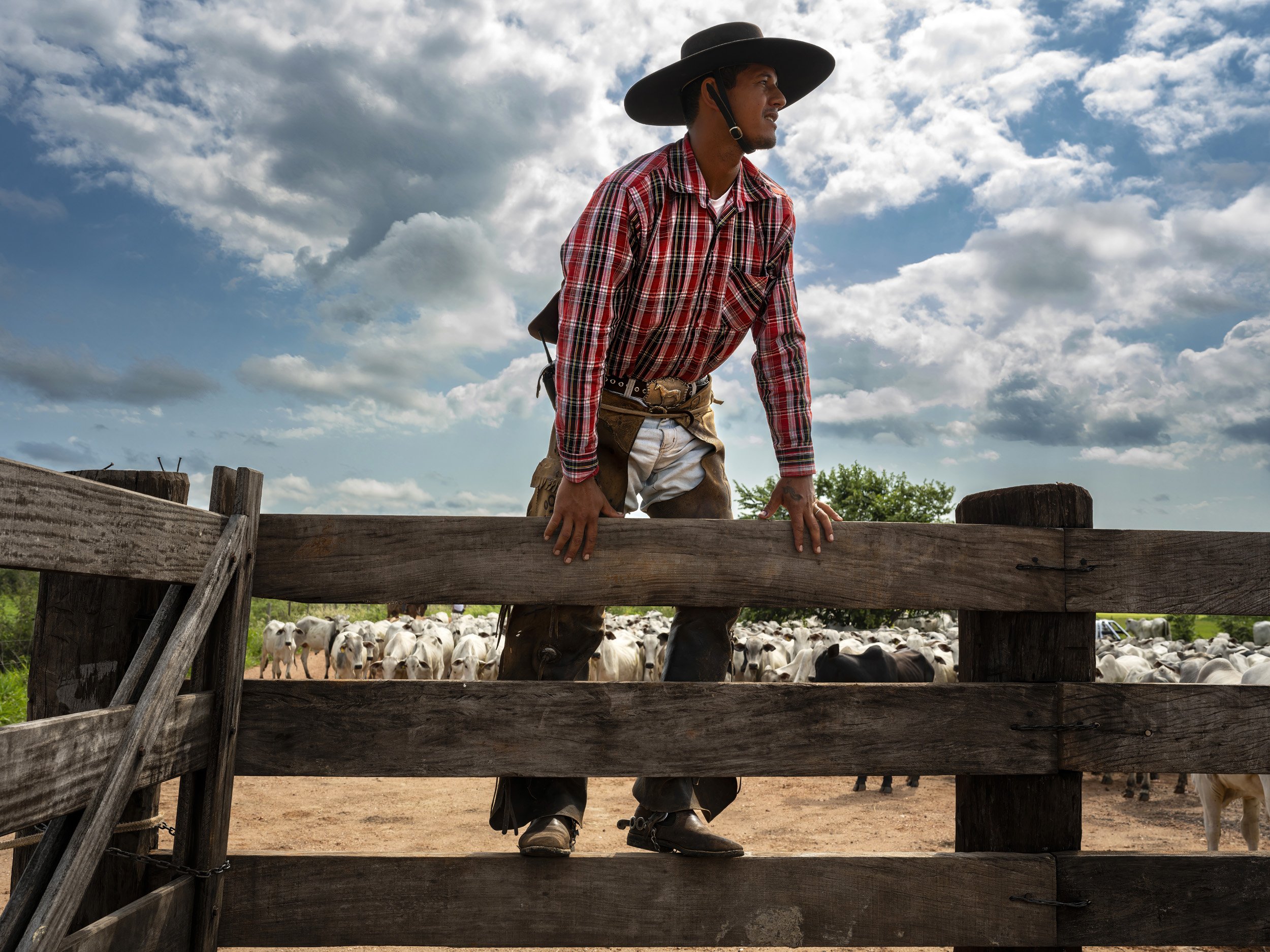
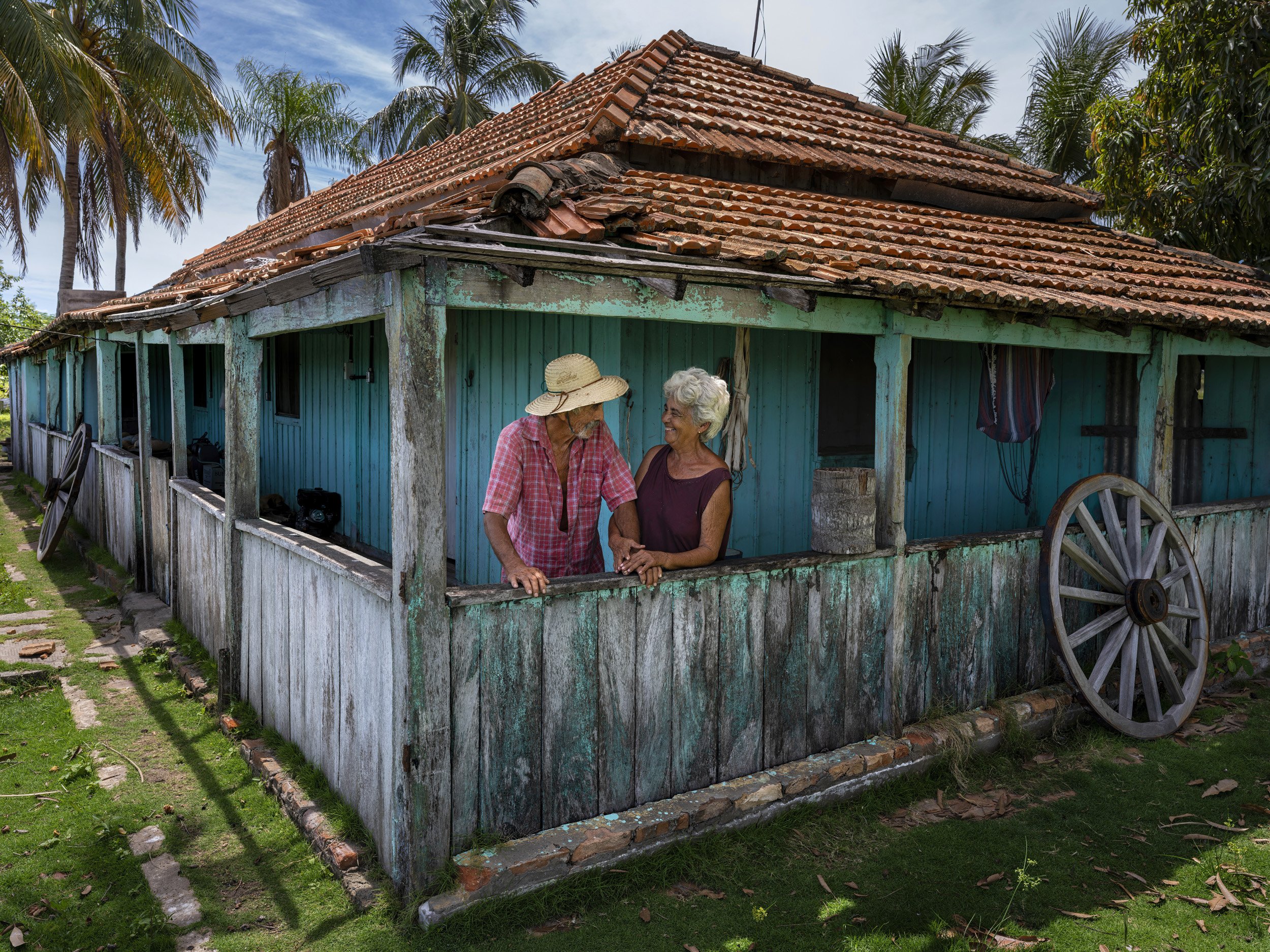
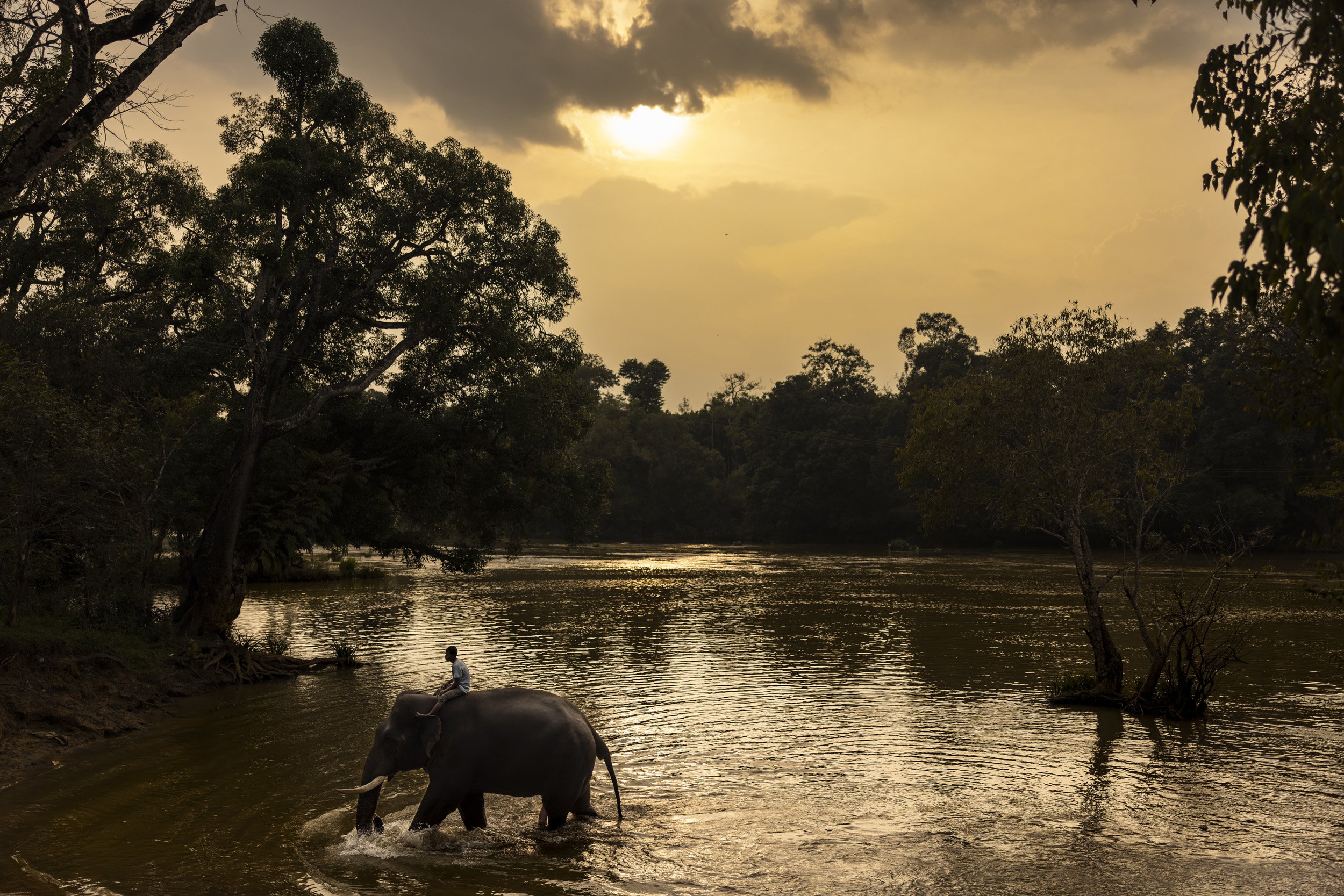
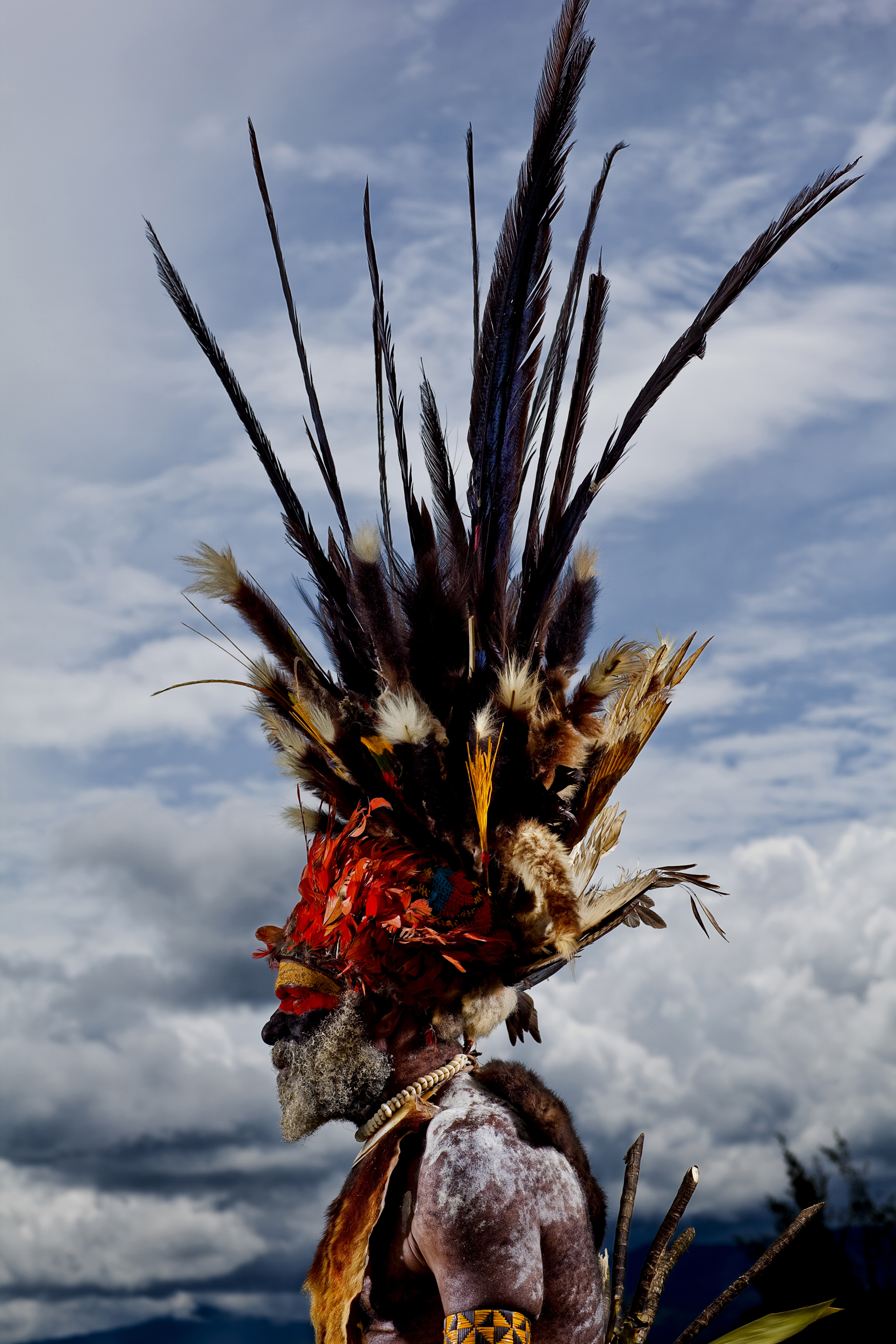
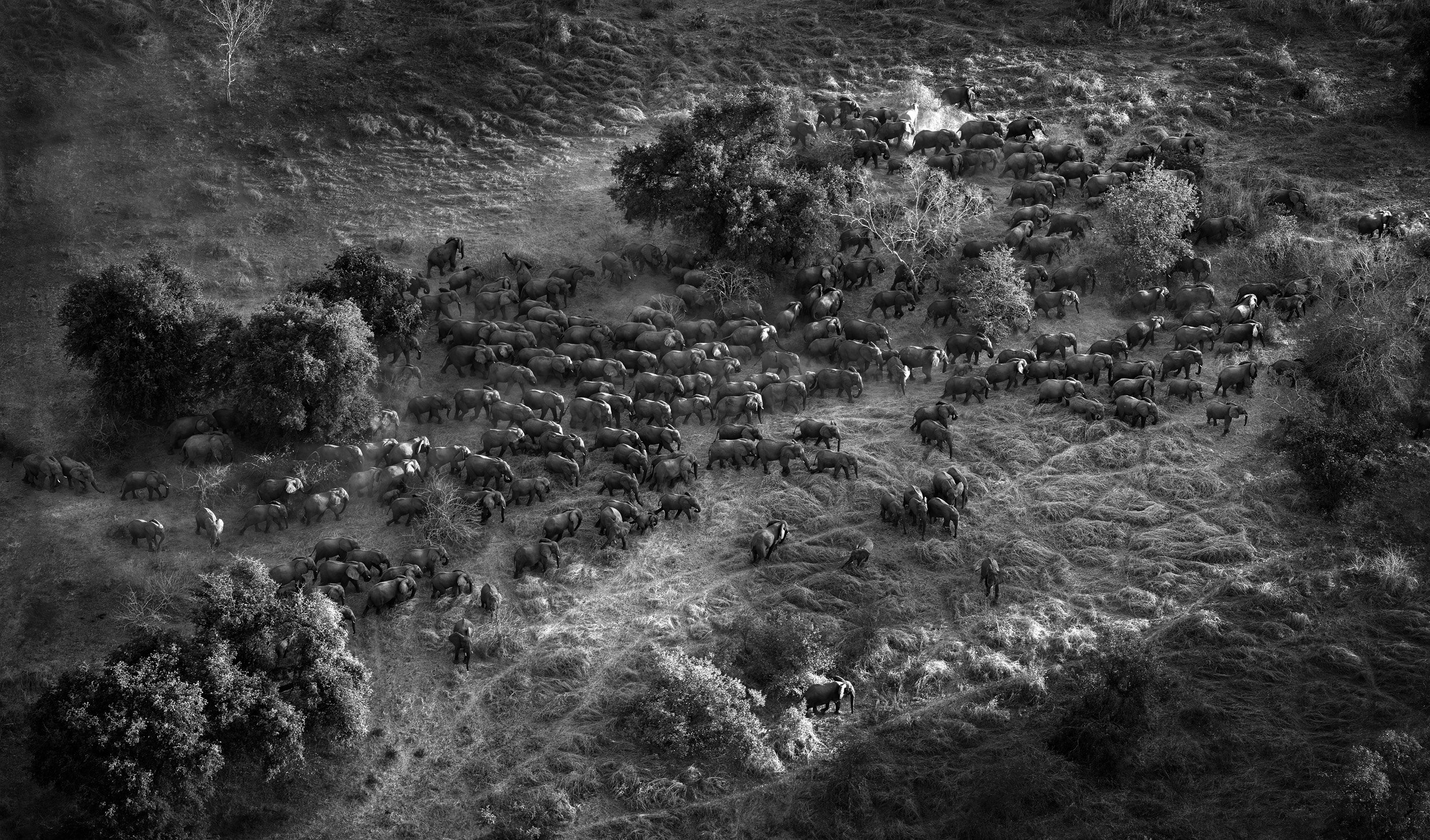
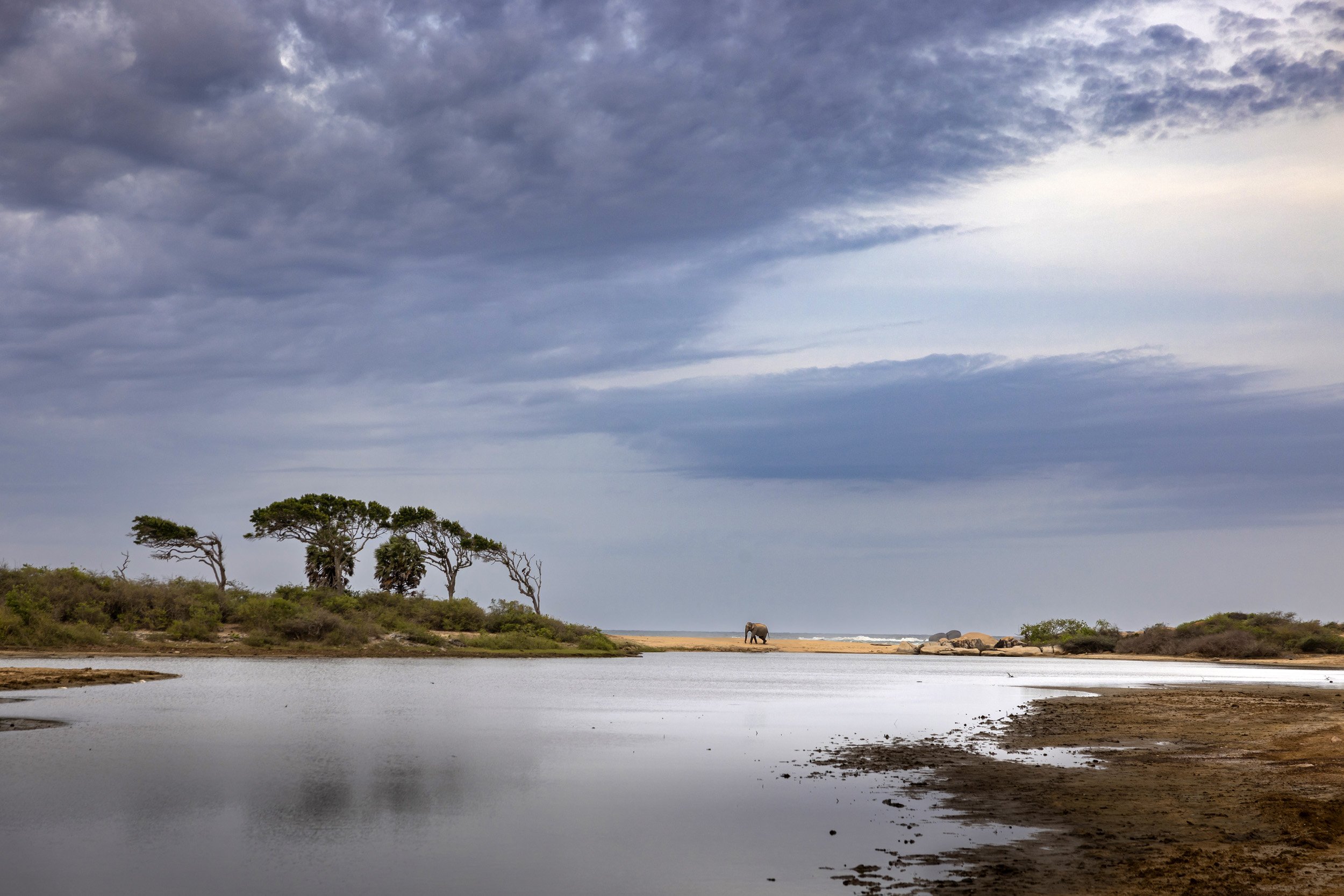

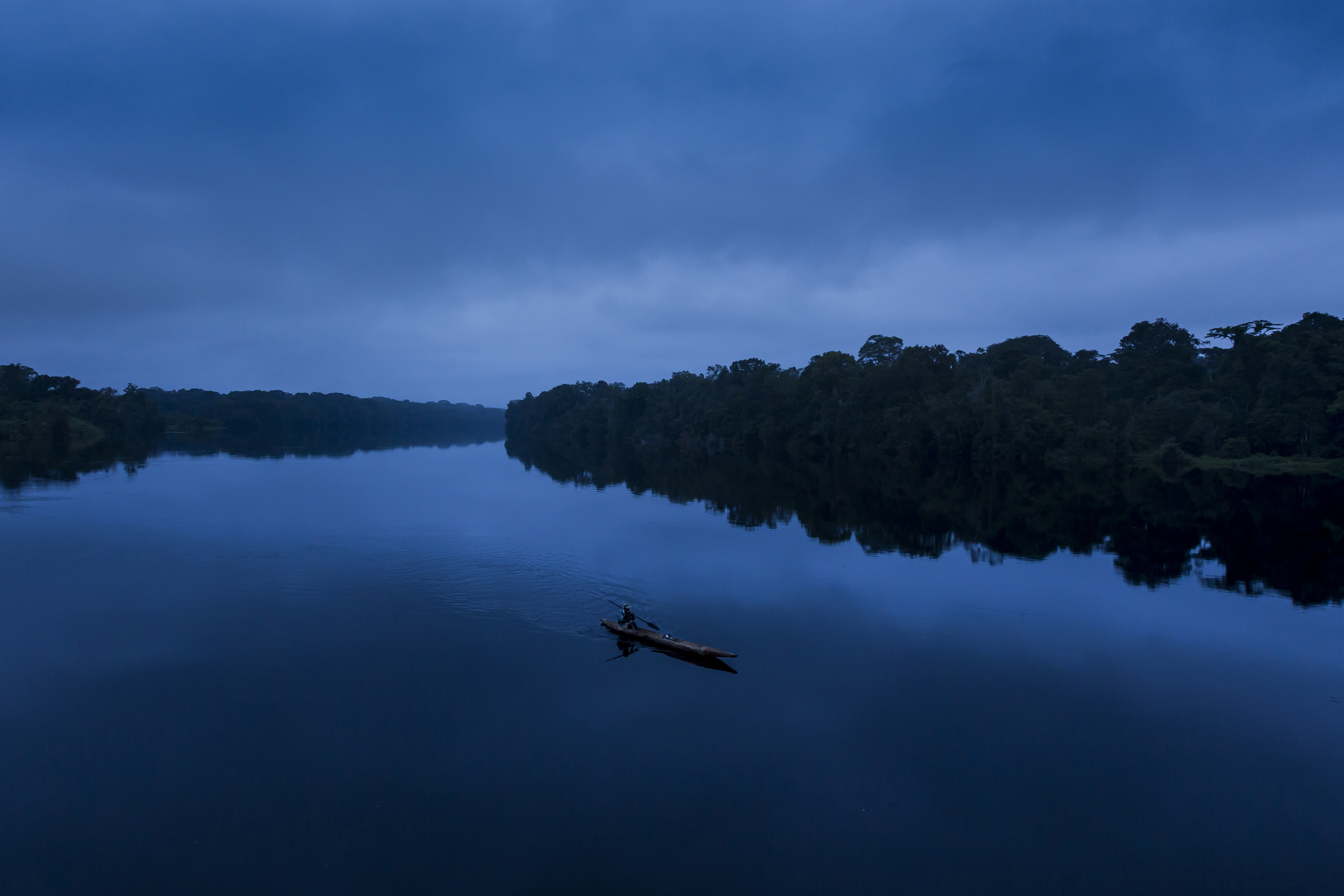
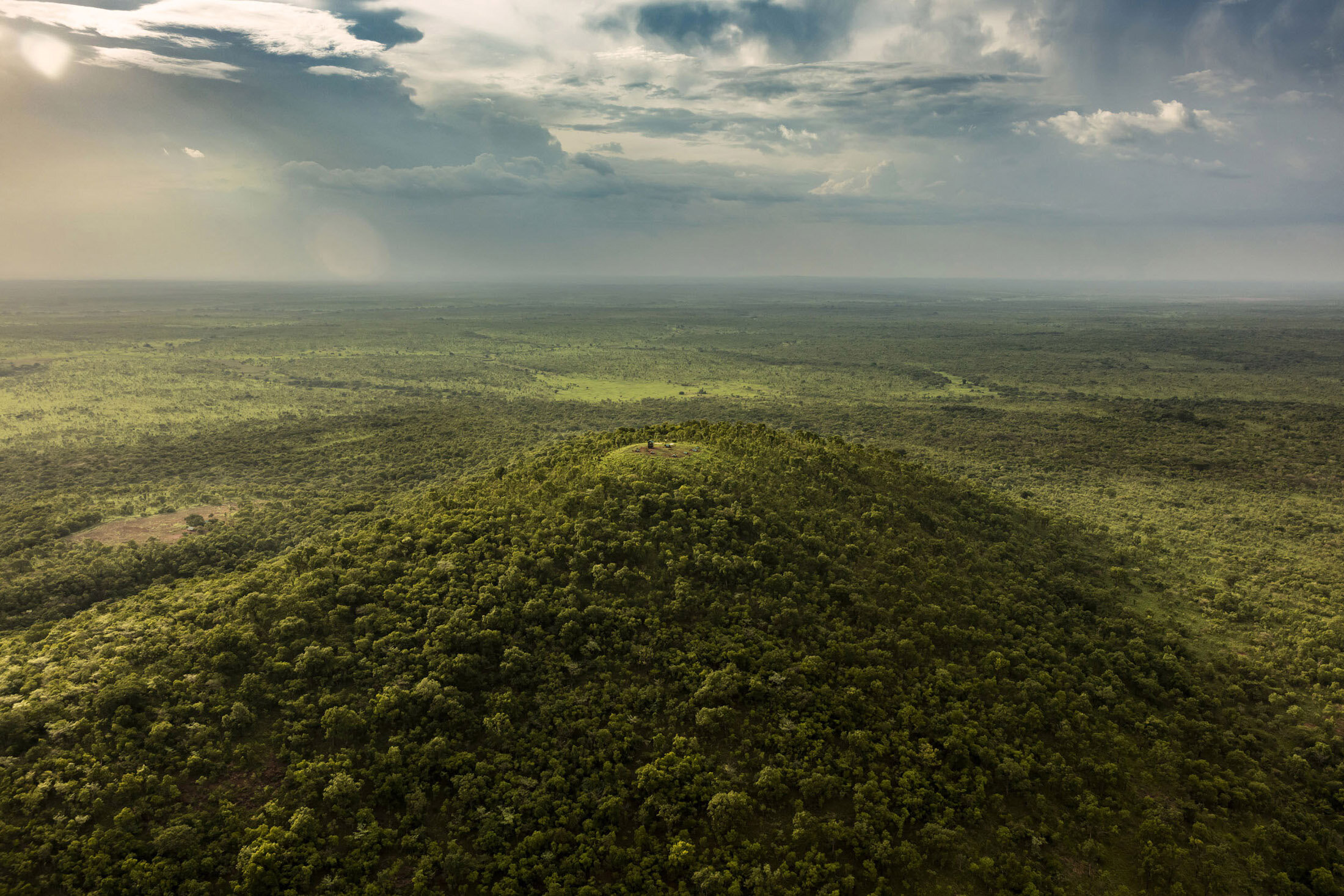
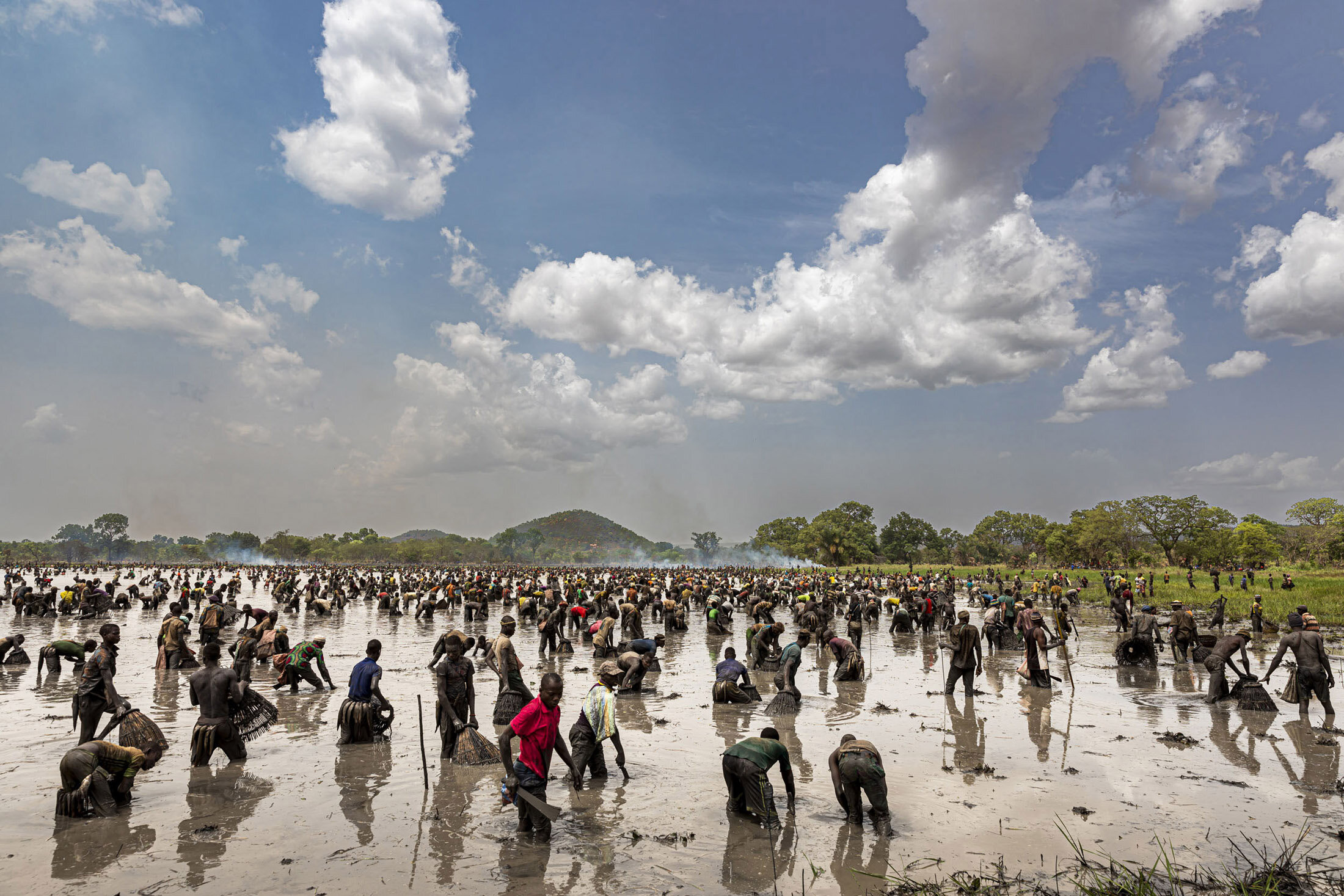
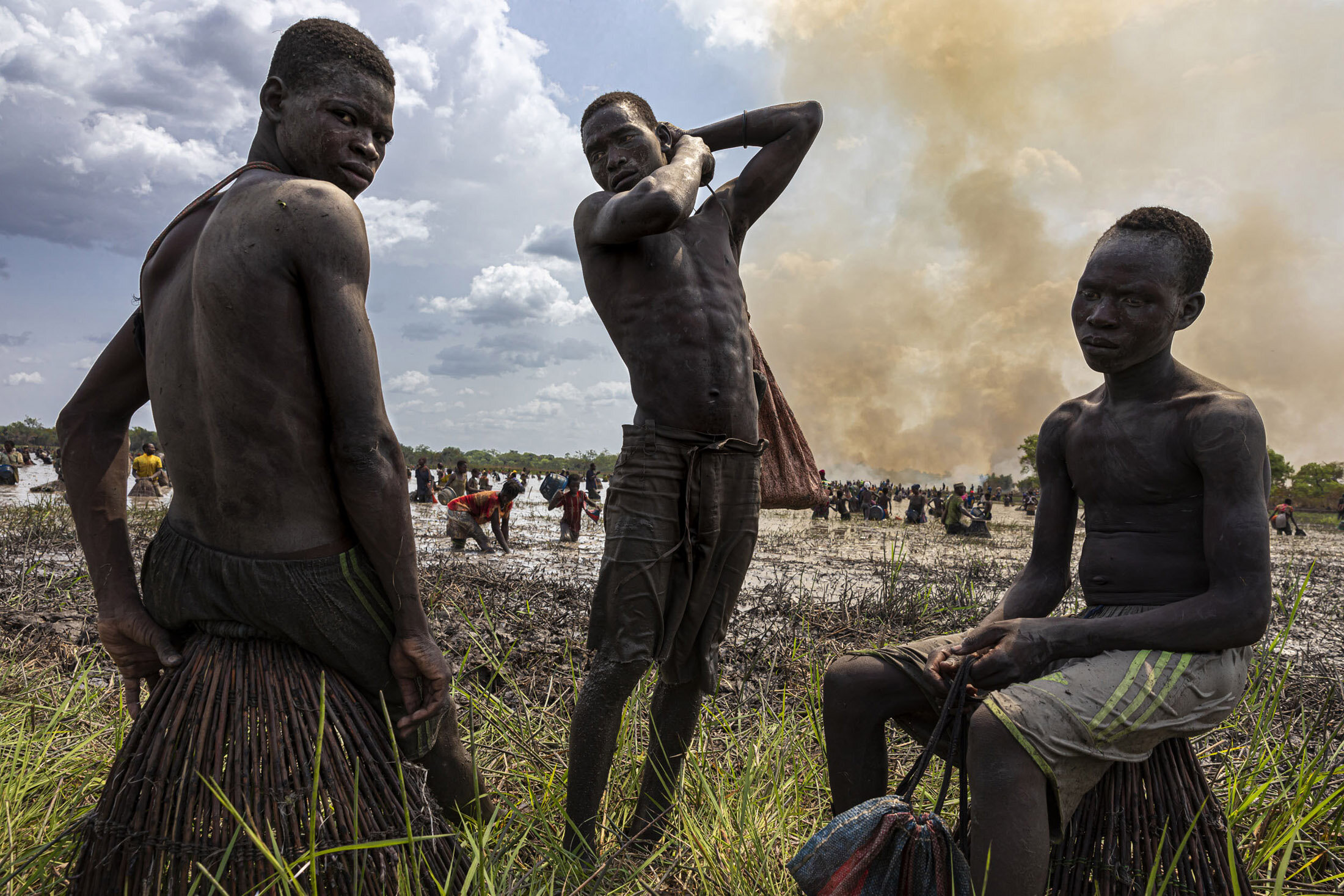
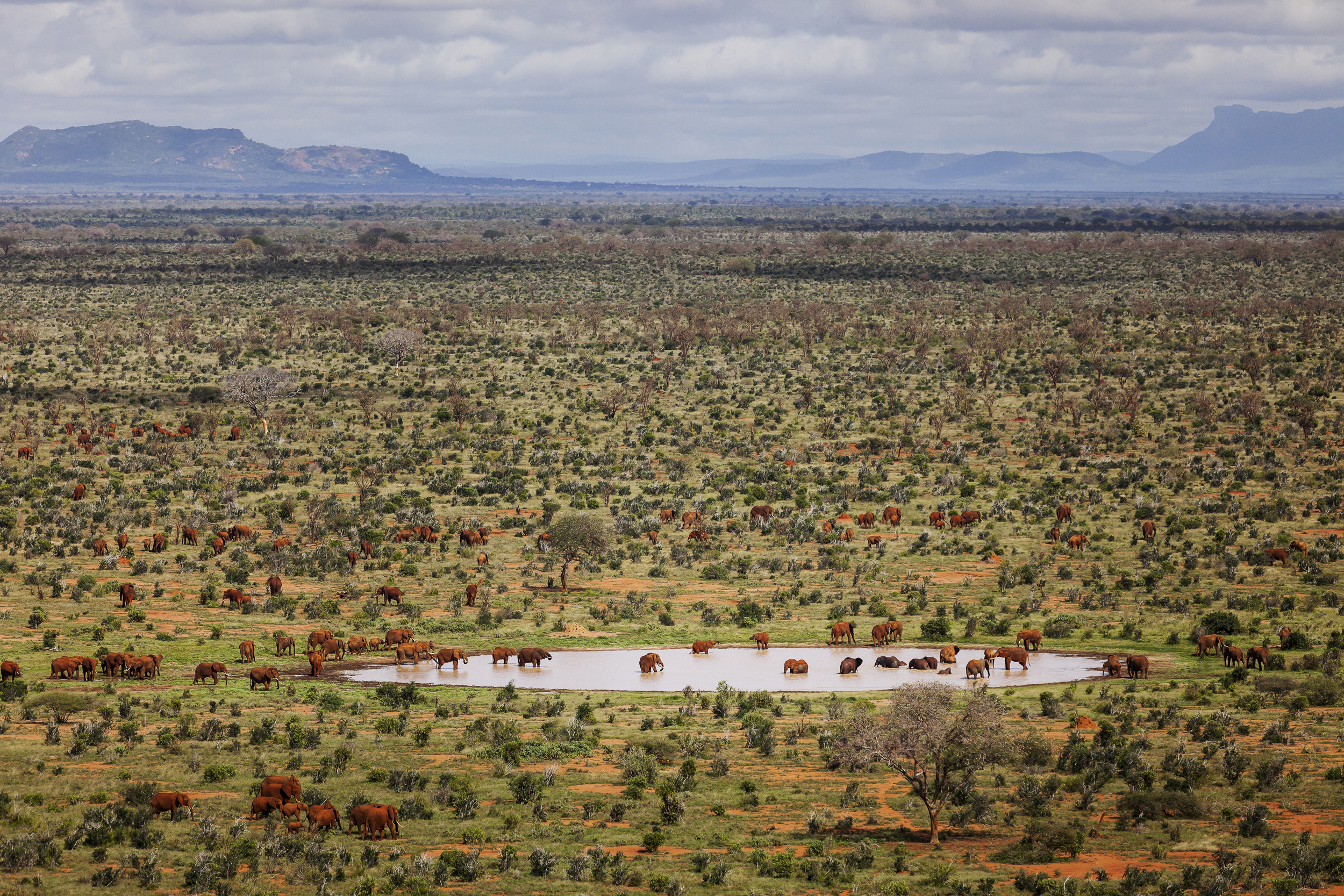
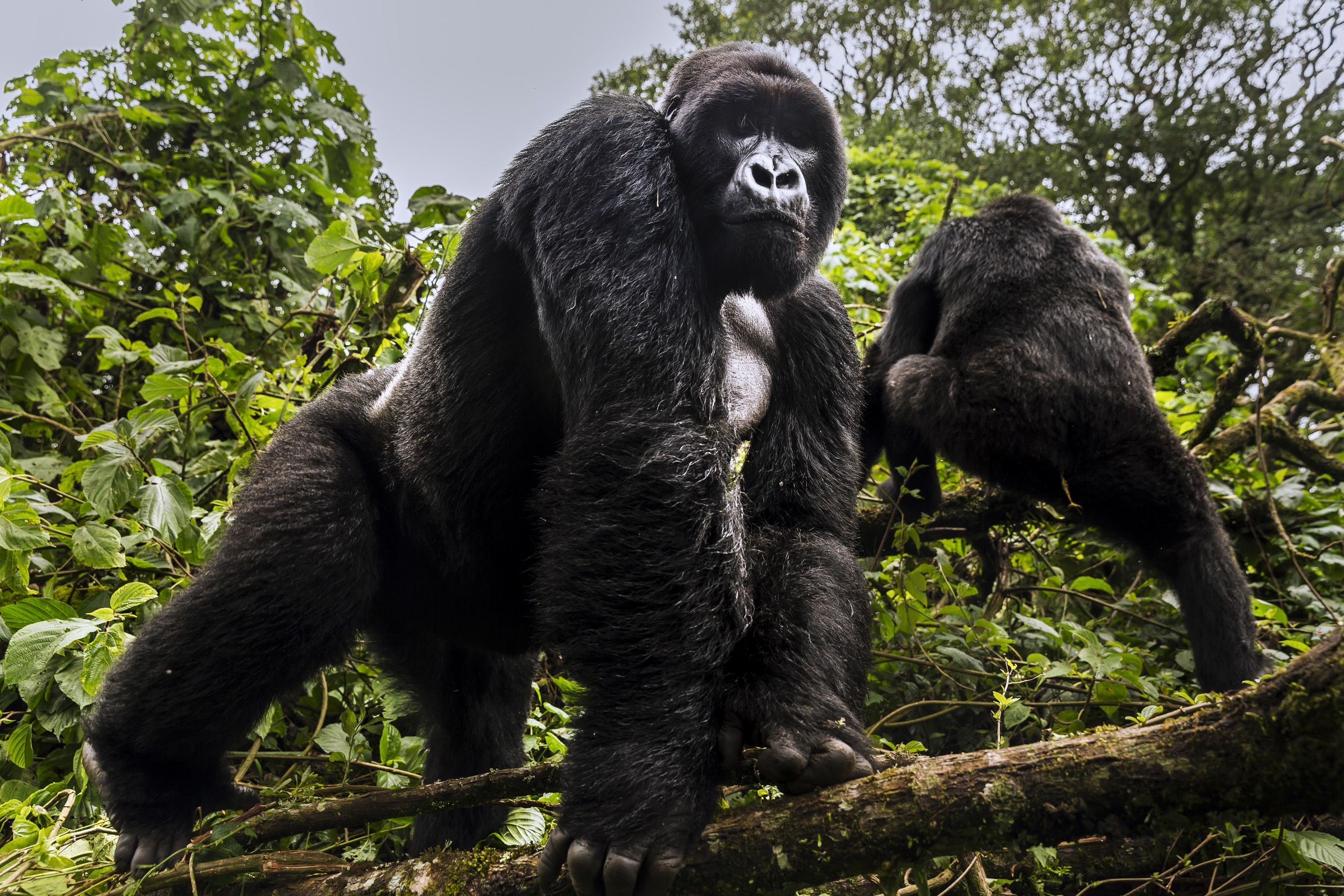
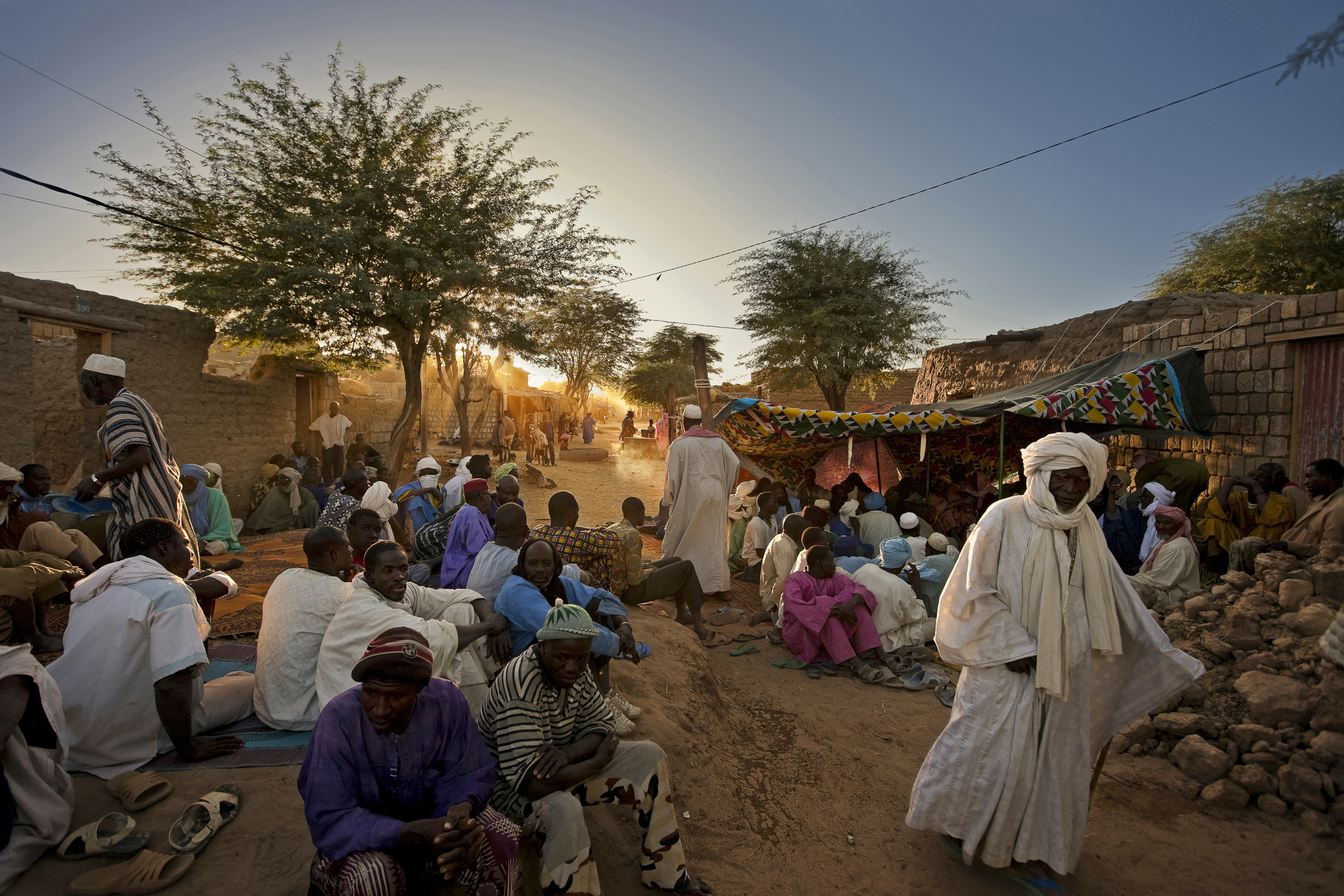
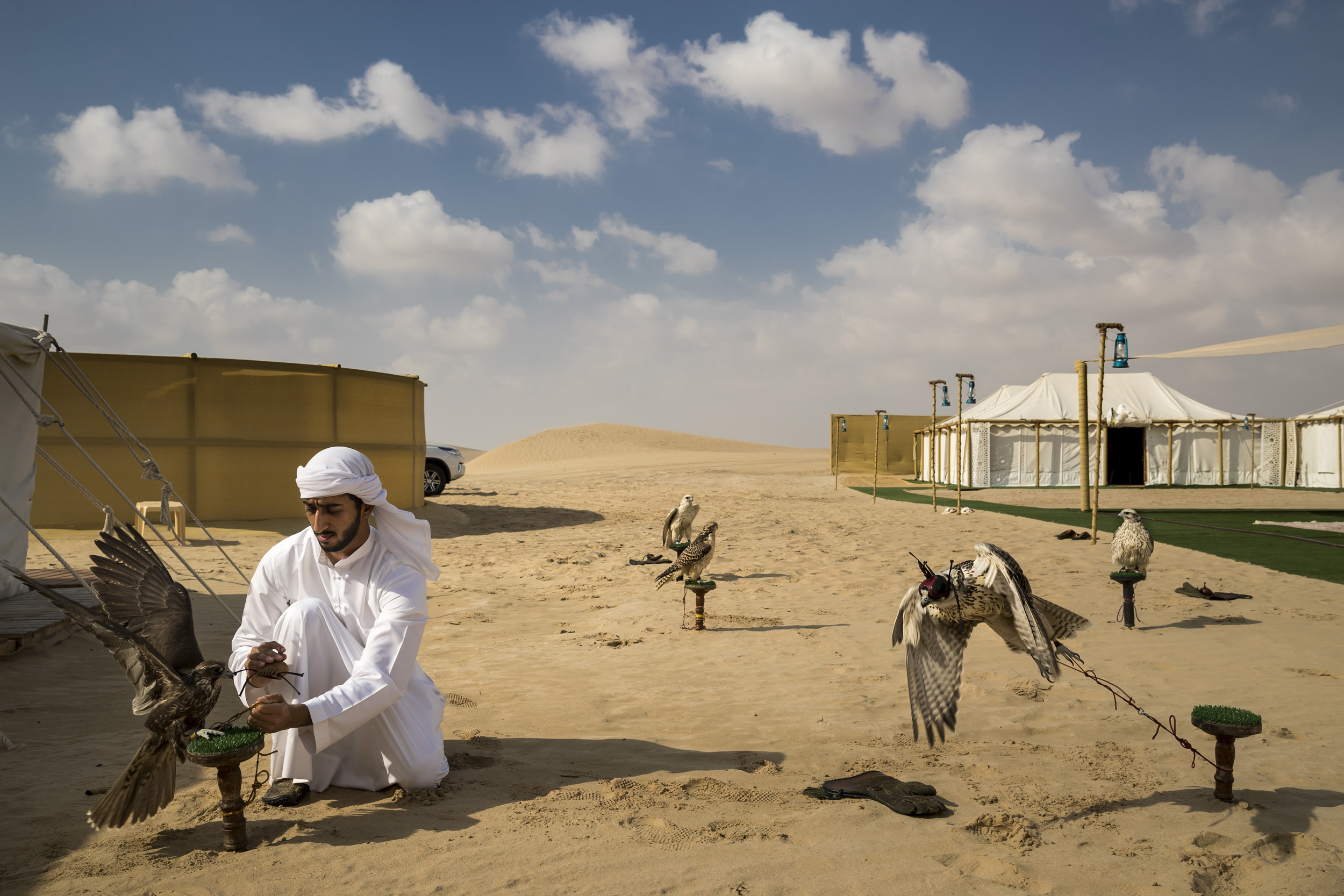






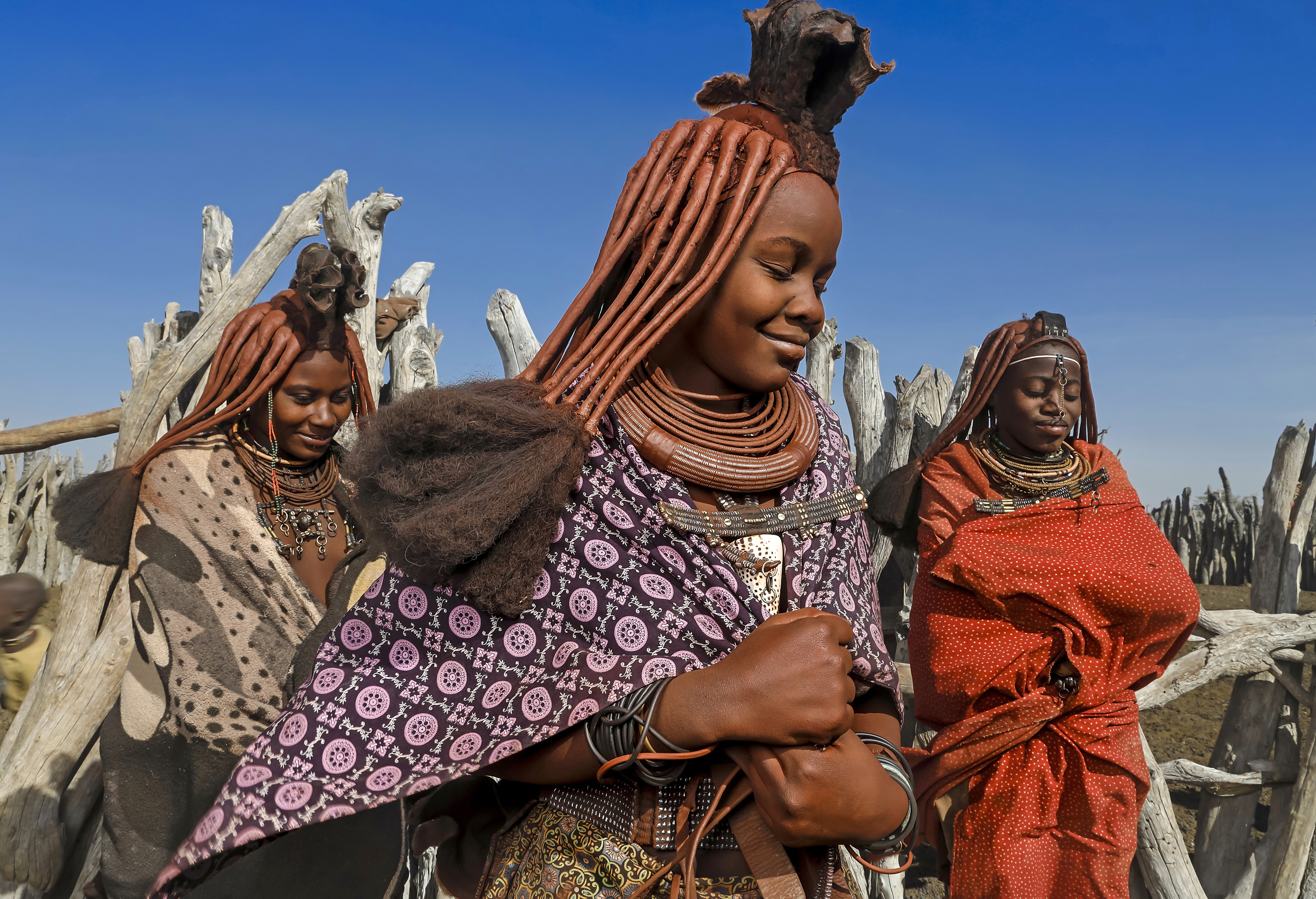
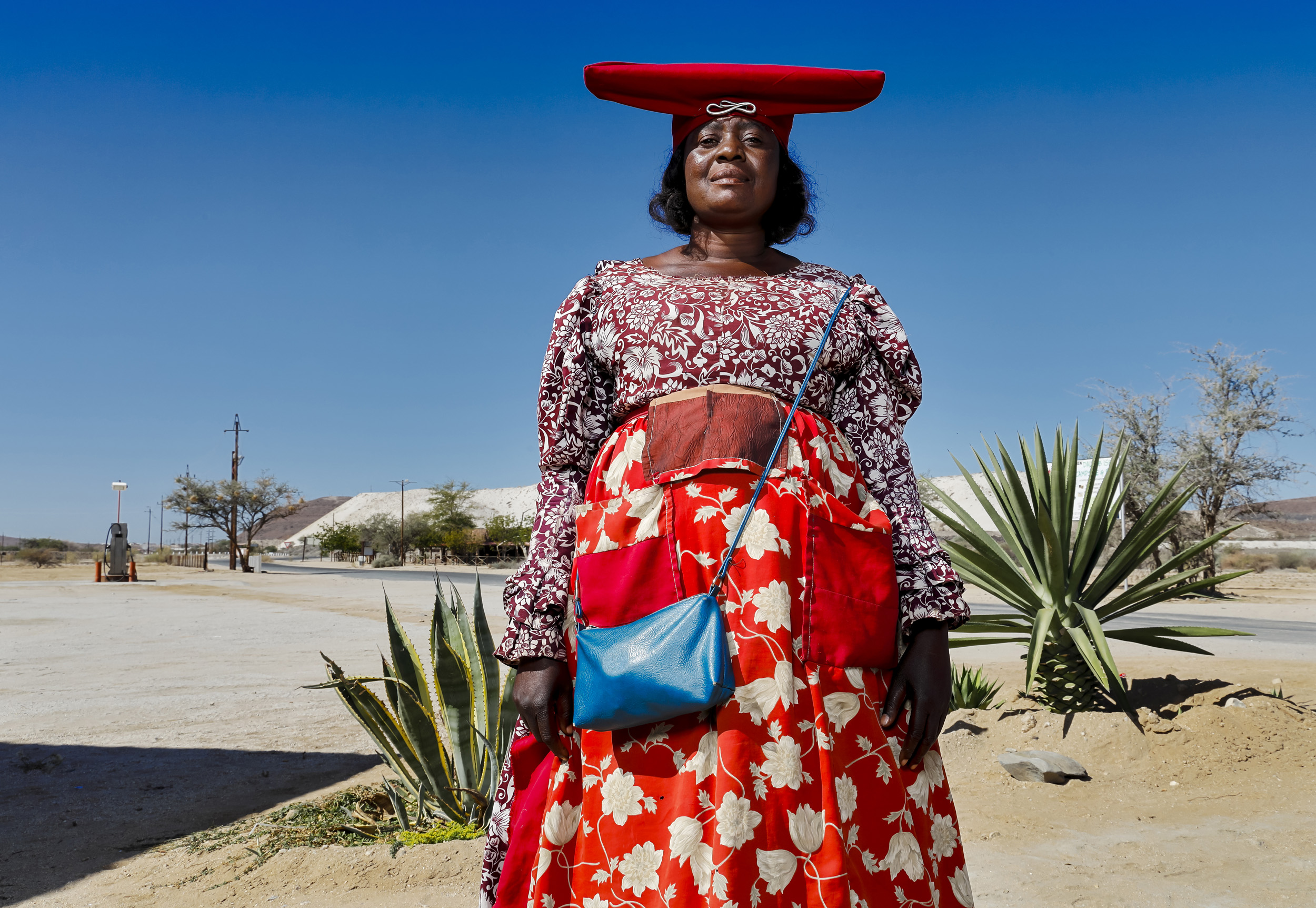


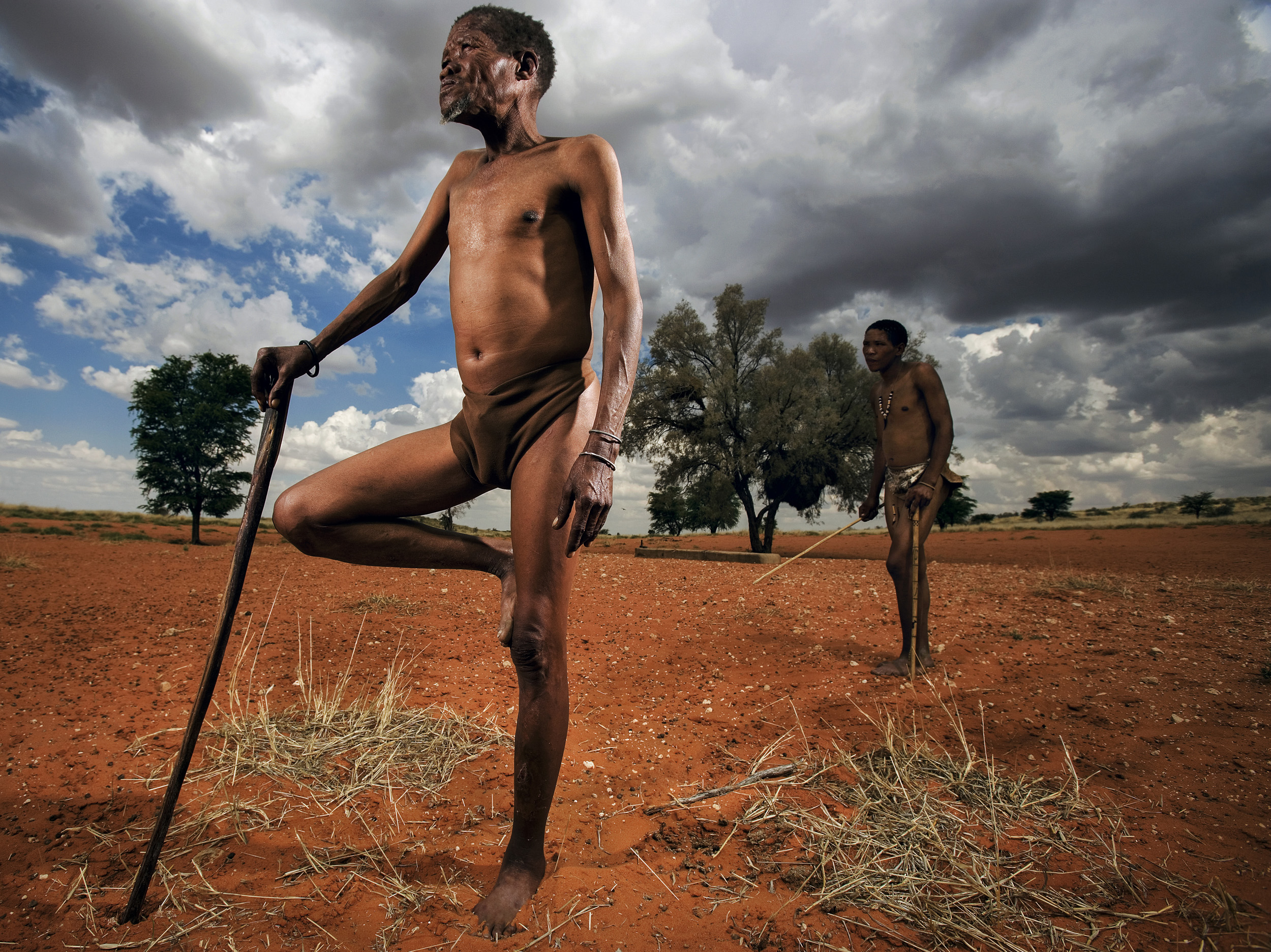





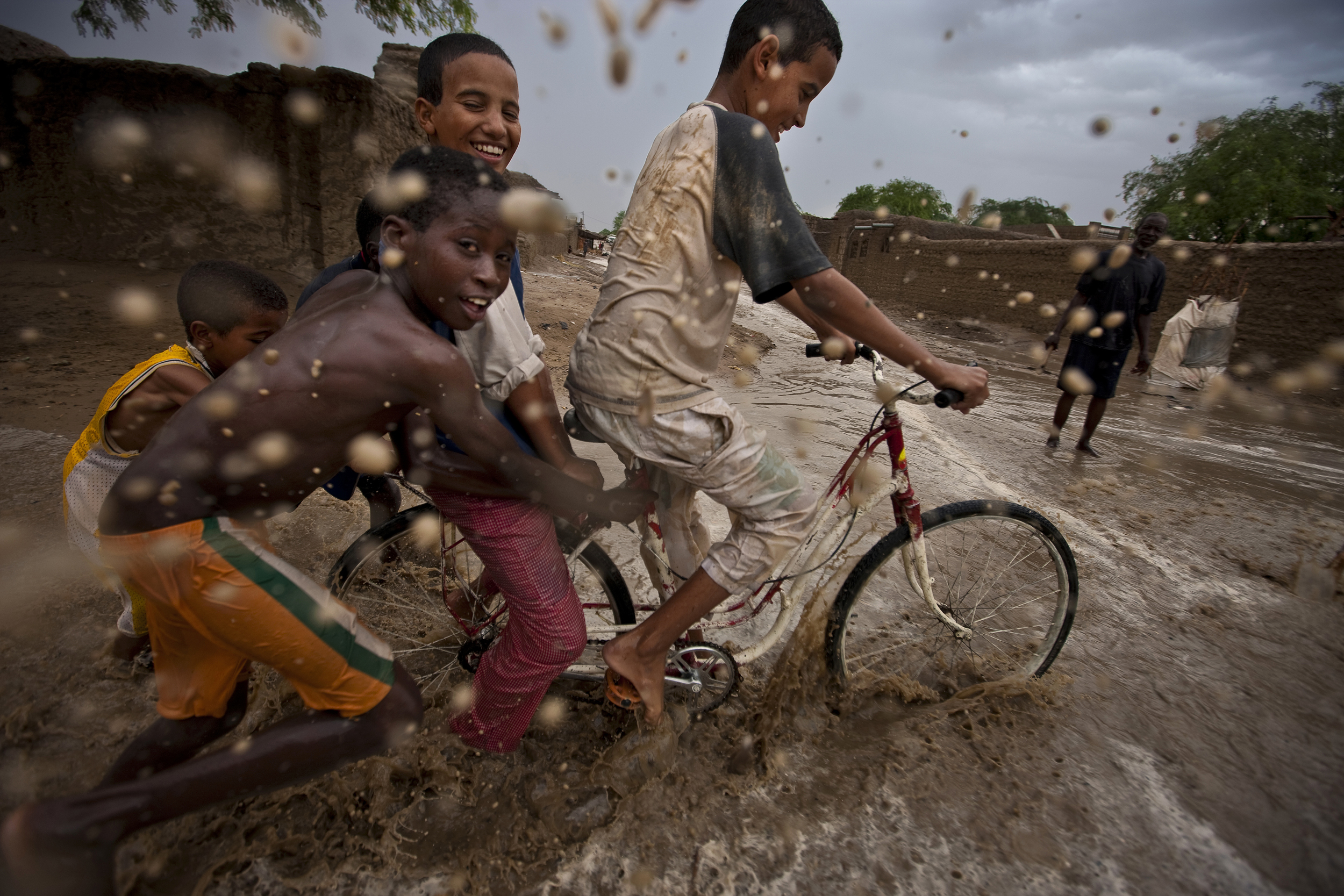




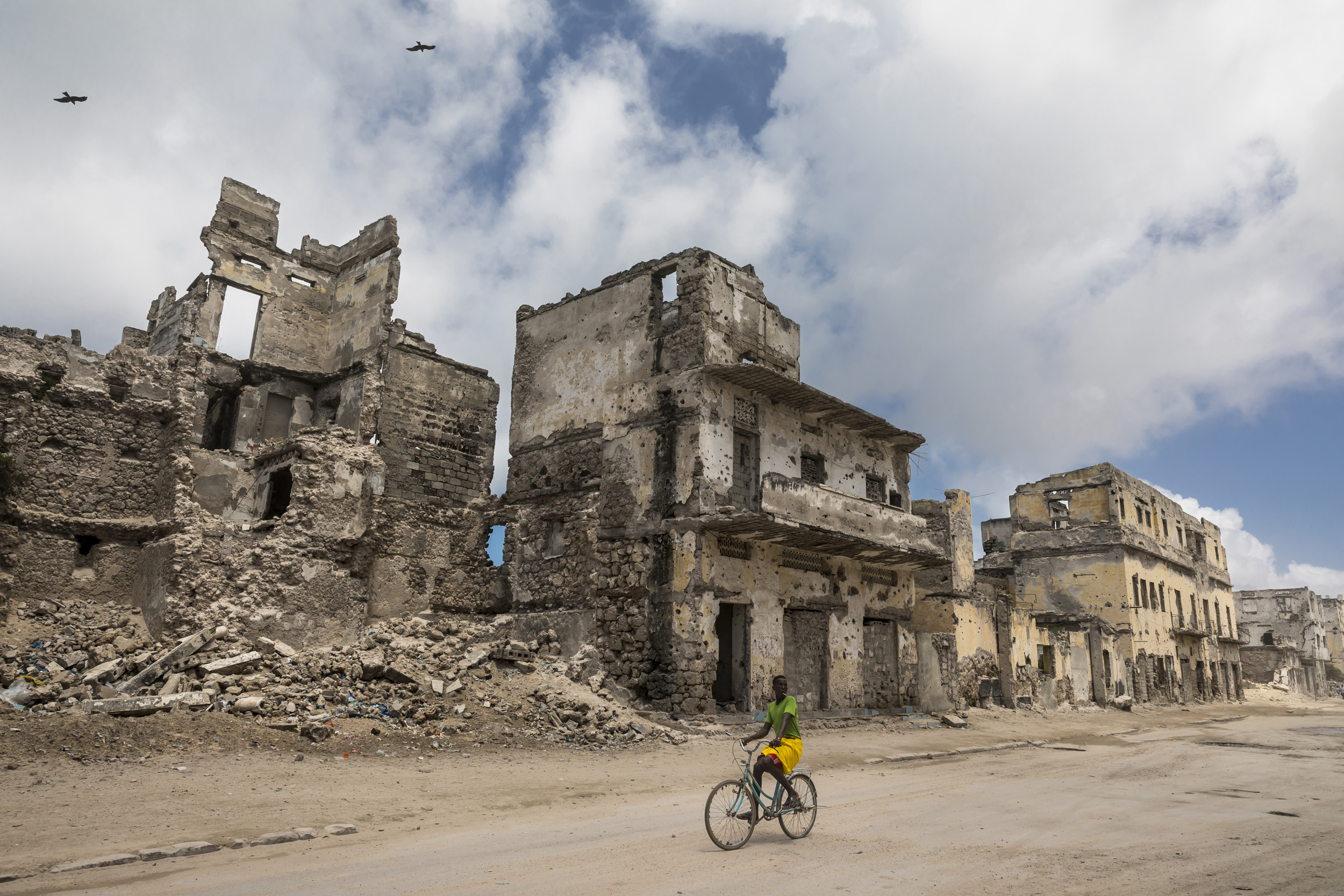
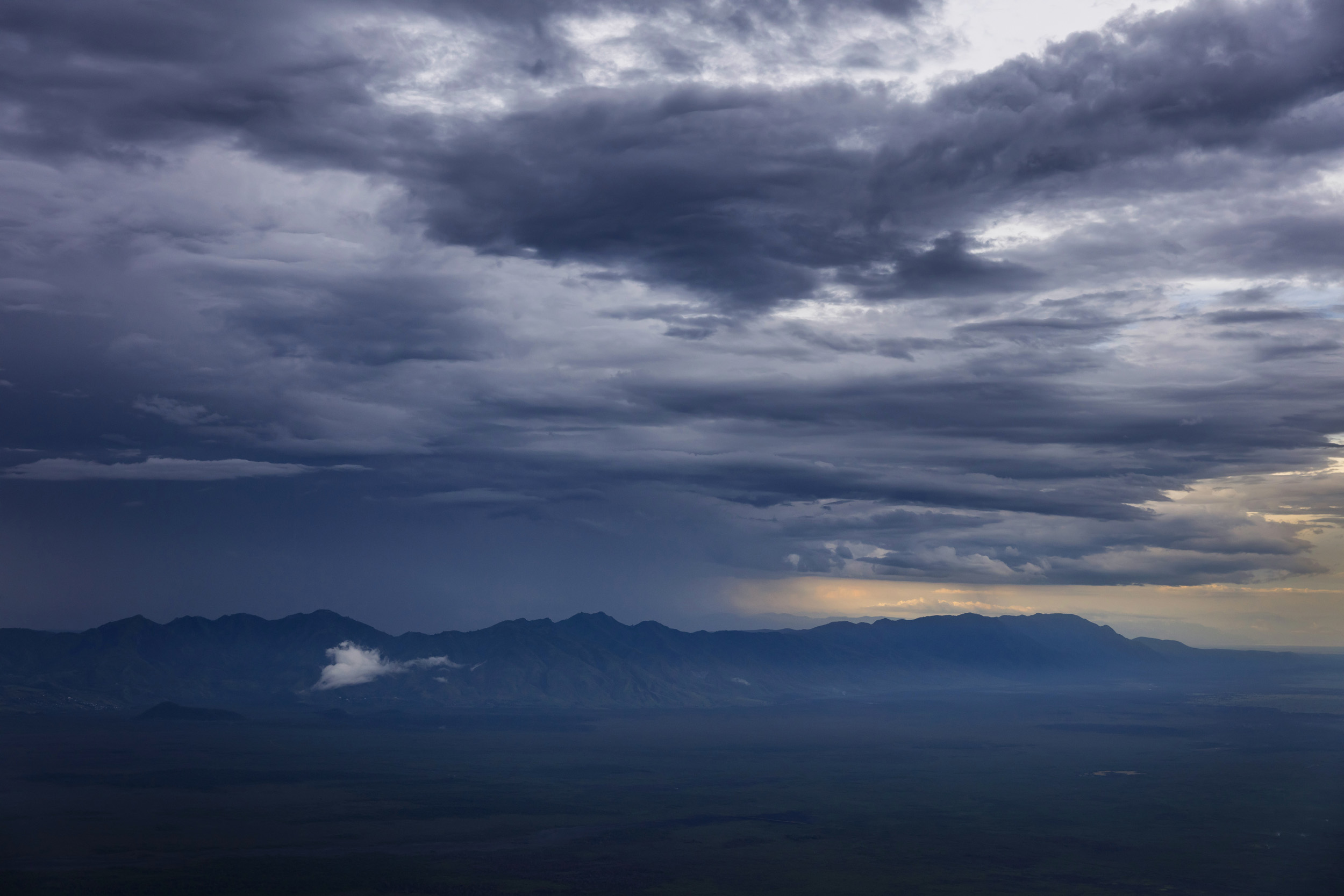
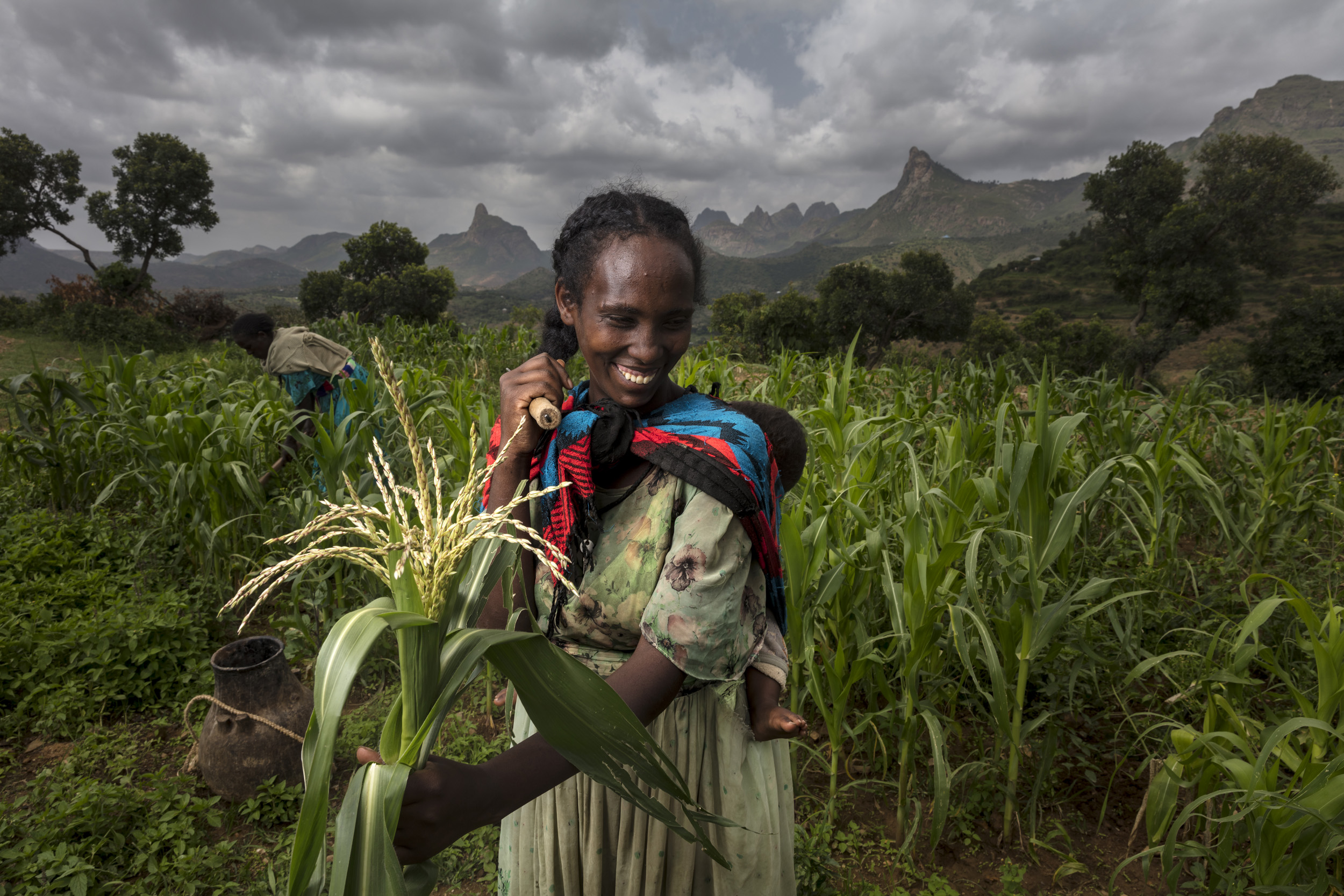
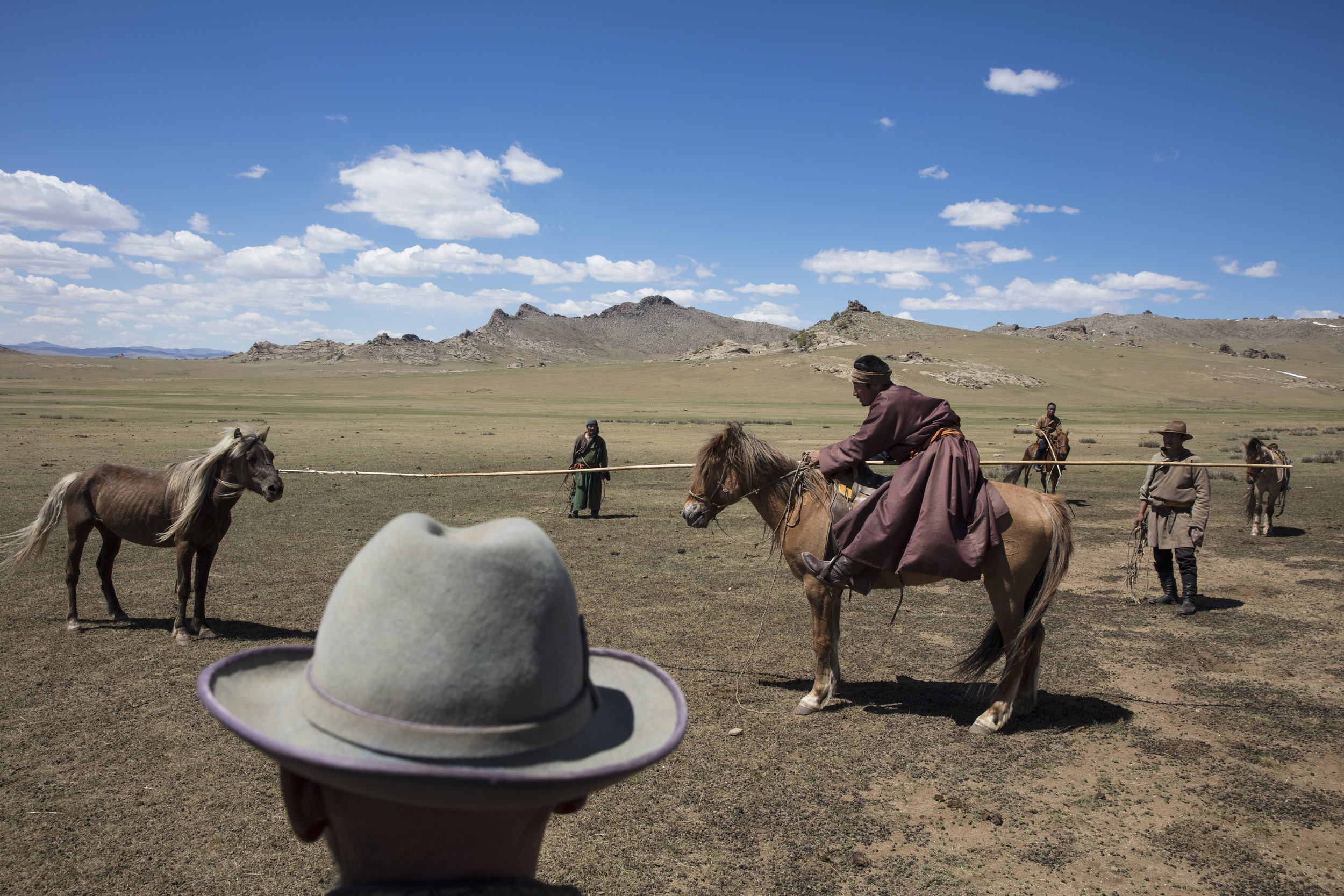




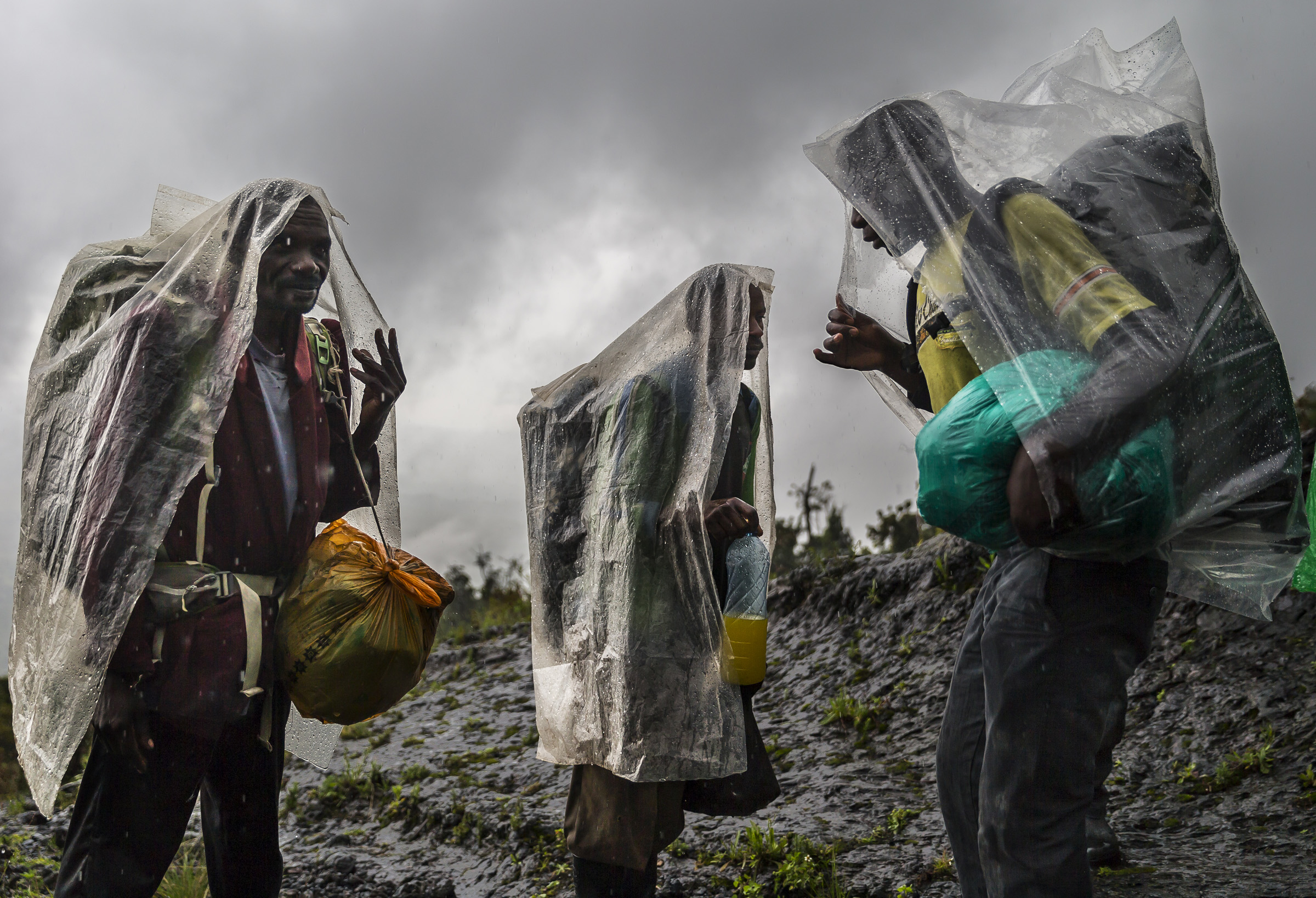


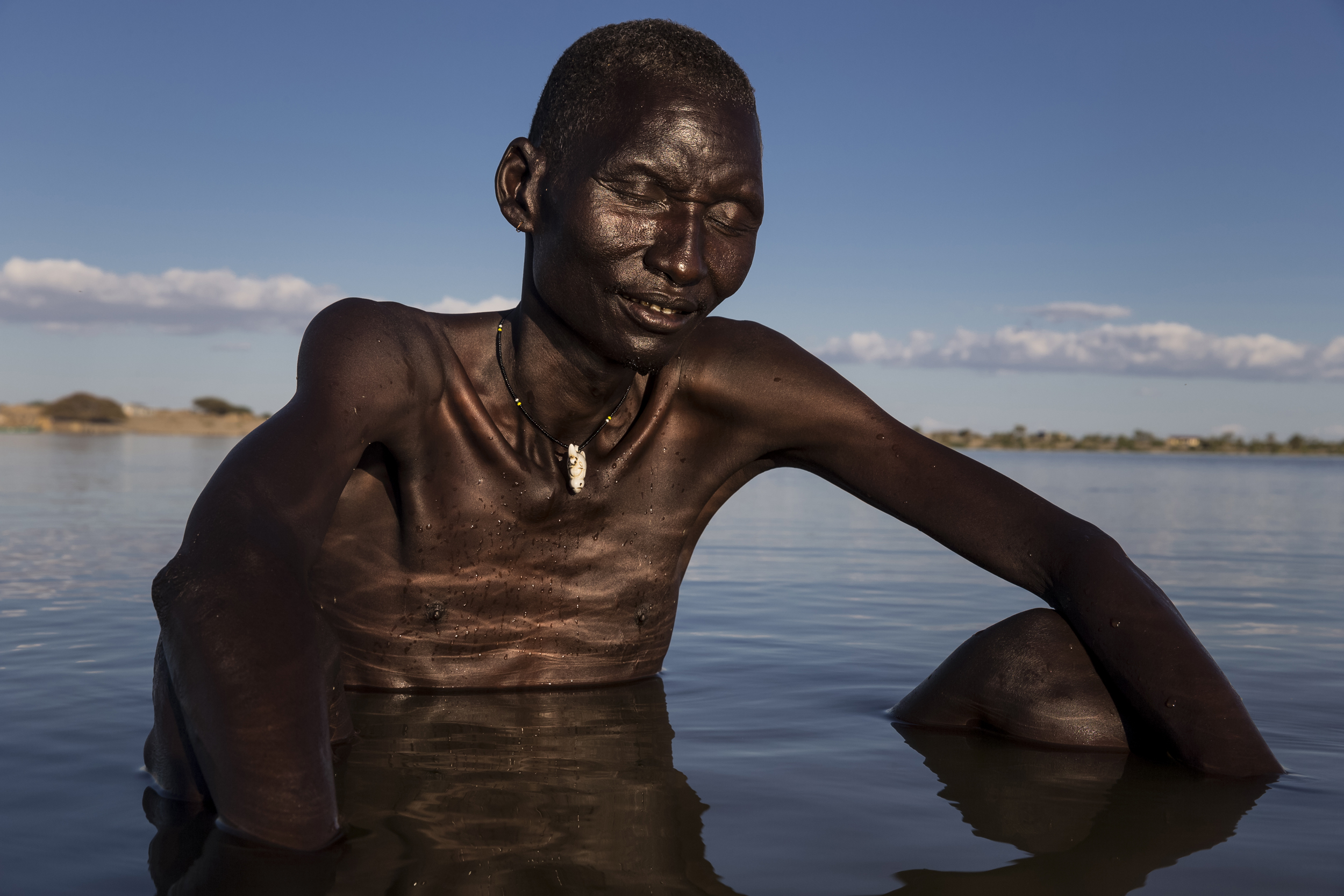
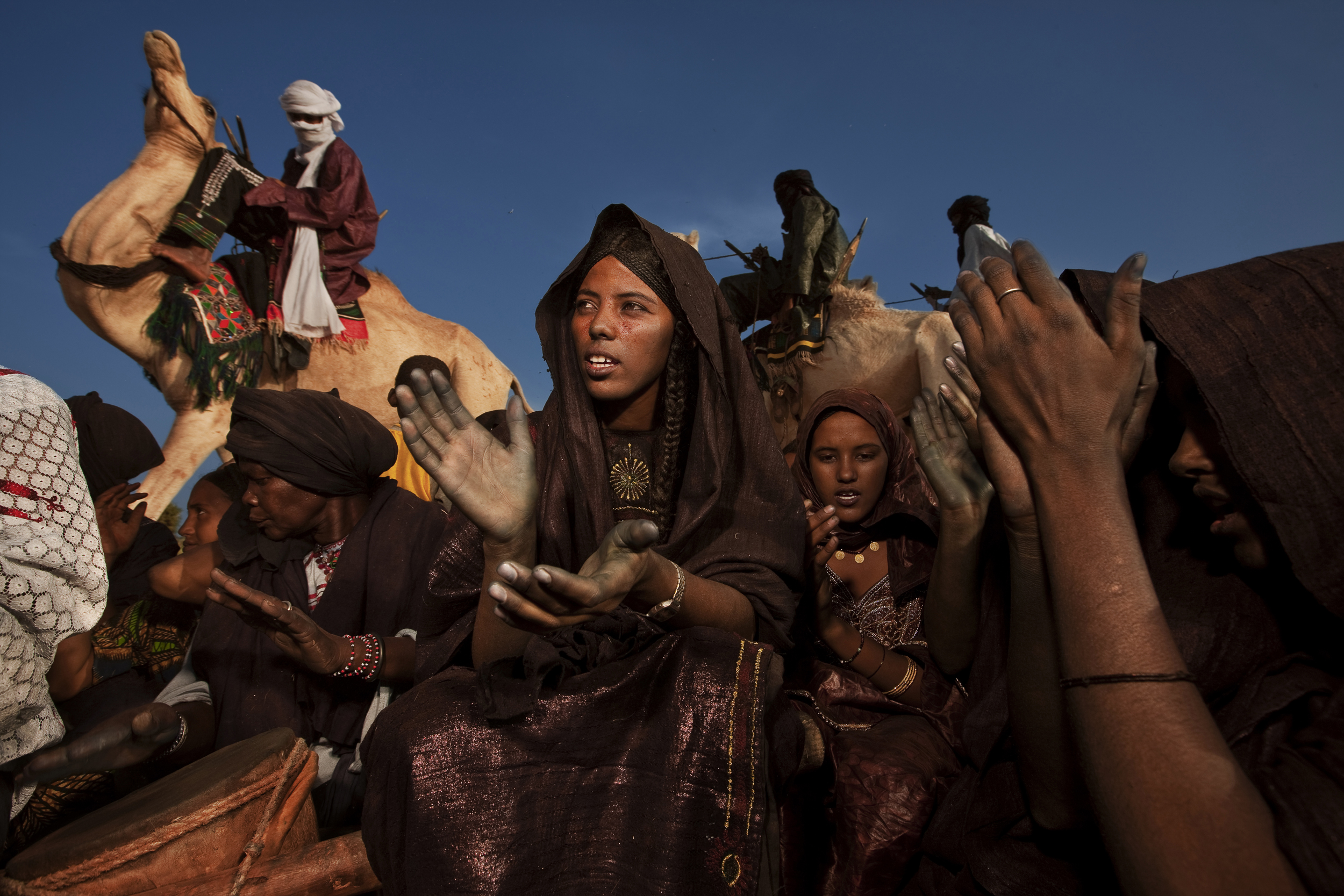

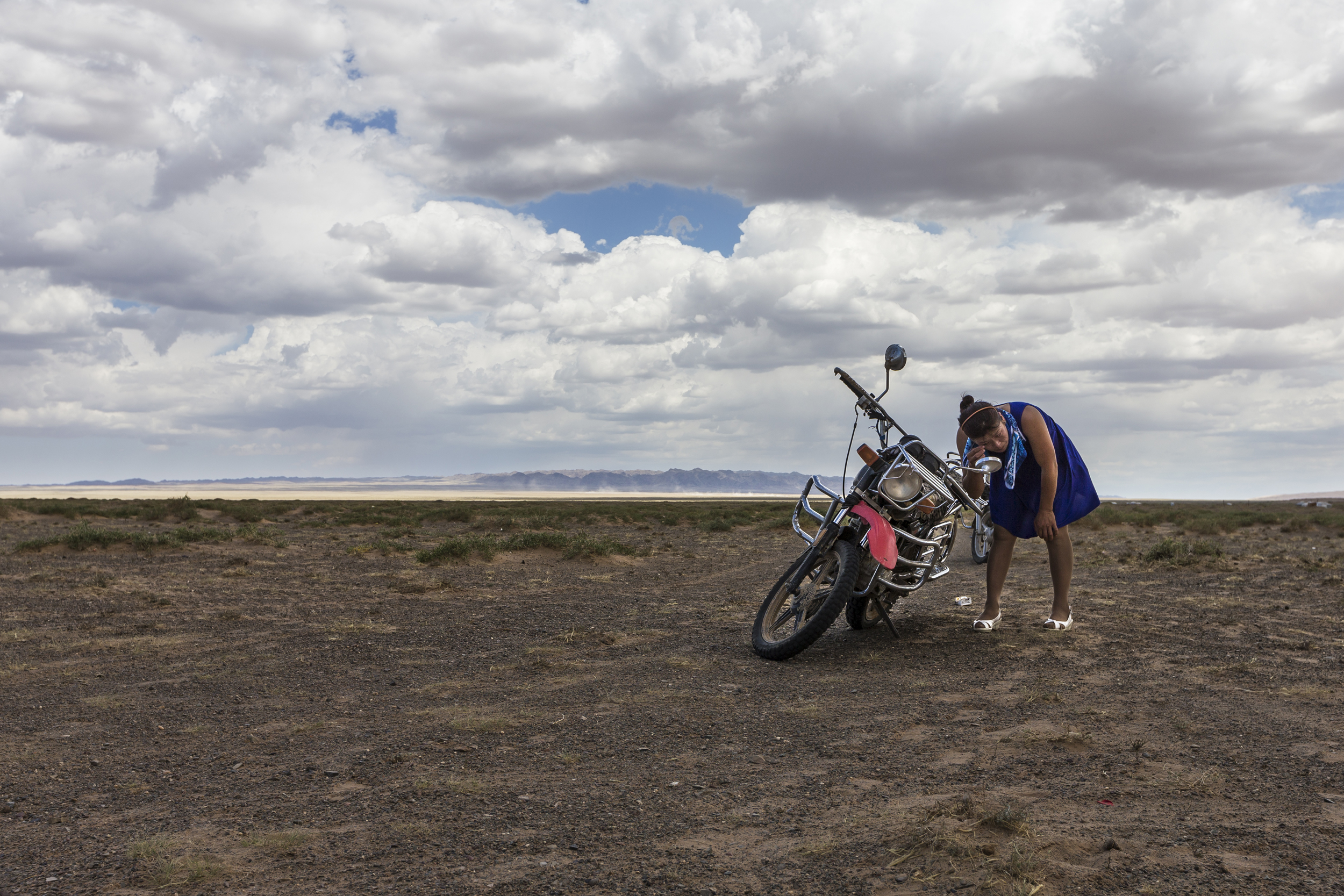
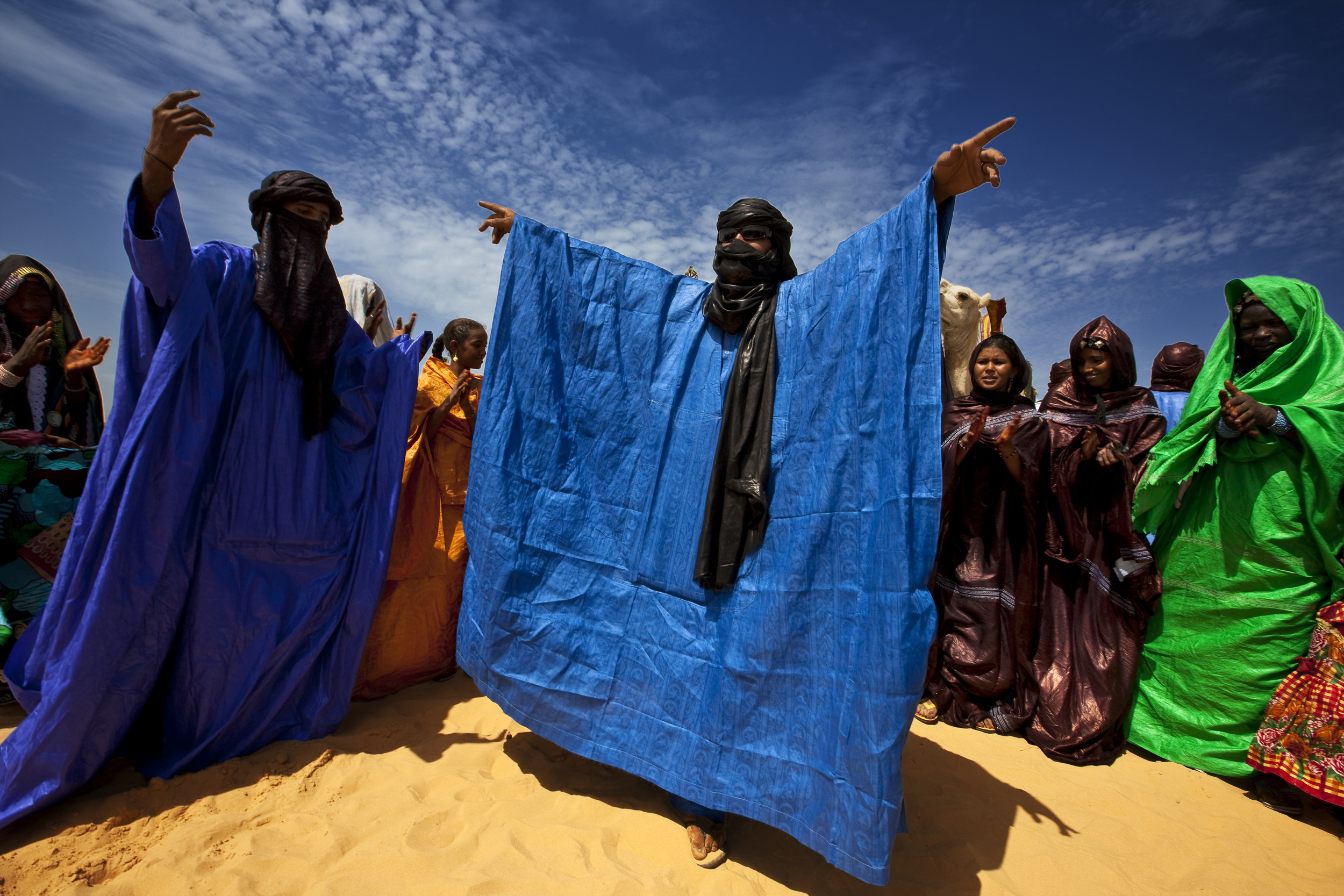

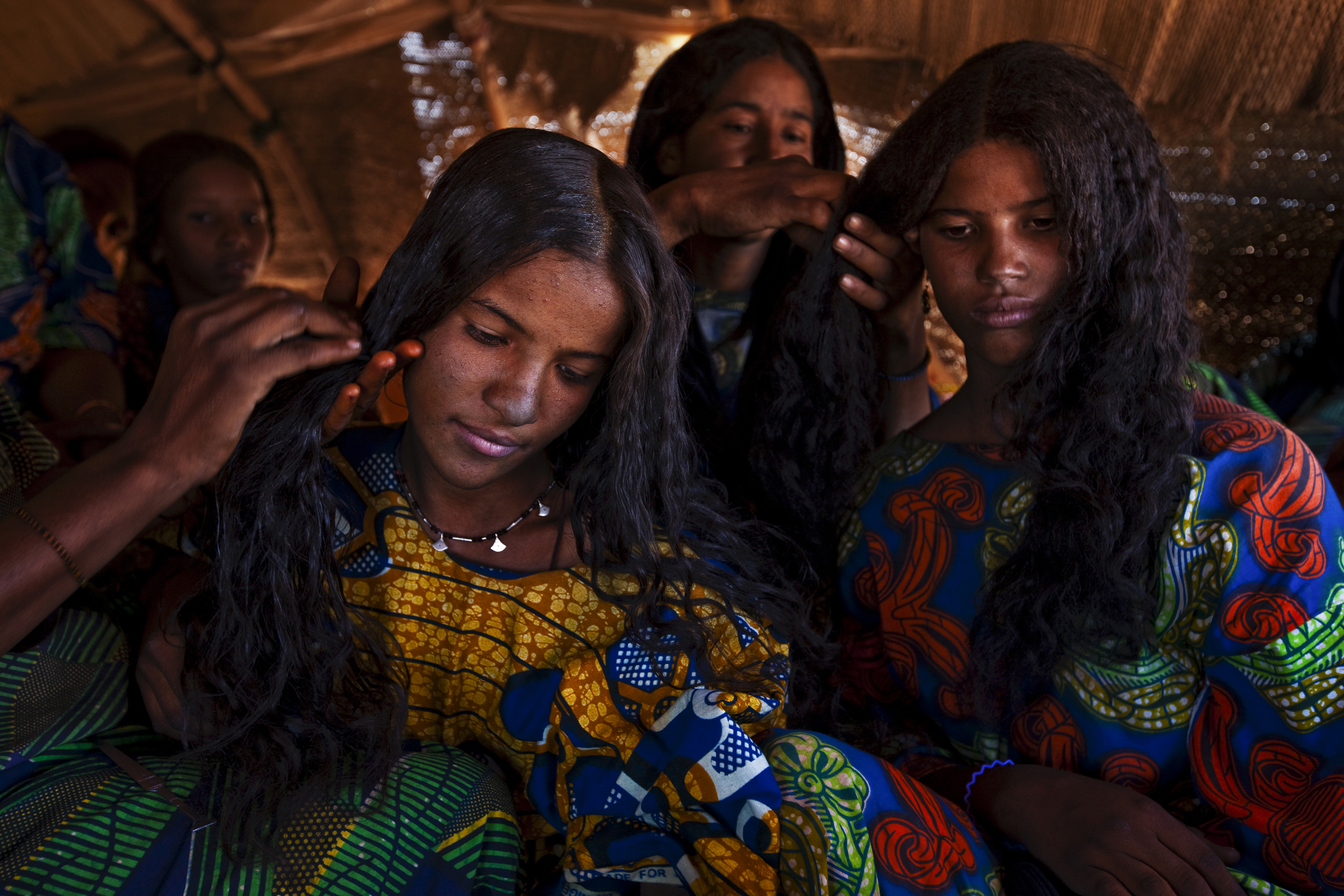
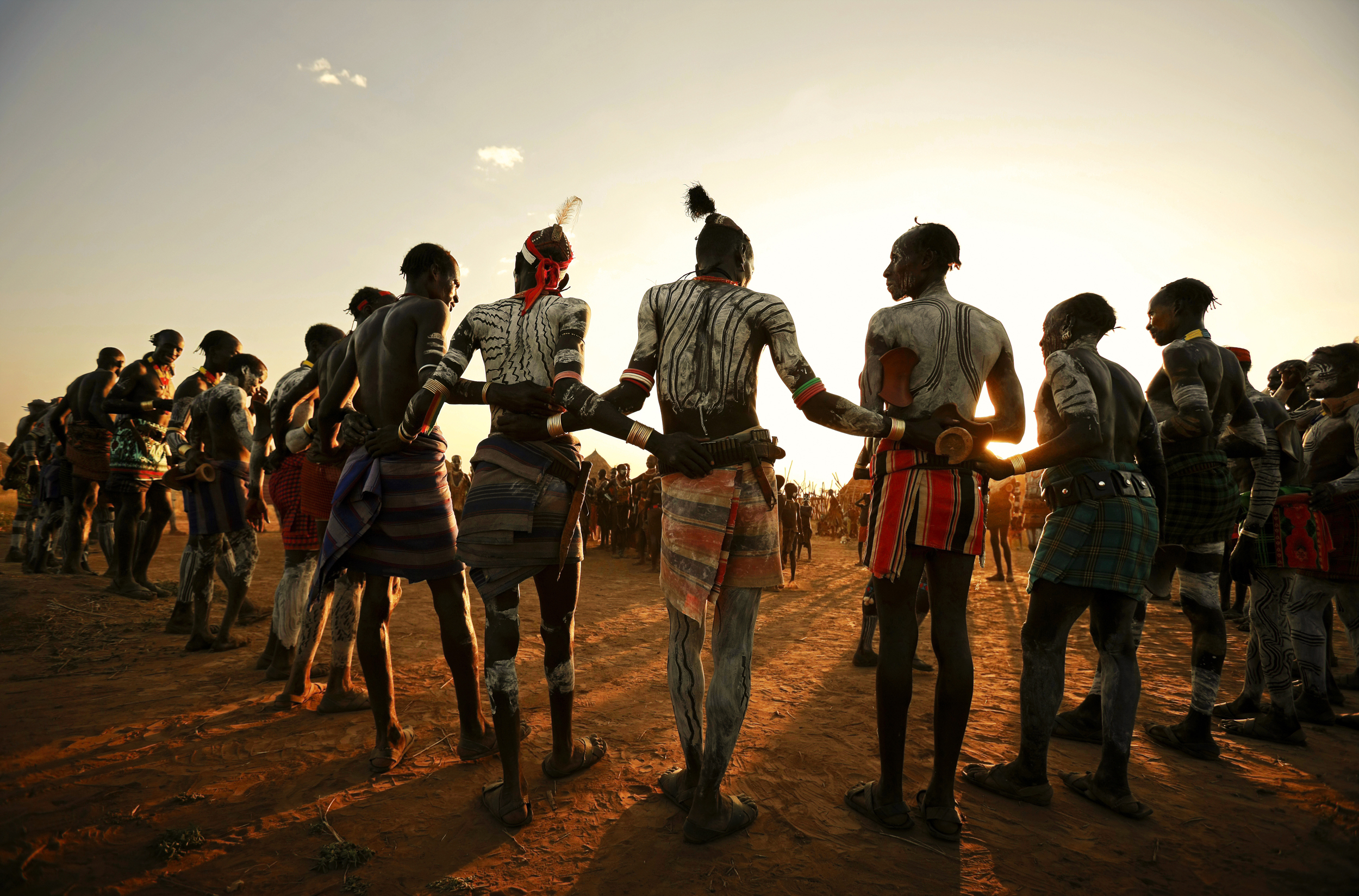


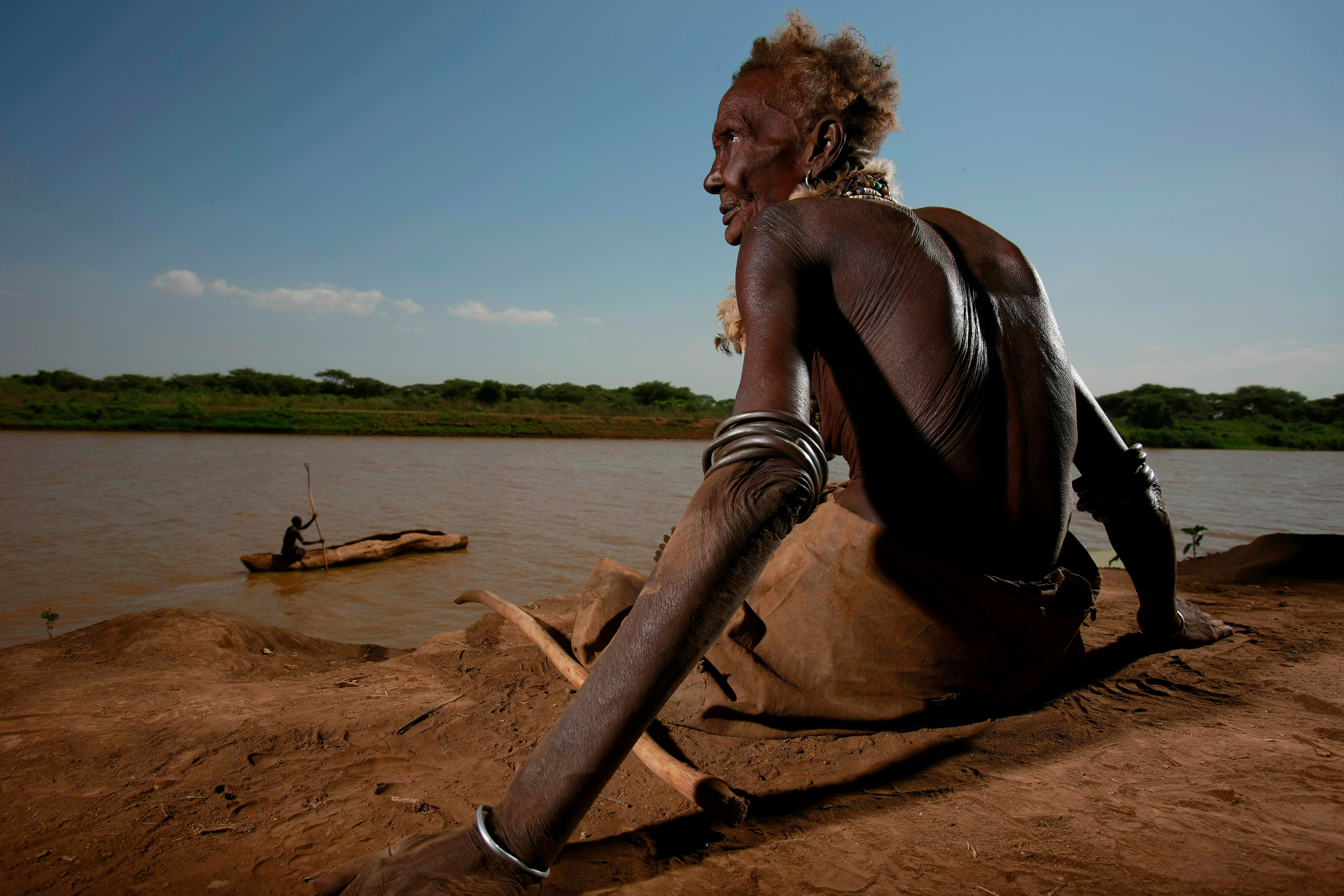
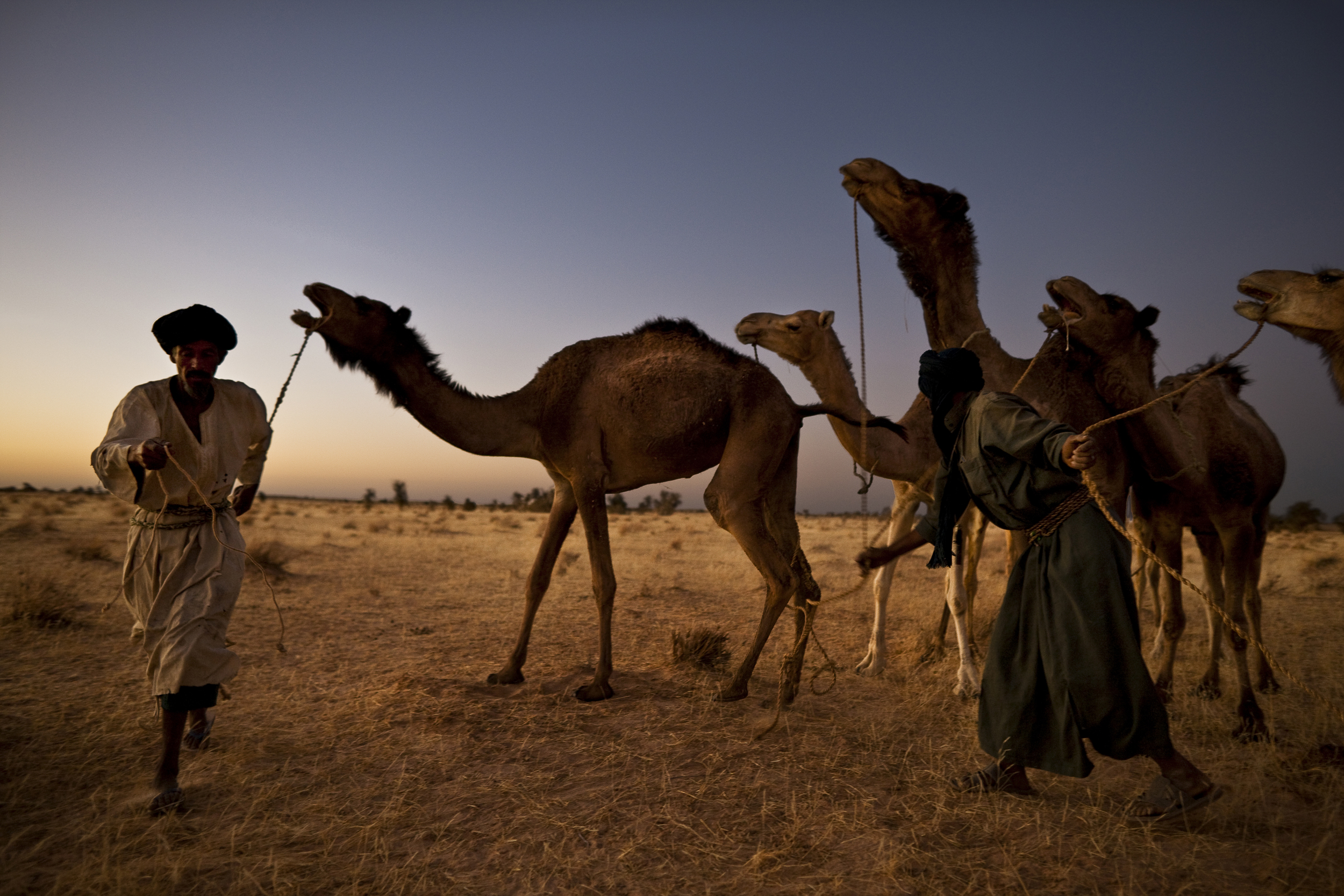
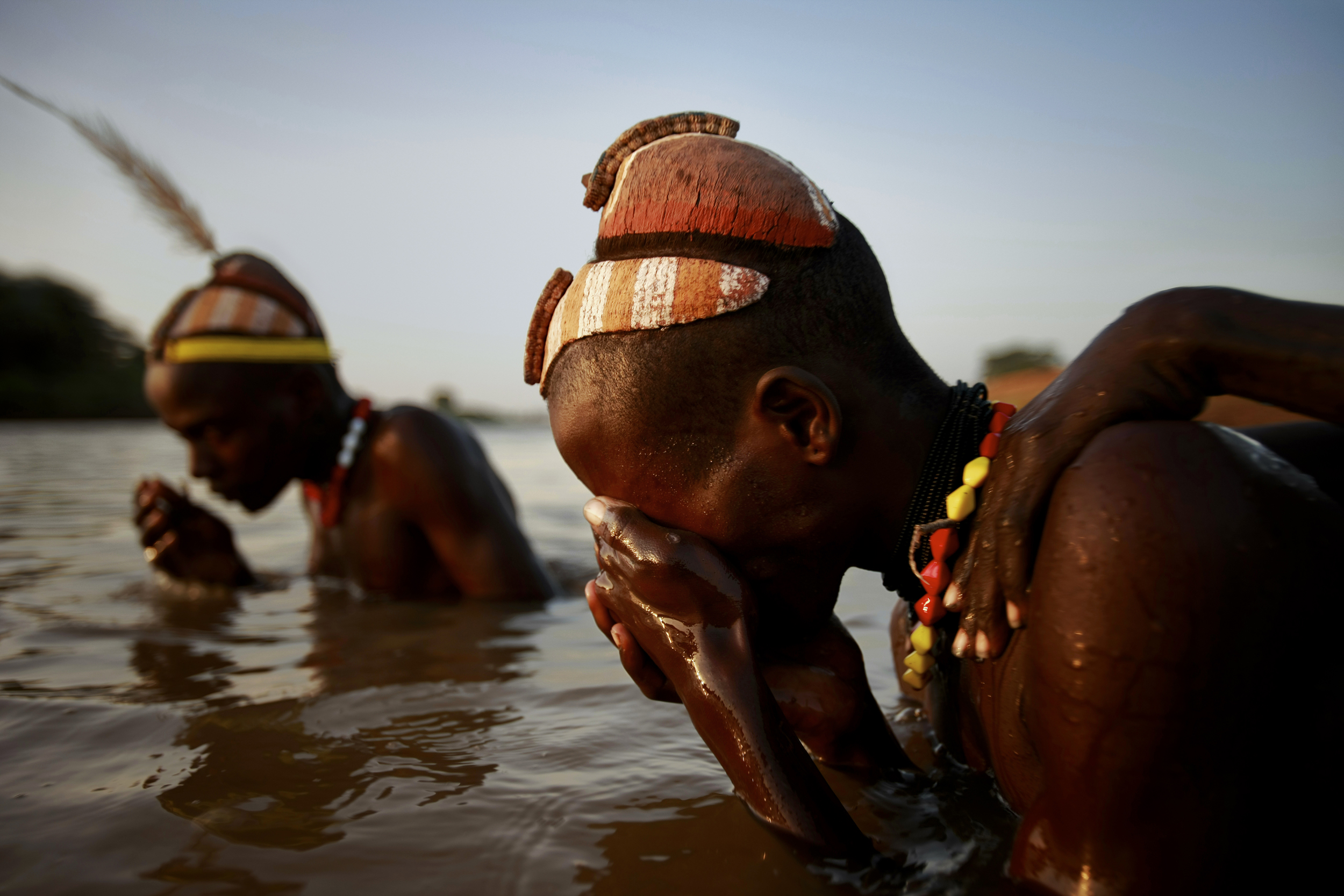
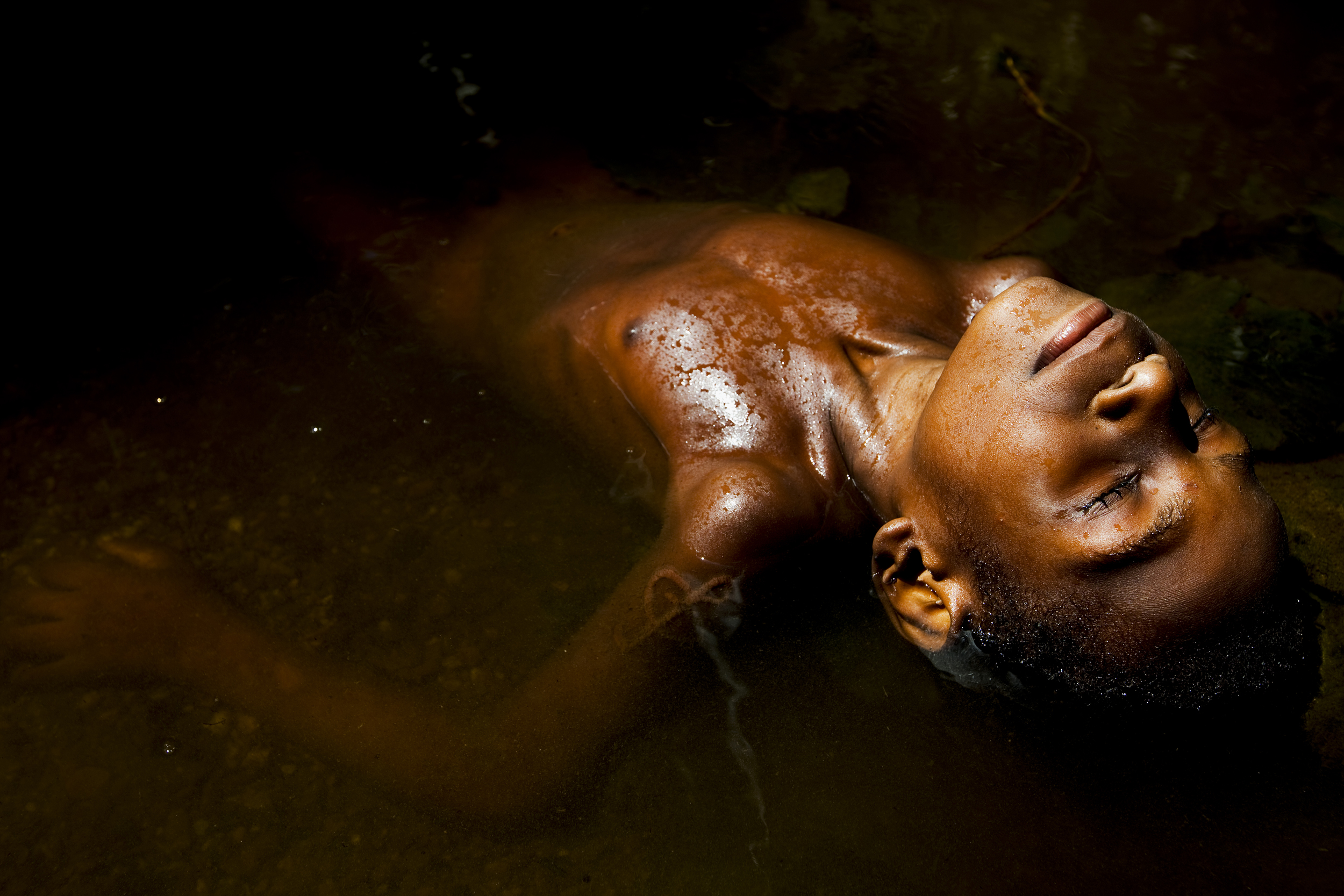
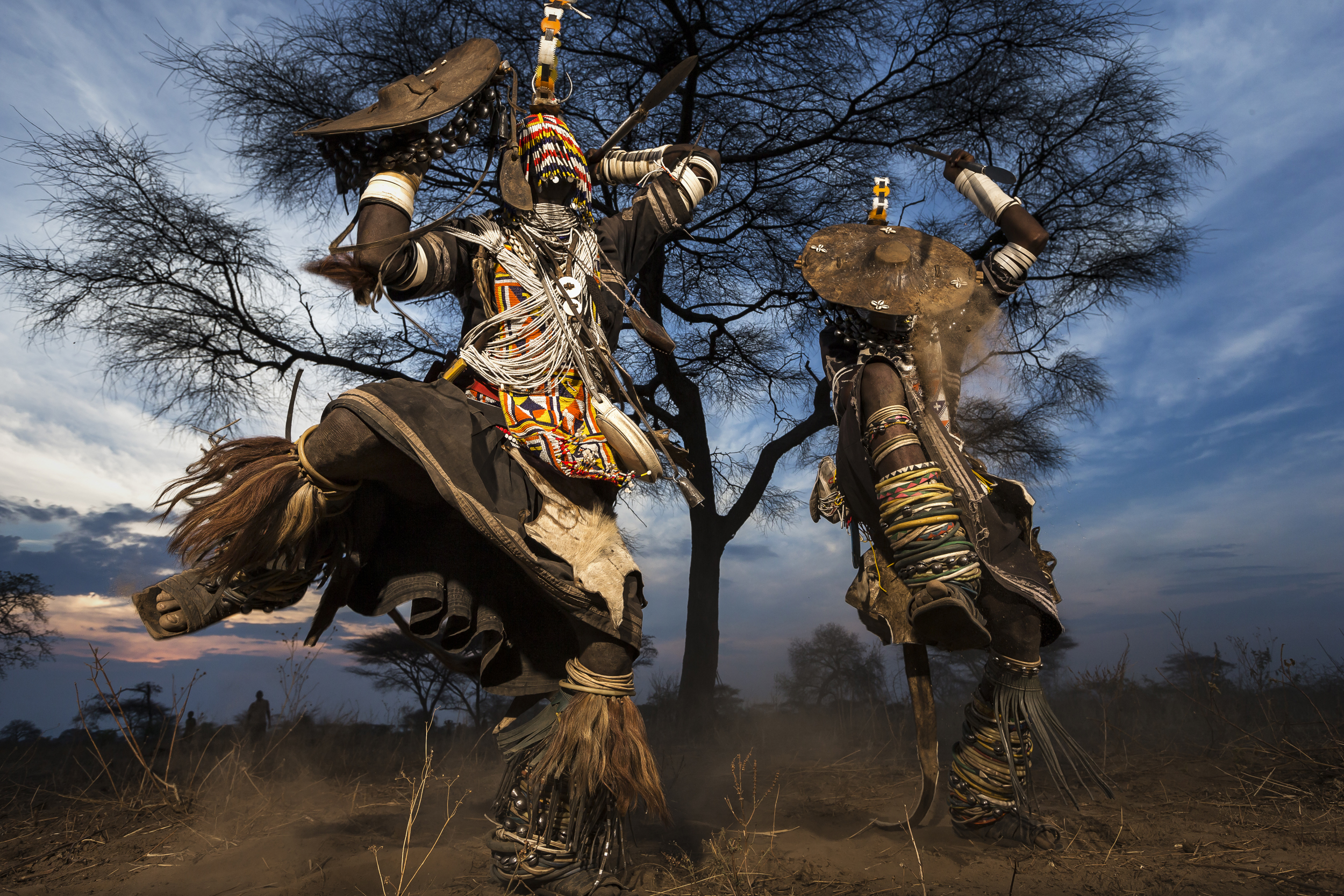
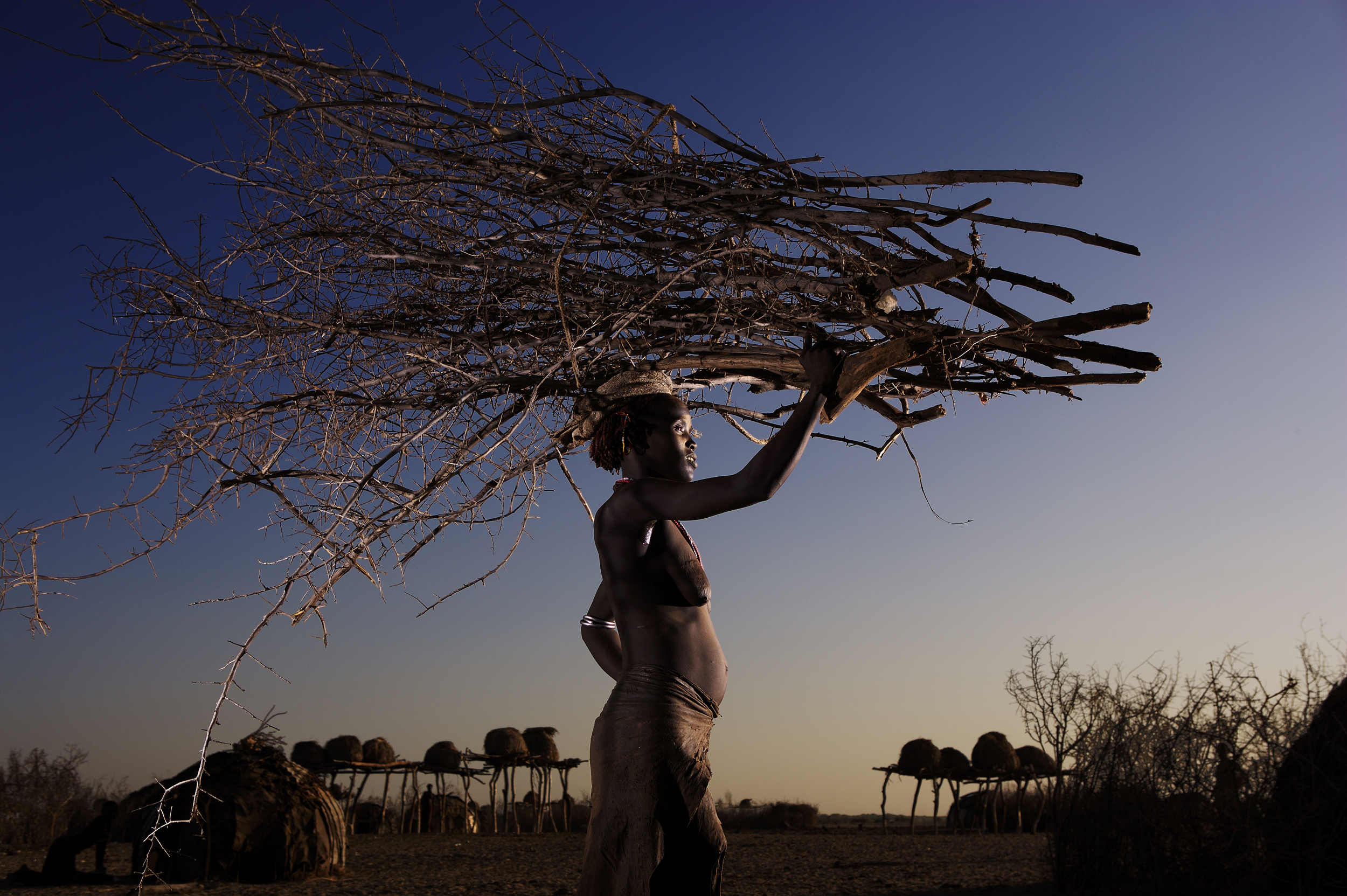
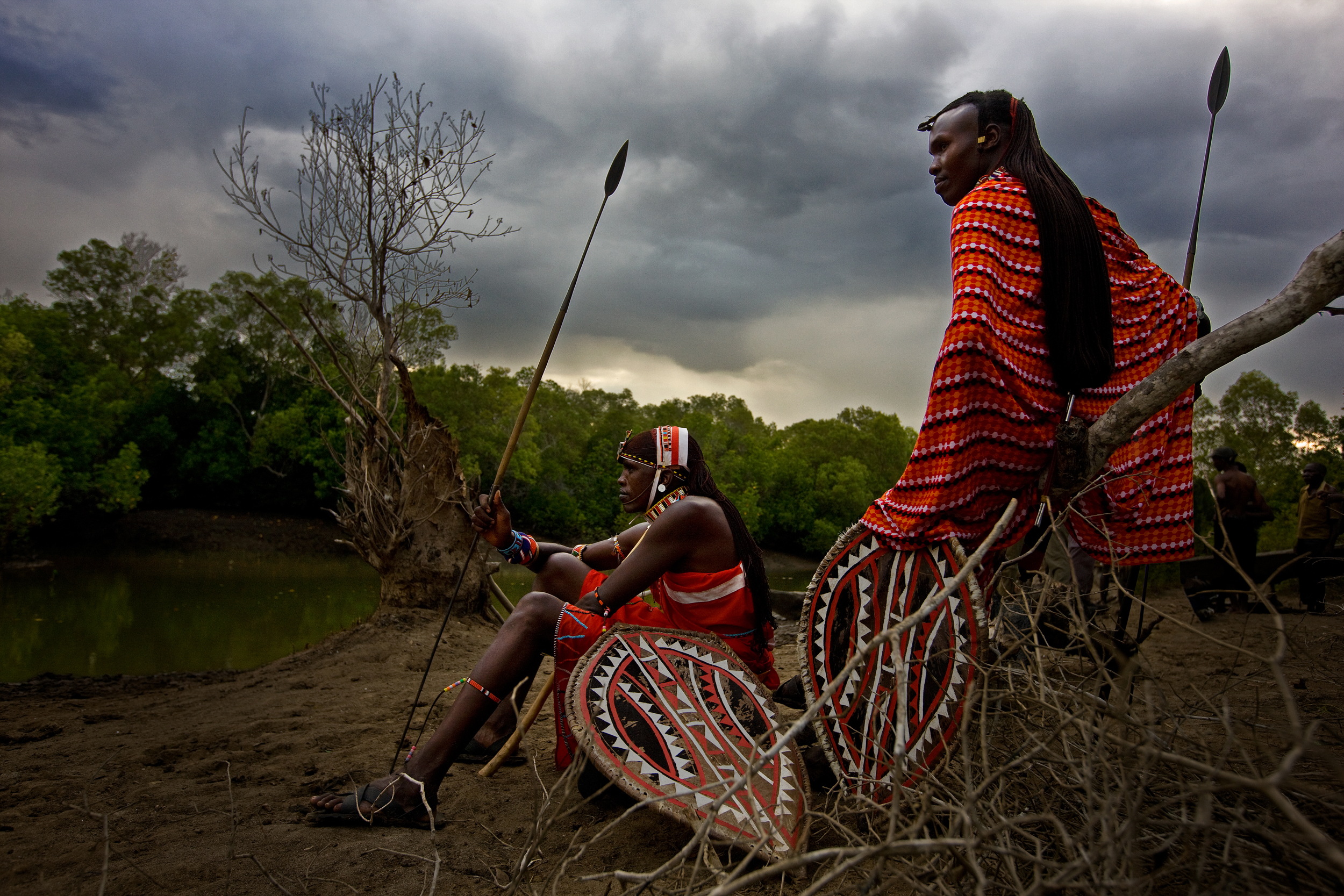
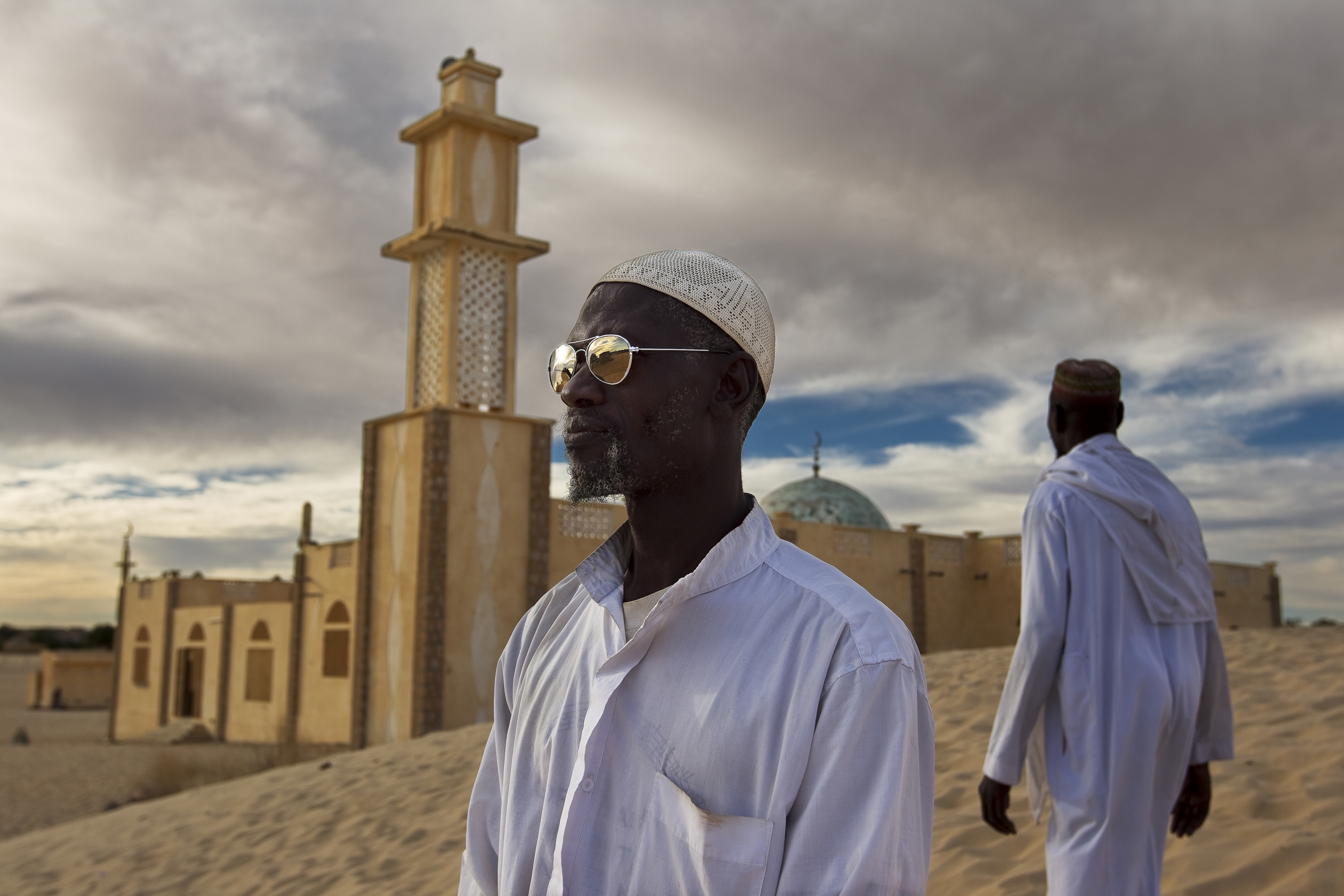
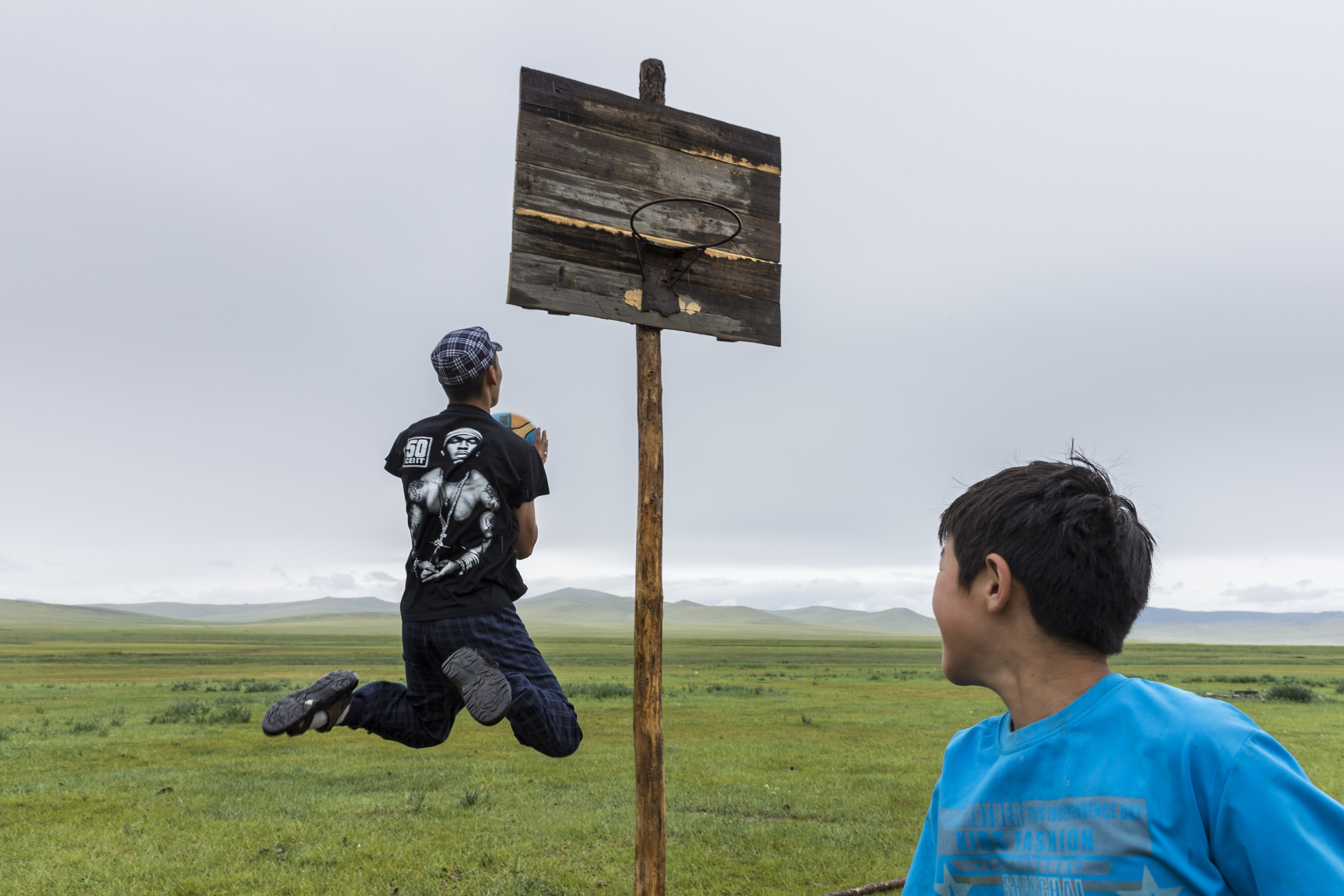
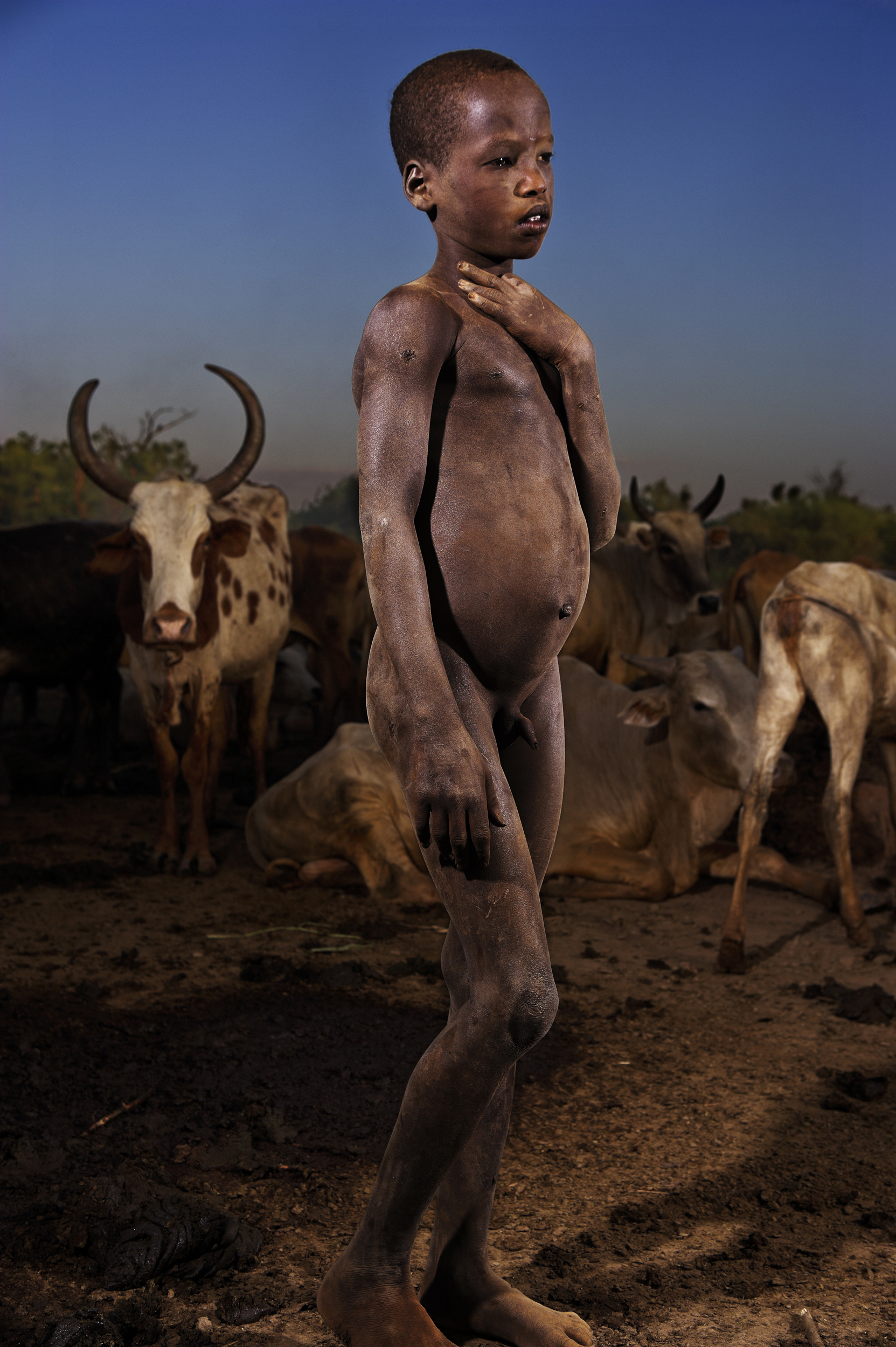
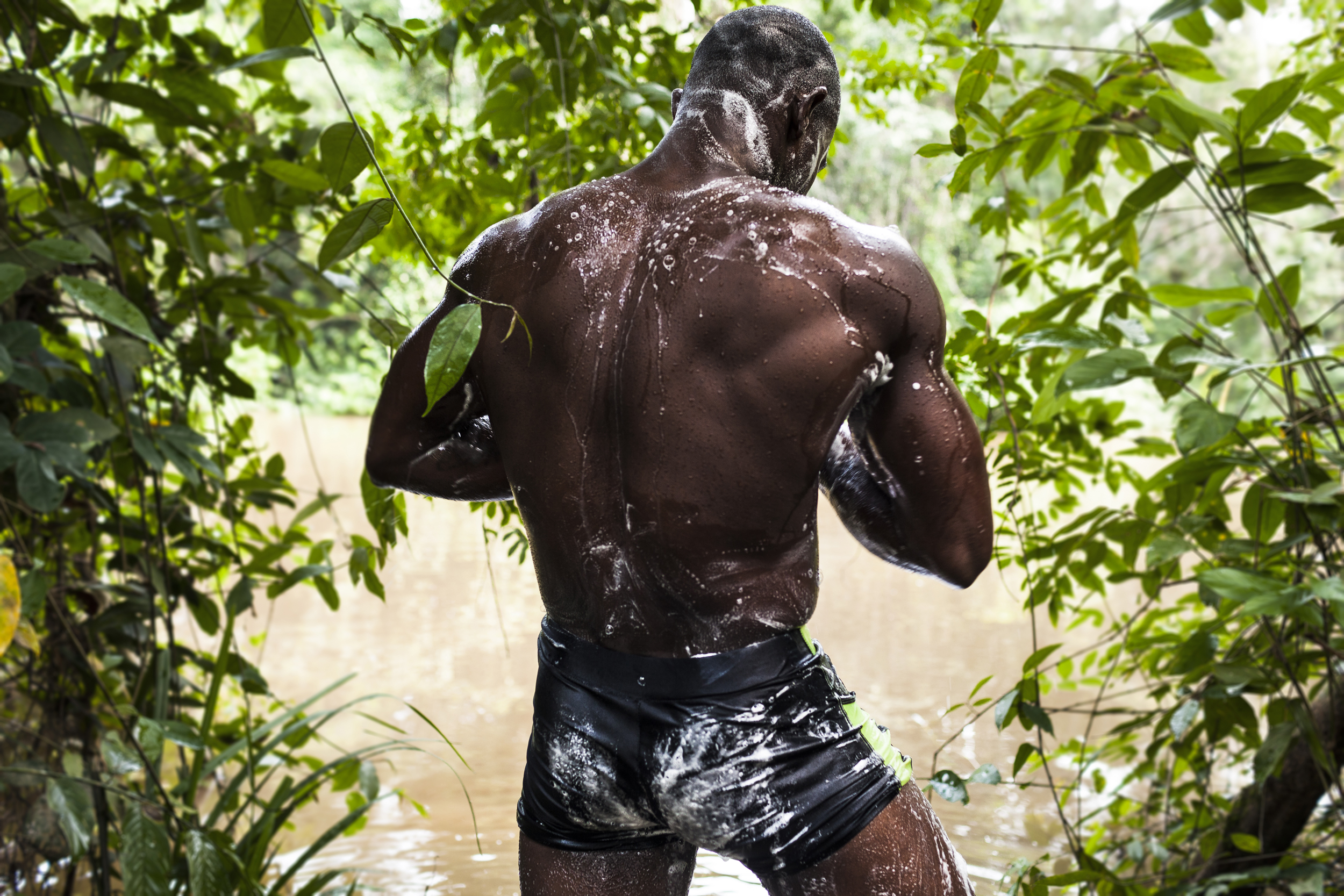
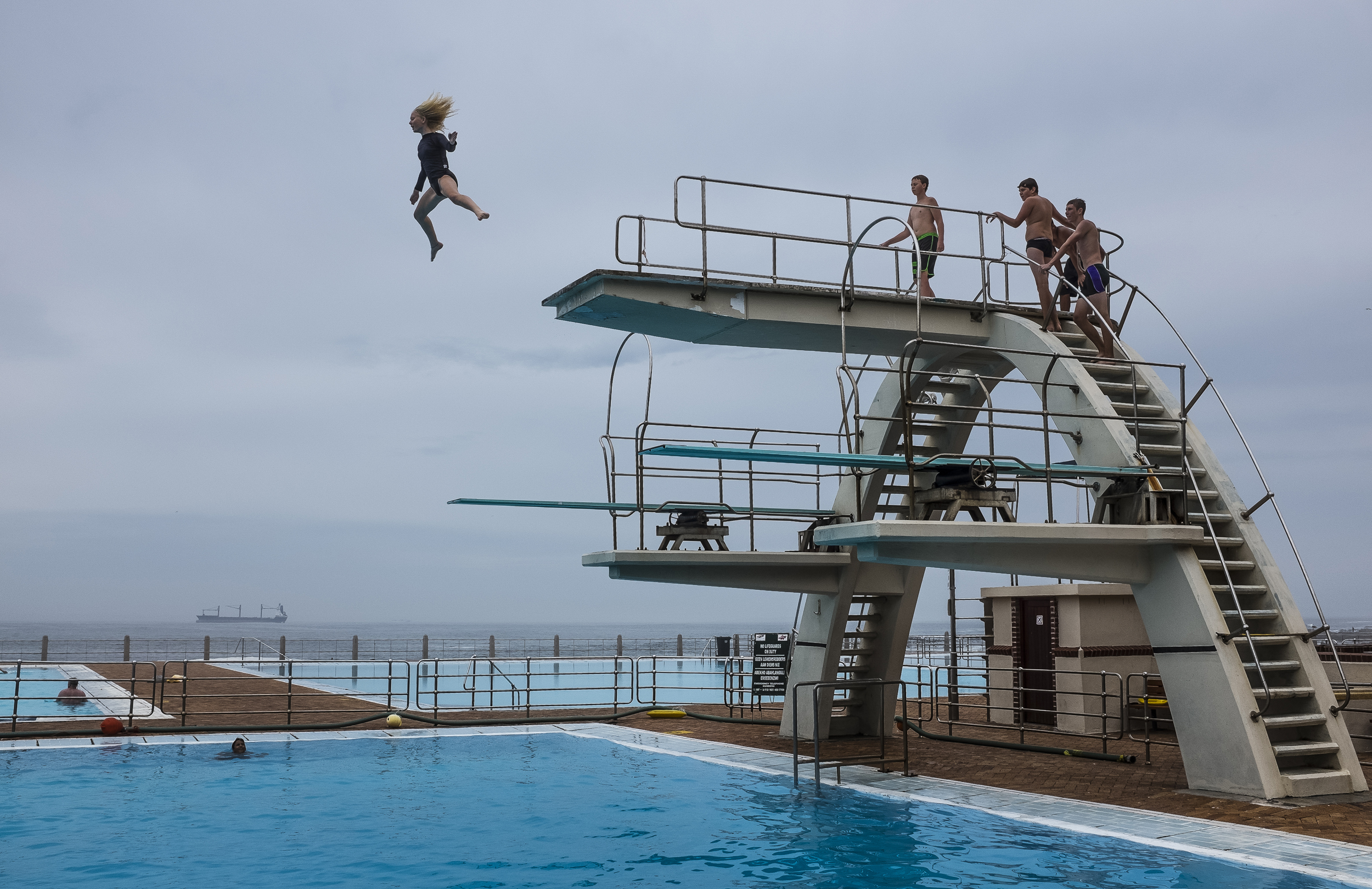
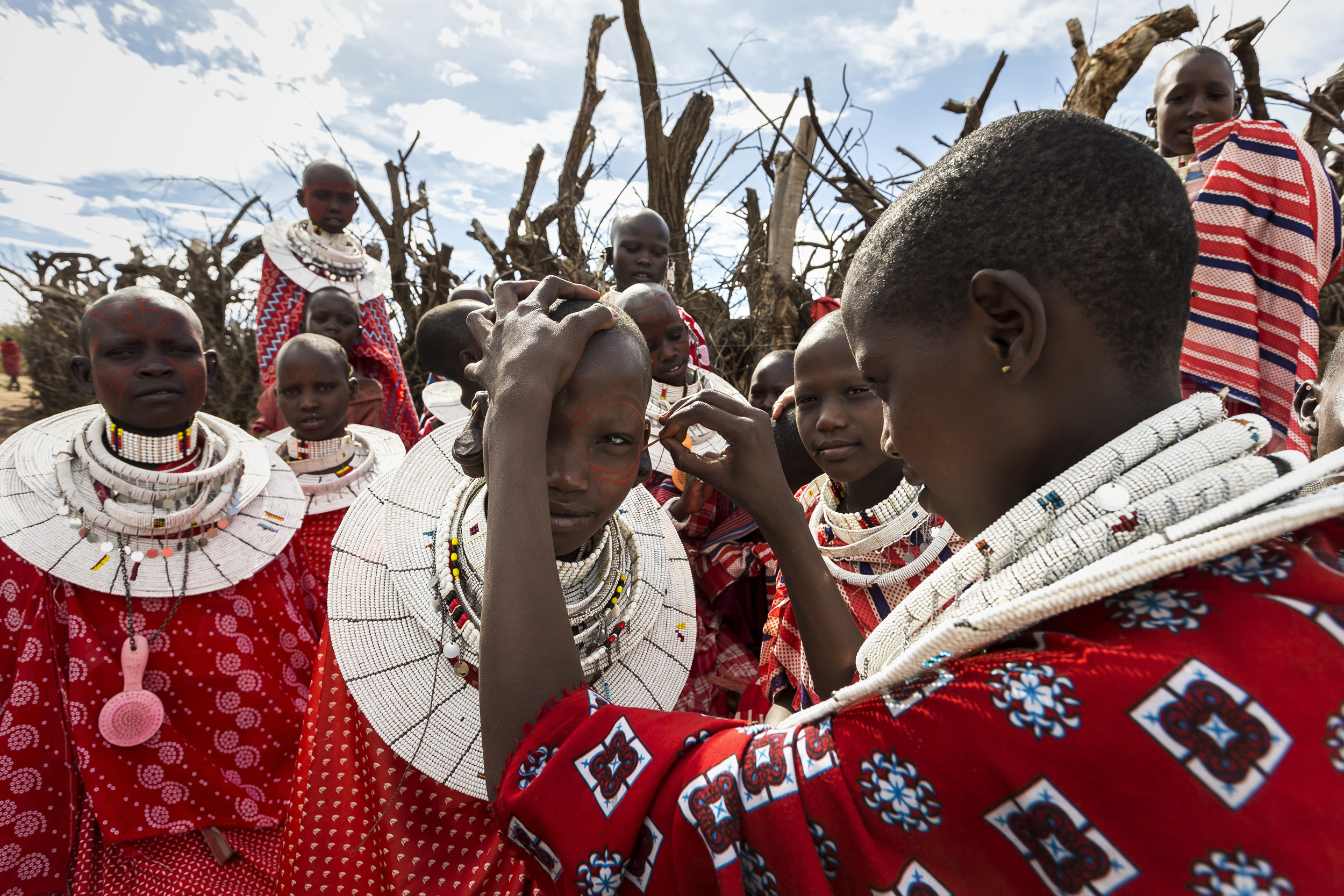

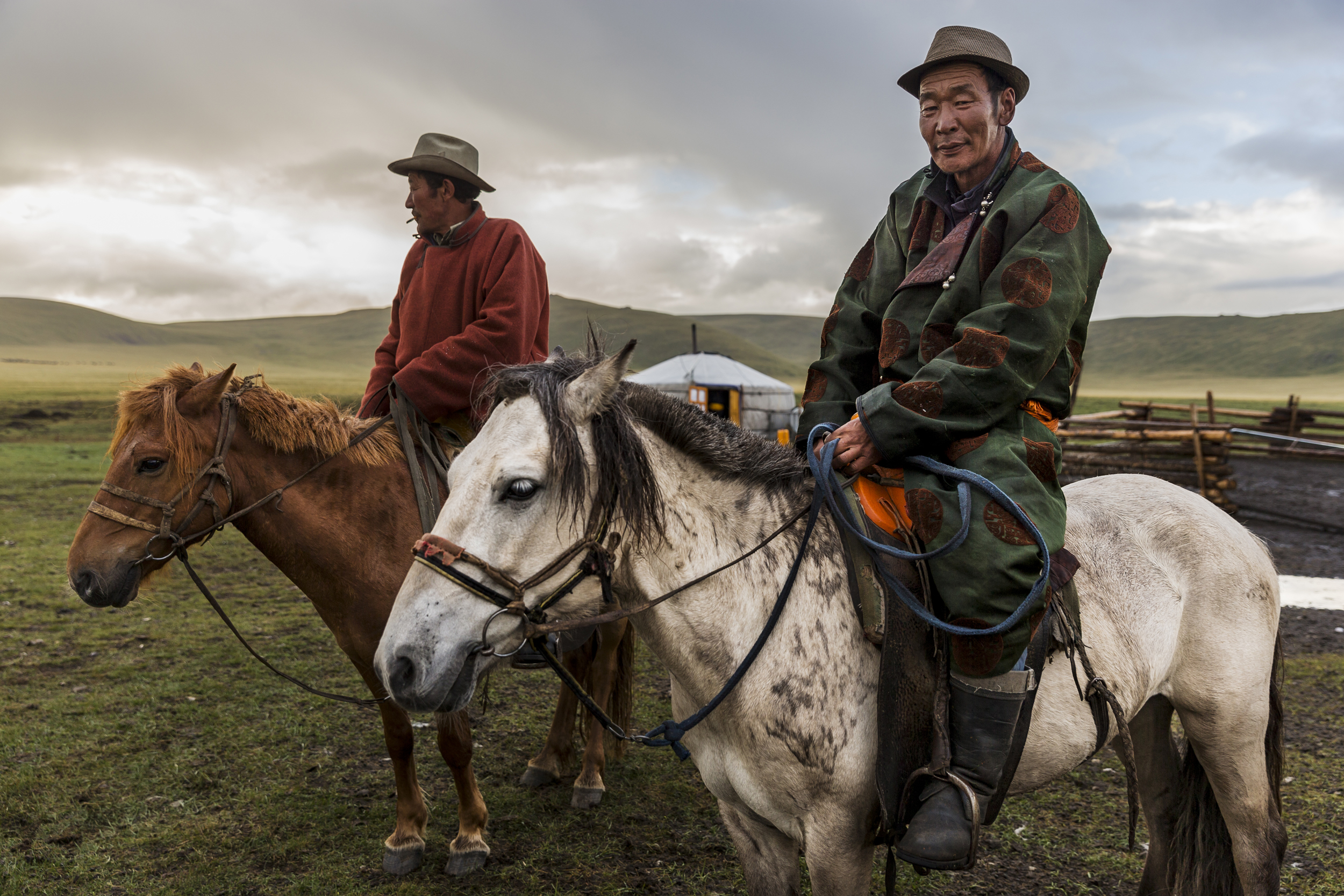
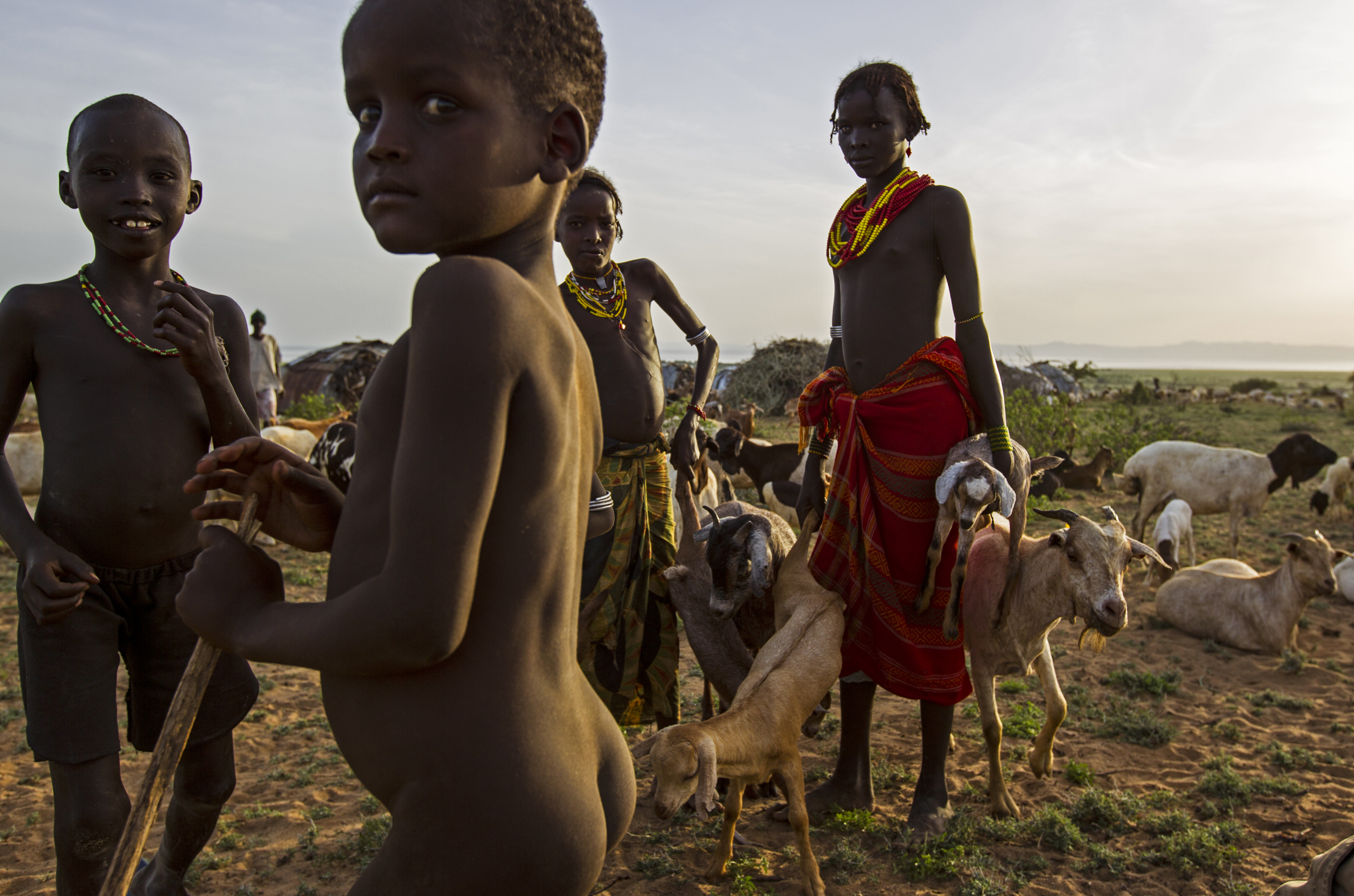
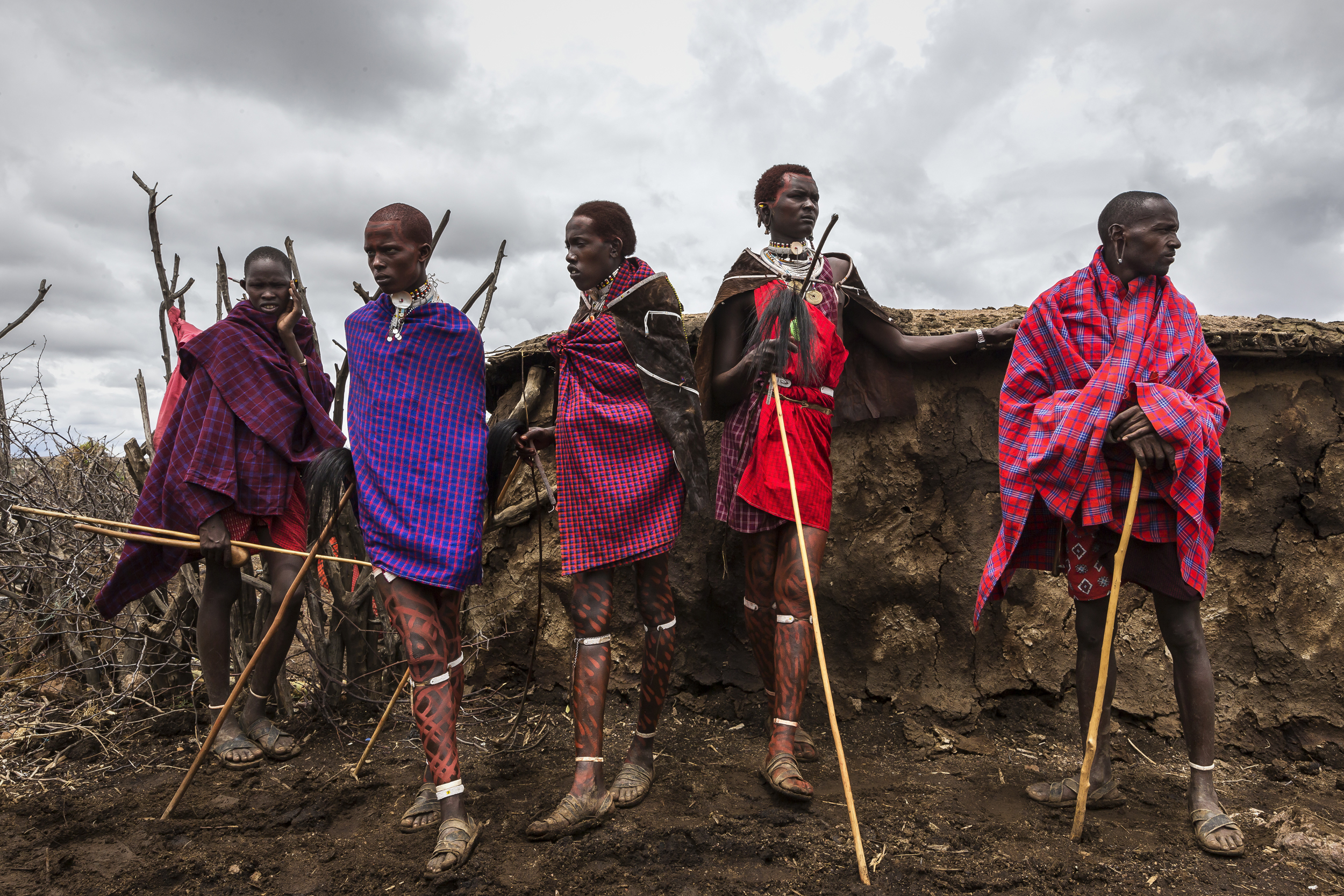
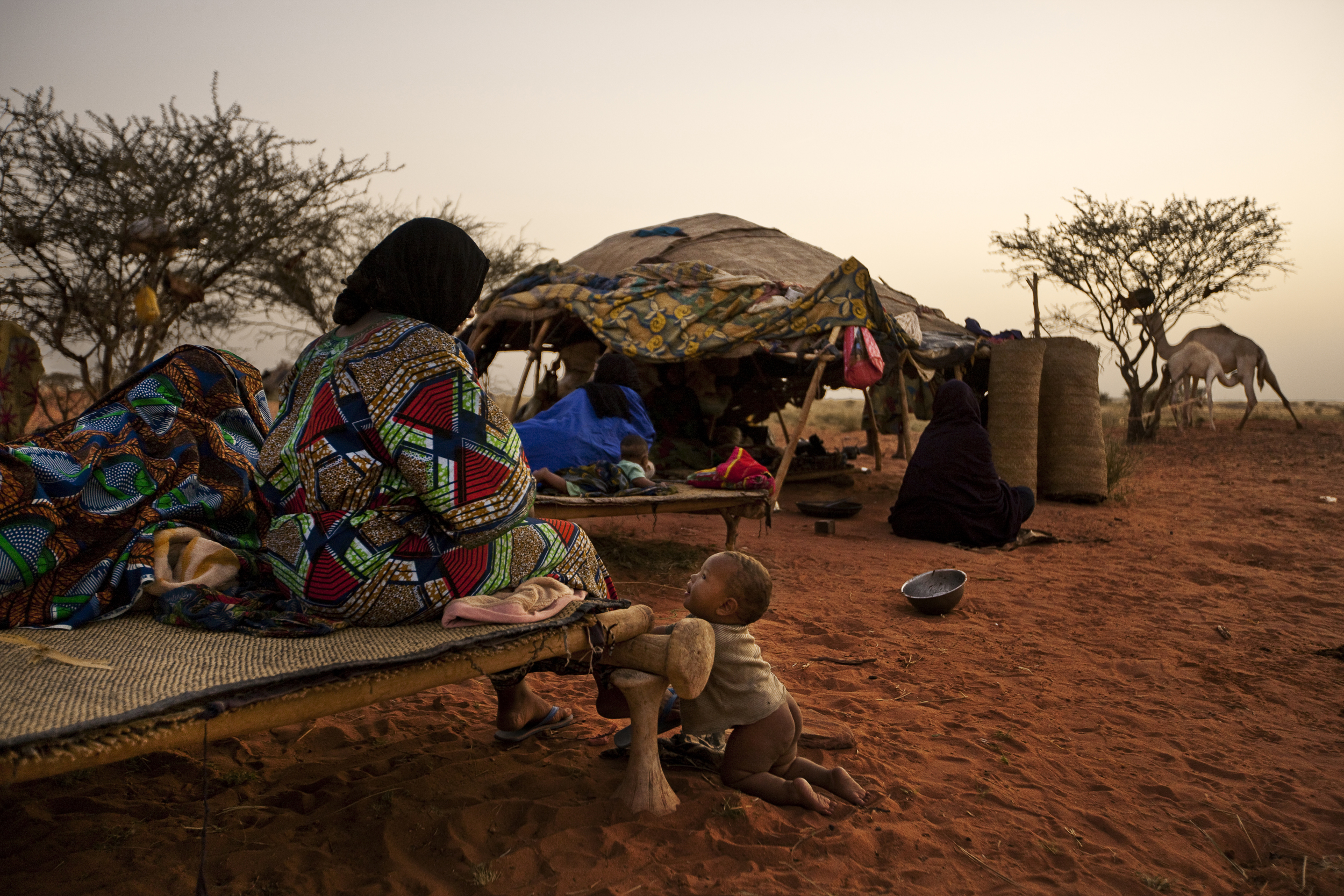
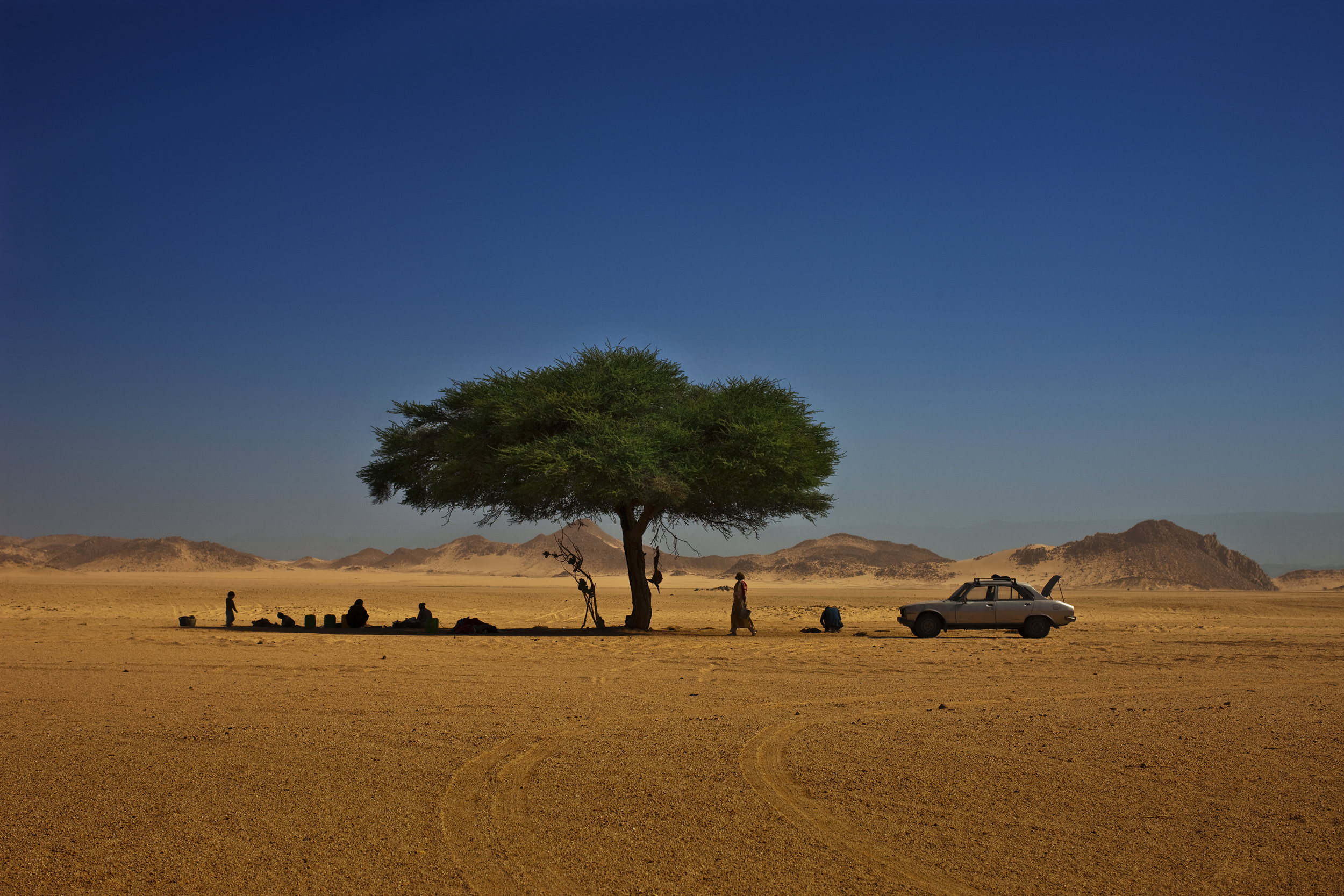
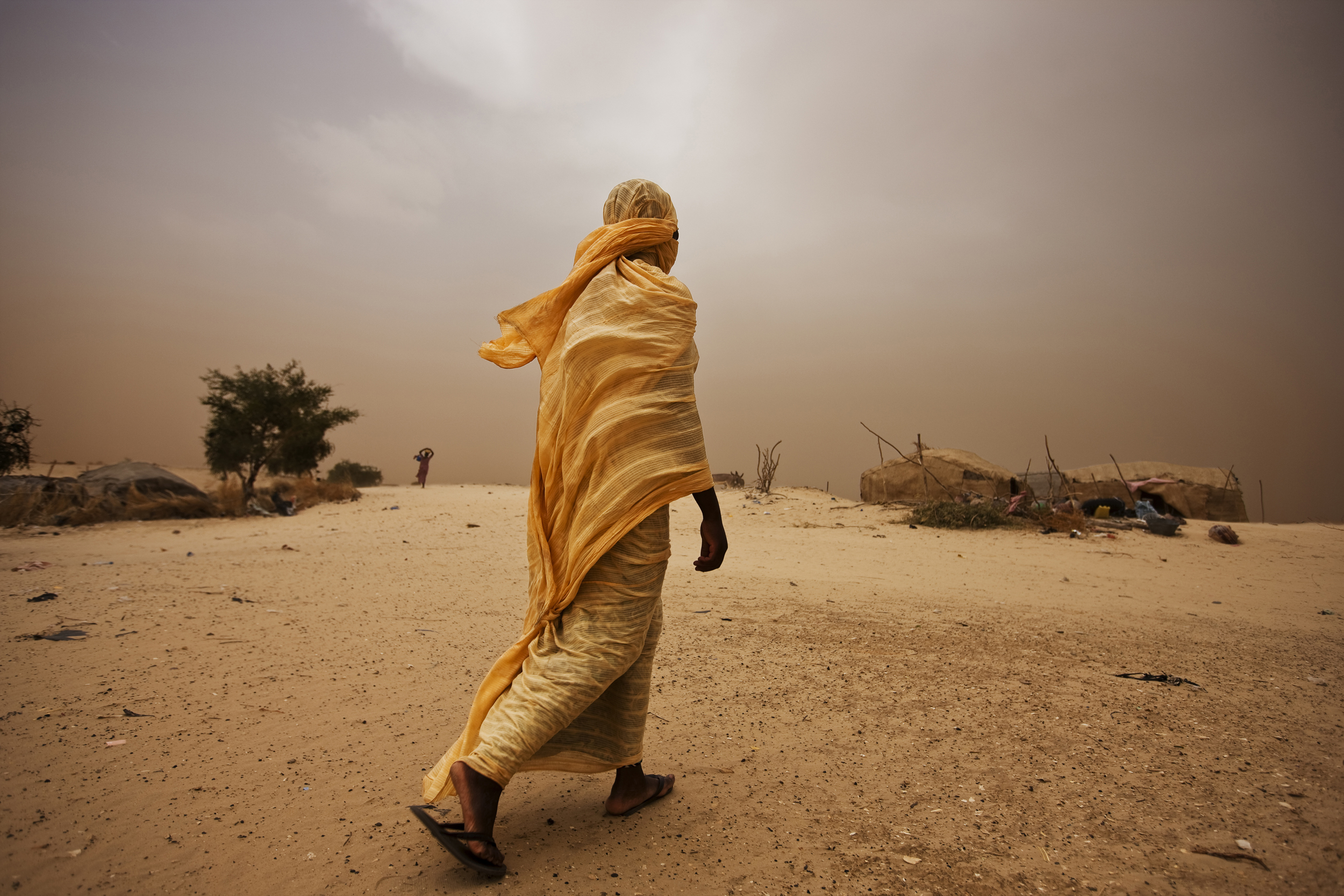
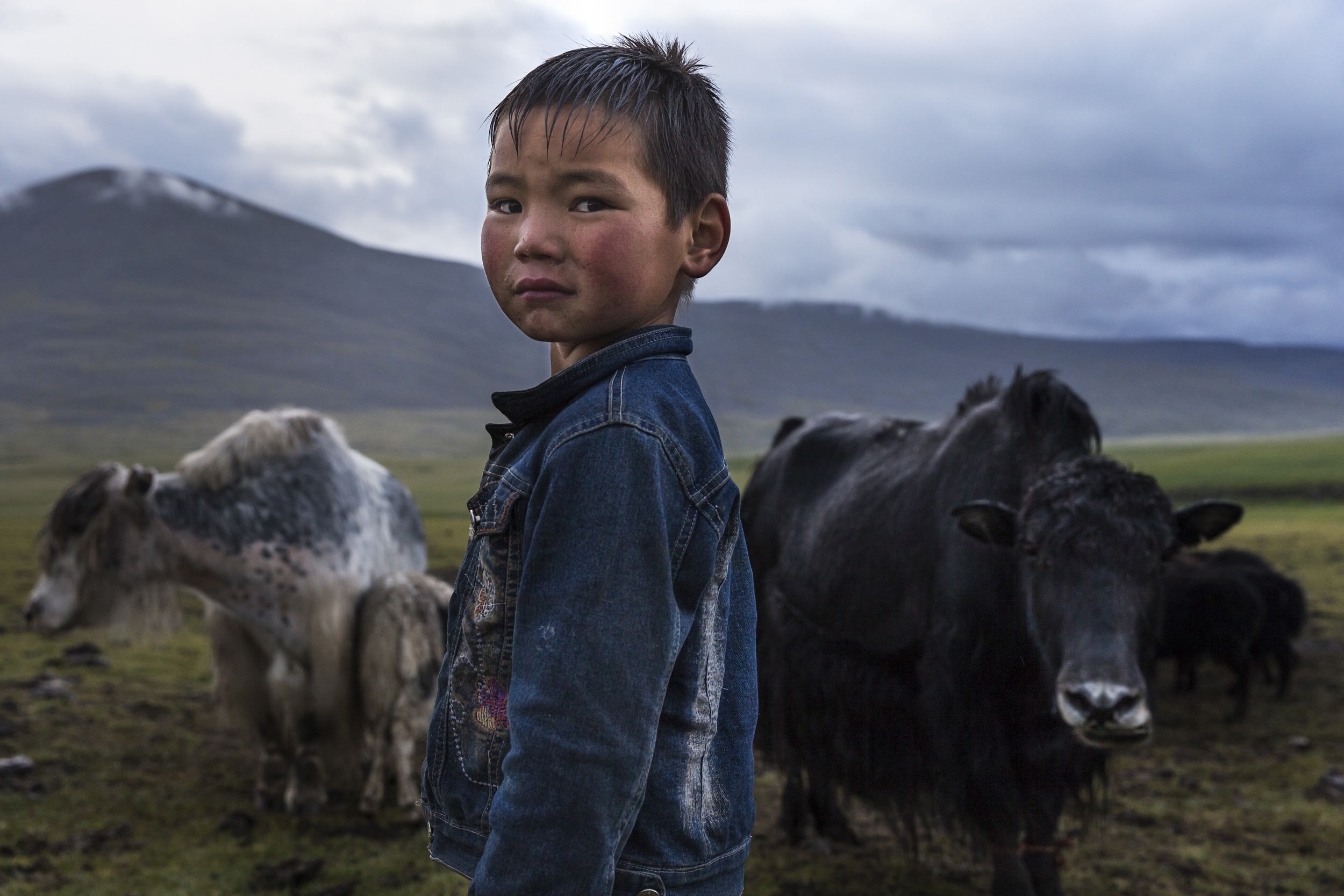
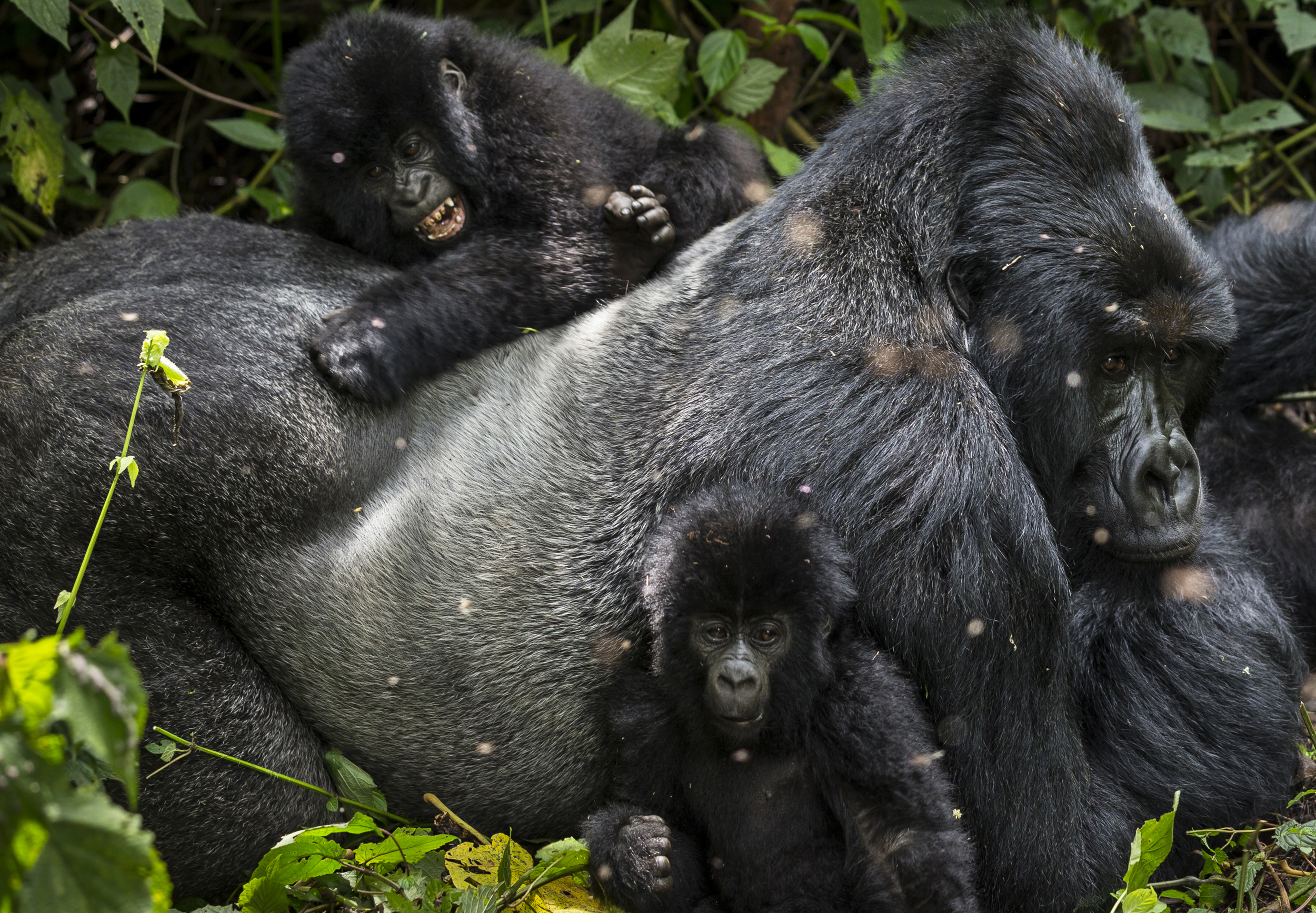
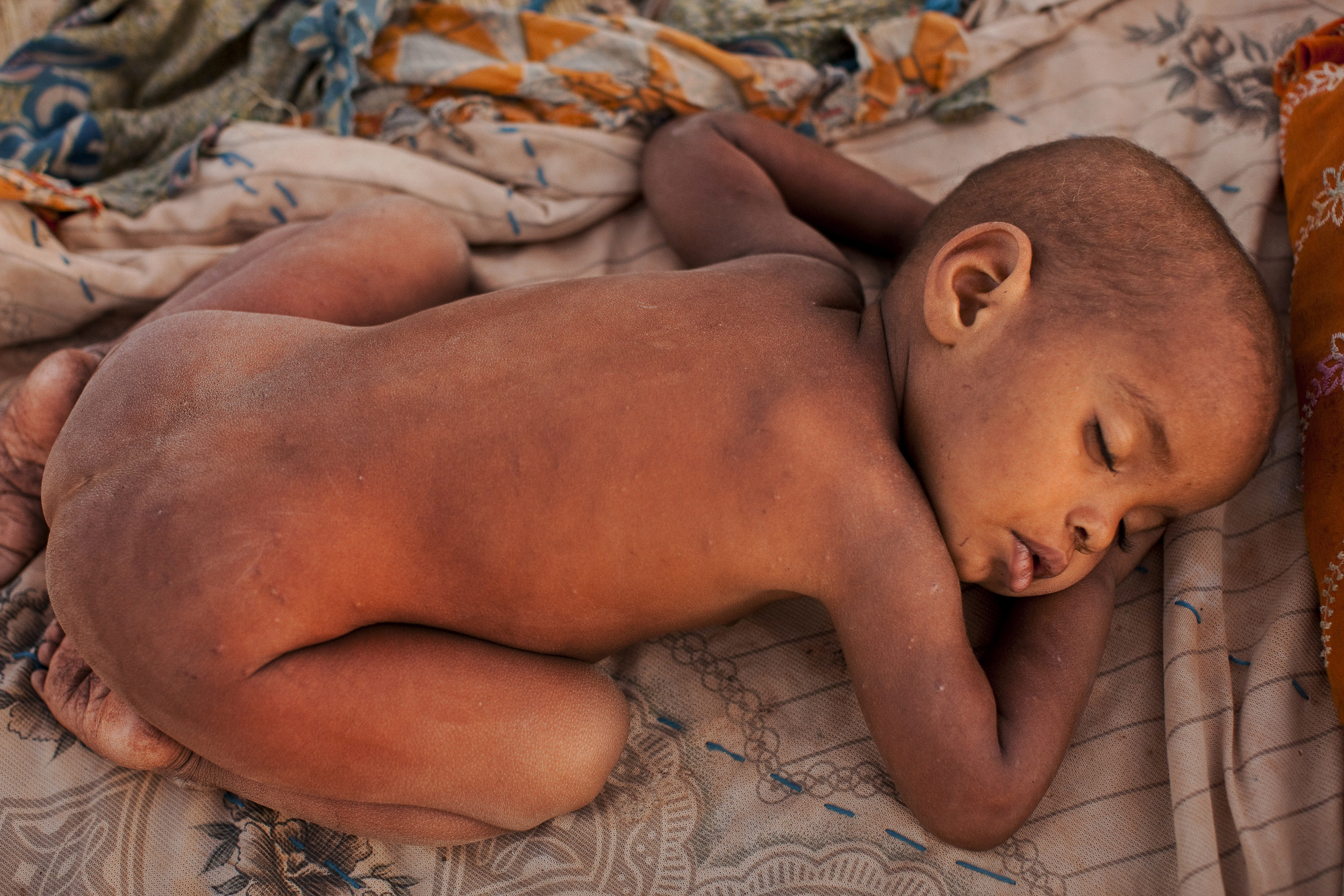
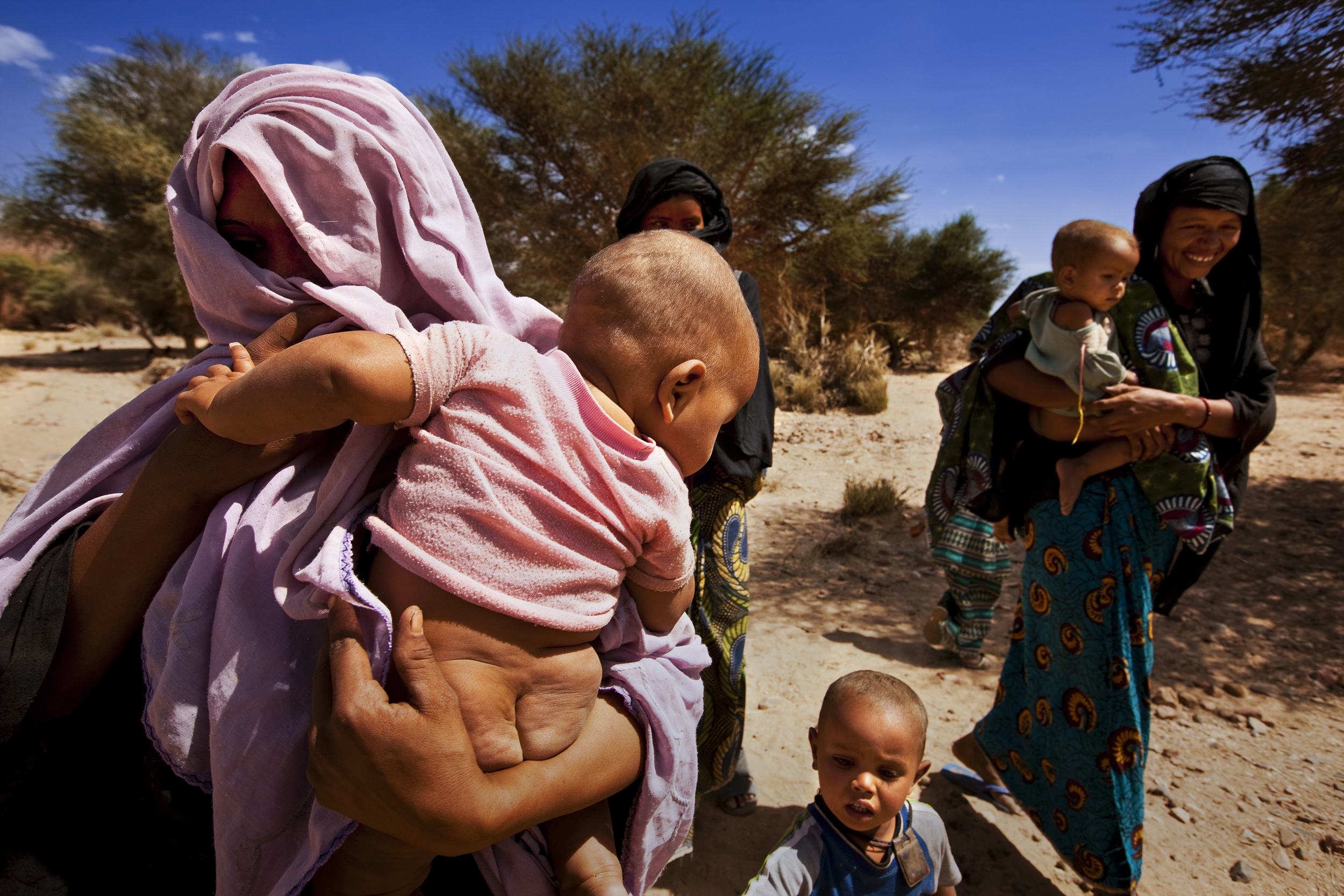
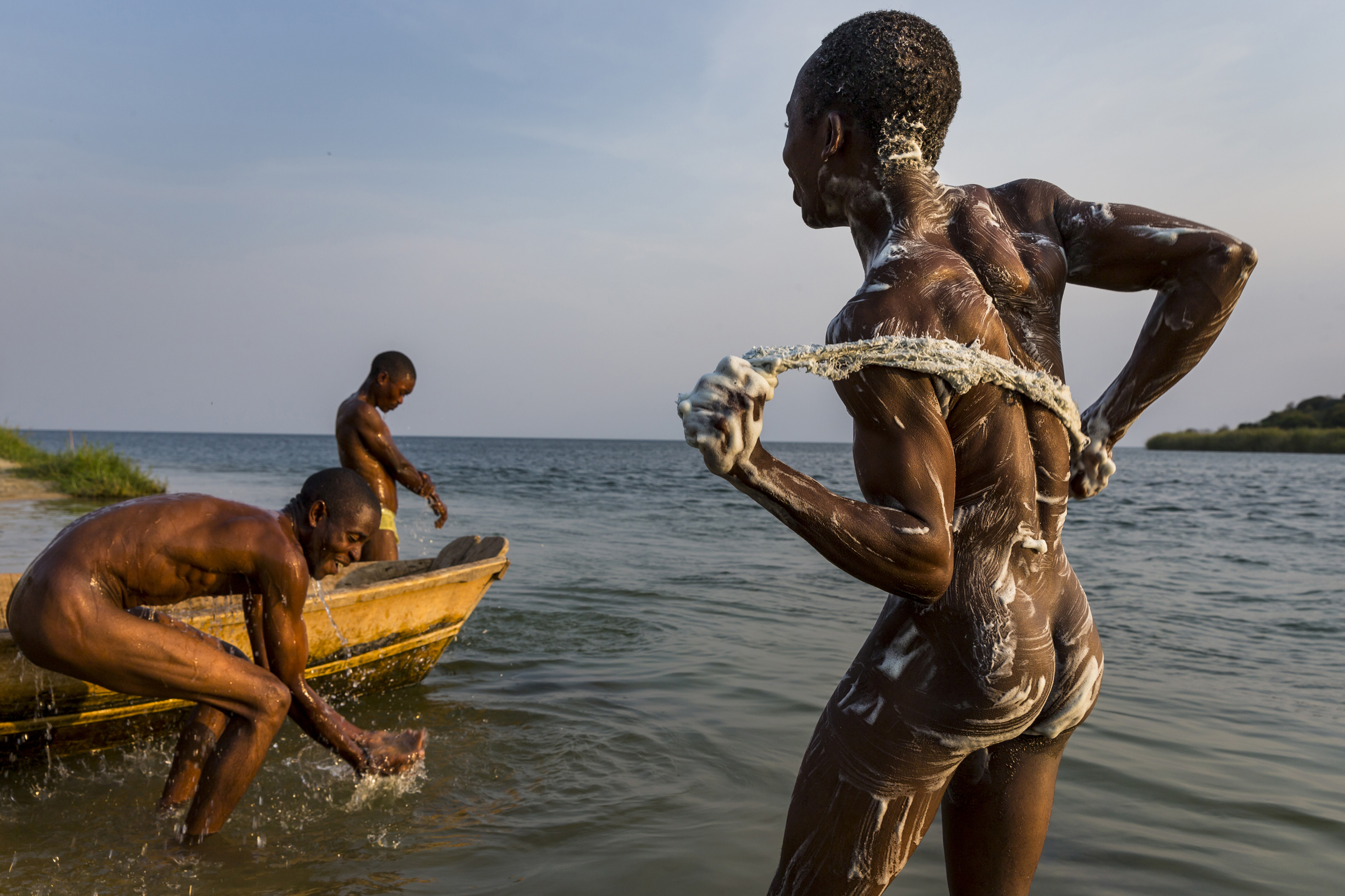

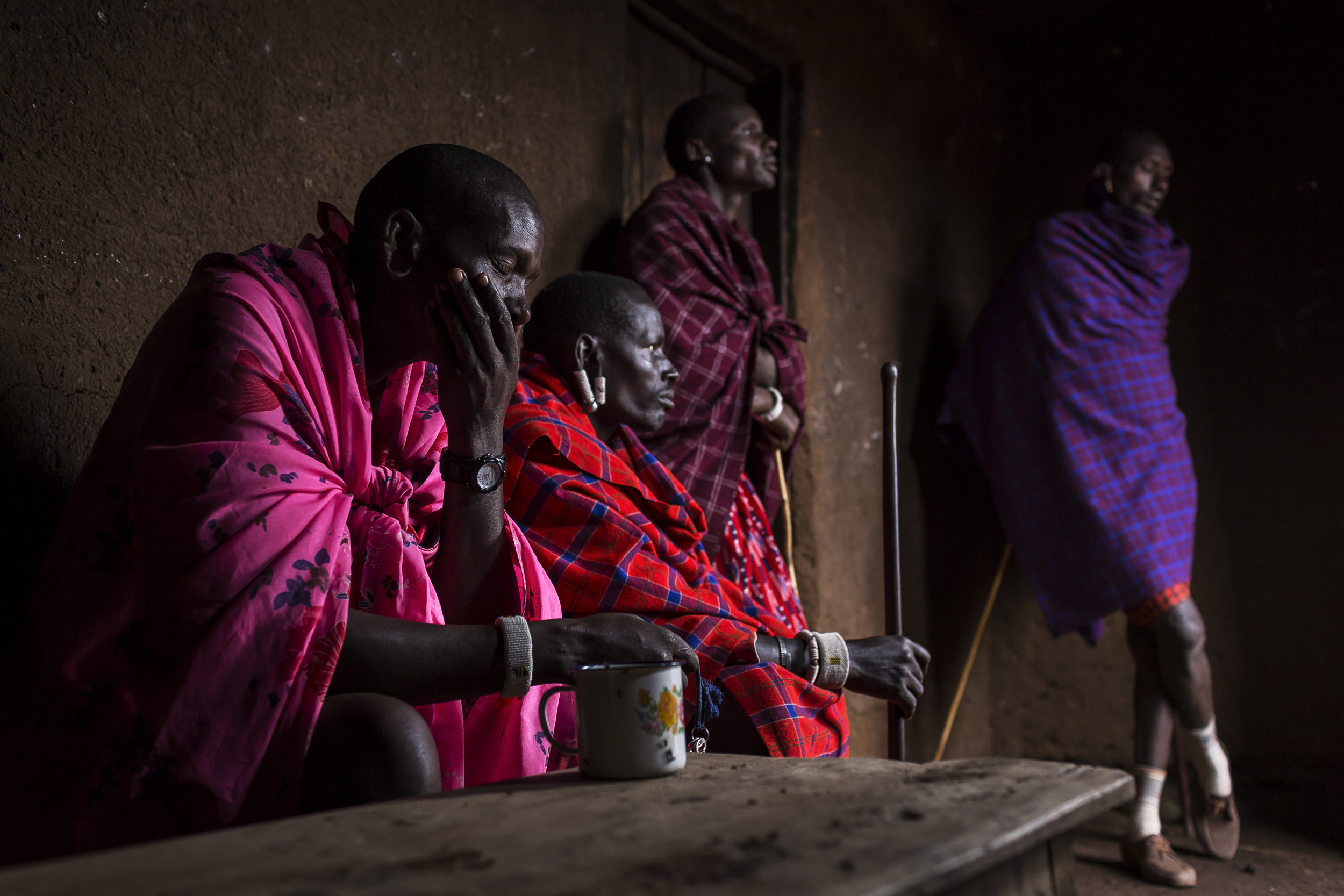

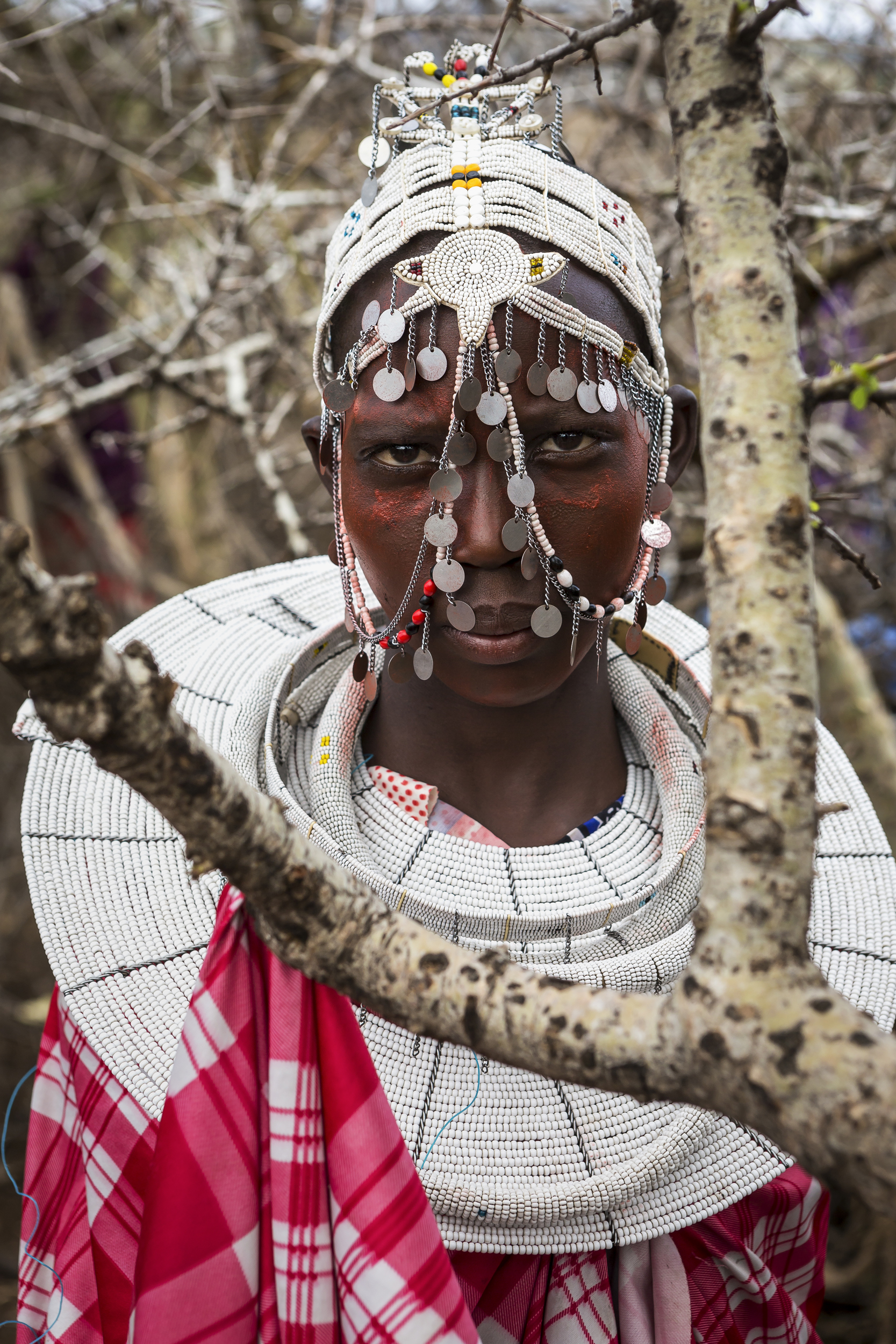
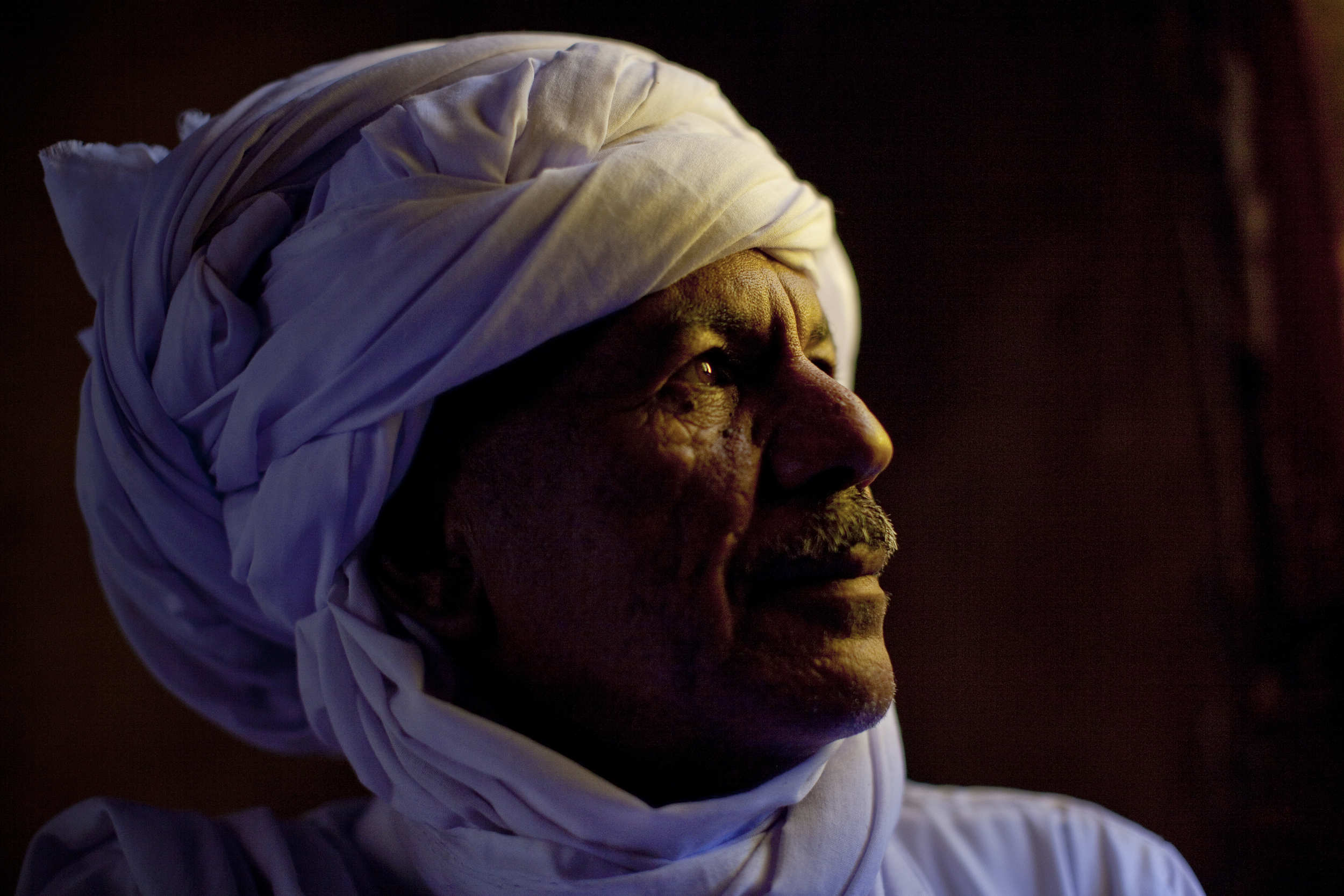




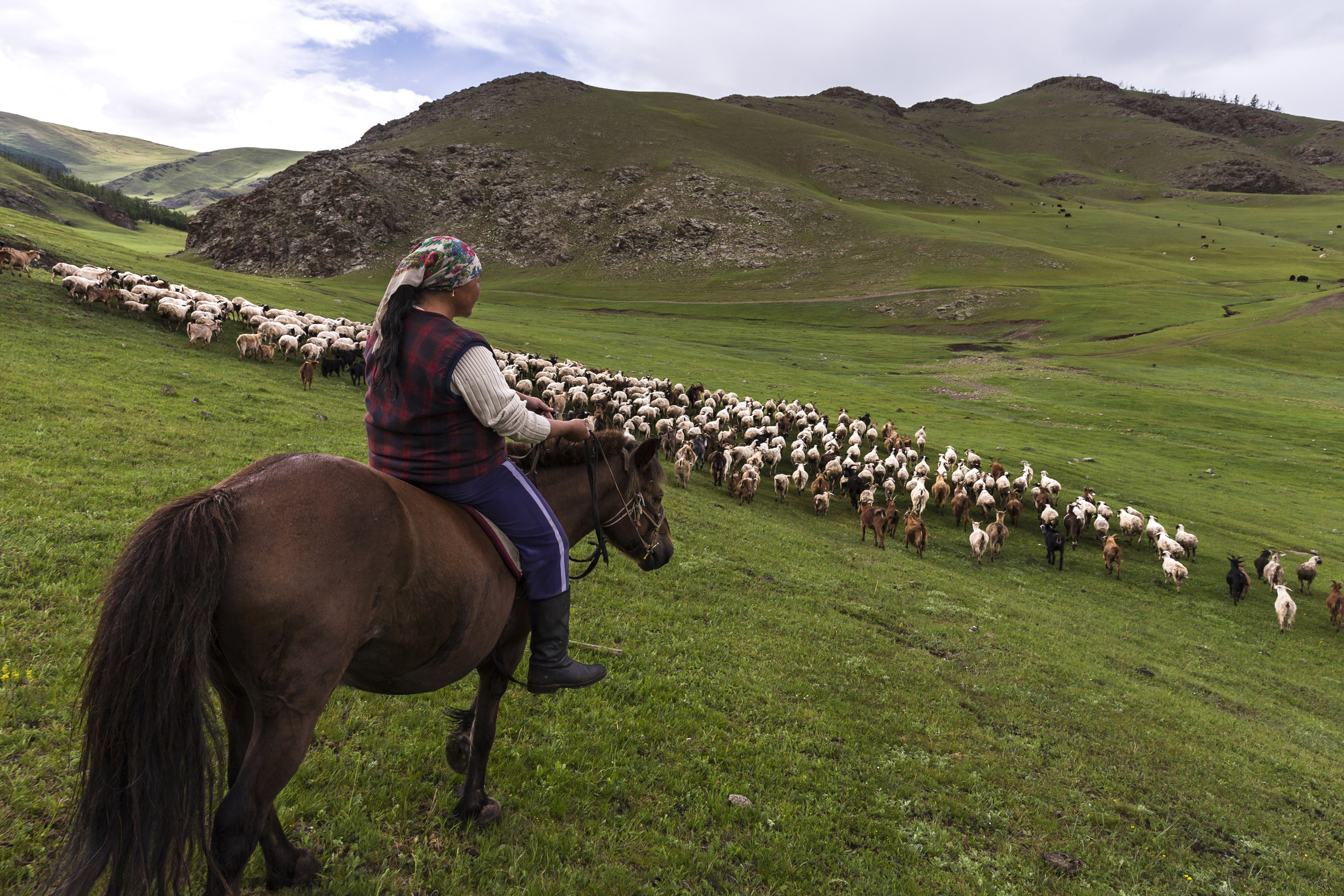
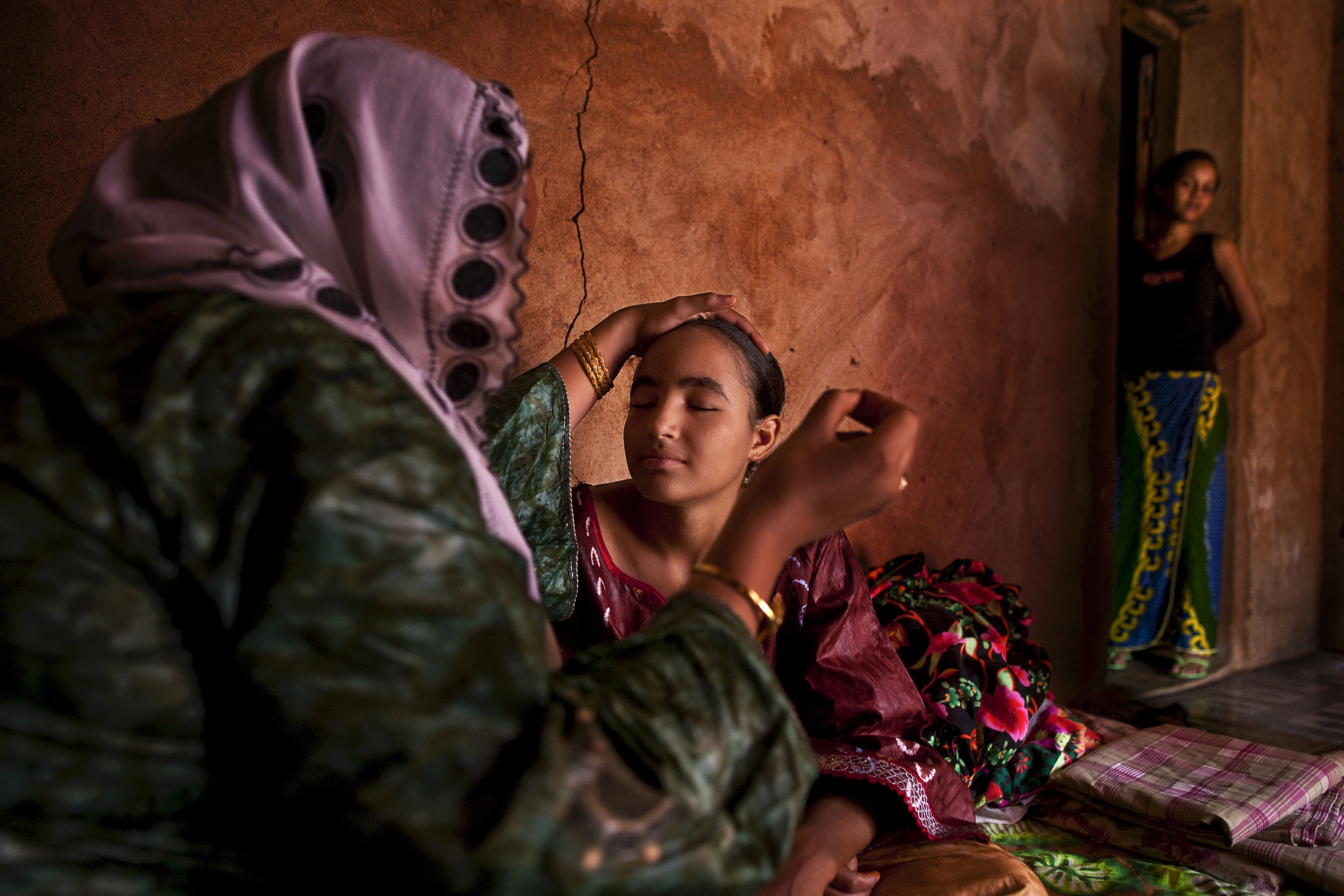
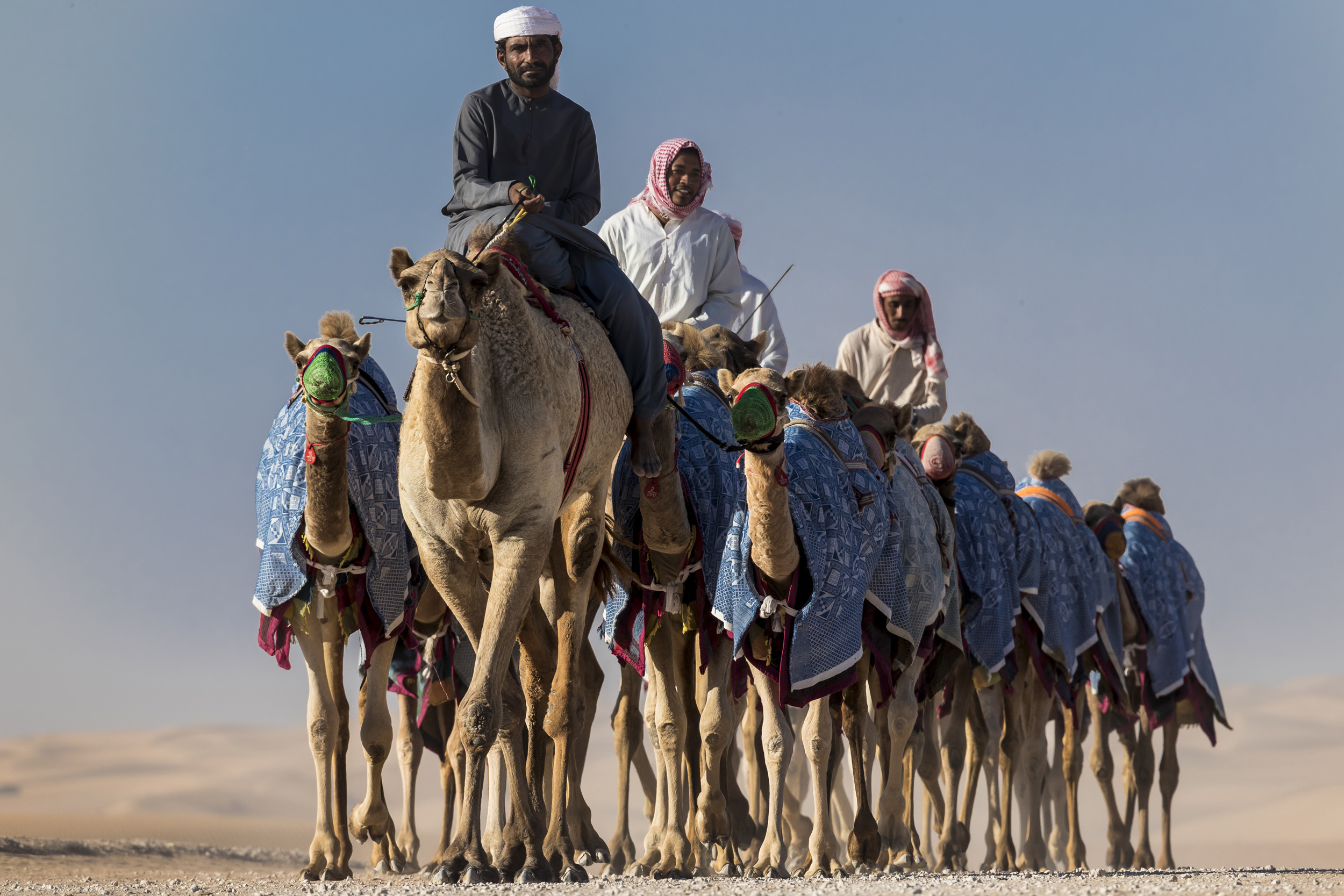
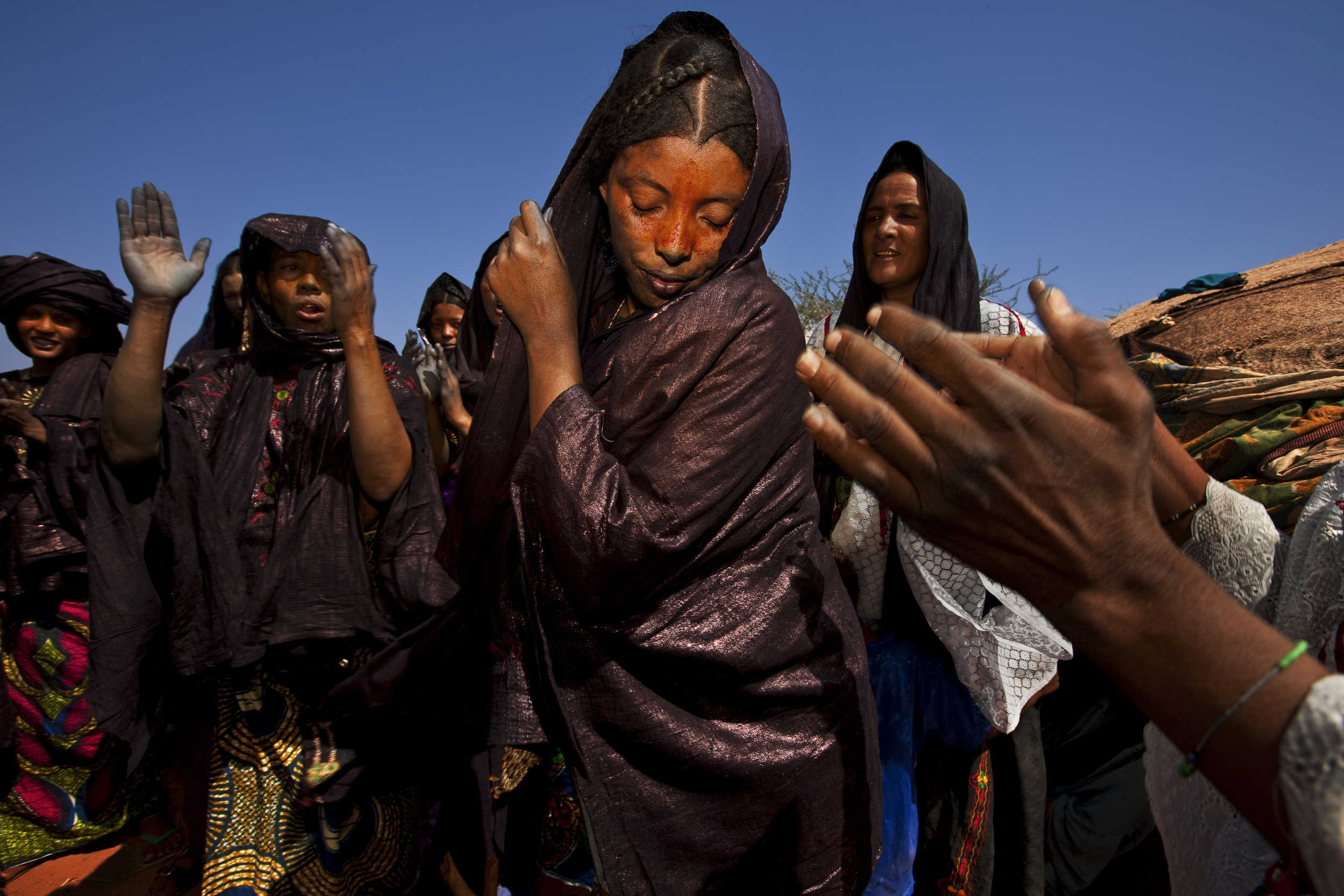
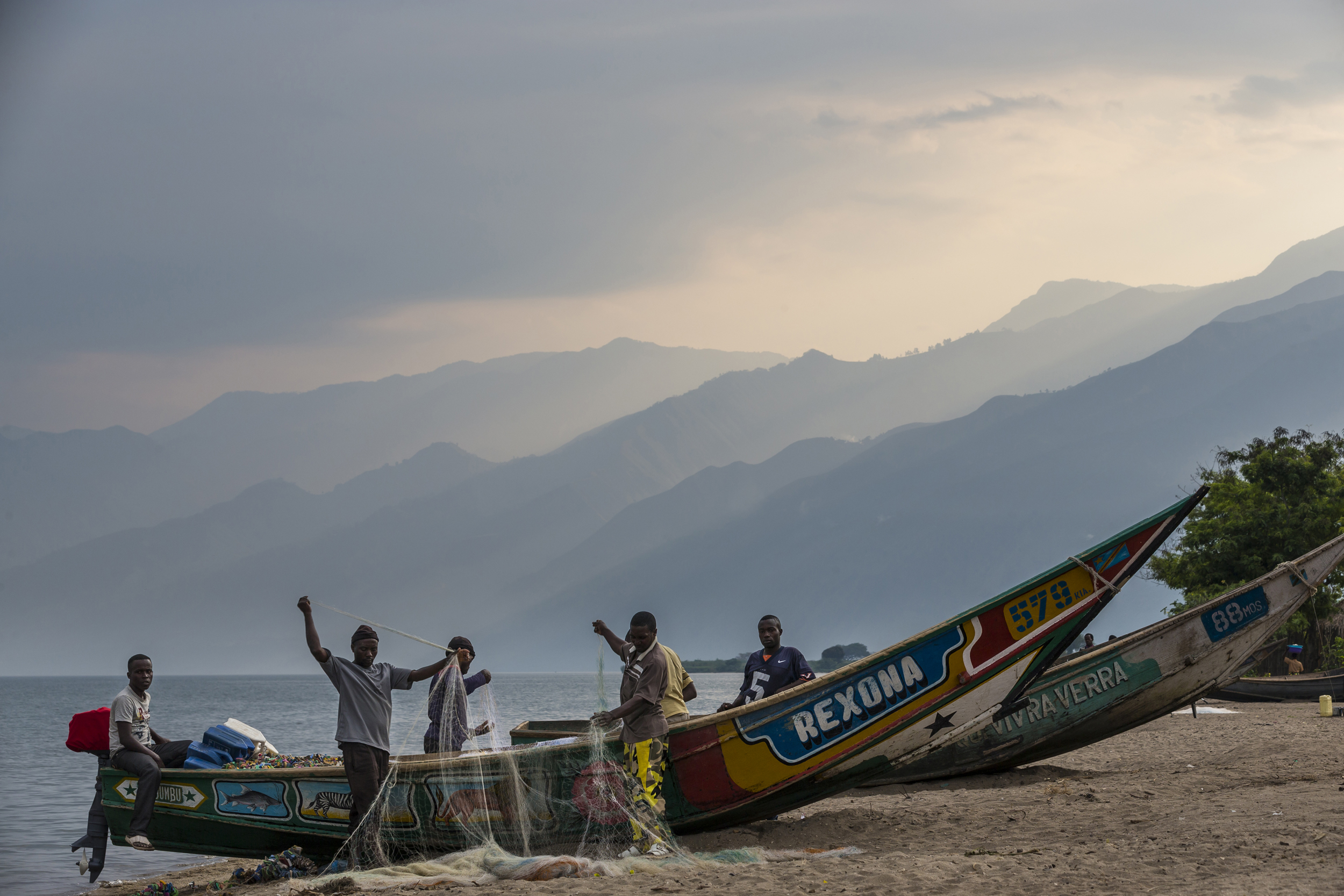
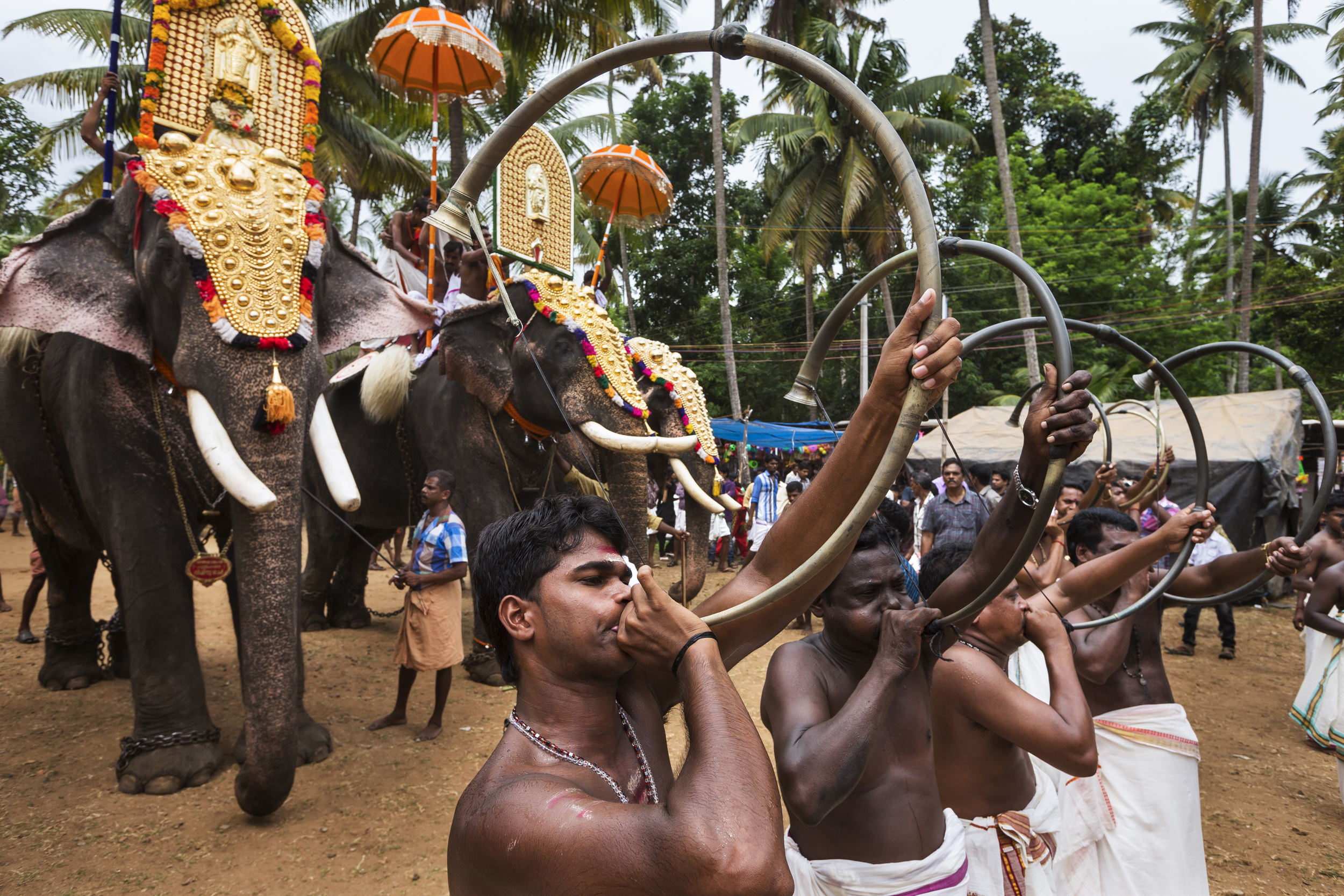
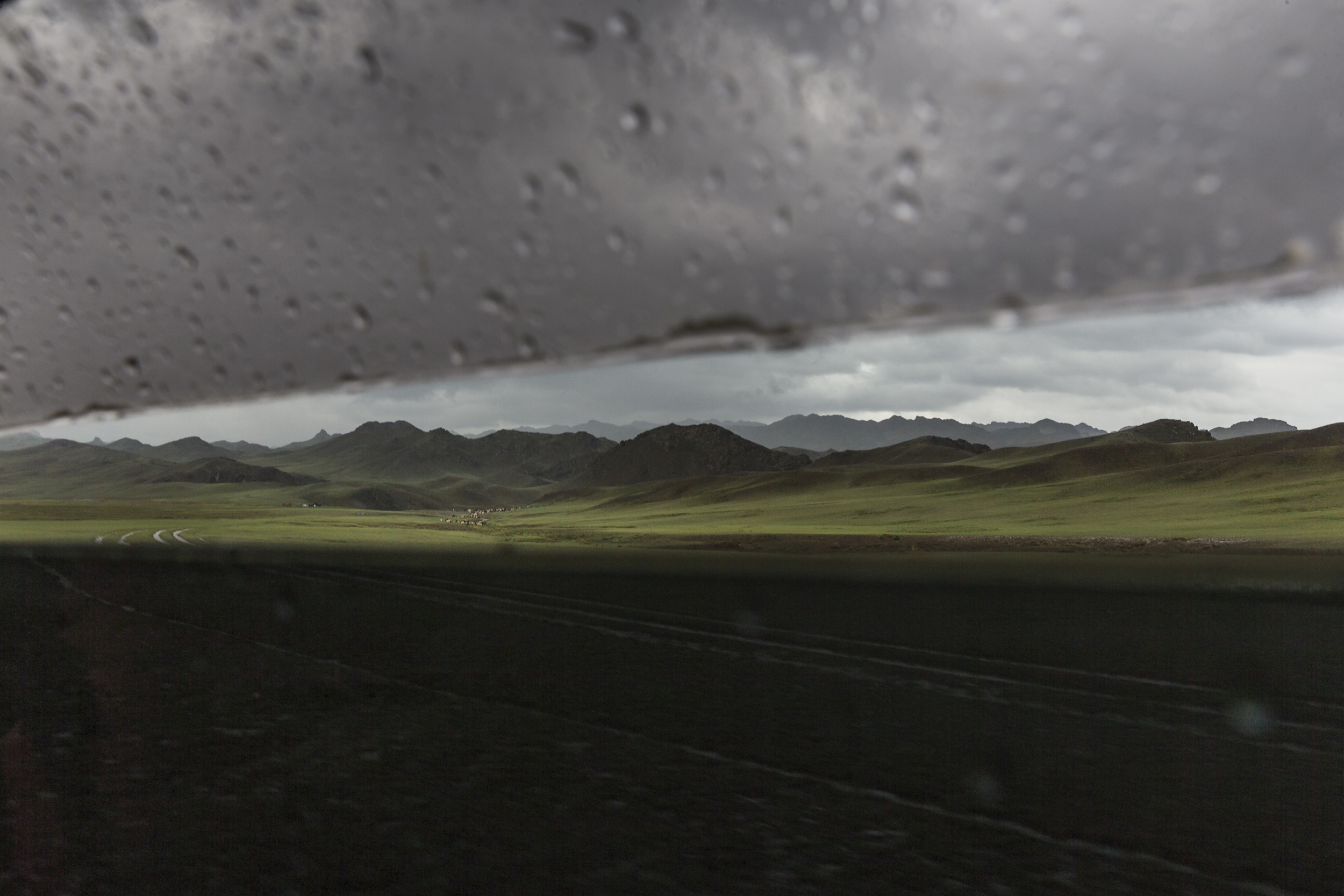
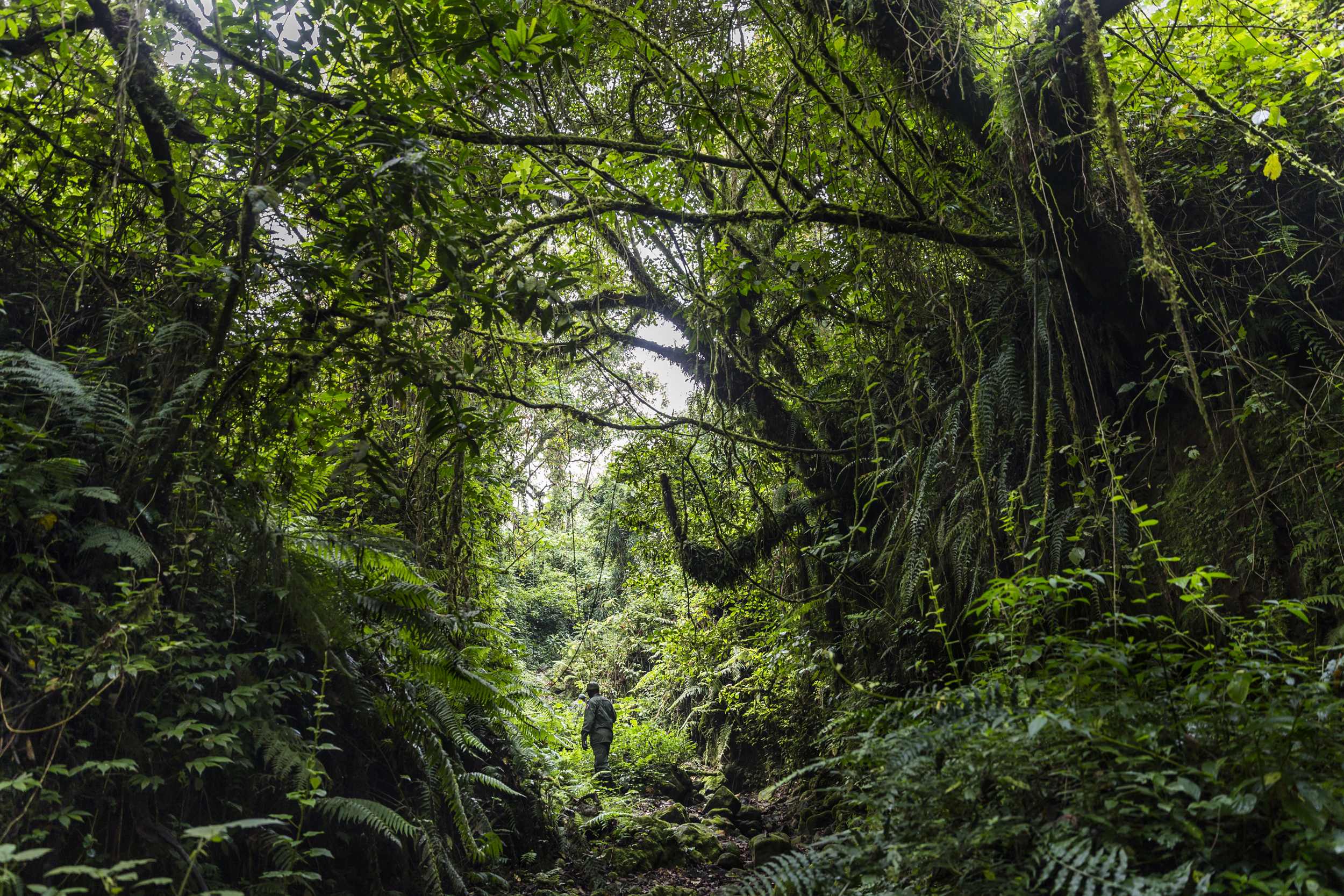
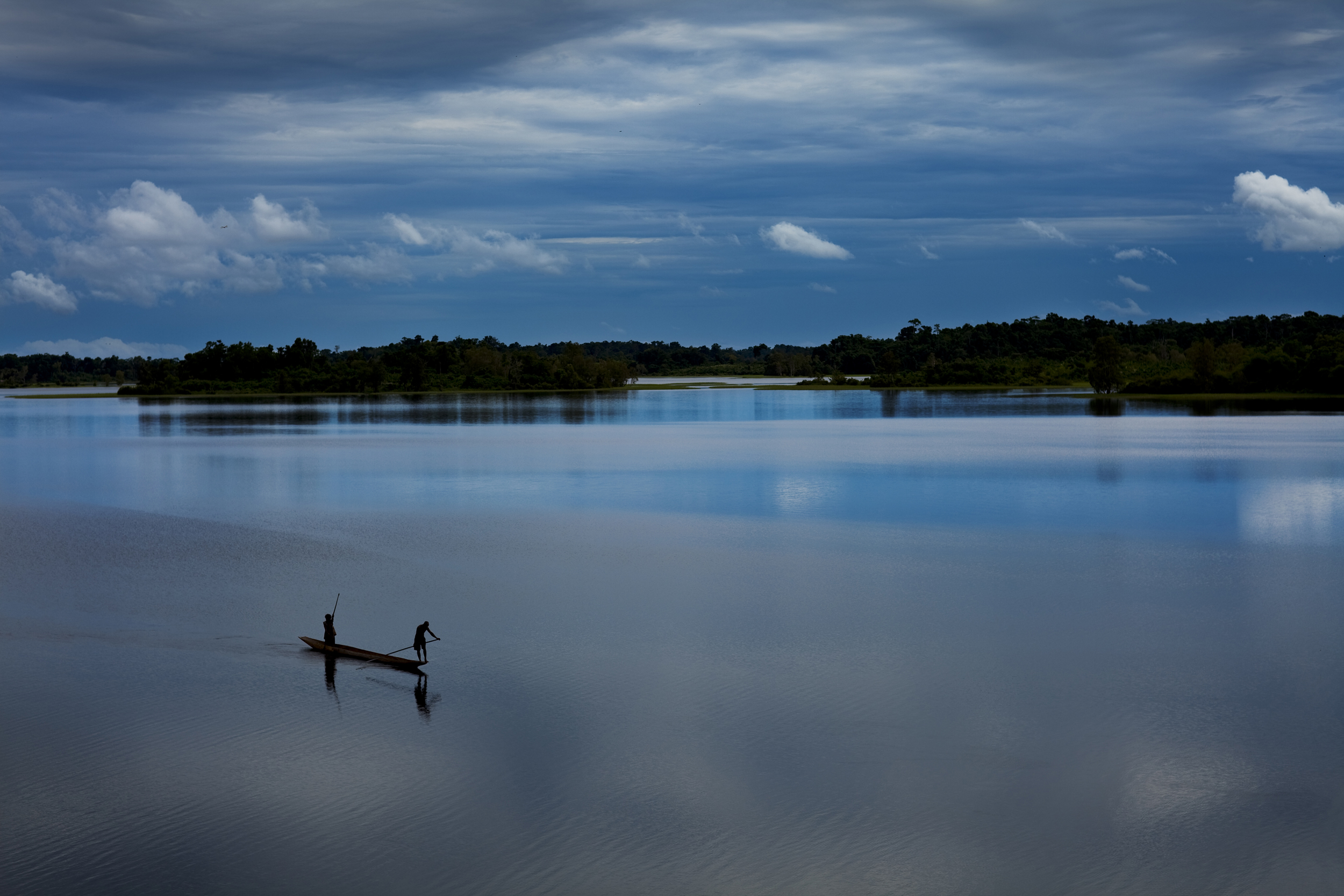
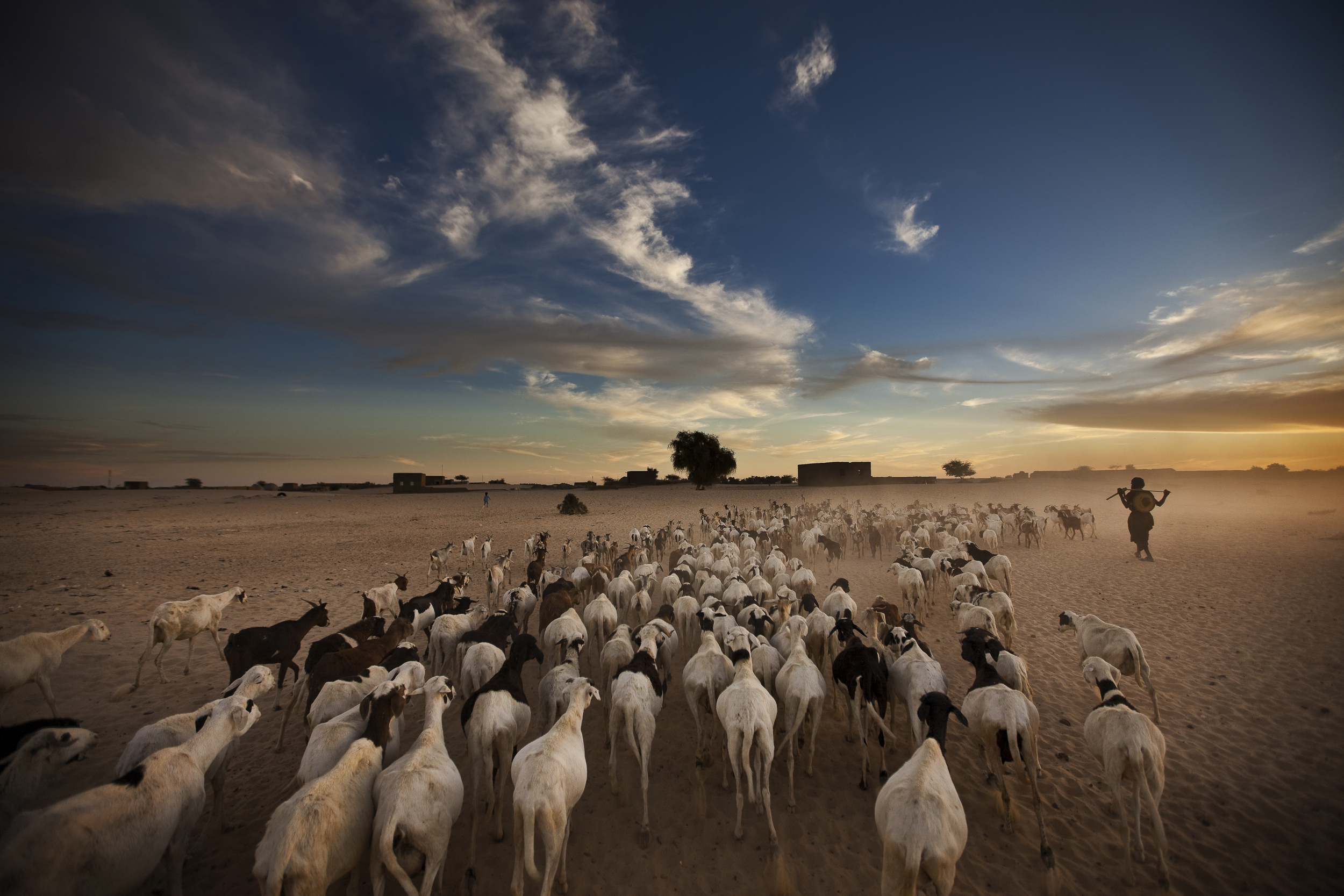
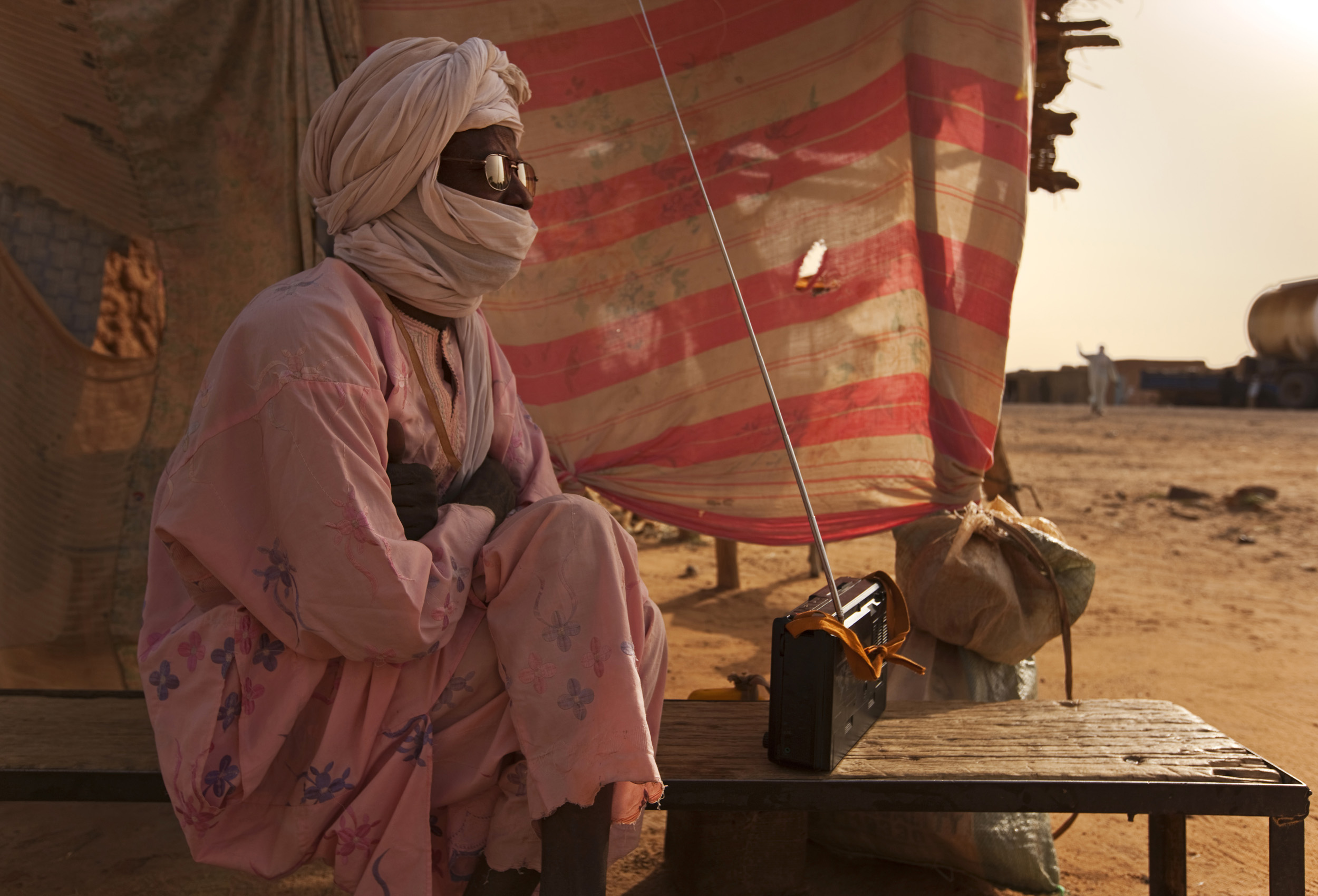
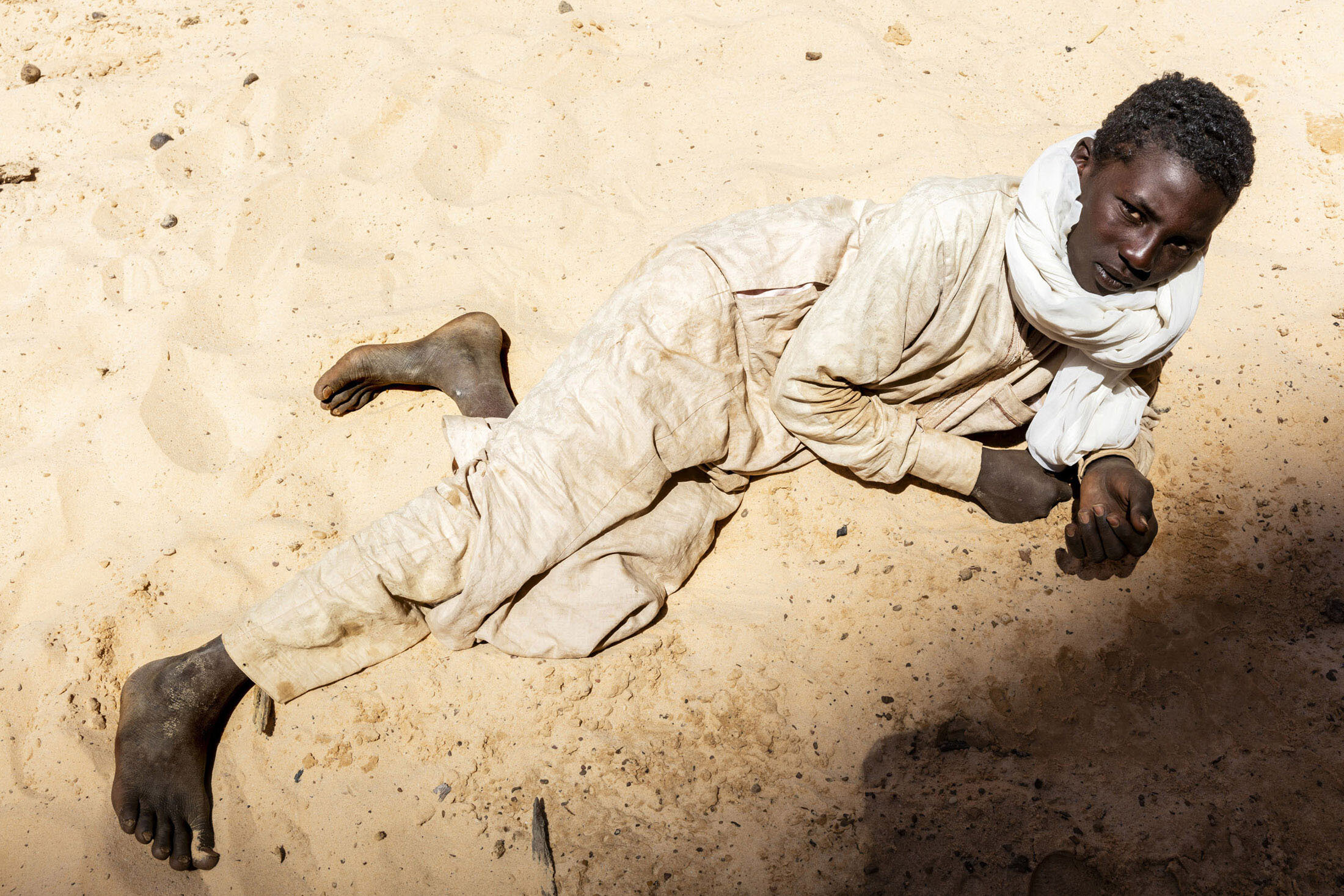
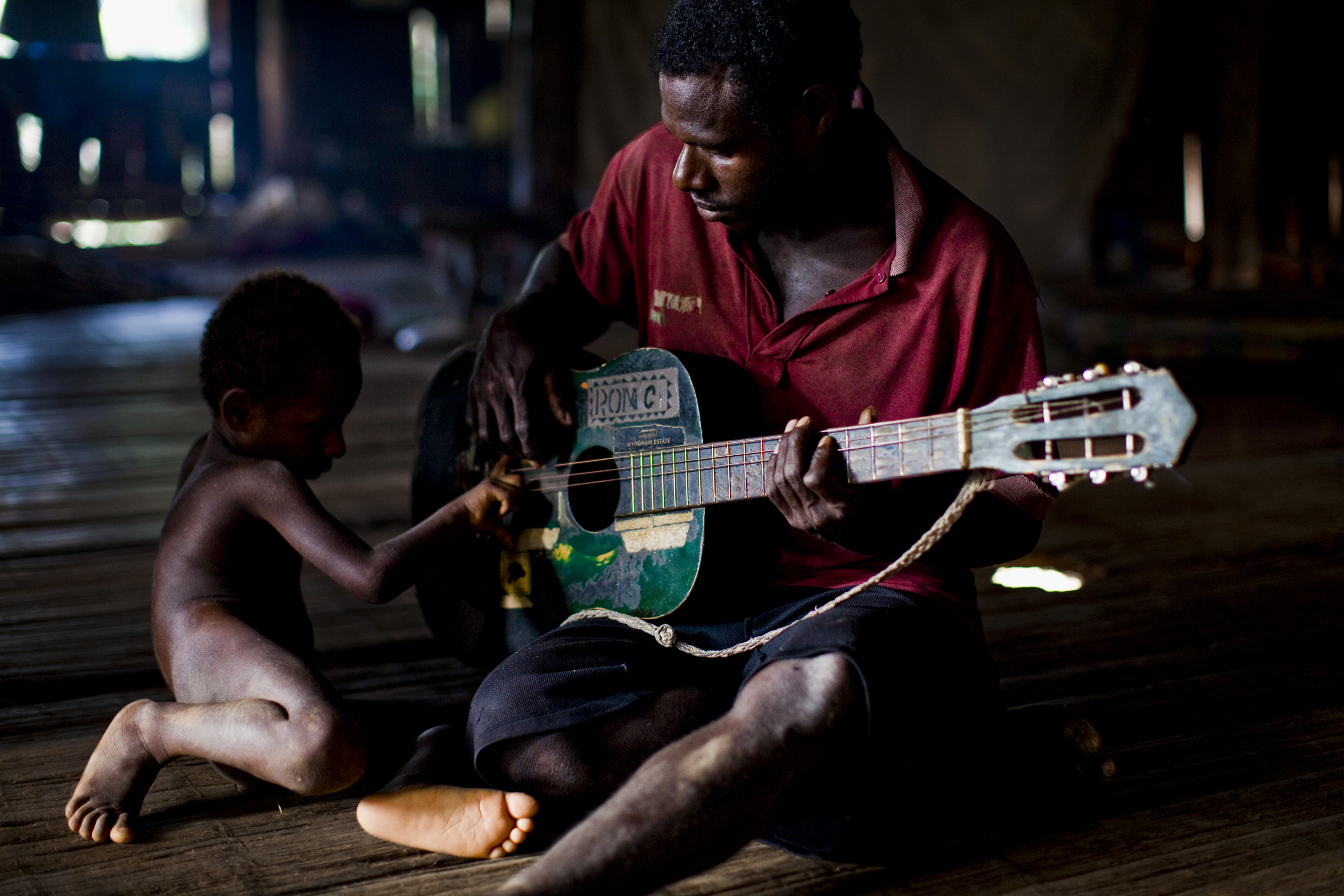

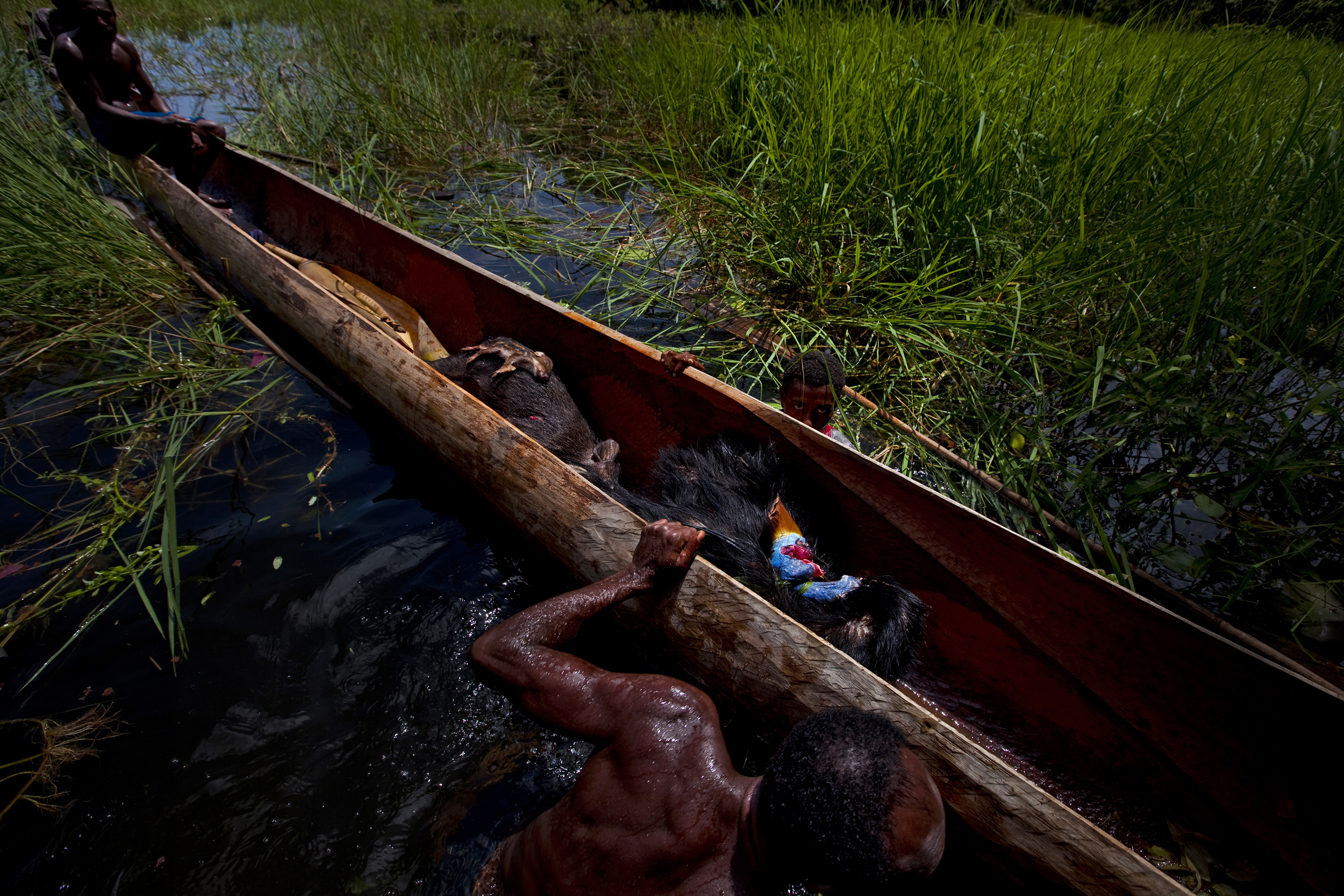
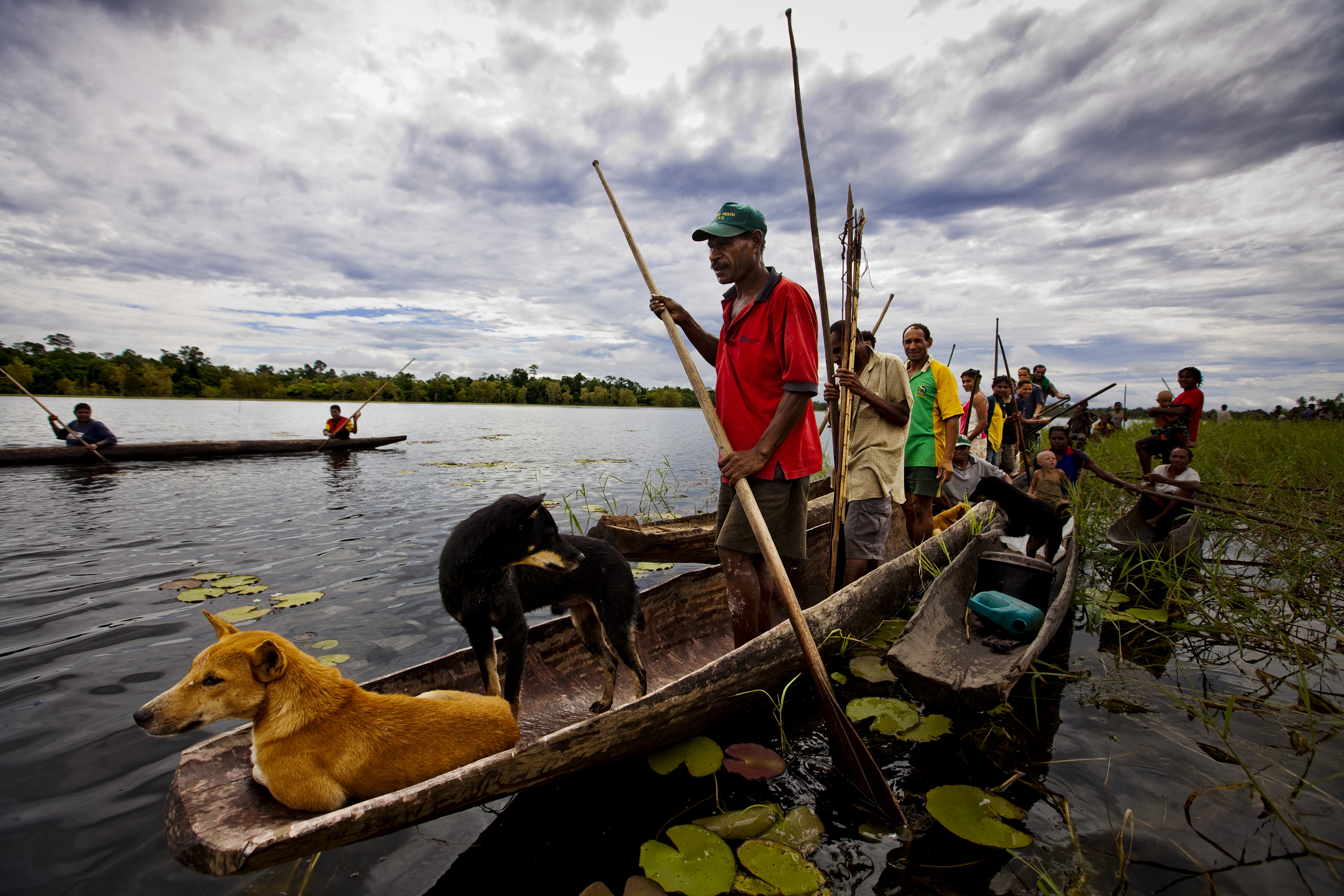
CHAPPADA DOS GUIMARAES, MATTO GROSSO, BRAZIL: Views of the highlands directly overlooking the Northern Pantanal. The rivers and rain here are supported by air-borne water vapor from the Amazon basin that manifests in rain in these highlands and is the contributing factor to the rivers that provide clean water and make the annual wet season flooding possibly for the Pantanal. As the Amazon has lost huge tracts of original forests to deforestation and logging, so the "flying rivers" that originate there have diminished in size. The health of the Pantanal ecosystem and its ancient wet and dry season are deeply reliant on these highlands and the water they provide as well as their connection to the Amazon.
TIMBUKTU, SEPTEMBER 2009: Scenes from the port of Timbuktu at the apex of the Niger River, Timbuktu is a historical Malian city, a long established centre of learning for Africa on 12 September 2009. (Photo by Brent Stirton/National Geographic.)
TIMBUKTU, MALI, JANUARY 2010: A young Tuareg artisan boy, Anara Ag Hamay Cisse, 13 years old, stands in the dunes outside of Timbuktu, the mythical Northern Mali city, January 18, 2010. (Photo by Brent Stirton/Reportage by Getty images.)
CUIABA RIVER, PANTANAL, BRAZIL: A large male jaguar lies on the bank of the Cuiaba river after finishing a meal of capibara. Jaguars are a huge tourist lure and bring millions into the Pantanal every year. Ranchers complain that the jaguars also take cattle but their value for attracting tourisms far exceeds losses from cattle lost to these animals.
EPULU, ITURI, DEMOCRATIC REPUBLIC OF CONGO: Images of a Mbuti pygmy hunting group inside the forest in Okapi National Reserve. The Mbuti pygmies hunt wild meat in a sustainable manner, using nets they have created from forest vines. They conduct brief ceremonies asking for a good hunt, the men then lay out the nets in a long line in the forest while the women move through the forest, shouting and making a noise, driving any animals towards the nets. The Mbuti have a 15 to 20% success rate, similar to a lion. This is what makes this practice sustainable. Larger animals simply break through the net, meaning small duikers and other smaller animals make up the majority of capture. There are around 2300 Mbuti in the reserve, mostly living in harmony with the forest. It is when pygmies are co-opted by other parties for their hunting skills that that harmony is broken. Centuries of ill-treatment by the Bantu people have reduced pygmies in many areas to indentured servitude and a state of survival. Illegal mining camps in Epulu, some very large and politically connected, use pygmies to hunt bushmeat for the miners, supplying them with shotguns and shells and paying them with part of what they can shoot. The pygmies are also forced to hunt by the Congolese Army who protect many of the illegal mining areas. (Photo by Brent Stirton/Getty Images for National Geographic.)
JOFFRE, PANTANAL, BRAZIL: Horses on a cattle ranch graze at the water's edge late in the afternoon. These horses are the only way to access large parts of the Pantanal for the majority of the year. They are a vital part of the cattle industry that has been in the Pantanal since the 16th century. Cattle are moved according to the season, once the rains come and the wet season begins, they can often be moved many miles away to higher ground.
Kalahari Desert: A Khoi San man is seen tracking as he hunts.
MYSORE, INDIA, OCTOBER 5, 2022: The final day of the Mysore Dasara, a festival of culture in the state of Karnataka and the only state festival in India where elephants are used. Mysore Dasara is a Royal Festival that celebrates “the victory of truth over evil” that lasts 10 days. 12 Dasara elephants march on the procession route from Mysore Palace to Bannimantap twice a day. These elephants are considered the pride of the state. The elephants used in the Mysore Dasara are all capture elephants, they usually live in Dubare Elephant camp and form a vital part of a Forestry services team that captures wild rogue elephants and and breaks them down until they integrate into Dubare or another elephant camp. Many of these captive elephants were once part of the timber industry or they have been captured themselves, or they were calf victims of human/ elephant conflict and grew up in an elephant camp. Karnataka does not allow private ownership of elephants and the elephants are the property of the Forest Department. The Mysore Dasara attracts huge crowds, and it is essential that the elephants involved can remain calm in these circumstances and obey orders from their experienced mahouts. (Photo by Brent Stirton/Getty Images for National Geographic Magazine.)
KANDY, SRI LANKA, 21 AUGUST 2021: The most important elephants in Sri Lanka are seen dressed for the ancient and very prestigious Esala Perahera in Kandy, celebrated for centuries to honor the Sacred Tooth Relic and the four 'guardian' Gods Natha, Vishnu, Kataragama and Goddess Pattini. It is the only Perahera in the world which is held with the participation of more than fifty elephants and tuskers adorned with ceremonial costumes, hundreds of drummers, dancers and singers. This is an event that places tremendous stress on the elephants and that has resulted in human death and injuries before. It is also an important tourist draw for Sri Lanka, a country heavily dependent on tourism income. The elephants in this image are the most important in Sri Lanka and carry the tooth relic of the Buddha. There is a heated debate in Sri Lanka between temple associates and conservationists, with temple associates arguing for more elephants to be captured and conservationists saying that more capture activity from the wild seriously destabilizes herd intergrity and brings more elephants into suffering.
CHYULU HILLS, AMBOSELLI ECOSYSTEM, KENYA: One-Ton, one of the most iconic tuskers in the world, is seen at a water hole in the Chulu hills. The Amboseli ecosystem, home to the most iconic elephant in the world, is under threat like never before. The Group Ranch system, which governed Maasai land rights and usage, has been dismantled and for the first time in the modern era, individual members have the right to sell their land parcels. The Group Ranches preserved land masses intact, used for both pastoralism as well as wildlife, now those are being fragmented as some Maasai have chosen to sell to outsiders. We now see factories, urban sprawl and large, water hungry agriculture in former elephant habitat. As a result, the Amboseli Ecosystem is being broken up and vital animal corridors are being disturbed and cut off. This affects all migrating animals who need land and water to survive. At this time, one of the solutions is to help local Maasai run their own conservancies and see benefit from tourism as well as maintain their traditional lifestyles. This involves buying land leases, and expensive and complicated process. Straddling southern Kenya and northern Tanzania, Big Life Foundation works to protect over 1.6 million acres in the Amboseli-Tsavo-Kilimanjaro ecosystem. They use innovative conservation strategies that can serve as models elsewhere and collaborate closely with local communities, partner NGOs, national parks, and government agencies, Big Life seeks to protect and sustain East Africa’s wildlife and natural habitats, including one of the world’s best-known elephant populations.
AMBOSELLI ECOSYSTEM, KENYA: Umoja is one of a new generation of Emerging tuskers in the ecosystem. (Photo by Brent Stirton/Getty Images for Le Figaro)
AMBOSELI ECOSYSTEM, KENYA: Njoroke ole Mpere, Vice Chairman, Nairrabala Conservancy. 80% of his community has decided to form their own conservancy, managing land use for a traditional way of life but also trying to take advantage of tourism as well as the land lease deal offered by conservation NGO Big Life. Mpere believes in the benefits to be gained from protecting their land for wildlife and he believes in protecting the land for his children's future. Maasai do not hunt bushmeat and understand how to live with animals better than other Kenyan people. He would like to see more compensation as he believes they are people who actually live with wildllife. (Photo by Brent Stirton/Getty Images)
AMBOSELLI ECOSYSTEM, KENYA: Craig, one of the most iconic of the Tuskers of Amboseli, is seen on Kitende Conservancy, a local Maasai run conservancy where land owners have chosen a traditional way of life as well as conservation land leasing through Big Life. This kind of elephant is one of a kind and is worth millions annually in tourist revenue. (Photo by Brent Stirton/Getty Images for Le Figaro)
KANDY, SRI LANKA, 21 AUGUST 2021: The most important elephants in Sri Lanka are bathed and dressed for the ancient and very prestigious Esala Perahera in Kandy, celebrated for centuries to honor the Sacred Tooth Relic and the four 'guardian' Gods Natha, Vishnu, Kataragama and Goddess Pattini. It is the only Perahera in the world which is held with the participation of more than fifty elephants and tuskers adorned with ceremonial costumes, hundreds of drummers, dancers and singers. This is an event that places tremendous stress on the elephants and that has resulted in human death and injuries before. It is also an important tourist draw for Sri Lanka, a country heavily dependent on tourism income.
PANTANAL, BRAZIL, 23 MAY 2022: Seul Celso Rondon de Arruda is 67 years old, born and raised in Pantanal. As a cattle rancher, Seul Celso owns 800 cows and 14 horses. The first six months of 2022, he lost 40 calfs because of jaguar attack: each calf killed equals a total loss of 600 euros , if its a male and 400 if its a female. According to him, 2022 is a particularly bad year: on average, the amount of calf lost to jaguar attacks each year reached 20. He acknowledges that a strong jaguar population is a good thing for the Pantanal as it draw tourists to the area and boost the construction of lodges and hotel. But in the same times, jaguars become more accustomed to the presence of humans and thus become more reckless. He bares no grudjes toward hotel owners and the people from the tourism industry, but his opinion is that cattle ranchers should be compensated for the loss of cattle - by the governement or the hotel owners, he could not say. It is also a legal requirement that all ranch owners keep a minimum of 20% of the farmland wild so that corridors are formed for wildlife. This is also contentious amongst ranchers in the Pantanal.
SAN FRANSCISCO FAZENDA, MIRANDA, MATTO GROSSO DU SUL, BRAZIL: A cowboy waits for the cattle to come into the enclosure after driving them from lower ground to higher ground. Cattle ranching is an ancient practise in the Pantanal. The cattle are usually moved from lower to higher ground as the dry season becomes the wet season. For hundreds of years, this was the economic driver of the Pantanal.
TAQUARI RIVER DELTA AREA, MATTO GROSSO DOS SUL, PANTANAL, BRAZIL. Eraco Vilaba was born on Talisma farm and has lived there all of his 81 years. Despite this being the dry season his farm is always surrounded by water. When he was a boy, Eraco's father ran 5000 cattle on the farm until 1974. This permanently flooded situatuon is due to seriously flawed environmental planning in 1974 when the Brazilian government initiated an aggressive agricultural development plan in the highlands above the Pantanal. A huge flood dumped millions of tons of topsoil into the Taquari river and other tributaries, diverting the river and reducing the flow to the Paraguay river to 30% and creating a permanent flood condition which destroyed over 1 million hectares of the Pantanal overnight. Hundreds of farms were ruined and Talisma farm is one of only 4 farms still operating in the flooded delta. Nowadays, Eraco and his wife of 51 years, Sonia, grow bananas to survive. They are amongst the very last farmers still surviving in the Taquari river delta area and they say they will do this for two more years before they will join their children in the city of Corumba. Eroded soil continues to be dumped in the Taquari delta when the rains come and flow to the all-important Paraguay river continues to diminish.
DUBARE ELEPHANT CAMP, KARNATAKA, INDIA, 22ND OCTOBER 2022: Dubare is one of the larger elephant camps in India, a place where captured elephants are brought and kept. Elephant orphans from the wild are brought to these camps as well as elephants from Human/Elephant conflict incidents. Some of the elephants here are trained to be capture elephants, meaning they will deploy as a team to capture rogue elephants who are perceived to be dangerous to humans or destructive to property. These camps also play a lucrative role in tourism, with thousands of visitors streaming in to see the elephants. Dubare is also the place where the key elephants for the Mysore Dasara festival are housed. Dubare has seen 7 new elephant captures in the last 5 years, there are new camps in the area to accommodate the numbers and the rise in tourism. There is some worry amongst elephant activists that the decision to capture is gaining commercial impetus. Many of the older, experienced mahouts have also passed away in recent years, Covid is behind some of that. As a result, some level of wisdom has been lost and some of the deeper relationships between man and elephant have been lost too. A captured elephant requires breaking in, a brutal process in which they are kept in a huge stockade until they grow used to humans and acquiesce to their new lives. That new elephant will have two mahouts, a master, and his apprentice. This means two families will receive an income because of that elephant. These elephants are the property of the forest department of Karnataka. (Photo by Brent Stirton/Getty Images for National Geographic Magazine.)
MINDIMA VILLAGE, CHIMBU PROVINCE, HIGHLANDS, PAPUA NEW GUINEA-DECEMBER 2008: Traditional dress in a village in Chimbu Province, Highlands, Papua New Guinea, 18 December 2008. These outfits will be worn on special occasions, namely Sing-Sing tribal get-togethers, Moka Compensation ceremonies, Bride-Price ceremonies and feasts. (Photo by Brent Stirton/Reportage by Getty Images.)
YALA NATIONAL PARK, SRI LANKA, 17 JULY 2022: An older male elephant named Eranga walks on the beach inside Yala National Park. Apparently this male walks on the beach regularly, often in the moonlight. Yala park officials say he is the only one who does this. Research has shown that many elephants are individual thinkers and conservationists today say that it will be a case of how much we can understand this individual thinking combined with how much we care that will ensure a future in the wild for Asian elephants.
VIRUNGA NATIONAL PARK, DR CONGO: A herd of over 550 elephants recently crossed over from Queen Elizabeth National Park in Uganda to Virunga National Park in the DR Congo. This is the largest intact elephant herd in the world and a translocation like this has not been seen in the region since 1996, when conflict was at its peak in DRC and elephants fled into Uganda. Three seperate Ugandan sources have claimed this has happened because the UPDF, the Ugandan Army, has been taking advantage of the abasence of people during this Covid period to shoot elephants for their ivory. (Photo by Brent Stirton/Getty Images.)
SING RIVER, MINKEBI NATIONAL PARK, GABON, JUNE 2011: An anti-poaching team composed of Gabon Parcs personal, Gabon military, Baka pygmy porters and two Pirouge pilots conduct an anti-poaching mission up the Sing River in Minkebi National Park, Gabon, 26 June 2011. Gabon has recently seen a large spate of Elephant killings as a result of thousands of illegal goldminers that had flooded into the Minkebi region to exploit a lack of the rule of law in the reserve. Approximately a month ago the Gabonese military and Gabon Parcs Department conducted a large joint operation, inviting all these illegal miners to go home to their own countries or face detention. The presence of these illegals also created a thriving illegal ivory industry, fueled by the presence of Chinese traders in Gabon and neighbouring Congo Brazzaville and Cameroon. This expedition up the Sing River was to check for the presence of these illegals and to see if they were carrying out any poaching activity. There were no sightings and now only empty mining settelements remain. It appears the initial operations have put the word out and the illegal miners and poaching villages are no more in this region of Gabon. The operation involved travelling far up the Sing River in Minkbebi Park, cutting river pathways for the pirouges and doing a thorough check for poachers all the way up the river. There are plans for a permanent "Jungle Brigade" for this region within the next 6 months and that should safeguard the borders of Gabon and its wildlife from further poaching threats. (Photo by Brent Stirton/National Geographic.)
GARAMBA NATIONAL PARK, DEMOCRATIC REPUBLIC OF CONGO, APRIL 24 2019: Magunda hill is one of the tallest areas inside Garamba and African Parks have built an observation post at this strategic site. Rangers are rotated in and out of this site on a weekly basis, on the lookout for people and militia groups entering the park to hunt its animals. Garamba is a Park in North East DRC bordering South Sudan. It is one of Africa’s oldest and most complex parks, with a difficult history. It has for many years been an elephant poaching epicenter, with heavily armed Sudanese poachers and Lord’s Resistance Army militia’s both decimating elephant populations as well as targeting the local population. African Parks signed an MOU with the ICCN, Congo’s conservation authority, in 2005. Since then, a number of rangers have continued to die in the course of their duties but slowly the park has gained traction against local poachers and foreign armed groups. From 2016 law enforcement strategy has been completely overhauled, the rangers were better equipped and technology has become a vital component in the fight. Poaching of elephants was down 50% in 2017 and in the 2018 it was down further. Over 1200 elephants remain and over 40 of those have collars for monitoring purposes. Garamba is also home to some of the last remaining Kordofan giraffe population and there is an action plan for that population. In a region of almost no economic opportunity, Garamba employs almost 500 full time staff and almost 2000 short term contract workers. There is a large amount of illegal mining around Garamba and the park is actively involved in speaking with those miners about alternative livelihoods and how the park may help with that. The Ranger force is around 300 and they provide security to tens of thousands of people who live around the park as well as vulnerable refugee groups escaping conflict in the region. (PHOTO BY BRENT STIRTON/GETTY IMAGES FOR NATIONAL GEOGRAPHIC MAGAZINE)
SANJOU VILLAGE, BOUNDARY OF PENDJARI NATIONAL PARK, BENIN, MAY 2019: The villagers of Sanjou engage in a fishing festival that occurs every 3 years. All the villagers wade through this lake with nets and baskets for a few days catching as many fish as possible. Fishing camps are banned within the National Park as they often become poaching camps. Fishing within Pendjari has been banned for two years and the park attempts to emply locals for all work as a means of compensating. Pendjari NP serves to anchor the transnational W-Arly –Pendjari (WAP) complex of over 35,000 km2. This is the biggest remaining intact ecosystem in West Africa and is still in a state of mismanagement. AP hopes to resolve that by initially addressing Pendjari. Pendjari is also home to the critically endangered West African Lion. There are around 120 in Pendjari topday including 7 collared lions. It is also an important wetland and the Benin government is keen to realize the potential of the region. They have included Pendjari in their “Revealing Benin” plan to bring in tourism and investors. They invited AP in after seeing Zakouma’s success in Chad which they would like to replicate. PHOTO BY BRENT STIRTON/GETTY IMAGES FOR NATIONAL GEOGRAPHIC MAGAZINE.
SANJOU VILLAGE, BOUNDARY OF PENDJARI NATIONAL PARK, BENIN, MAY 2019: The villagers of Sanjou engage in a fishing festival that occurs every 3 years. All the villagers wade through this lake with nets and baskets for a few days catching as many fish as possible. Fishing camps are banned within the National Park as they often become poaching camps. Fishing within Pendjari has been banned for two years and the park attempts to emply locals for all work as a means of compensating. Pendjari NP serves to anchor the transnational W-Arly –Pendjari (WAP) complex of over 35,000 km2. This is the biggest remaining intact ecosystem in West Africa and is still in a state of mismanagement. AP hopes to resolve that by initially addressing Pendjari. Pendjari is also home to the critically endangered West African Lion. There are around 120 in Pendjari topday including 7 collared lions. It is also an important wetland and the Benin government is keen to realize the potential of the region. They have included Pendjari in their “Revealing Benin” plan to bring in tourism and investors. They invited AP in after seeing Zakouma’s success in Chad which they would like to replicate. PHOTO BY BRENT STIRTON/GETTY IMAGES FOR NATIONAL GEOGRAPHIC MAGAZINE.
TSAVO EAST, KENYA, MAY 2011: Images of some of the last of the great Elephant tuskers in Africa, taken in Tsavo Eastm 18 May, 2011. Massive elephant poaching in recent years has seen most of the mature bull elephant population of African countries decimated for their ivory. A Tusker is defined as an elephant with a set of 100 pound ivory tusks, or therabouts. This depletion of the elephant gene pool is having a negative effect on populations, with weak dna being passed on instead of the strongest. (Photo by Brent Stirton/Reportage for National Geographic Magazine.)
JOMBA, VIRUNGA NATIONAL PARK, DRC, 30 April 2015: Two alpha male silverback mountain gorilla from the Mpua family seen in the Jomba rainforest, Virunga National Park, DRC. (Photo by Brent Stirton/Reportage by Getty Images for National Geographic Magazine.)
TIMBUKTU, MALI, JANUARY 2010: Late Afternoon scenes at a funeral in the streets of Timbuktu, MALI, 5 JANUARY 2010. Funerals in Timbuktu are conducted separately, with the woman mourning inside the house of the deceased and the men outside on the street involved in prayers and remembrance in the Islamic tradition. (PHOTO BY BRENT STIRTON/NATIONAL GEOGRAPHIC.)
ABU DHABI, UAE, 2 DECEMBER 2017: A falcon hunting camp in the desert outside Abu Dhabi, UAE. This camp uses captive bred Houbara Bustards, the preferred prey species of Arab Falconers across the region. Rashid and Maktoum Al Maktoum, two young sheiks from the Dubai Royal family, are seen hunting with their Gyr and Saker falcons. In the UAE, where a huge amount of progress has occurred at an accelerated rate over the last 60 years, falconry is seen as a link back to the past and to the ancient culture of the Bedouin. Falcons were used for centuries for hunting food and the Arabs have a long association with falcons. Nowadays it is the sport of choice across the Arab world. Twenty years ago, most of the birds used were from wild capture, a fact that meant falcons were taken from the wild and subjected to long and dangerous journeys from as far away as Siberia and Mongolia. Many did not survive and those that did often arrived sick and in poor condition. Most of those falcons also came from colder climates and did not survive the heat of the desert region. These days, the vast majority of falcons used in the UAE are captive bred birds. Sheikh Butti is the first UAE falconer and likely the first Arab to ever train and hunt with a captive bred bird, a Gyr falcon that became famous across the region twenty years ago. He altered perception about what was possible with captive breeding and the performance of his falcons helped to win the argument for the superiority of captive-bred hybrids and purebred falcons. There has been a careful refining of genetics by master breeders like Howard Waller who have created a whole new class of falcons that have become the birds of choice in the Emirates. They are housed in special air-conditioned facilities where they can resist the high temperatures of the desert. Most training for hunts and racing is done in the very early morning, when temperatures are low and the birds won’t suffer heat exhaustion. The birds travel in air-conditio
ERDENE SANT, CENTRAL MONGOLIA: A wild Saker Falcon mother and her chicks in a nest high over the steppe of Central Mongolia. The Saker falcon is the only species in the genus Falco with an endangered listing in the IUCN red list, because a population trend analysis has indicated that it may be undergoing a very rapid decline, particularly in Central Asia, with unsustainable capture for the falcon trade considered to be one of the causal factors. Electrocution via power lines is a larger issue, killing millions of birds annually, including an estimated 1000 Saker falcons every year.
Tokyo, Japan, April 2018: A Oneisan practices with her Shamisen at the Asakusa Kenban where Geisha shows are held for clients. The bridge of the Shamisen is made of ivory and the plectrum , known as a Bachi, is also made of ivory and is said to create the best sound. The skin on the front of her Shamisen is made of cat skin and the skin at the back is made of dog skin. The instrument itself was made 15 years ago. The shamisen is a plucked stringed instrument. Its construction follows a model similar to that of a guitar or a banjo, with a neck and strings stretched across a resonating body. The neck of the shamisen is fretless and slimmer than that of a guitar or banjo. The body resembles a drum, having a hollow body that is covered front and back with skin, in the manner of a banjo. The skin used depends on the genre of music and the skill of the player. Traditionally skins were made using dog or cat skin but use of these skins gradually fell out of favor starting around 2006 due to social stigma and the decline of workers skilled in preparing these particular skins. The bachi or plectrum used to play the shamisen also differ in size, shape, and material from genre to genre. The bachi used for nagauta shamisen are made out of three possible materials, i.e. wood, plastic, or ivory. Ivory is the preferred substance and Shamisen players often believe it delivers the best sound. (Photo by Brent Stirton/Verbatim by Getty Images.)
MAJETE NATIONAL PARK, MALAWI, JUNE 2019: Dancers from Tsekera village practise the Gule Wamkulu dance, an old tradition that is sent to invoke the spirit of ancestors who will come to assist the villagers with rain, conflict etc. The locals believe that ancestors manifest in birds and animals found in the park. Nowadays the village performs this dance for tourist groups who come to visit Majete. The revenue generated goes to communities who then see the benefit of support conservation efforts for the park. Majete was taken over by African Parks in 2003. At the time it was a dead park, poached out and lawless. AP reintroduced Rhinos, Lions and Elephants, including the largest translocation of elephants since the fifties. Over 500 elephants made their way to Majete. This park serves as an example of how a park can be brought back from a wasteland to a life source for animals and communities. PHOTO BY BRENT STIRTON/GETTY IMAGES FOR NATIONAL GEOGRAPHIC MAGAZINE.
MIDDLE SEPIK, PAPUA NEW GUINEA-DECEMBER 2008: Images of the Karawari people of the middle Sepik river, 15 December 2008. The Karawari are the most remote of the floodplains people, with many vllages along the river barely a generation old. The most recent settlements date only from 1996. (Photo by Brent Stirton/Reportage by Getty Images.)
LOLIONDO, NORTHERN TANZANIA, NOVEMBER 2012: Images from a Masai coming –of-age ceremony in a remote Masai village in Loliondo, Northern Tanzania, 2 November 2012. Two of the young warriors in this ceremony are wearing a Lion Mane head-dress from a lion they speared 3 years ago. The Masai have a long history of lion-killing, both as a proving ground for young warriors in their ascent to manhood and also to protect their cattle from lion attacks. This is an illegal activity and 3 years ago a number of young warriors were arrested and jailed for this offence. Illegal lion killing continues amongst the Masai today, but as lion numbers dwindle, this activity is also increasingly rare to find. Conflict between the pastoralist Masai and the lion is an age-old phenomenon. (Photo by Brent Stirton/Reportage for National Geographic Magazine.)
TARI GAP, SOUTHERN HIGHLANDS, PAPUA NEW GUINEA-DECEMBER 2008: A Huli Wigman waits out a rain-storm in his room, smoking and applying his traditional face paint while waiting for the rain to clear, Tari Gap, Papua New Guinea, 17 December 2008. Tari is the home of the Huli Wigmen, this highlands province was once considered one of the most remote areas of the highland region of Papua New Guinea, the outside world has only really been felt in the last 20 years. Recent oil discoveries in the region are now changing it quickly. (Photo by Brent Stirton/Reportage for Getty Images.)
A bushmen and his son take a break while walking through a farm that used to be part of their traditional hunting ground. The Bushmen are regarded by historians as the first people of South Africa yet they are the most marginalized people in the country. There is a land claim for them in the Kalahari region of the country but De Beers mining company is disputing part of the claim and the South African government is offering the land without mineral rights. The case is ongoing in the courts.
QUNU, EASTERN CAPE, SOUTH AFRICA, 14 DECEMBER 2013: Xhosa Initiates pass by close to the funeral of Nelson Mandela, Qunu, South Africa, 14 December 2014. These initiates have recently been circumsized traditionally and without anesthetic. They will spend up to two months dressed this way and learning the tradtions of Xhosa culture. Nelson Mandela, an icon of democracy, also went through this tradtional ritual. Mandela was buried at his family home in Qunu after passing away on the 5th December 2013.
LOWARENGAK, TURKANA, KENYA, 10 OCTOBER 2014: Images from an internally displaced Turkana community who have been moved off their land by Dassanech tribesman who raided their cattle and killed their people, Turkana, Kenya. These Turkana now practise fishing as opposed to their traditional pastoralism as their main means of subsistence. The Dassenech have in fact come illegally over the Ethiopian border into Turkana land. They were pressured by sugar cane farms on the lower Omo river which is the main tributary for Lake Turkana, the largest desert lake in the world. These sugar cane farms robbed the Dassenech of tradional grazing land and water rights and so they moved over the border into Turkana territory and ongoing conflict is the result. This pattern is likely to increase as Ethiopia's Gibe 3 dam comes online next year. This will reduce the flow of the Omo river to one fifth of its current size. This will decimate the fertile flood plain in the region and the tribesmen along the Omo will fight for diminishing resources as a result. This conflict will be likely to continue in Kenya's Turkana region as all around the lake hundreds of thousands of tribespeople will find themselves competing for less and grazing, fishing and clean water sources. A series of droughts have reduced most of these pastoralists to fishing as their chief source of subsistence due to huge cattle and goat deaths. The massively reduced flow of the Omo, source of 90% of Lake Turkana's water, could have a devastating effect on this food and income source. The Ethiopian government has conducted no Environmental Impact Assessment for their dams and has yet to respond to these issues. (Photo by Brent Stirton/Reportage by Getty Images for HRW.)
MAPUTO, MOZAMBIQUE, 23 NOVEMBER 2013: Young boys clown around posing as strongmen, Maputo beachfront, Mozambique.
TIMBUKTU, SEPTEMBER 2009: Children play in the rain in a welcome respite from the desert heat in a street scene in Timbuktu, a historical Malian city, a long established centre of learning for Africa, , September 11, 2009. (Photo by Brent Stirton/National Geographic.)
ISHANGO RANGER STATION, NORTHERN SECTOR, VIRUNGA NATIONAL PARK,DEMOCRATIC REPUBLIC OF CONGO-7 MAY 2015: Images of elephants bathing inside Lake Edward close to the IShango Ranger station in Virunga National Park, DRC. There are only around 200 Savanah elephants left in Virunga, victims of extensive poaching campaigns since 1995. There is an effort underway by the Rangers to protect these remaining elephants and reopen the corridor to Queen Elizabeth Park in nearby Uganda to see Virunga's elephants return. Potential oil exploration in the area further threatens Virunga's elephants, with the potential oil area falling inside their corridor and habitat. (Photo by Brent Stirton/Reportage by Getty Images for National Geographic Magazine.)
KANGATOSA, TURKANA, KENYA, 11 OCTOBER 2014: Turkana tribeswomen greet each other in the traditional way by touching heads. Many greetings in this tribe are meant to mimic the actions of cattle. (Photo by Brent Stirton/Reportage by Getty Images for HRW.)
RUMANGABO, VIRUNGA NATIONAL PARK, DR CONGO, 2 MAY 2015: Moonlit images of active volcanoes within Virunga National Park, Mount Nyiragongo and Nyamuragira. Virunga has some of the most active volcanoes on the continent and offers tourism trips to Nyiragongo. (Photo by Brent Stirton/Reportage by Getty Images for National Geographic Magazine.)
TASSILI 'N AJJER, SOUTHERN ALGERIA, APRIL 2009: Images of famed tourist site and traditional Tuareg land, Tassili 'n Ajjer, in the south of Algeria, 02 May 2009. (photo by Brent Stirton/National Geographic Magazine.)
MOGADISHU, SOMALIA, 2 AUGUST 2017: Scenes along the Mogadishu foreshore, destroyed by civil war beginning in the nineteen eighties. These buildings and many others along the foreshore are shrapnel-pitted ruins but they occupy some of the most desireable land in Somalia if stability comes to the country. This area was a beach paradise before the civil war with a heavy Italian presence. If Al Shabab can be defeated, many Somalis feel that will be the last hurdle to stability and a new and resurgent economy. (Photo by Brent Stirton/Verbatim for Time Magazine.)
VIRUNGA NATIONAL PARK, DR CONGO, 26 NOVEMBER 2015: A view of the volcanoes Nyiragongo and Namalagira inside Virunga National Park. (Photo by Brent Stirton/Reportage for National Geographic Magazine.)
ADUA, TIGRAY, ETHIOPIA, 21 JULY 2017: Local farmer Letebrhame Haily, 24, is seen in one of her fields at work.The hillside behind her farm has been afforested with new trees by Green Ethiopia, an NGO specializing in afforestation. They plant on denuded hillsides and the trees they form will play an important role in restoring the water table, preventing erosion and creating a better habitat for man and animal. Letebrhame says that since the new trees have grown, her land needs less water and produces more and healthier crops. She feels very grateful for the changes brought about by the new afforestation and says she now also has a little more money for her children and better food for the house. (Photo by Brent Stirton/Verbatim for Le Figaro.)
ERDENE SANT, CENTRAL MONGOLIA: Scenes with local nomads breaking in a new horse. (Photo by Brent Stirton/Verbatim for National Geographic Magazine.)
DUS, OMO VALLEY, ETHIOPIA, DECEMBER 2007: Images of the Karo people in the Omo Valley, South West Ethiopia, 14 December 2007. (Photo by Brent Stirton/Getty Images.)
NYIRAGONGO VOLCANOE, VIRUNGA NATIONAL PARK, DR CONGO, 25 APRIL 2015: Porters wait out a rainstorm while carrying bags for tourists who will overnight at the top. (photo by Brent Stirton/Reportage by Getty Images for National Geographic Magazine.)
MINDIMA VILLAGE, CHIMBU PROVINCE, HIGHLANDS, PAPUA NEW GUINEA-DECEMBER 2008: A traditionally dressed elder in a village in Chimbu Province, Highlands, Papua New Guinea, 18 December 2008. These outfits will be worn only on special occasions, namely Sing-Sing tribal get-togethers, Moka Compensation ceremonies, Bride-Price ceremonies and feasts. The man in the picture is a leader in the village and he is on his way to a compensation ceremony in which money and pigs will be exchanged for a land deal with another village. This convoluted process of compensation is part of the traditional way of life of village people. It is based on a system which addresses a community rather than individuals and is meant as an insurance system for the general well-being of all. In reality it limits access to education and medicine and is in many ways similar to compensation litigation in the USA. No-one benefits in the long term as individual efforts are closely monitored for flaws for which compensation is then sought, this often results in a one step forwards, two steps backwards mentality. (Photo by Brent Stirton/Reportage by Getty Images.)
TURKANA, KENYA, 8 OCTOBER 2014: Scenes from Longetch fishing village on the shores of Lake Turkana, Kenya, the world's largest inland desert lake. This region of the lake is a well know spawning ground and at the heart of fishing commerce for the Turkana. These villagers along with many thousands along the shores of this vast body of water are soley dependent on the lake for their survival. The Turkana are traditionally pastoralists but persistent droughts have decimated their herds to such an extent that for many Turkana fishing is now their main means of subsistence and commerce. The same pattern is emerging for other tribes along the lake shore. Recent dam building in Ethiopia is likely to bring the Omo river to one fifth of its current flow, sugar cane farms along the Omo are already causing tribal movement down to Lake Turkana as pastoralists struggle for grazing and water rights. The Omo river supplies 90% of Lake Turkana's water and these dams and sugar cane farms look likely to severly impact the renewal of the lake's waters. This threatens all the tribes around the lake and makes conflict over diminishing resources ever likely. (Photo by Brent Stirton/Reportage by Getty Images for Human Rights Watch.)
INGAL, NIGER, OCTOBER 2009: Scenes at a Baptism in a Tuareg Nomad camp, Ingal Region, Niger, 11 October 2009. Tuareg Baptism is very simple, three names are discussed by elders and then straws are drawn to choose the final name. The women perform a ritual of walking around the tent in a line with the leading woman brandishing two knives to symbolically cut away misfortune from the future of the child. The women then dance and sing and play the drums while men prepare goat mead and drink tea and discuss things while people visit from the surrounding nomad camps. Tuareg Nomads have two traditional priorities, their animals and access to water. This group has moved to this region at this time to enjoy the remaining good grassland of the rainy season and will soon move again to be close to a good water source. The nomads survive on a diet of millet and camel milk which is occasionally supplemented by goat meat. (Photo by Brent Stirton/National Geographic.)
LAKE MURRAY, WESTERN PROVINCE, PAPUA NEW GUINEA-JANUARY 2008: Scenes of kids enjoying the lake in Kubut Village, Lake Murray, Papua New Guinea, 1 January 2009. Lake Murray is a region where people have lived lives in harmony with nature for centuries. People make their living by hunting, farming, fishing, and growing rubber trees and now also with Eco-forestry. Their life-styles are dependant on the harmony between them and nature and they are trying to ensure a sustainable relationship for future generations. This has been complicated and compromised by the interventions of both international mining and logging groups over the last few decades but local community resistance is growing as rising anger mounts at the environmental damage done to rivers and forests which form the backbone of the village survival system. (Photo by Brent Stirton/Reportage by Getty Images.)
TIMBUKTU REGION, MALI, 21 SEPTEMBER 2009: Tuareg Nomads end the Ramadan fast in the desert about 50 kilometers outside of Timbuktu with prayer and dancing, Timbuktu Region, Mali, September 21 2009. (Photo by Brent Stirton/National Geographic.)
DUS, OMO VALLEY, ETHIOPIA, JANUARY 2008: An image of Karo maidens in the Omo Valley, South West Ethiopia. The unique, intact tribal cultures of the remote Omo Valley are all threatened by 3 new dams which the Ethiopian Government is building to supply hydro-electric power to Ethiopia's major cities. The dams will reduce the flow of the Omo River to one fifth of its volume and remove the flood plain which is so valuable to the Omo tribes for Agrarian purposes. Mass forced migration and the break-up of these ancient cultures is likely to be the result. (Photo by Brent Stirton/Getty Images.)
INGAL, NIGER, OCTOBER 2009: Two young Tuareg women have their hair dressed by other Tuareg women inside a traditional nomad tent at a Tuareg Nomad camp, Ingal Region, Niger, 11 October 2009. Tuareg Nomads have two traditional priorities, their animals and access to water. This group has moved to this region at this time to enjoy the remaining good grassland of the rainy season and will soon move again to be close to a good water source. The nomads survive on a diet of millet and camel milk which is occasionally supplemented by goat meat. (Photo by Brent Stirton/National Geographic.)
DUS, OMO VALLEY, ETHIOPIA, DECEMBER 2007: Images of the Karo people in a traditional dance ceremony with both men and women in the Omo Valley, South West Ethiopia, 14 December 2007. (Photo by Brent Stirton/Getty Images.)
iMFOLOZI GAME RESERVE, NATAL, SOUTH AFRICA, MAY 2011: Images of White Rhino in iMfolozi Game Reserve in Natal, South Africa, May 1, 2011. Hluwhluwe iMfolozi Game Reserve is the worlds largest repository of Rhino, with an estimated 2300 rhino in total, a majority of which are White and a large contingent of Black Rhino. (Photo by Brent Stirton/Reportage for National Geographic Magazine.)
MINDIMA VILLAGE, CHIMBU PROVINCE, HIGHLANDS, PAPUA NEW GUINEA-DECEMBER 2008: Images of traditional "Mud-Men" in a village in Chimbu Province, Highlands, Papua New Guinea, 18 December 2008. "Mud-Men" are originally thought to have originated from a small Chimbu province clan who was attacked by a much larger clan to steal their land. The smaller but smarter clan is reputed to have fled into the forest and there decorated themselves in mud and in the fearsome masks depicted here. They then counter-attacked the larger clan who, thinking they were being attacked by spirits of the forest , fled the area. (Photo by Brent Stirton/Reportage by Getty Images.)
LORYRA, SOUTH OMO, ETHIOPIA, JANUARY 2008: An image of an old woman of the Dassanech tribe sitting riverside in the Lower Omo Valley, South West Ethiopia. The unique, intact tribal cultures of the remote Omo Valley are all threatened by 3 new dams which the Ethiopian Government is building to supply hydro-electric power to Ethiopia's major cities. The dams will reduce the flow of the Omo River to one fifth of its volume and remove the flood plain which is so valuable to the Omo tribes for Agrarian purposes. Mass forced migration and the break-up of these ancient cultures is likely to be the result. (Photo by Brent Stirton/Getty Images.)
TIMBUKTU, MALI, JANUARY 2010: Two Tuareg men drive a traditional Camel caravan laiden with salt tablets on twenty camels making the 16 day journey through the desert from Taodenni, a salt mine in the north of Mali, to the home of an Arab businessman in Timbuktu, Mali, 22 January 2010. The salt industry is in transition, long the province of the Tuareg and their camel caravanss, modernization has seen the Arabs come to dominate this trade, using powerful trucks to transport the salt over the desert in a tenth of the traditional time with far more salt onboard. As a result the camel caravans are now seen as the poor man's alternative and trucks are more and more the route of the future. Disputes between the clans of the Tuareg have also seen the caravans become far smaller, they are no longer incentivised to work together for a large caravan and it is rare to see a caravan of more than 20 camels nowadays. Everytime the caravan stops, the camels must be unloaded and it is hard and brutal work, many young Tuaregs would rather do something else or work with the Arab traders and their trucks. The Tuareg men on this caravan feel that the trade will continue on camels but that it will be the poor who undertake the long, arduous journey as they have no alternative. Ironically, most of the route with the exception of two small zones is now undertaken by the camel caravan on the same road that is used by the trucks. (Photo by Brent Stirton/Reportage by Getty images.)
LORYRA, SOUTH OMO, ETHIOPIA, DECEMBER 2007: Images of the Dassanech people in the Lower Omo Valley, South West Ethiopia, 14 December 2007. (Photo by Brent Stirton/Getty Images.)
MIDDLE SEPIK, PAPUA NEW GUINEA-DECEMBER 2008: Images of the Karawari people of the middle Sepik river, 15 December 2008. The Karawari are the most remote of the floodplains people, with many vllages along the river barely a generation old. The most recent settlements date only from 1996. (Photo by Brent Stirton/Reportage by Getty Images.)
MPIMBWE, WESTERN TANZANIA, OCTOBER 2012: Lion Dancers from the Sakuma tribe perform the story of their lion killing outside a village in rural Mpimbwe, Western Tanzania, October 27, 2012. Lion dancers are men who have killed a lion in defense of their cattle or their village. They are a deeply superstitious people who believe that once they have killed a lion they have to become a lion dancer for 3 to 5 years to avoid going mad. They spend a year or longer preparing with the local witchdoctor and then go from village to village seeing their relatives and dancing while collecting tribute for their bravery. In a time when lion are very scarce in the region, this practice is actively discouraged by conservation organizations and it is slowly dying out. When the dancers appear in the villages, they are often praised and given money, goats and even sometimes a small cow. It is therefore something that some young men aspire to, even going as far as to venture into the local Katavi National Park in pursuit of a lion. (Photo by Brent Stirton/Reportage for National Geographic Magazine.)
LORYRA, SOUTH OMO, ETHIOPIA, DECEMBER 2007: Images of the Dassanech people in the Lower Omo Valley, South West Ethiopia, 14 December 2007. (Photo by Brent Stirton/Getty Images.)
TIMBUKTU, MALI, JANUARY 2010: A Mosque and two muslims on the outskirts of Timbuktu, the mythical Northern Mali city, 23 January 2010. (Photo by Brent Stirton/Reportage by Getty images.)
KARAKORUM ROAD, MONGOLIA, 10 JULY 2013: Playing basketball in a nomad camp close to Karakorum, Mongolia, 10 July 2013. (Photo by Brent Stirton/Reportage by Getty Images.)
LORYRA, SOUTH OMO, ETHIOPIA, DECEMBER 2007: Images of the Dassanech people in the Lower Omo Valley, South West Ethiopia, 14 December 2007. (Photo by Brent Stirton/Getty Images.)
SING RIVER, MINKEBI NATIONAL PARK, GABON, JUNE 2011: An anti-poaching team composed of Gabon Parcs personal, Gabon military, Baka pygmy porters and two Pirouge pilots conduct an anti-poaching mission up the Sing River in Minkebi National Park, Gabon, 26 June 2011. Gabon has recently seen a large spate of Elephant killings as a result of thousands of illegal goldminers that had flooded into the Minkebi region to exploit a lack of the rule of law in the reserve. Approximately a month ago the Gabonese military and Gabon Parcs Department conducted a large joint operation, inviting all these illegal miners to go home to their own countries or face detention. The presence of these illegals also created a thriving illegal ivory industry, fueled by the presence of Chinese traders in Gabon and neighbouring Congo Brazzaville and Cameroon. This expedition up the Sing River was to check for the presence of these illegals and to see if they were carrying out any poaching activity. There were no sightings and now only empty mining settelements remain. It appears the initial operations have put the word out and the illegal miners and poaching villages are no more in this region of Gabon. The operation involved travelling far up the Sing River in Minkbebi Park, cutting river pathways for the pirouges and doing a thorough check for poachers all the way up the river. There are plans for a permanent "Jungle Brigade" for this region within the next 6 months and that should safeguard the borders of Gabon and its wildlife from further poaching threats. (Photo by Brent Stirton/National Geographic.)
LOLIONDO, NORTHERN TANZANIA, NOVEMBER 2012: Images from a Masai coming –of-age ceremony in a remote Masai village in Loliondo, Northern Tanzania, 2 November 2012. Two of the young warriors in this ceremony are wearing a Lion Mane head-dress from a lion they speared 3 years ago. The Masai have a long history of lion-killing, both as a proving ground for young warriors in their ascent to manhood and also to protect their cattle from lion attacks. This is an illegal activity and 3 years ago a number of young warriors were arrested and jailed for this offence. Illegal lion killing continues amongst the Masai today, but as lion numbers dwindle, this activity is also increasingly rare to find. Conflict between the pastoralist Masai and the lion is an age-old phenomenon. (Photo by Brent Stirton/Reportage for National Geographic Magazine.)
ULAAN BATAAR, MONGOLIA, 8 JULY 2013: Fashionable girls strike model poses underneath a dinosaur exhibit in Ulaan Bataar's central square, Mongolia, 7 July 2013. The square has two statues dedicated to the spirit of Ghengis Khan, Mongolia's undisputed hero. It is a popular meeting place in the city. (Photo by Brent Stirton/Reportage by Getty Images.)
THE STEPPES OF MONGOLIA, 10 JULY 2013: Scenes of nomad life on the way to the Steppes of Mongolia, 10 July 2013. (Photo by Brent Stirton/Reportage for GEO Magazine.)
LAKE TURKANA, NORTHERN KENYA, MAY 2010: Dasenetch pastoralist villages on the shores of northern Lake Turkana in North Kenya, 20 May 2010. The lake is central to the survival of the Dasenetch people, as well as water during the dry season, fishing has become a relatively new phenomenon for the Dasenetch, drought and climate change have forced them to look further than cattle for alternative sources of sustenance and economy. Fishing has become the primary means in the Lake Turkana region. The lake is the largest desert lake in the world and sustains both Turkana and Dasenetch people as well as Gabra and other tribes in the region. Lake Turkana faces an uncertain future however as the Gibe 3 dam project in Ethiopia, a massive hydro-electric scheme and Ethiopia's biggest single investment, comes on line. The dam project, designed to create electricity for sale to surrounding countries including Kenya, will reduce the flow of the Omo river dramatically and this river is the main feeder river for Lake Turkana. Significant changes in lake levels and in ecology can be expected as a result. Fertile flood plain invaluable for agriculture will also be negatively impacted. All of this bodes badly for the pastoralists of the Lake Turkana and Omo river region, these groups are already under severe subsistence pressure and there is a long history of armed conflict in the region. Weapons flow in to this region through Sudan and Somalia and there is little control over this trade which looks likely to accelerate if pressures increase in this region. At this time the Dam project has full support from Kenya's Nairobi government, despite the fact that there has been no Environmental Impact Asssesment produced for this scheme. (Photo by Brent Stirton/Reportage by Getty Images.)
LOLIONDO, NORTHERN TANZANIA, NOVEMBER 2012: Images from a Masai coming –of-age ceremony in a remote Masai village in Loliondo, Northern Tanzania, 2 November 2012. One of the young warriors in this ceremony is wearing a Lion Mane head-dress from a lion he speared 3 years ago. The Masai have a long history of lion-killing, both as a proving ground for young warriors in their ascent to manhood and also to protect their cattle from lion attacks. This is an illegal activity and 3 years ago a number of young warriors were arrested and jailed for this offence. Illegal lion killing continues amongst the Masai today, but as lion numbers dwindle, this activity is also increasingly rare to find. Conflict between the pastoralist Masai and the lion is an age-old phenomenon. (Photo by Brent Stirton/Reportage for National Geographic Magazine.)
INGAL, NIGER, OCTOBER 2009: Early morning scenes at a Baptism in a Tuareg Nomad camp, Ingal Region, Niger, 11 October 2009. Tuareg Baptism is very simple, three names are discussed by elders and then straws are drawn to choose the final name. The women perform a ritual of walking around the tent in a line with the leading woman brandishing two knives to symbolically cut away misfortune from the future of the child. The women then dance and sing and play the drums while men prepare goat mead and drink tea and discuss things while people visit from the surrounding nomad camps. Tuareg Nomads have two traditional priorities, their animals and access to water. This group has moved to this region at this time to enjoy the remaining good grassland of the rainy season and will soon move again to be close to a good water source. The nomads survive on a diet of millet and camel milk which is occasionally supplemented by goat meat. (Photo by Brent Stirton/National Geographic.)
DJANET, ALGERIA, 3 MAY: Scenic images of a Tuareg family picnicking in the desert outside of the town of Djanet on a Friday, the Muslim holy day, on April 3 2009. (Photo by Brent Stirton/National Geographic.)
TIMBUKTU, MALI, 15 SEPTEMBER 2009: A Songhai woman walks between temporary settlements on the outskirts of Timbuktu. Traders come from all over this region of Africa to do business in the legendary city. They come during the rainy season so as to have grazing for their animals and leave again when the season is over, heading back to Niger, Mauritania and other regions of the Sahara. (Photo by Brent Stirton/Reportage by Getty Images.)
THE STEPPES OF MONGOLIA, 10 JULY 2013: Scenes of nomad life on the way to the Steppes of Mongolia, 10 July 2013. (Photo by Brent Stirton/Reportage for GEO Magazine.)
BUKIMA, VIRUNGA NATIONAL PARK, DRC, 6 AUGUST 2013: Images of the Bageni family in the gorilla sector of Virunga National Park, DRC, 6 August 2013. The gorillas sector is currently occupied by the M23 rebel movement of the Congolese army. Despite this and a previous occupation by a previous rebel group, the gorillas continue to survive, largely due the efforts of the ICCn, the Congolese Conservation Authority. The previous Bukima camps were destroyed, first by the CNDP rebel movement in 2008 and 2009; now most recently by their followers, the M23 rebels. Despite these setbacks and the ongoing danger, the ICCN Congolese conservation rangers continue to protect the mountain gorillas of the region and to plan for tourism which will follow if peace is achieved. (photo by Brent Stirton/Reportage by Getty Images.)
INGAL, NIGER, OCTOBER 2009: Evening scenes in a Tuareg Nomad camp, Ingal Region, Niger, 11 October 2009. Tuareg Nomads have two traditional priorities, their animals and access to water. This group has moved to this region at this time to enjoy the remaining good grassland of the rainy season and will soon move again to be close to a good water source. The nomads survive on a diet of millet and camel milk which is occasionally supplemented by goat meat. (Photo by Brent Stirton/National Geographic.)
ZAGADO, NORTHERN NIGER, APRIL 2009: Images of Tuareg Nomad people gathered around a well site in Zagado, Nothern Niger, 7 April 2009. (Photo by Brent Stirton/National Geographic.)
ISHANGO, LAKE EDWARD, DEMOCRATIC REPUBLIC OF CONGO. 11 AUGUST 2013: Local men bathe in the Semliki River as it flows into Lake Edward, Ishango, DRC, 11 August 2013. This river and the Lake itself are inside Virunga National Park, a World Heritage site, they are currently in danger of oil exploration by British oil company SOCO, who have acquired rights to prospect for oil through dubious means. Thousands of Lakeside inhabitants find their while way of life threatened by this exploration. (Photo by Brent Stirton/Reportage by Getty Images.)
TIMBUKTU, MALI, JANUARY 2010: Boys play soccer near a Tuareg desert mural in the center of Timbuktu, the mythical Northern Mali city, 22 January 2010. (Photo by Brent Stirton/Reportage by Getty images.)
LOLIONDO, NORTHERN TANZANIA, NOVEMBER 2012: Images from a Masai coming –of-age ceremony in a remote Masai village in Loliondo, Northern Tanzania, 2 November 2012. Two of the young warriors in this ceremony are wearing a Lion Mane head-dress from a lion they speared 3 years ago. The Masai have a long history of lion-killing, both as a proving ground for young warriors in their ascent to manhood and also to protect their cattle from lion attacks. This is an illegal activity and 3 years ago a number of young warriors were arrested and jailed for this offence. Illegal lion killing continues amongst the Masai today, but as lion numbers dwindle, this activity is also increasingly rare to find. Conflict between the pastoralist Masai and the lion is an age-old phenomenon. (Photo by Brent Stirton/Reportage for National Geographic Magazine.)
LOLIONDO, NORTHERN TANZANIA, NOVEMBER 2012: Images from a Masai coming –of-age ceremony in a remote Masai village in Loliondo, Northern Tanzania, 2 November 2012. Two of the young warriors in this ceremony are wearing a Lion Mane head-dress from a lion they speared 3 years ago. The Masai have a long history of lion-killing, both as a proving ground for young warriors in their ascent to manhood and also to protect their cattle from lion attacks. This is an illegal activity and 3 years ago a number of young warriors were arrested and jailed for this offence. Illegal lion killing continues amongst the Masai today, but as lion numbers dwindle, this activity is also increasingly rare to find. Conflict between the pastoralist Masai and the lion is an age-old phenomenon. (Photo by Brent Stirton/Reportage for National Geographic Magazine.)
LOLIONDO, NORTHERN TANZANIA, NOVEMBER 2012: Images from a Masai coming –of-age ceremony in a remote Masai village in Loliondo, Northern Tanzania, 2 November 2012. One of the young warriors in this ceremony is wearing a Lion Mane head-dress from a lion he speared 3 years ago. The Masai have a long history of lion-killing, both as a proving ground for young warriors in their ascent to manhood and also to protect their cattle from lion attacks. This is an illegal activity and 3 years ago a number of young warriors were arrested and jailed for this offence. Illegal lion killing continues amongst the Masai today, but as lion numbers dwindle, this activity is also increasingly rare to find. Conflict between the pastoralist Masai and the lion is an age-old phenomenon. (Photo by Brent Stirton/Reportage for National Geographic Magazine.)
ASSEKREM, TASSILI DU HOGGAR, SOUTHERN ALGERIA, APRIL 2009: Achmed, a Tuareg guide and elder photgraphed in a mountain cabin in the Tassili Du Hoggar, a series of beautiful rock plateaus that begin approximately 300km's south of Tamanrasset and extend all the way to the Niger border, 17 April 2009, Assekrem, Tassili Du Hoggar. These images were photographed from a small mountaintop cloister run by followers of the Frenchman Charles De Foucald. Foucald, once a hedonistic 19th century playboy, became devoutly religous and moved to Tamanrasset and in 1911 chose Assekrem as the site of his hermitage. He was assasinated by Tuaregs in 1916 after he was suspected of being a French spy. (Photo by Brent Stirton/National Geographic.)
SOUTH KHANGAI MOUNTAINS, BAYANKHONGOR AIMAG, MONGOLIA, JULY 11, 2013: Nomad lifestyle in the early morning, South Khangai Mountains, Mongolia, July 11 2013. Nomads live largely off the milk and meat of their yaks and goats, they also make an alcoholic drink from fermented horse's milk. They lead simple but tough lives in this area, often using both horses and motorbikes as well as soviet era 4x4 vehicles to get around. (Photo by Brent Stirton/Reportage for GEO magazine.)
GIR WILDLIFE SANCTUARY, GUJARAT, INDIA, APRIL 9 2013: Amra Vejabhai, 71, is a Maldhari shepherd who lives with his family in a Maldhari community inside Gir Wildlife Sancturary, home to the Asiatic lion, the last lion outside of Africa inside Gir National Park, Gujarat, India, 9 April 2013. Ten years ago Amra was attacked by a lion while out with his buffalo and cows in the Sanctuary, the lion bit him on the neck when he tried to stop them killing a small buffalo. Amra was saved by his buffalo charging the lion which released him and ran. Amra claims he feels no ill will to the lions and sees them killing his cows and buffalo as just part of life in Gir, a place the Maldhari have inhabited with their cattle and buffalo for centuries. (Photo by Brent Stirton/Reporage for Terra Matte Magazine.)
Surviving Cancer, New Jersey, USA
LAKE MURRAY, WESTERN PROVINCE, PAPUA NEW GUINEA-JANUARY 2008: Scenes from a village hunt in the surrounding forest, Lake Murray, Papua New Guinea, 1 January 2009. Lake Murray is a region where people have lived lives in harmony with nature for centuries. People make their living by hunting, farming, fishing, and growing rubber trees and now also with Eco-forestry. Their life-styles are dependant on the harmony between them and nature and they are trying to ensure a sustainable relationship for future generations. This has been complicated and compromised by the interventions of both international mining and logging groups over the last few decades but local community resistance is growing as rising anger mounts at the environmental damage done to rivers and forests which form the backbone of the village survival system. (Photo by Brent Stirton/Reportage by Getty Images.)
THE STEPPES OF MONGOLIA, 10 JULY 2013: Scenes of nomad life on the way to the Steppes of Mongolia, 10 July 2013. (Photo by Brent Stirton/Reportage for GEO Magazine.)
TOUWA, NIGER, SEPTEMBER 2009: A young Tuareg girl, Mariam Francois Acosta, 17, a girl descended from mixed Tuareg French blood, prepares for her wedding in the Niger city of Touwa, Spetember 25 2009. She is tended by the female members of her family and her friends. It is similar to a traditional wedding except for the nature of the clothing which is worn. She is dressed and made up, a meal is eaten, there is dancing with a Tuareg band on electric guitars, everyone goes to the Mosque at 3pm to give thanks for the wedding and after that she is considered married. That evening a party is thrown with more music and dancing. The bride and groom do not appear together for an official nuptials, it all occurs seperately. The name of the groom is Ibrahim Mahmoudane. (Photo by Brent Stirton/National Geographic.)
INGAL, NIGER, OCTOBER 2009: Scenes at a Baptism in a Tuareg Nomad camp, Ingal Region, Niger, 11 October 2009. Tuareg Baptism is very simple, three names are discussed by elders and then straws are drawn to choose the final name. The women perform a ritual of walking around the tent in a line with the leading woman brandishing two knives to symbolically cut away misfortune from the future of the child. The women then dance and sing and play the drums while men prepare goat mead and drink tea and discuss things while people visit from the surrounding nomad camps. Tuareg Nomads have two traditional priorities, their animals and access to water. This group has moved to this region at this time to enjoy the remaining good grassland of the rainy season and will soon move again to be close to a good water source. The nomads survive on a diet of millet and camel milk which is occasionally supplemented by goat meat. (Photo by Brent Stirton/National Geographic.)
KAVANYONGI, LAKE EDWARD, DEMOCRATIC REPUBLIC OF CONGO, 9 AUGUST 2013: Scenes from the fishing village of Kavanyongi on the Northern shores of Lake Edward inside Virunga National Park, DRC, 9 August 2013. This lake shore village relies on fishing for its livelihood and for all its water needs. It is the biggest village on the lake shores on the Congolese side, with a population of 30 000. SOCO, a British oil company, has acquired the rights to prospect for oil on the shores of of Lake Edward under dubious circumstances, changing Congolese law from a no prospecting in Virunga rule to allowing prospecting within one year. This prospecting block places them inside the Park, a world heritage site and Africa's first ever National Park. Drilling for oil could prove disastorous for the fishing villages all around the lake shores as well as for all tributaries carrying water for Lake Edward, the source of the nile. If the lake is poisoned, it will affect fresh water supply, fish, hippo, multiple other species as well as migrating and local bird populations and the livelihood of more than 30 000 fisherman on the Congolese side of the lake. There is also danger to the Ugandan side and to other countries who benefit from Lake Edward as a water source. (Photo by Brent Stirton/Reportage by Getty Images.)
PARAVOOR, KERALA, INDIA, 15 APRIL 2013: An elephant festival at Paravoor, Kerala, India 15 April 2013. Elephants have become increasingly popular at religious festivals in Kerala, for centuries they have been used by the Hindu faithful because of their role in Hinduism and also as a symbol of power. In recent years both Christian and Islamic factions have introduced elephants into their festival. As a result these elephant have become heavily overused during the festival period. They have little rest, are surrounded by a roaring crowd, loud music and concussive fireworks. Elephants that are in Must have also been used, despite their increased aggression in this period. Accidents and killings have been commonplace, panicked and aggressive elephants have killed a number of spectators, as recently as January 2013 an elephant killed 3 woman spectators yet was allowed to continue performing. The elephant owners charge large fees for appearances and there are devout, fanatical followings for individual elephants. Despite the danger, people continue to flock to these events. Elephants are typically wild animals who have been caught and broken, then trained to obey commands. Elephants in Kerala spend their whole lives chained, living in small spaces like open air prisons and performing manual labor or appearing at these festivals. (Photo by Brent Stirton/Reportage by Getty Images.)
GOBI DESERT, SINGING DUNES, MONGOLIA JULY 15, 2013: A storm breaks in the Gobi desert, Mongolia, July 15, 2013. (Photo by Brent Stirton/Reportage for GEO magazine.)
BUKIMA, VIRUNGA NATIONAL PARK, DRC, 6 AUGUST 2013: Image of the plant life in the gorilla sector of Virunga National Park, DRC, 6 August 2013. (photo by Brent Stirton/Reportage by Getty Images.)
LAKE MURRAY, WESTERN PROVINCE, PAPUA NEW GUINEA-JANUARY 2008: Scenes of community life in Kubut Village, Lake Murray, Papua New Guinea, 1 January 2009. Lake Murray is a region where people have lived lives in harmony with nature for centuries. People make their living by hunting, farming, fishing, and growing rubber trees and now also with Eco-forestry. Their life-styles are dependant on the harmony between them and nature and they are trying to ensure a sustainable relationship for future generations. This has been complicated and compromised by the interventions of both international mining and logging groups over the last few decades but local community resistance is growing as rising anger mounts at the environmental damage done to rivers and forests which form the backbone of the village survival system. (Photo by Brent Stirton/Reportage by Getty Images.)
TIMBUKTU, MALI, JANUARY 2010: A Songhay man walks with his animals back into Timbuktu after a day of grazing in the desert outside of the city, Timbuktu, Mali, January 8, 2010. Many of the traditions of Timbuktu remain unchanged for the last thousand years and this is surely one of them. (Photo by Brent Stirton/National Geographic.)
MARARABA, NIGER, SEPTEMBER , 2009: Scenes of Tuareg semi-nomadic life from the small transit town of Mararaba, Niger, September 27 2009. This small town is an intersection point for Agadez and Niamey. (Photo by Brent Stirton/National Geographic.)
ENNEDI, CHAD, FEBRUARY 2019: A young uneducated camel herder inside Guelta D’Archei. Ennedi Reserve is a brand new African Parks venture, only a week old at the time of these images. These images show Guelta d’Archei, one of the few water bearing canyons in the region where camels and livestock come to drink. Water is scarce in this desert region and AP has a difficult job convincing nomads to be careful with the water in the few Guelta’s that have the resource. The Guelta d’Archei is a famous location where for hundreds of years nomads have brought their camels and livestock to water. It also features some of the very last of Chad’s West African crocodile that once existed throughout the Sahara at a time of more abundant rainfall. A striking characteristic of this population of crocodiles is dwarfism developed due to their isolation, which make them unusual. Three of these crocodiles survive in only a few pools in river canyons and are threatened with extinction. Competition for water between the nomads and the crocodiles is increasing and African Parks is seeking a solution to the problem in order to save these crocodiles. (Photo by Brent Stirton/Getty Images for National Geographic Magazine.)
MIDDLE SEPIK, PAPUA NEW GUINEA-DECEMBER 2008: Images of the Karawari people of the middle Sepik river, 15 December 2008. The Karawari are the most remote of the floodplains people, with many vllages along the river barely a generation old. The most recent settlements date only from 1996. (Photo by Brent Stirton/Reportage by Getty Images.)
ZAKOUMA, CHAD, MARCH 2019: The bones and skulls of three endangered Kordofan Giraffe seen at a researcher’s home inside Zakouma National Park. This parks holds more then half of the global population of Kordofan giraffe. Zakouma National Park is a 1,158-square-mile national park in southeastern Chad's Salamat Region. Zakouma is the nation's oldest national park, declared a national park in 1963 by presidential decree, giving it the highest form of protection available under the nation's laws. It has been managed by the nonprofit conservation organization African Parks since 2010 in partnership with Chad's government. Zakouma had more than 4,000 elephants in 2002, but fewer than 900 in 2005, and approximately 400–450 by 2010. Thanks for effective anti-poaching techniques by Africa Parks management, elephant numbers are recovering, there are a large number of new births in the herd and the elephants are dispersing rather than staying together all the time for protection. Zakouma is Chad's oldest national park, established by the nation's government in 1963. It’s wildlife have been threatened by the ivory trade and poaching, including by Sudanese Janjaweed members. In 2007, militia forces attacked the park's headquarters for its stockpile of 1.5 tons of ivory and killed three rangers. The government of Chad began working with African Parks in 2010 to help manage and protect the park and its wildlife, especially elephants. The park's anti-poaching strategy includes equipping rangers with military style training and weapons, GPS tracking units and radios to improve communications, mobility, and safety, as well as improving mobility through the use of four by fours, horses and air support. Local communities have also been recruited to supply intelligence on any groups moving into the area. Elephant matriarchs are collared and their groups are followed 24/7. There are always rangers within proximity of the herd. The European Union pledged €6.9m in 2011 to help pro
LAKE MURRY, PAPUA NEW GUINEA, JANUARY 2009: A hunting party catches wild pig and Kassowary in remote areas along the shores of Lake Murray, Papua New Guinea, 1 January 2009. These communities live lives very closely connected to the natural world. They hunt and fish and practise agriculture but always in harmony with the environment. Members of this community also chased away Malaysian Loggers in the area, citing exploitation and environmental damage. They now practise their own kind of sustainable eco-logging. (Photo by Brent Stirton/Reportage for Getty Images.)
LAKE MURRY, PAPUA NEW GUINEA, JANUARY 2009: A hunting party gathers to catch wild pig and Kassowary in remote areas along the shores of Lake Murray, Papua New Guinea, 1 January 2009. These communities live lives very closely connected to the natural world. They hunt and fish and practise agriculture but always in harmony with the environment. Members of this community also chased away Malaysian Loggers in the area, citing exploitation and environmental damage. They now practise their own kind of sustainable eco-logging. (Photo by Brent Stirton/Reportage for Getty Images.)
